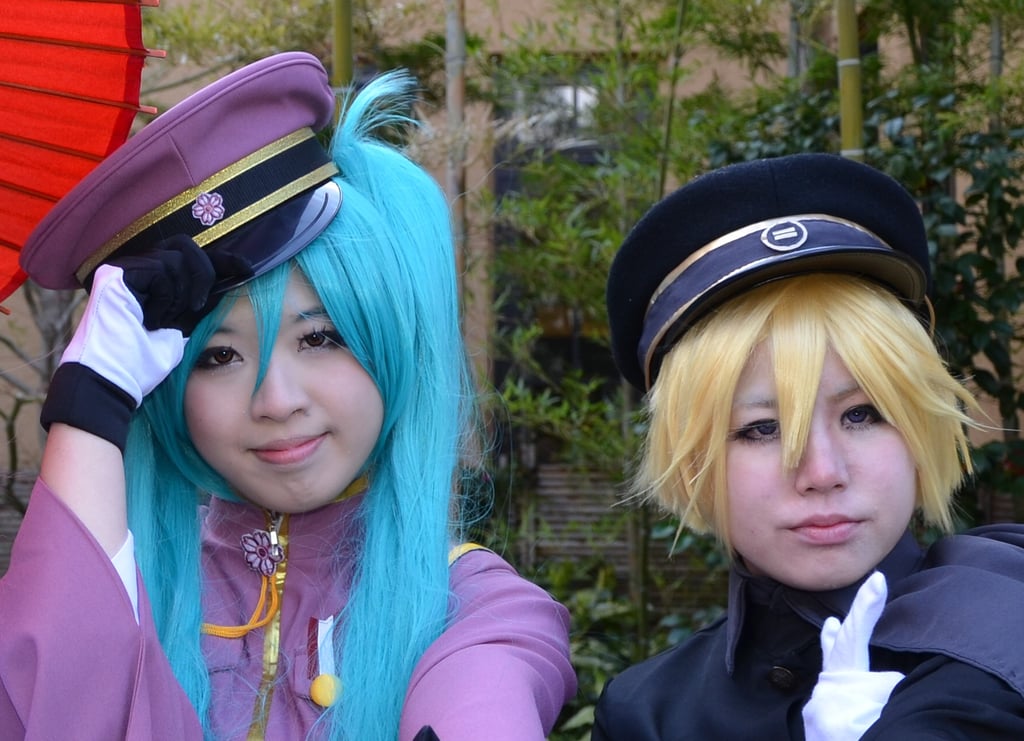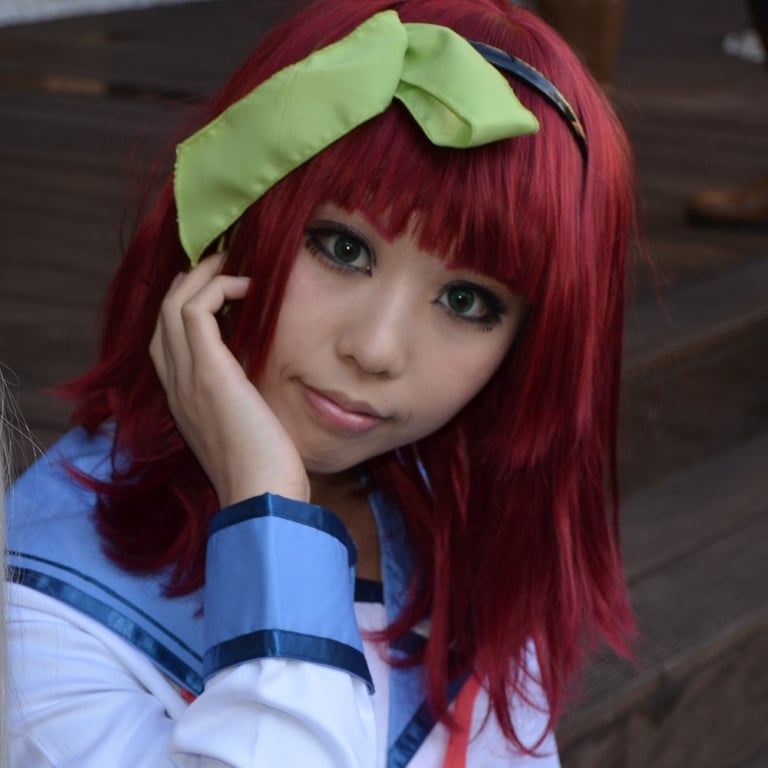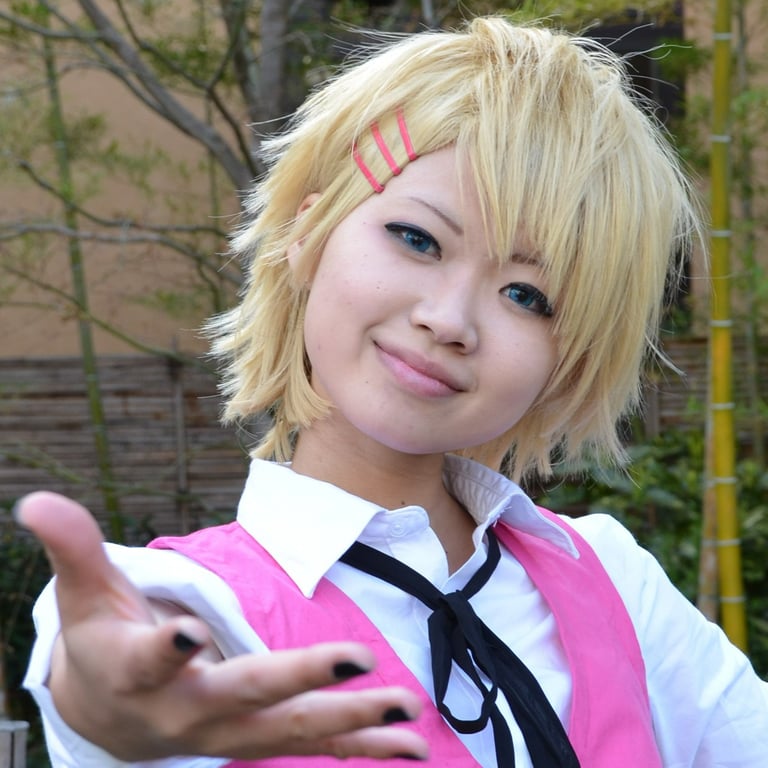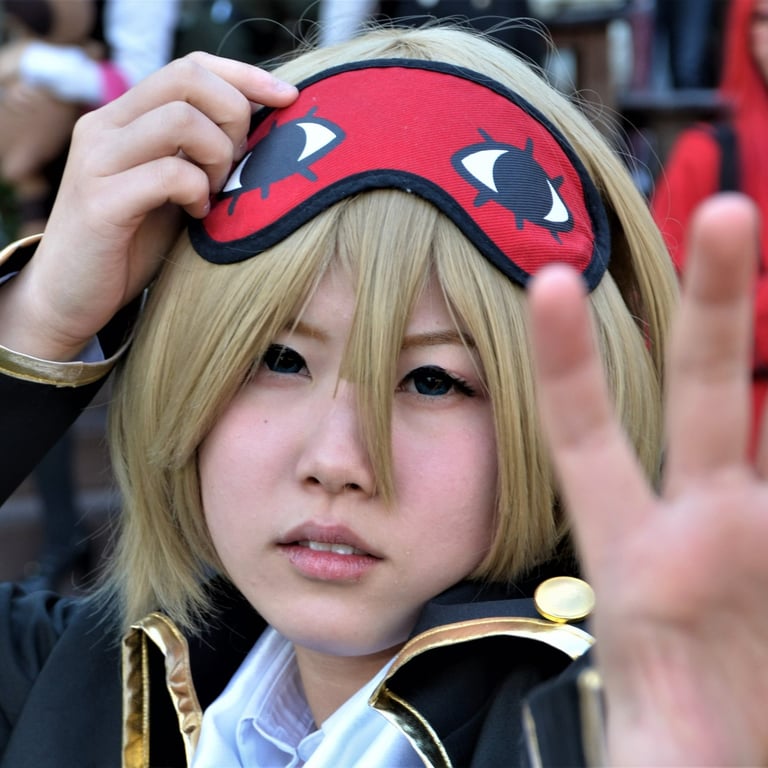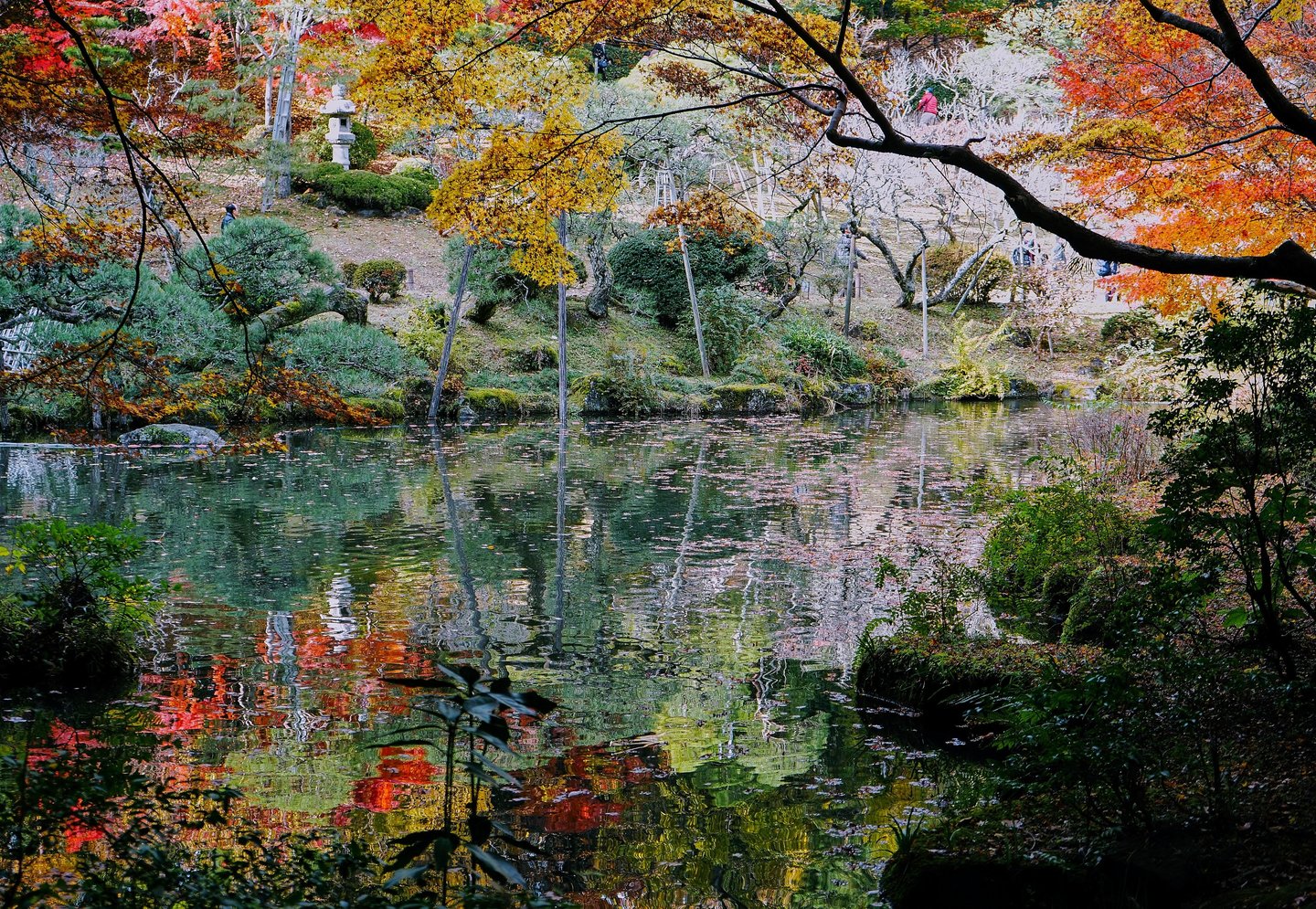so japan
If you do your research on destinations in Japan (East Asia rather than SE Asia) and finally settle upon what seems to be a great itinerary for a memorable trip, you can bet your bottom yen that the rest of Japan knows about those places too. If it is a weekend, expect crowds. If it is a public holiday, expect cheek-by-jowl shuffling from bus to train to exit. But, with careful planning, it is possible to escape the crowds and certainly avoid the crush.
Here are seventy ideas for starters.
the nakasendo trail, gifu
The Samurai Trail
Imagine walking all the way from Kyoto to Tokyo via all sixty-nine post towns, as folks would have done during the Edo Period! There would have been some stories to tell, getting into scrapes and this and that at overnight stops in inns. Not to mention some of the characters you might have met on the trail. My modest effort between Magome-juku and Tsumago-juku in Gifu Prefecture was challenging enough, with new trainers adding a shade of nail-polish to my big toes, possibly called, 'Midnight in Edo'. Great stuff even so - up and down in the shadow of Samurai, (not quite) ready for anything!
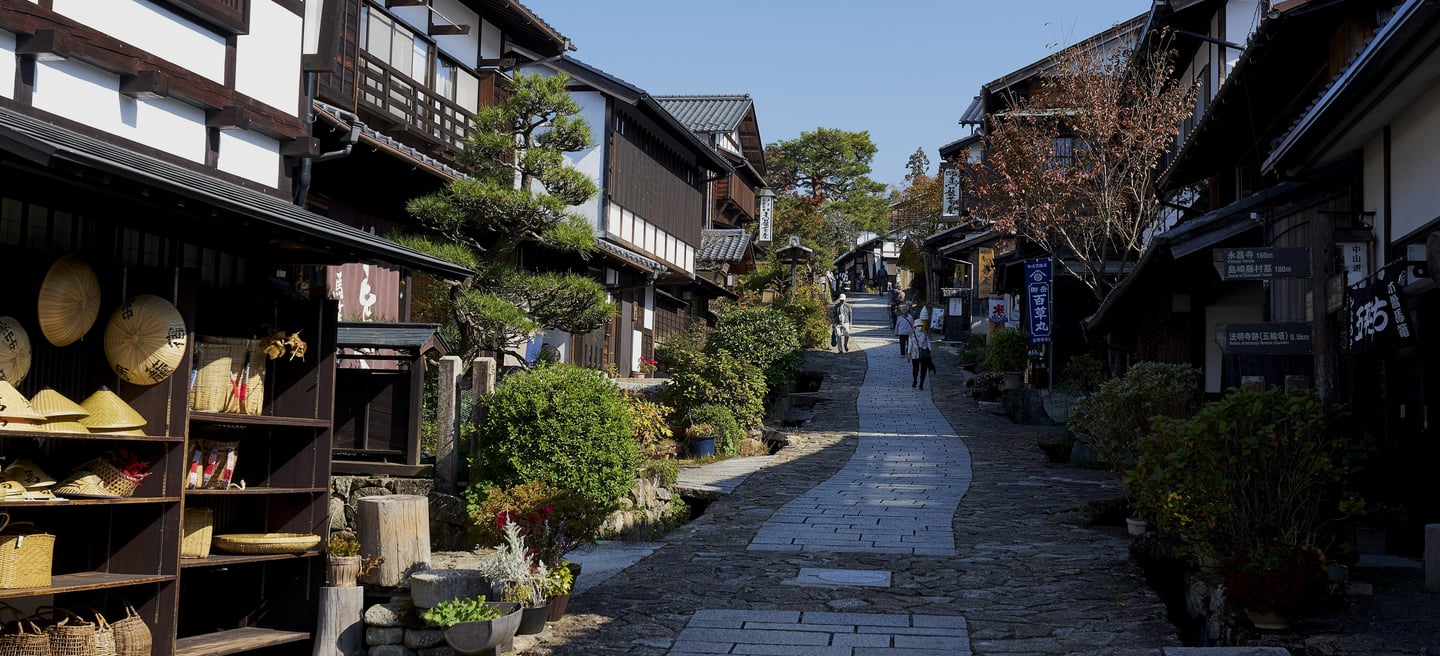

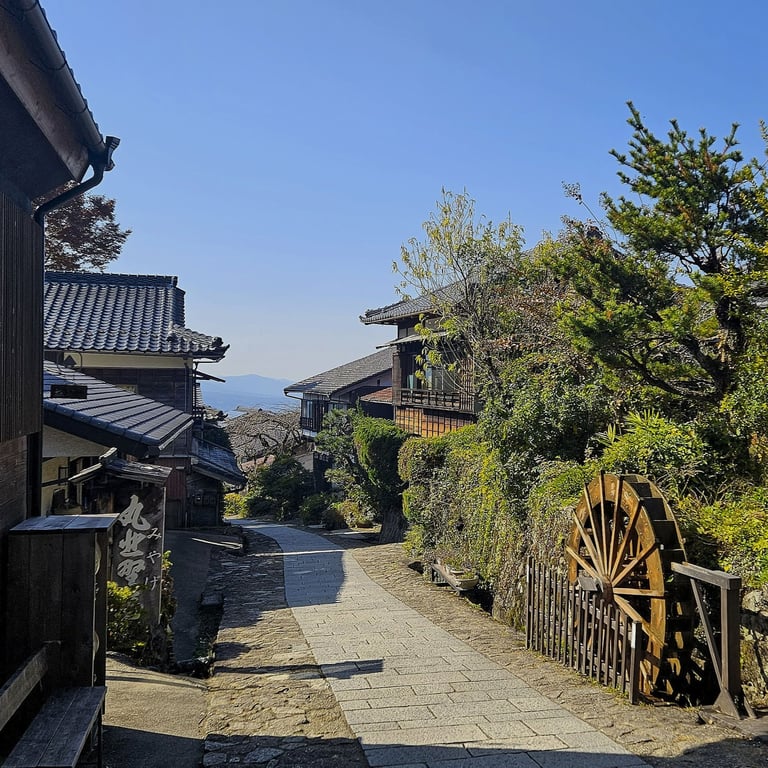
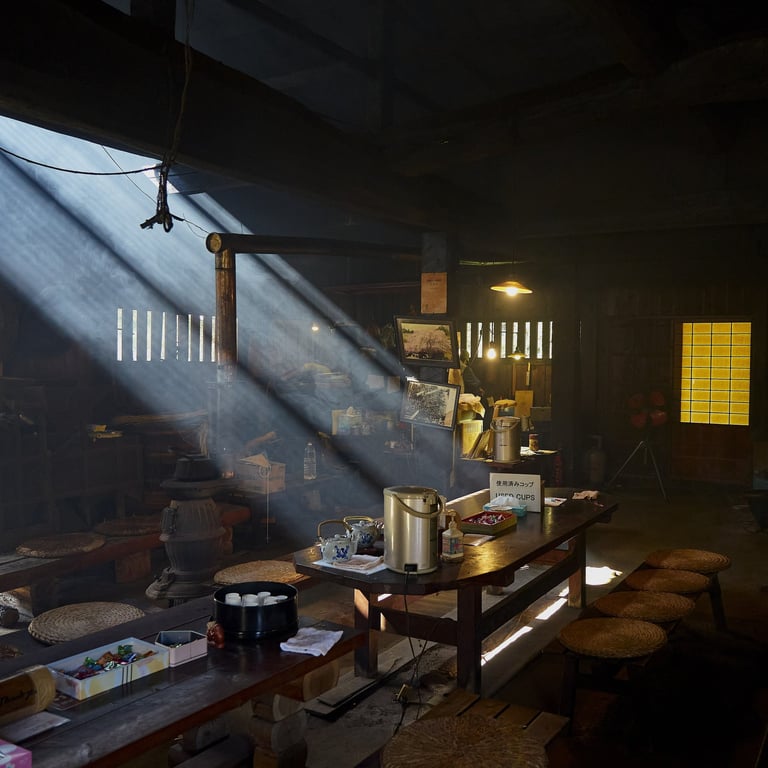
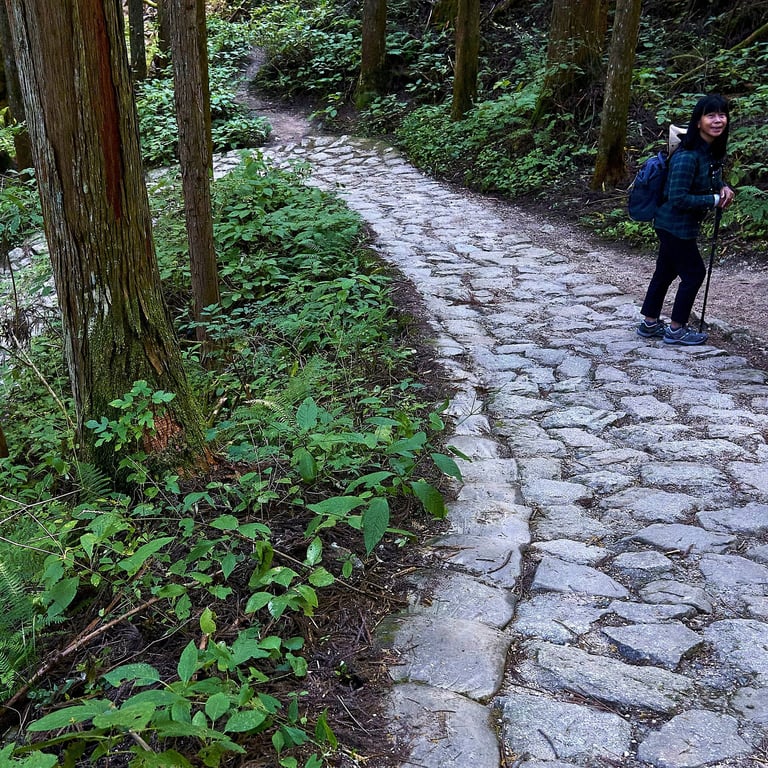
karuizawa, nagano prefecture
Rustling along
Karuizawa is an hour or so by the Shinkansen train from Tokyo. If you are wealthy it is the sort of place that you buy your pied-a-terre, or some huge mansion in sprawling grounds. It is also near to ski country, added to which there is the attraction of the autumn leaves. Wandering along (or rustling along) the back roads in November leading to the main event, the picturesque lakes, the roads are just as photo-worthy. Everyone's front drive looks like it is straight off a film set.
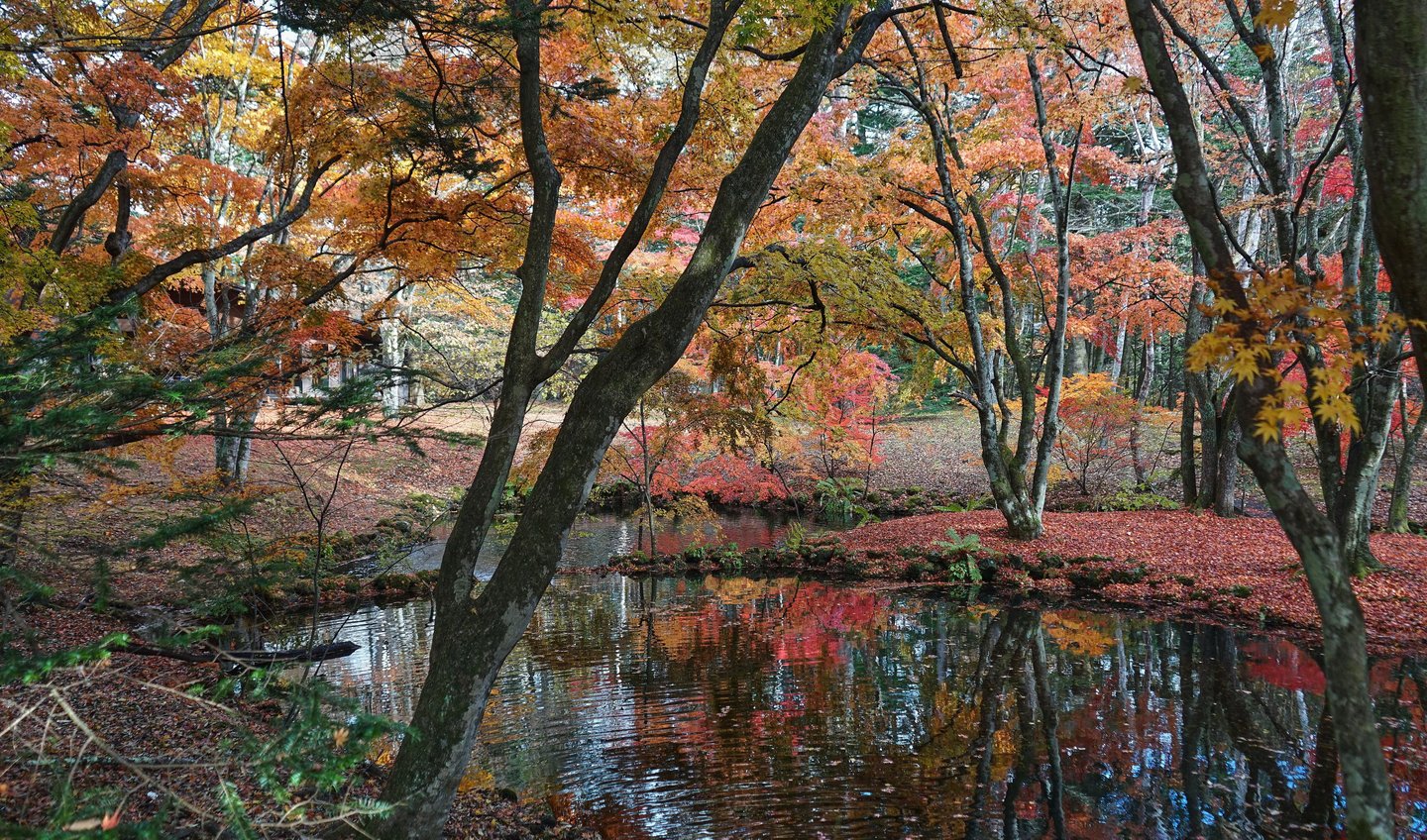

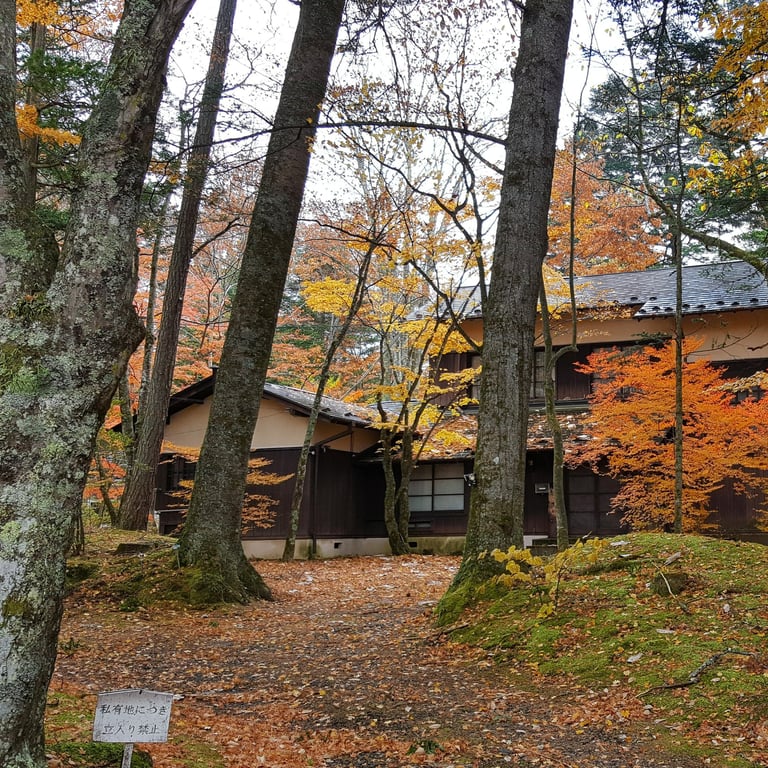
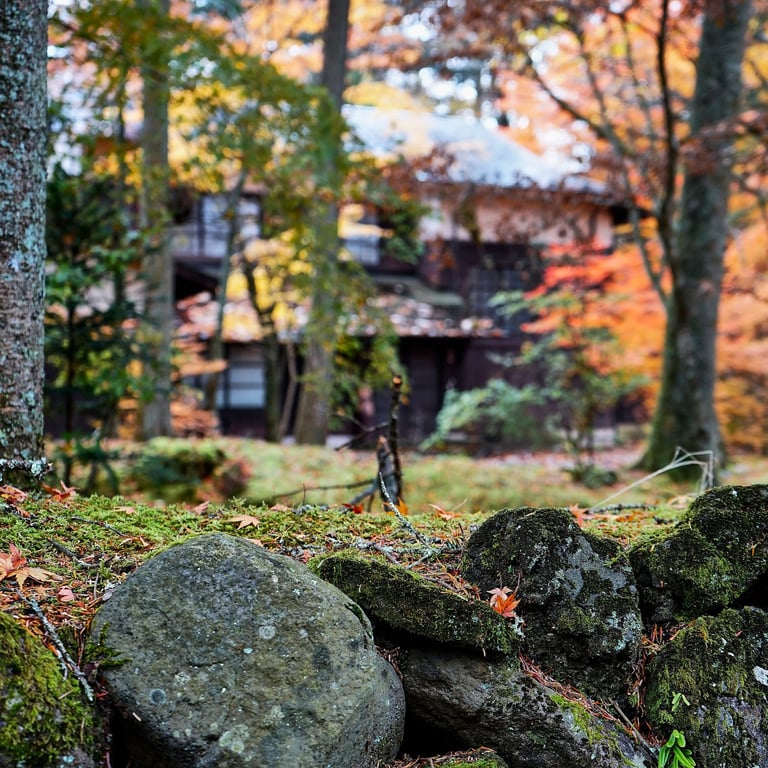
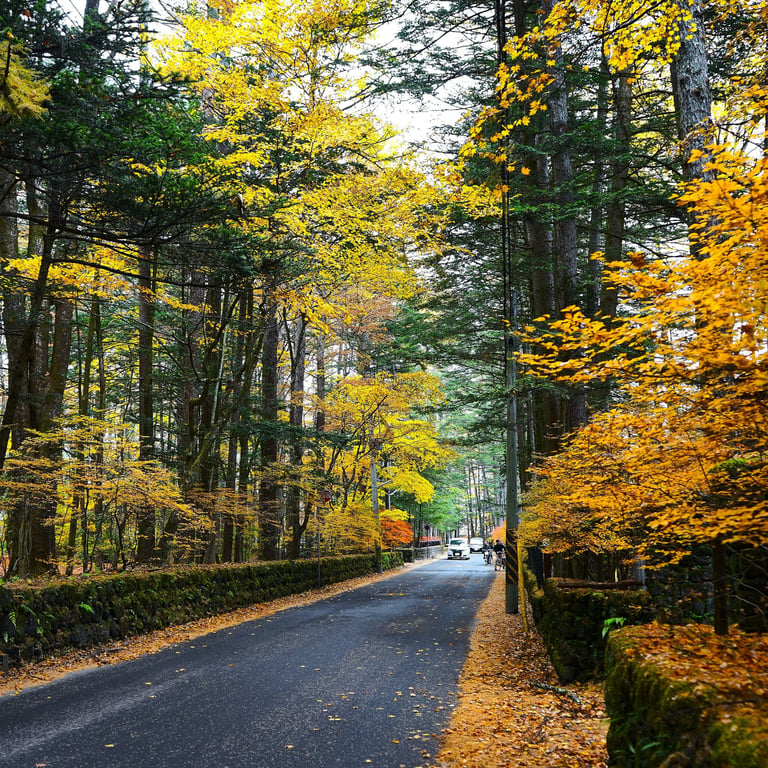
hirosaki castle, aomori prefecture
Sakura wonderland
Hirosaki Castle is an hour or so south of Aomori by train and famed for its Sakura, which appear at the back end of April. To get there you will have to share a busy train carriage and packed bus with other folks who have come just for this. And the this is truly spectacular as you shuffle round the park to gawp at the 360 degree blossom spectacular. For once the hyperbole is justified. After you have paid homage to Hanami with your odd-food-thing on a stick, it is time to face the queues on your way back; a small price to pay for the experience. As for the castle history, it was built between 1603-1611 but destroyed by fire in 1627 and had to wait for the re-build until 1810. Although I did say at the top, 'How to avoid the crowds', I'd make an exception for this one, you won't be disappointed.
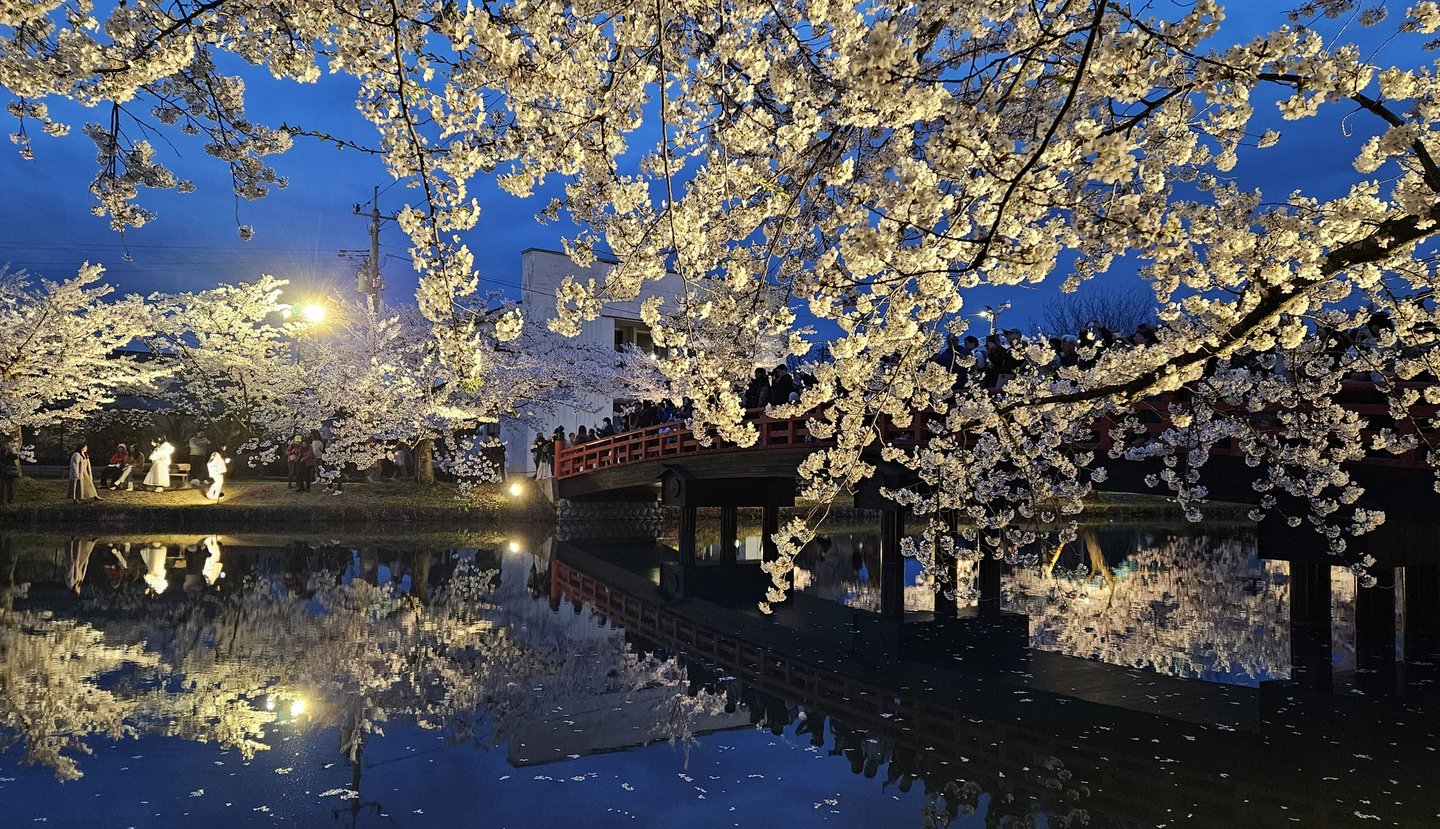

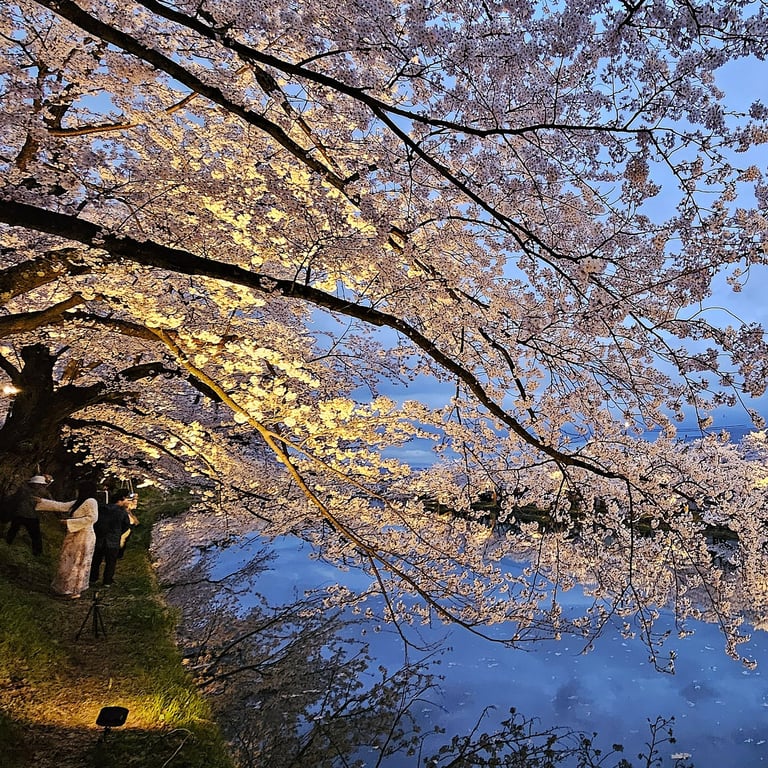
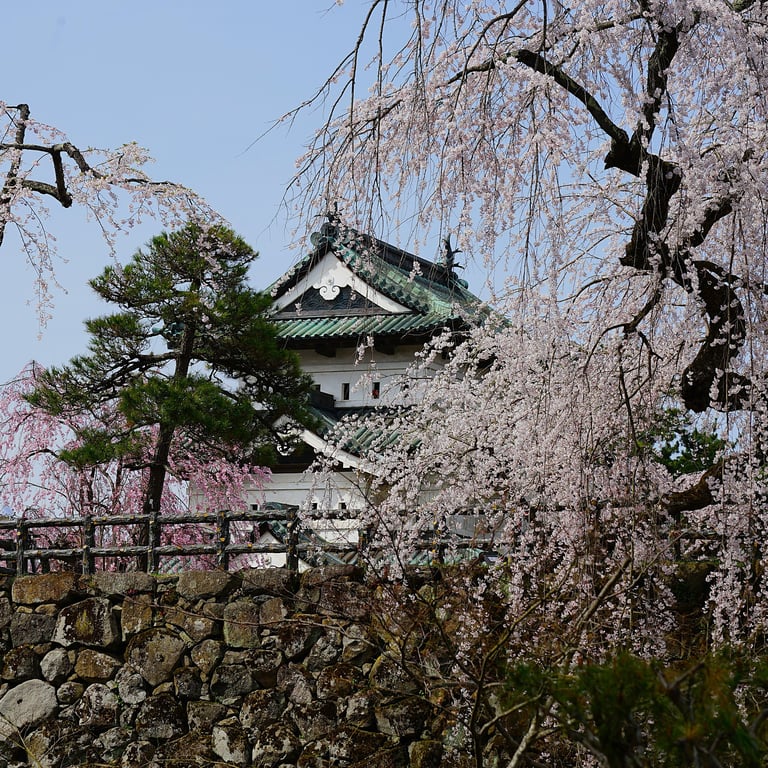
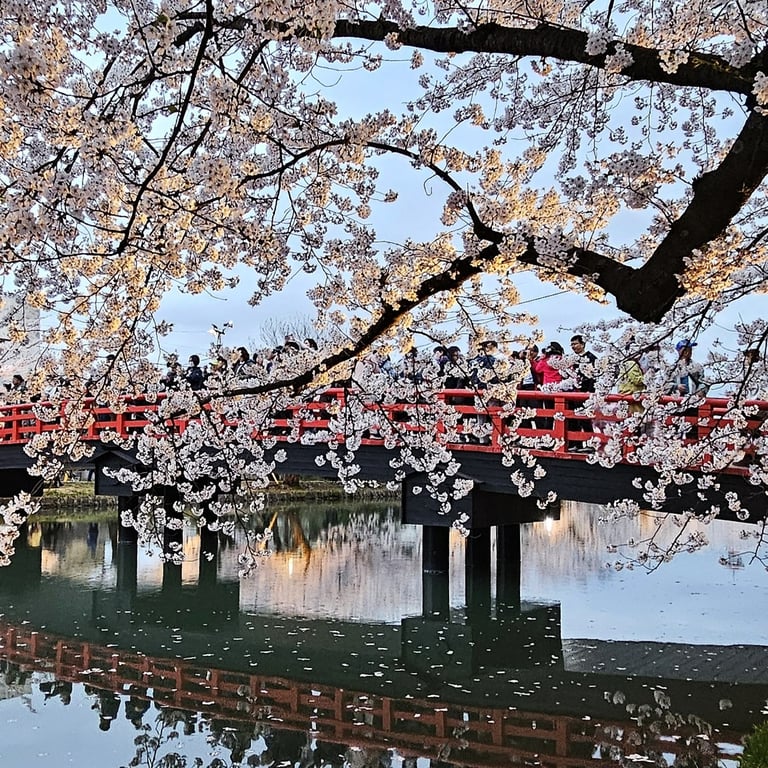
kamikochi, nagano prefecture
Pristine plus!
Kamikochi is a remote valley in the Hida Mountain Range. Although it was logged right up until the 19th century it is now designated a Japanese Cultural Asset and has become a centre for recreational hiking. Private cars are not allowed to enter the area, with access granted only to buses. The journey up there from Matsumoto during November is spellbinding as the bus makes its way through mile upon mile of winding valleys forested in all the shades of autumn. There are many trails to explore, much more than one day’s worth; so, camping is popular for those wishing to take in all the hiking options. Expect crowds of course, particularly around the Kappa Bridge viewpoint, but it's not too bad once away from the rest areas or eateries. On the trails it was quite easy to frame pictures without fellow walkers cluttering things up.
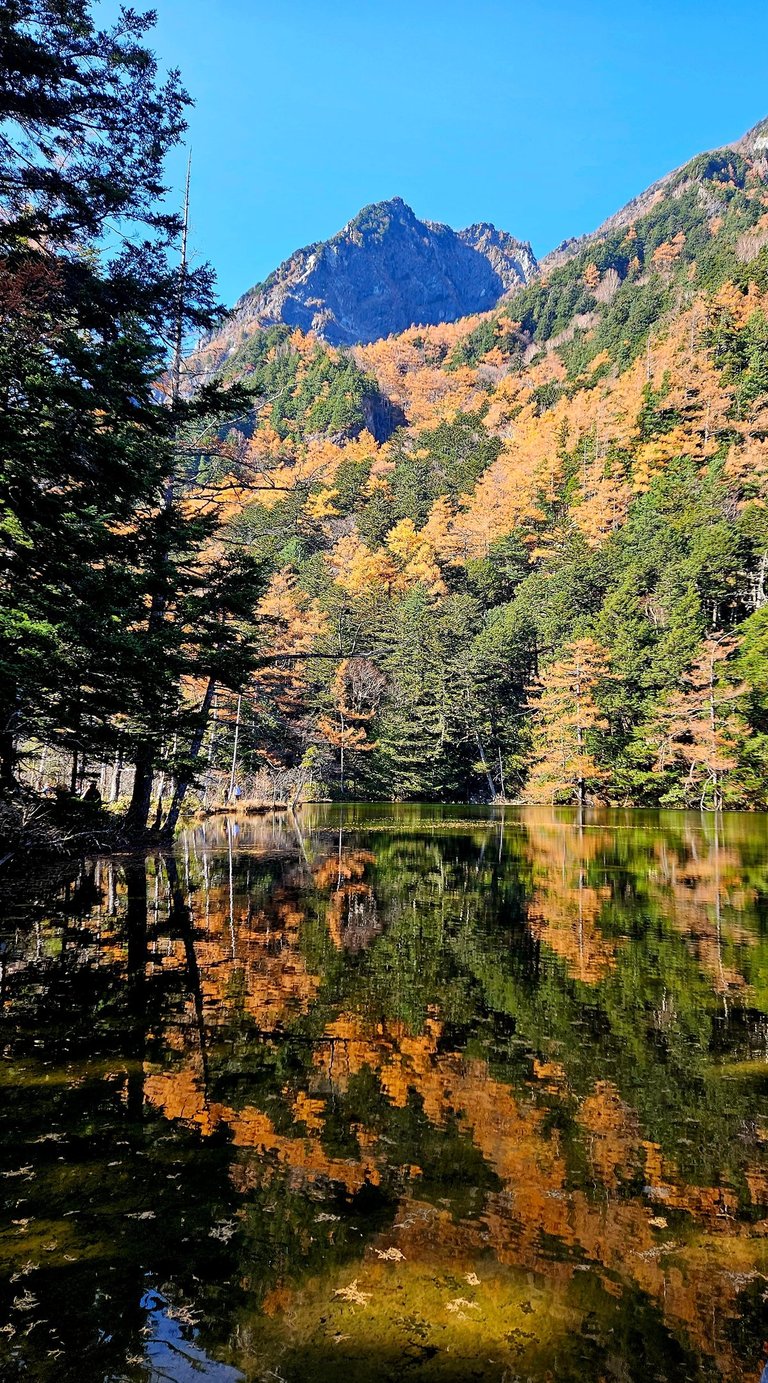

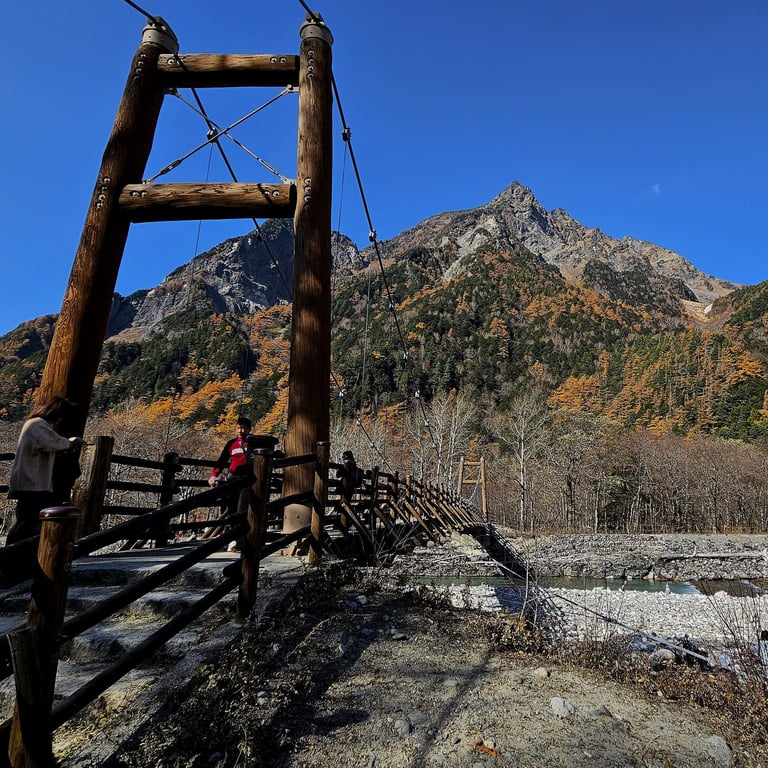
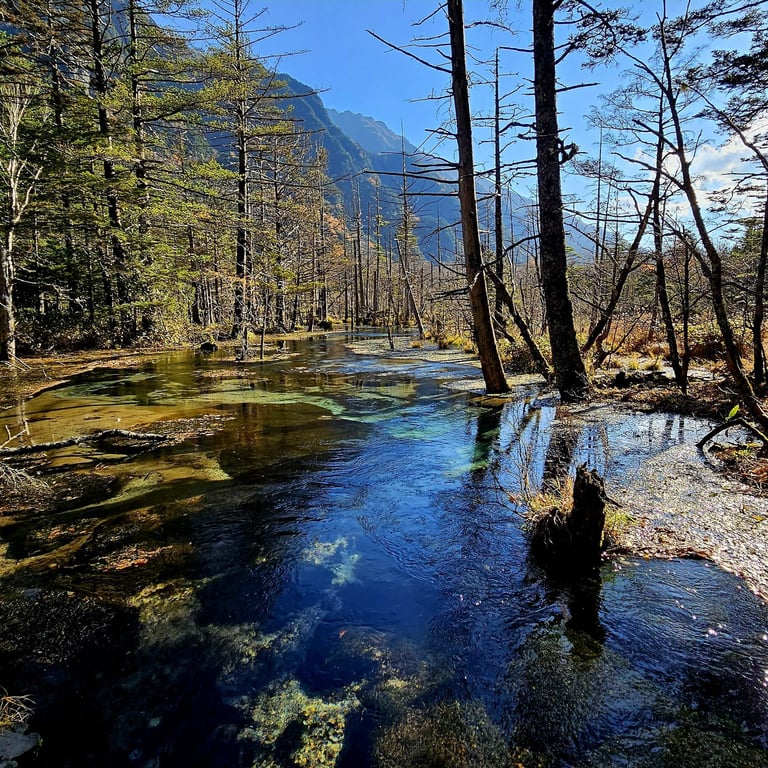
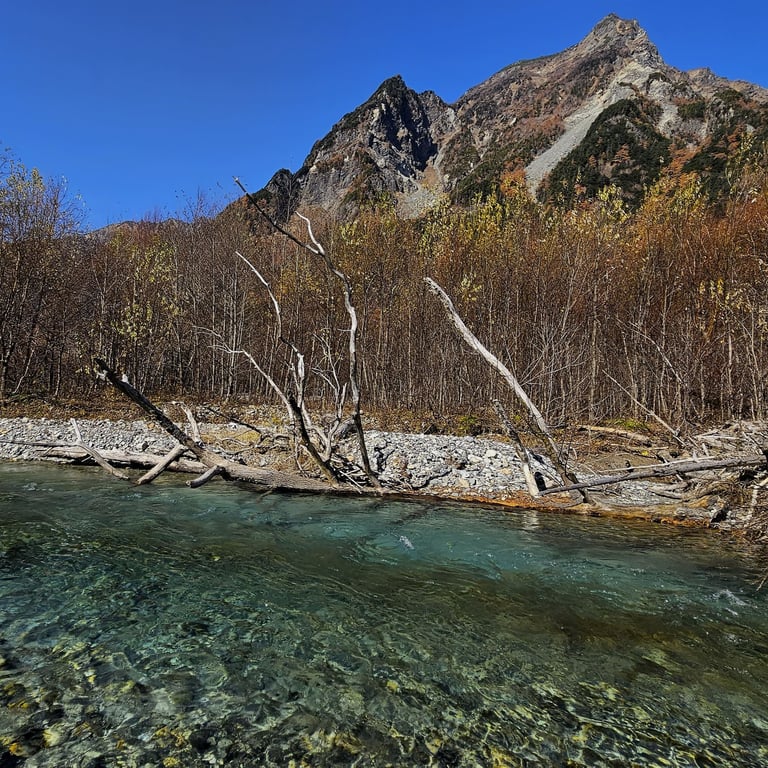
takayama inari shrine, aomori
Torii Torii Torii
The 1,000 Torii gates which weave their way up the carefully landscaped hillside offer divine blessings to the rather specialised Gods of Good Harvest, Maritime Safety and Prosperous Business. Worth a visit then! But how to get to this remote shrine from Aomori is quite the challenge. It will encompass 1h 15m on a bus to Goshogawara, another bus for 45m to Jinjairigushi and then a taxi ride. Oh, and several hours gaps between buses if you get your timings wrong. Still, like a smear of lipstick on the sodden terrain, the shrine truly impressed in the damp and the drizzle. Standing there one's harvest, maritime and business woes simply disappeared. And, seemingly they took those bus woes with them too.
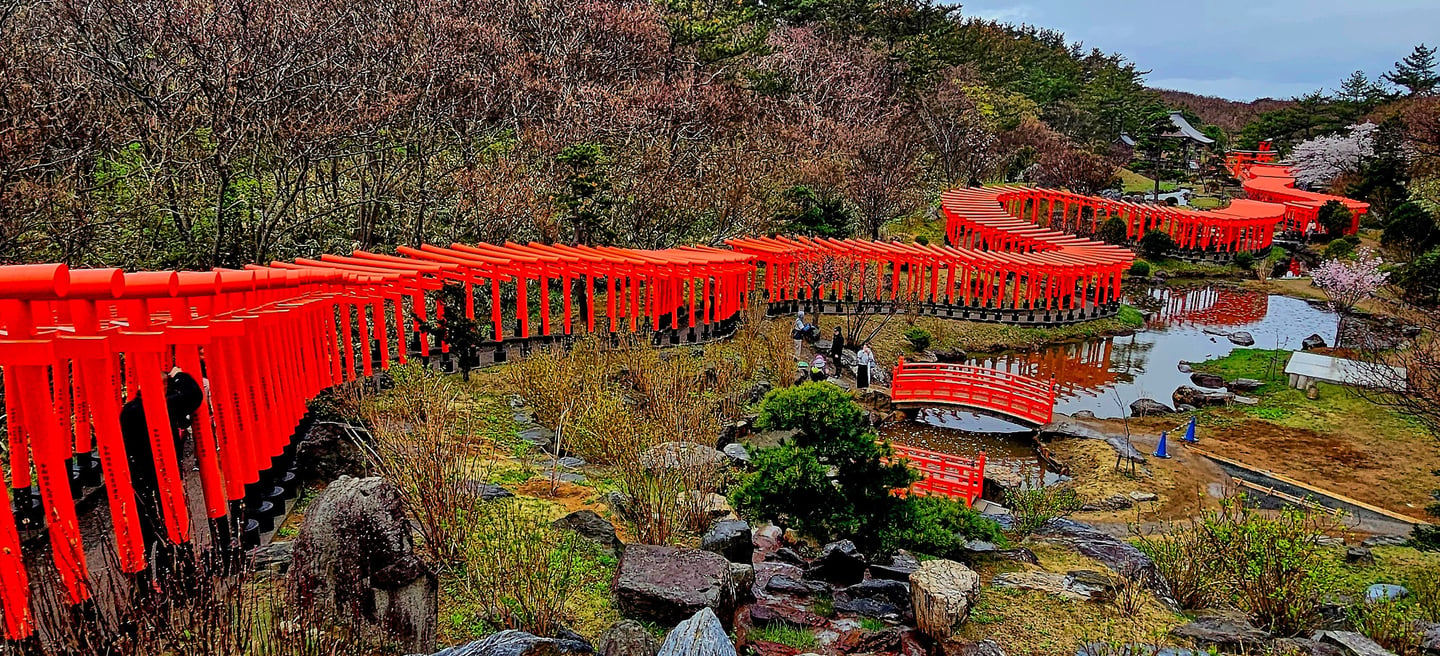

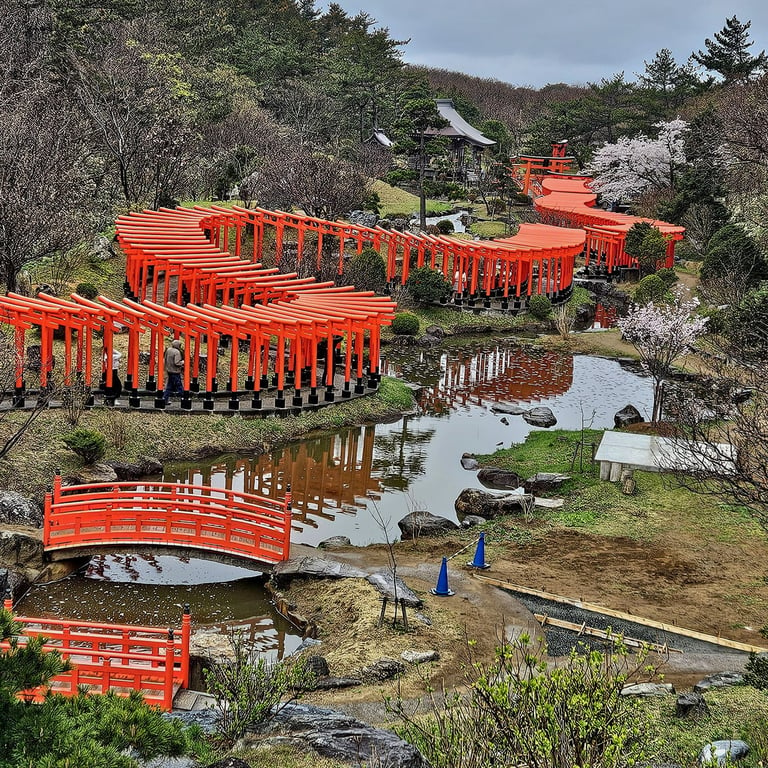
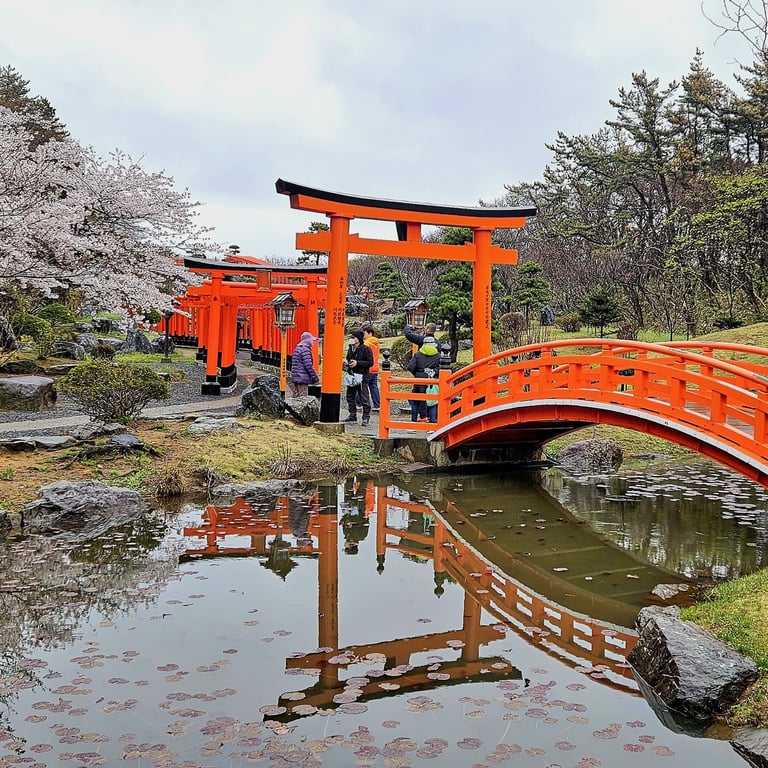
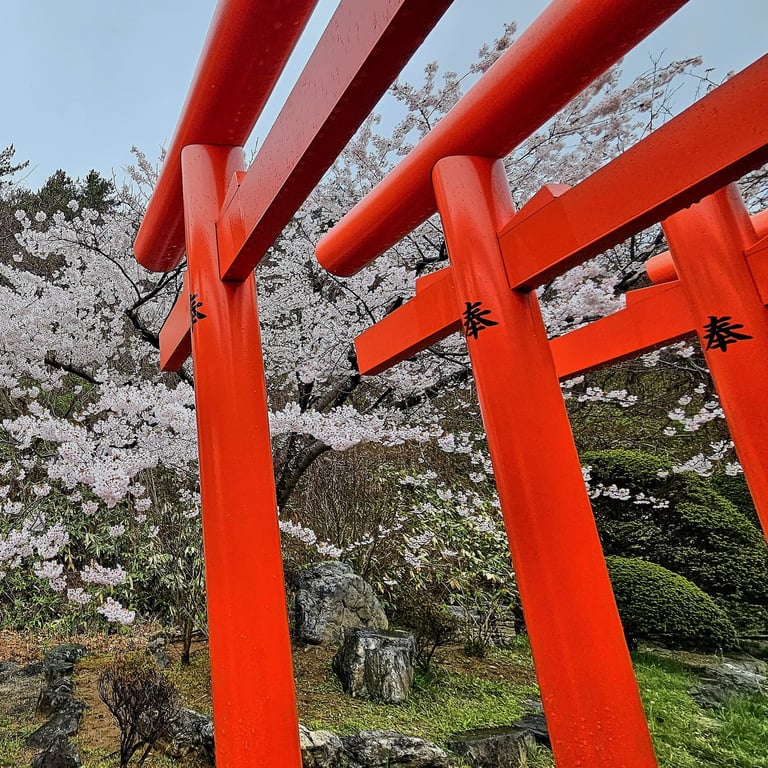
ainokura, gokayama
Gassho-Zukuri style
For pretty villages the world over, once World Heritage status has been conferred upon them the floodgates are open. Folks will head over to bask in the ambience from dawn to dusk. Busloads probably! For Ainokura in the Gokayama region of Toyama Prefecture, this must be some burden as the village comprises just twenty houses. There is a village hall, public toilet, a cemetery, a shrine, a post office and plenty of evidence that this is just a normal community - apart from the signs that say, ‘Visitors are allowed only between 08.00-17.00.’ A bit of peace and quiet is not a lot to ask for!
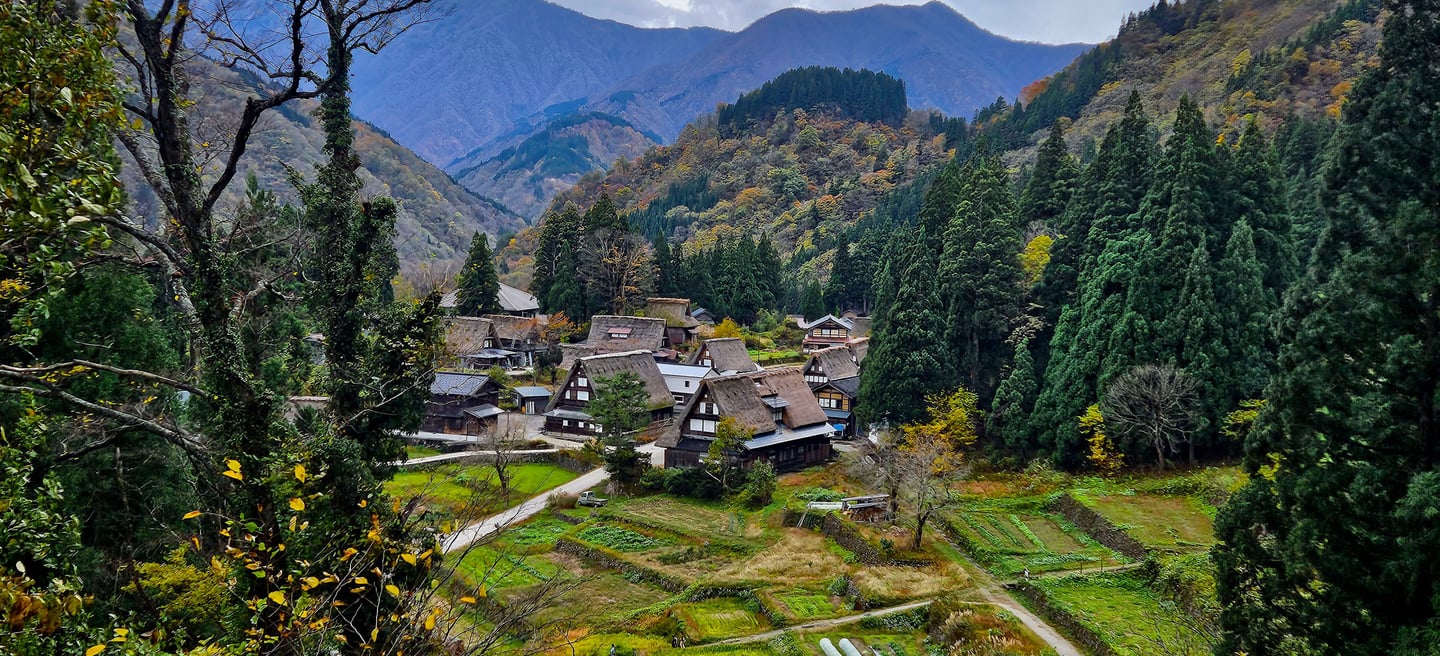

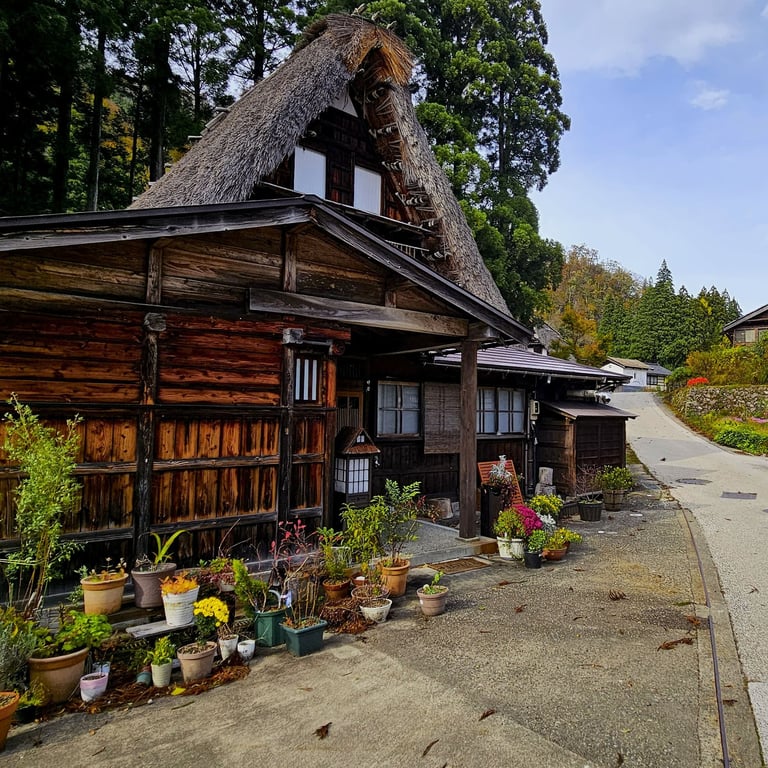
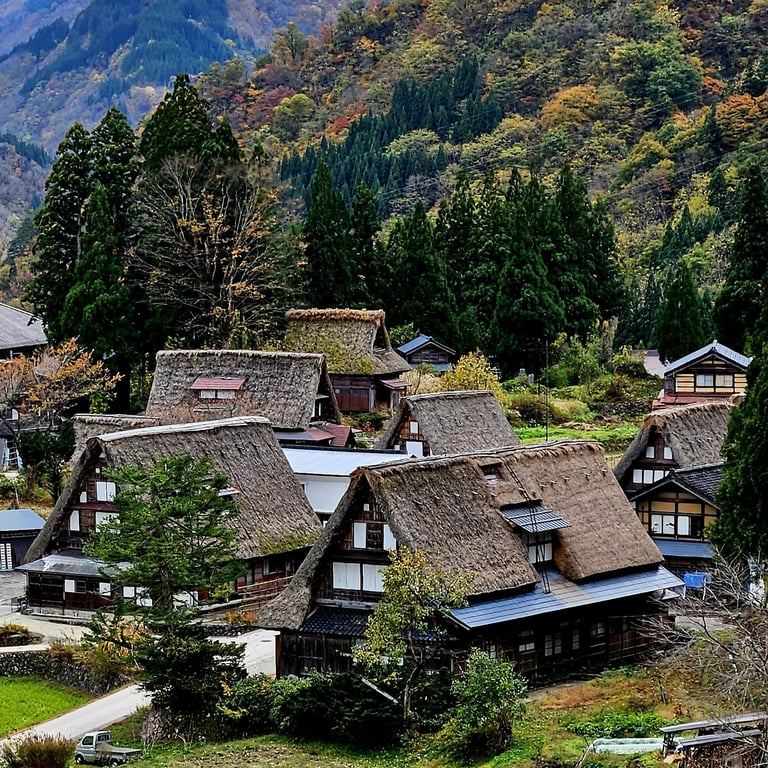
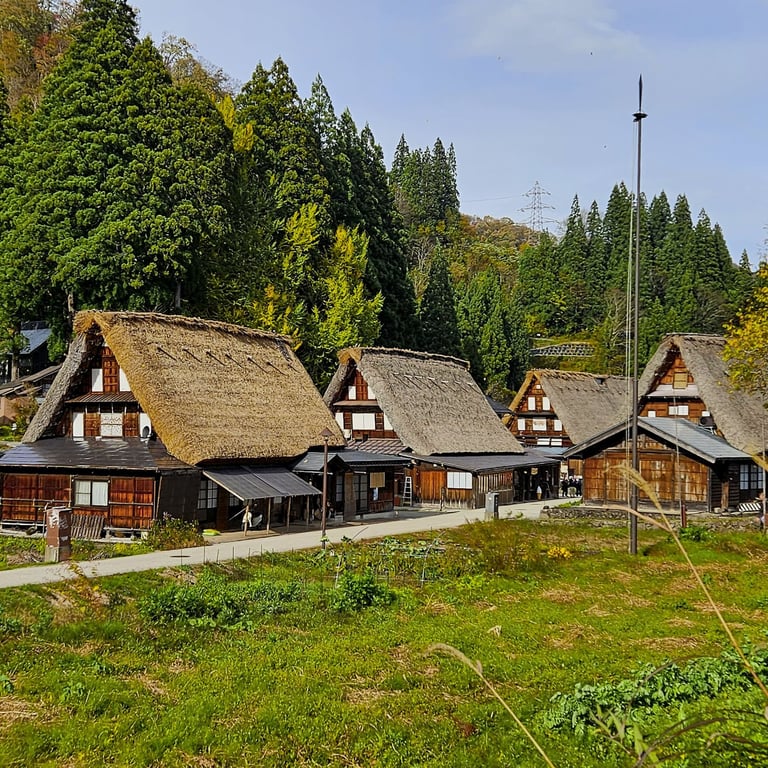
azalea festival, tokyo
100 Species
The azalea garden at the Nezu Shrine in Tokyo is over three hundred years old. When the annual festival takes place, some 100-plus species of azalea are in full bloom. I would have raised an eyebrow if the figure had been 10 species, let alone 100. Expect plenty of food options as you wander round, as well as enthusiastic, thunderous drumming from the young bands. Well, it is a festival after all!
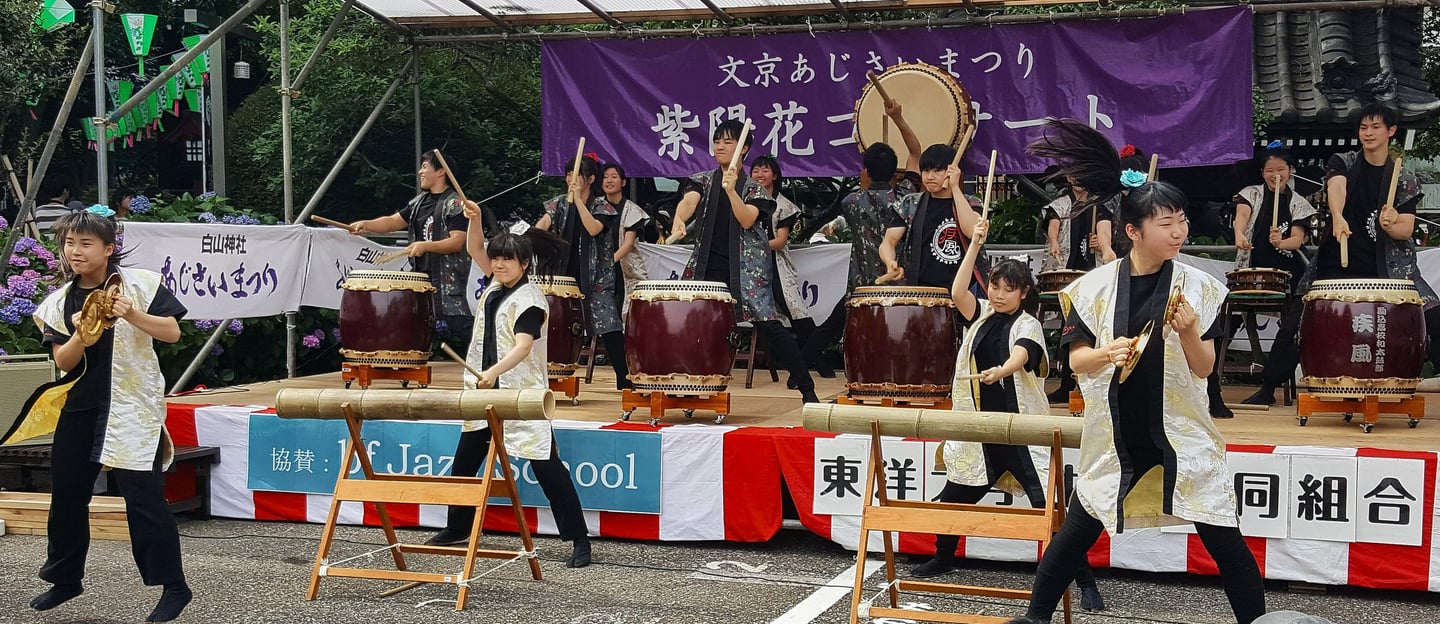

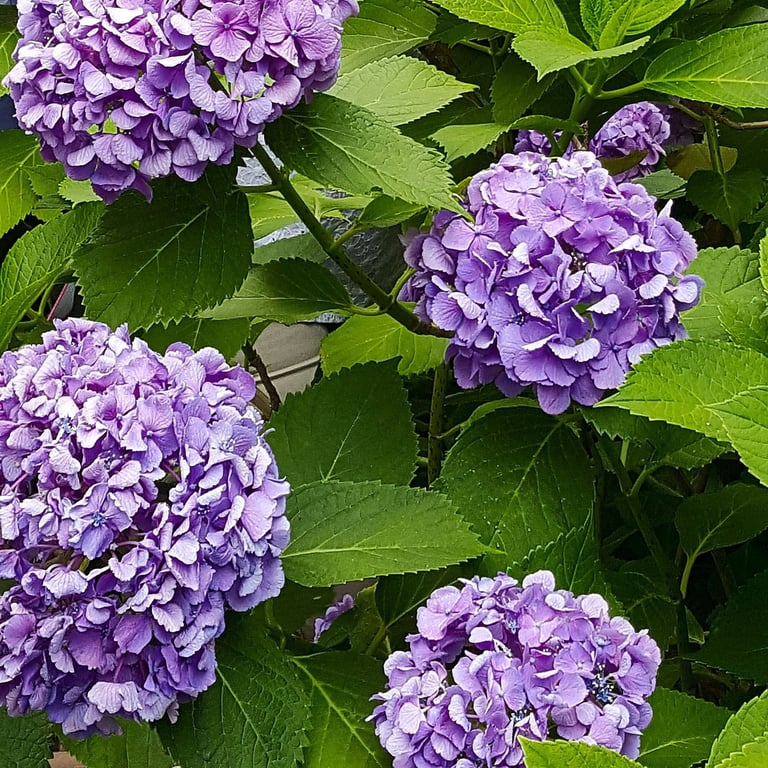
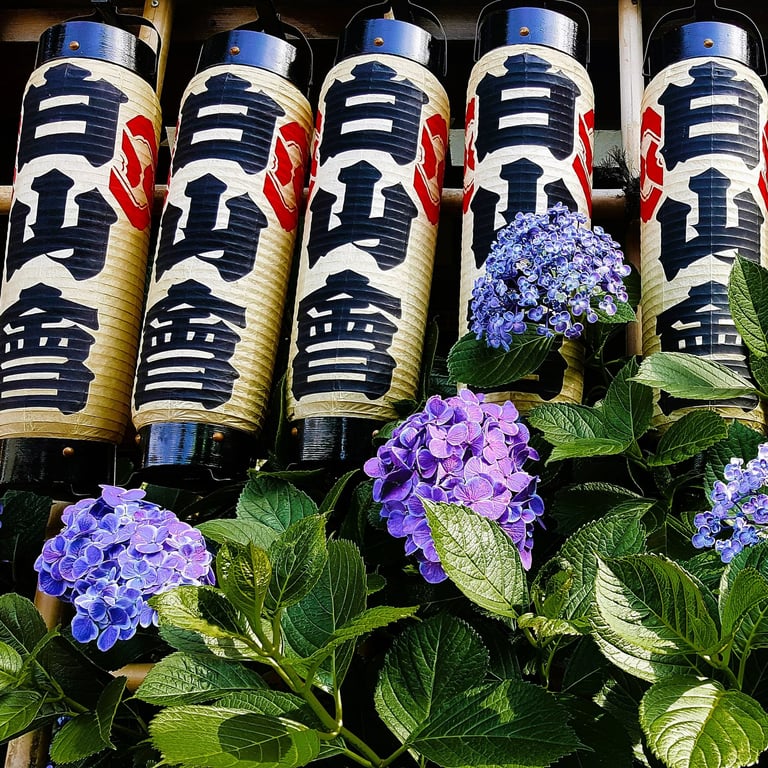
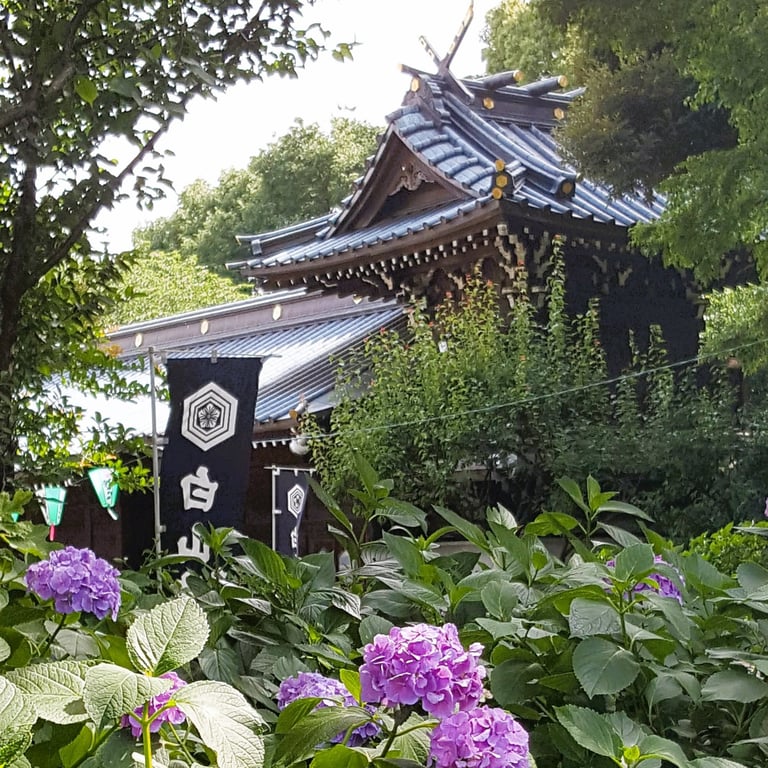
matsumoto Castle, Nagano
Picture perfect
On this particular day (in November 2023), the atmosphere near to the castle was serene, as it was pretty much on the streets of Matsumoto in general. Was it due to the after-effects of covid, with so many businesses having closed down, or is the ciry normally more like a quiet country town? I’m intrigued! Every visitor conversation echoed across the still moat shown below, most of it in the Thai language, as it happens. Matsumoto Castle, so regal in its picture-perfect setting, is known as the 'Crow Castle' on account of its black exterior.
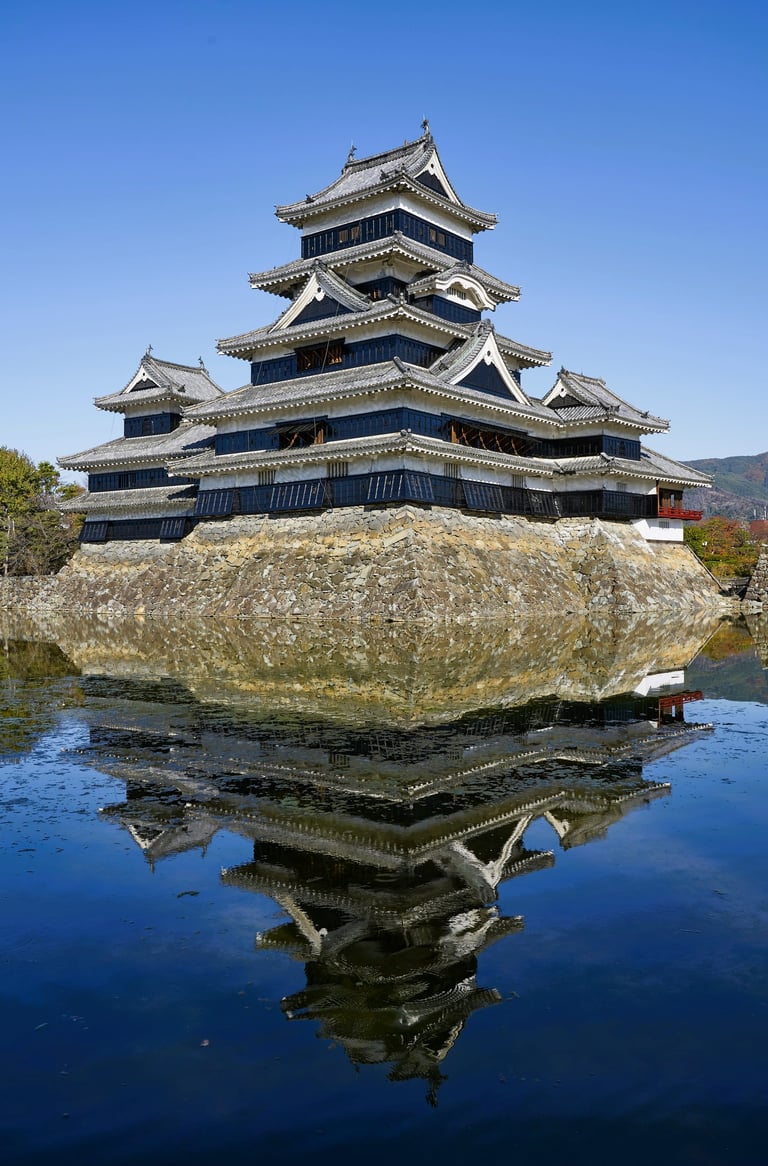

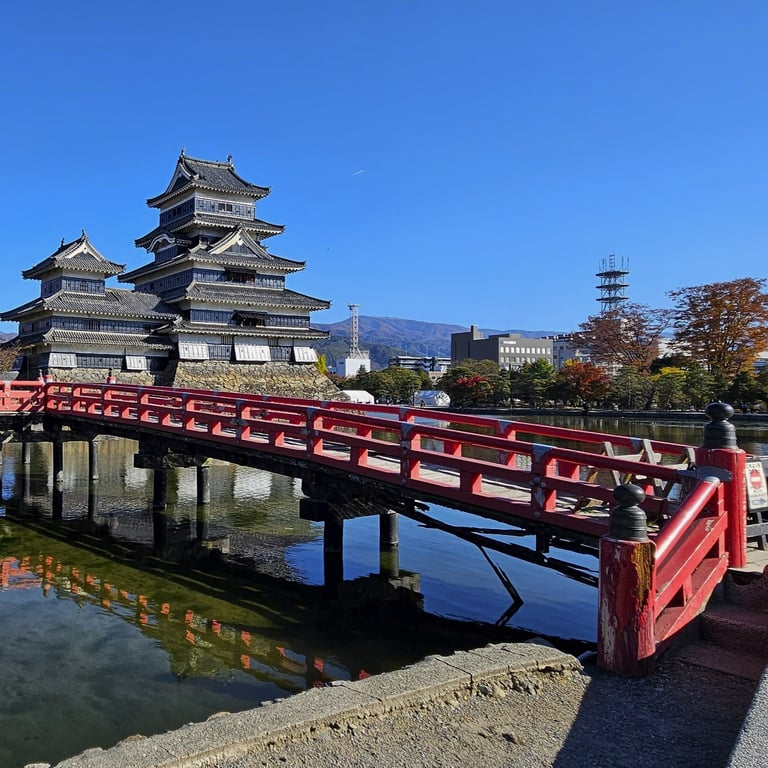
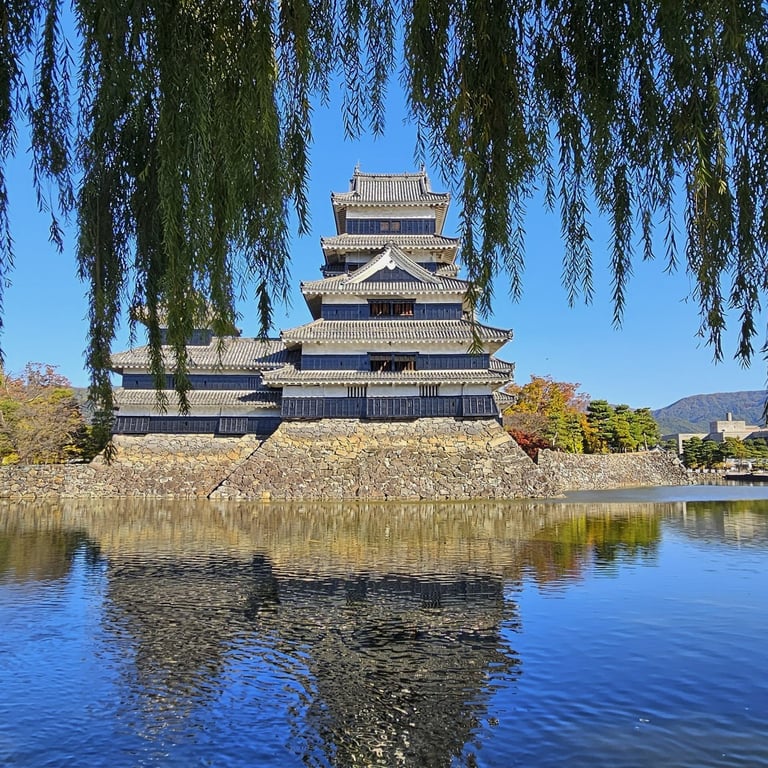
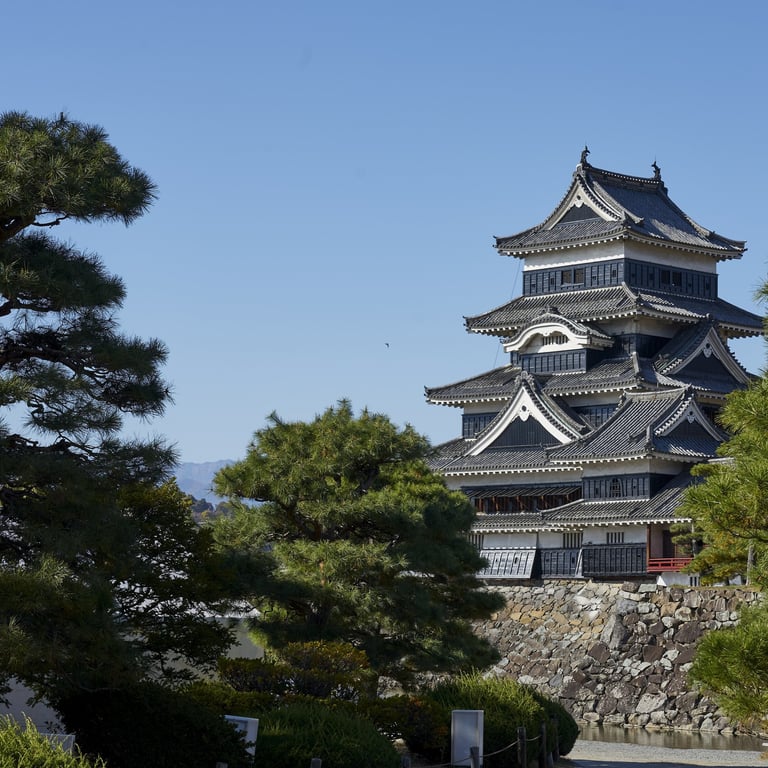
Sanmachi suji, takayama, Gifu
Stepping back in time
The Sanmachi Suji District in Takayama is comprised of three adjoining streets featuring old wooden merchant and artisan houses. The tightly packed buildings, some of which are over 400 years old, conjure up an image of Edo times gone by. The crowds ambling up and down can browse the many gift shops, restaurants and sake breweries. Looking inside the cramped doorways one imagines that there are strict fire regulations, with cooking by gas a complete no-no.
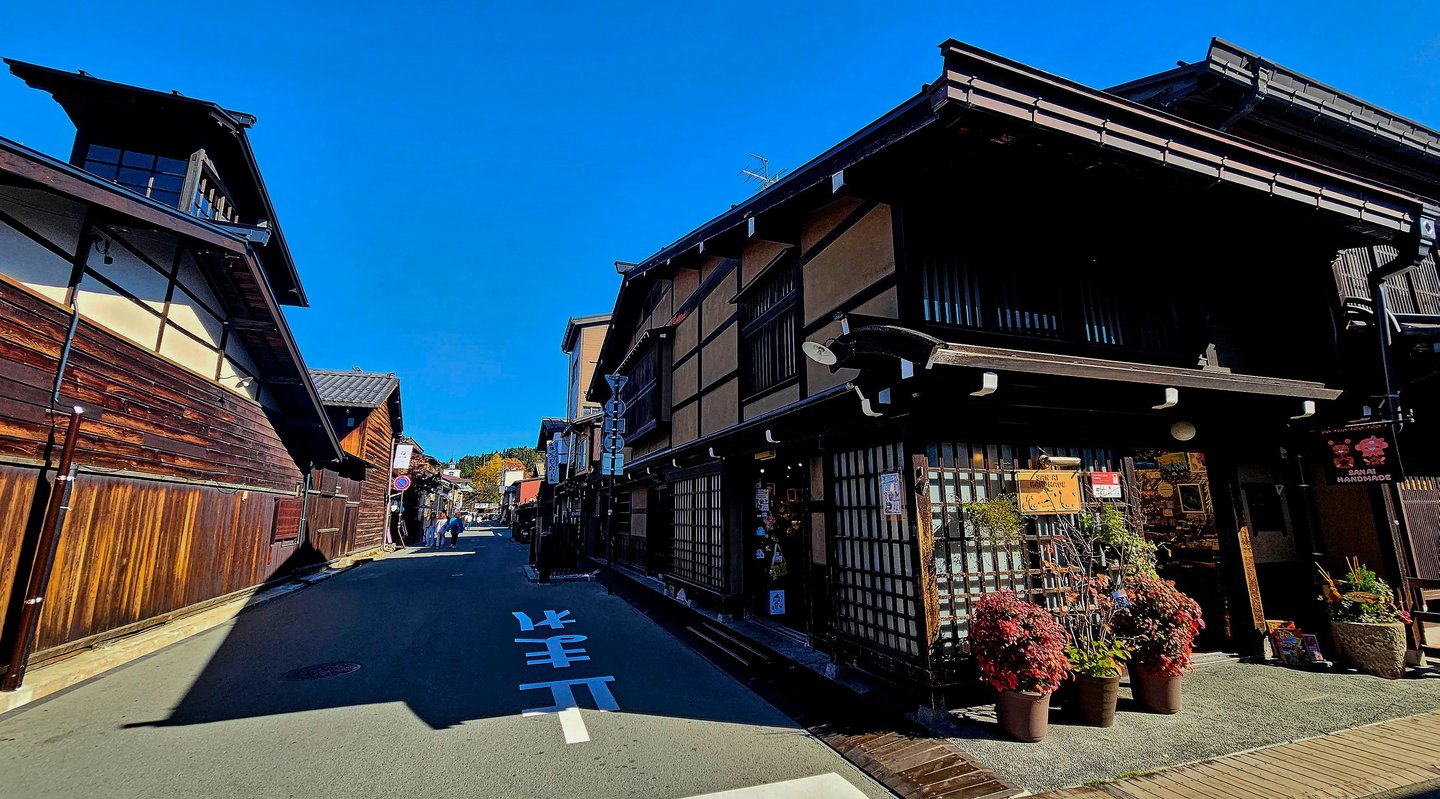

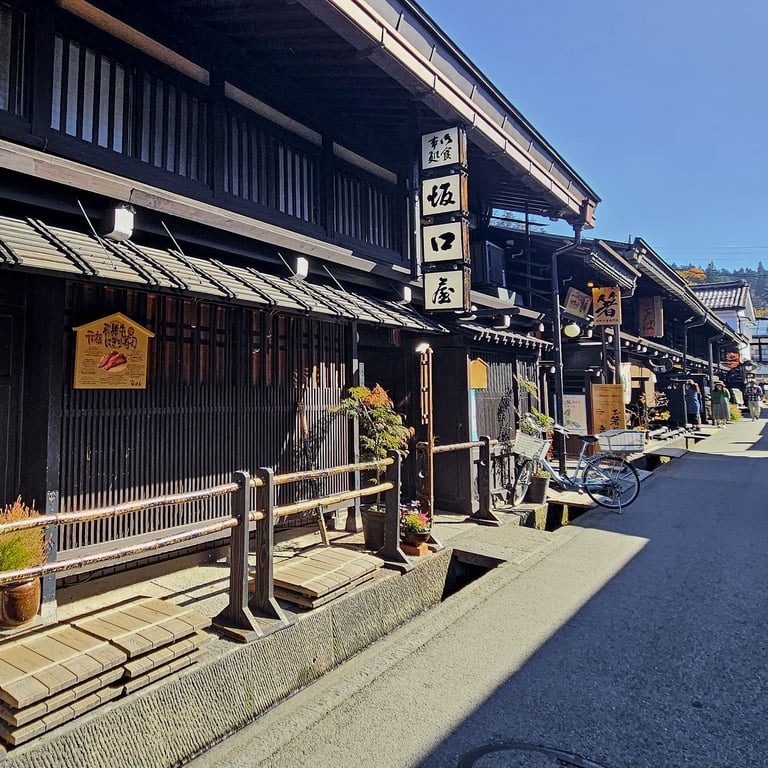
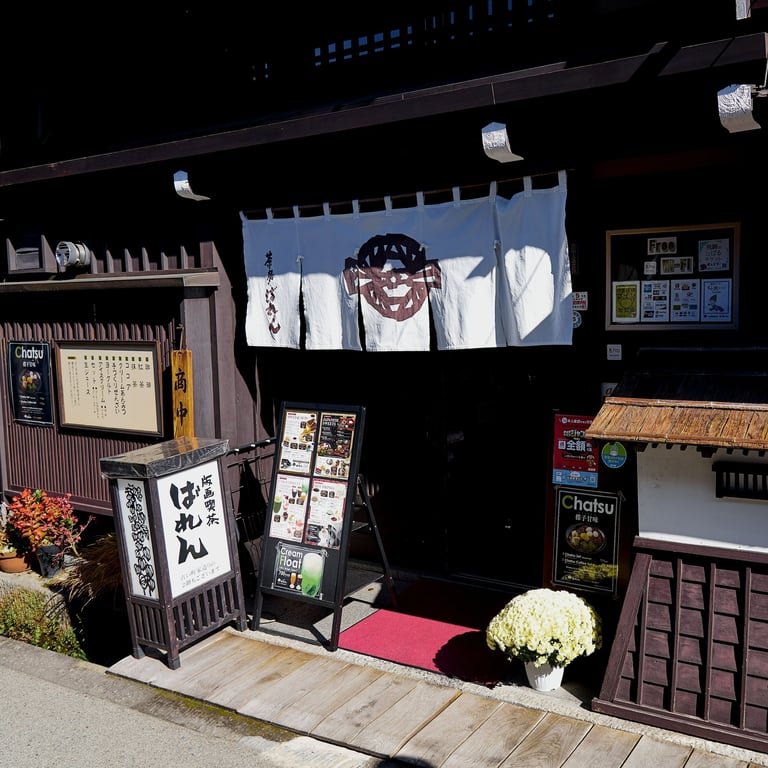
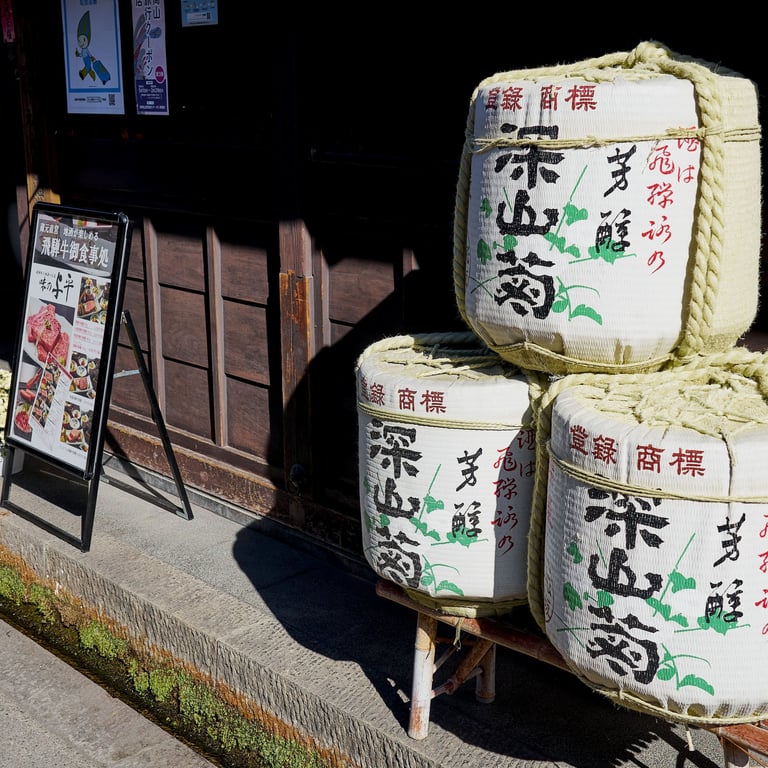
morioka castle, hanami
Sakura delight
Morioka Castle in Iwate Prefecture dates from the early 1600s when it was the seat of power of the Nanbu Clan who ruled over much of Tohoku. The grounds and surrounding Iwate Park were first opened to the public in 1906 and have since become a popular location for enjoying the spring cherry blossoms. ‘Hanami’ is the process of admiring the Sakura full bloom when families gather to picnic under the trees. At the top of the old castle ramparts in late April you can be sure to get the full effect – make sure you take a mat to sit on (and a bottle of wine by the look of it).
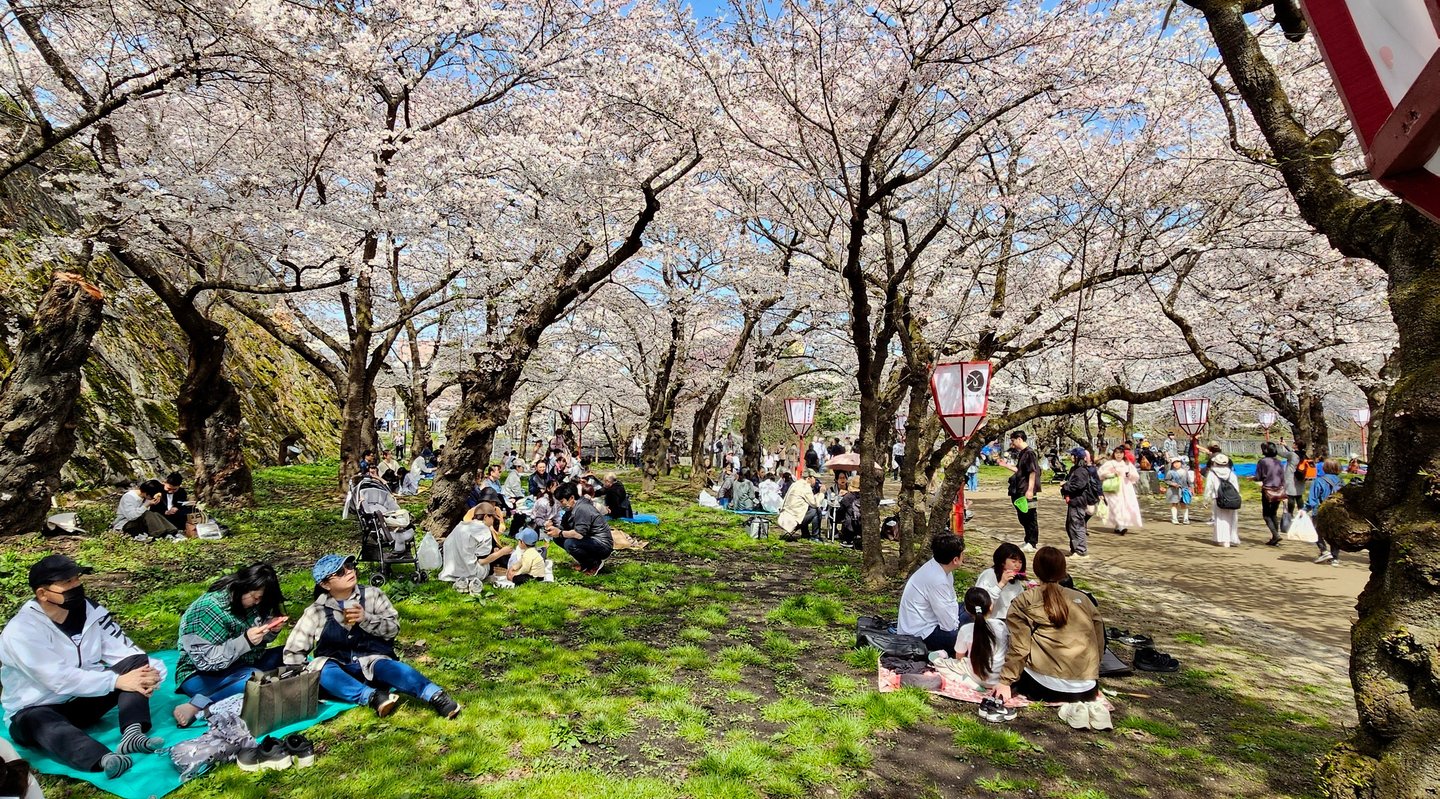

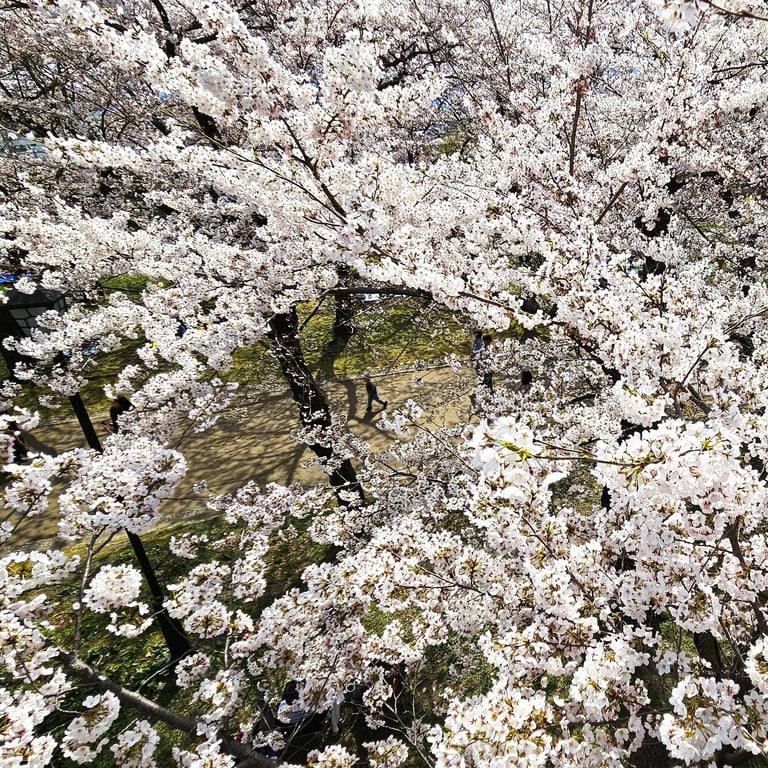
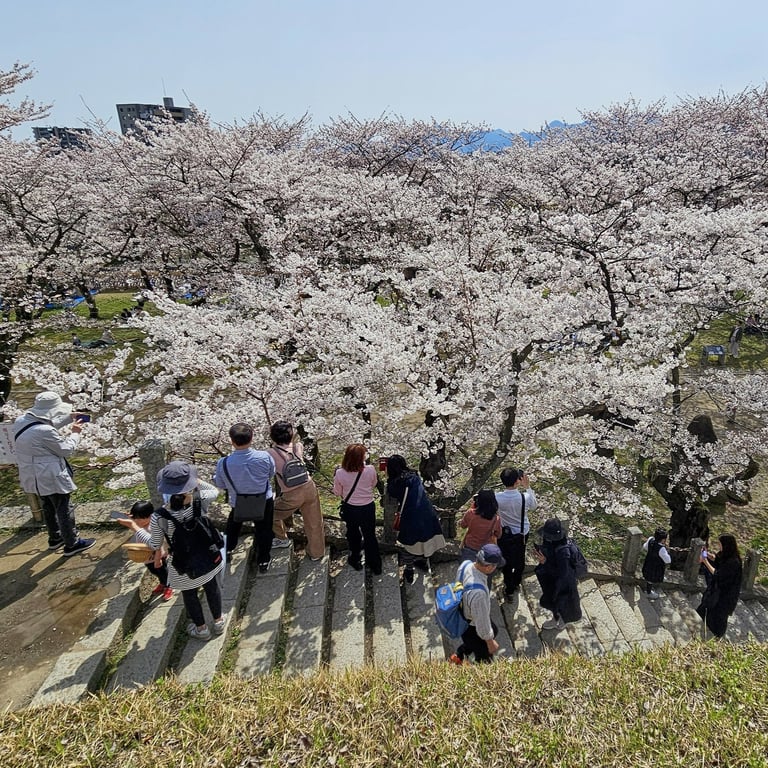
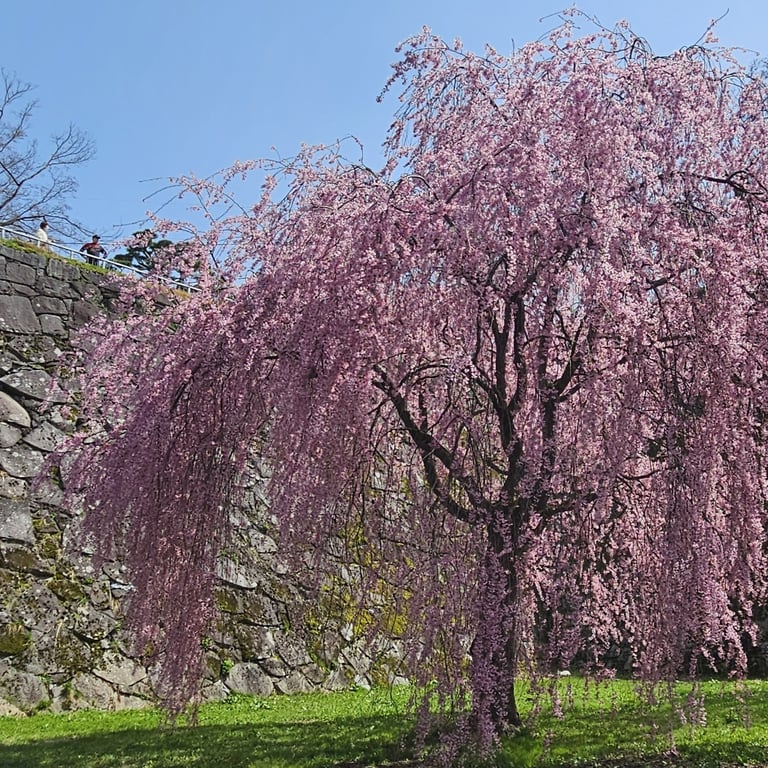
Risshaku-ji Temple, yamagata
Just the thousand steps...
The the temple is also known as Yamadera Temple, meaning ‘Mountain Temple’. Indeed, the thousand step climb, taking thirty-plus steady minutes, starts just one hundred metres away from the Yamadera JR Station. Founded in 860, the temple was an outpost of the Tendai sect of Buddhism. The way up is steep as you engage with the seemingly endless stone steps, but there are ‘gates’ or mini-shrines at different points where you can offer a prayer or simply take a breather. Once up at the top you can check out various old beechwood temple buildings as well as the observation deck which has views right across the valley.
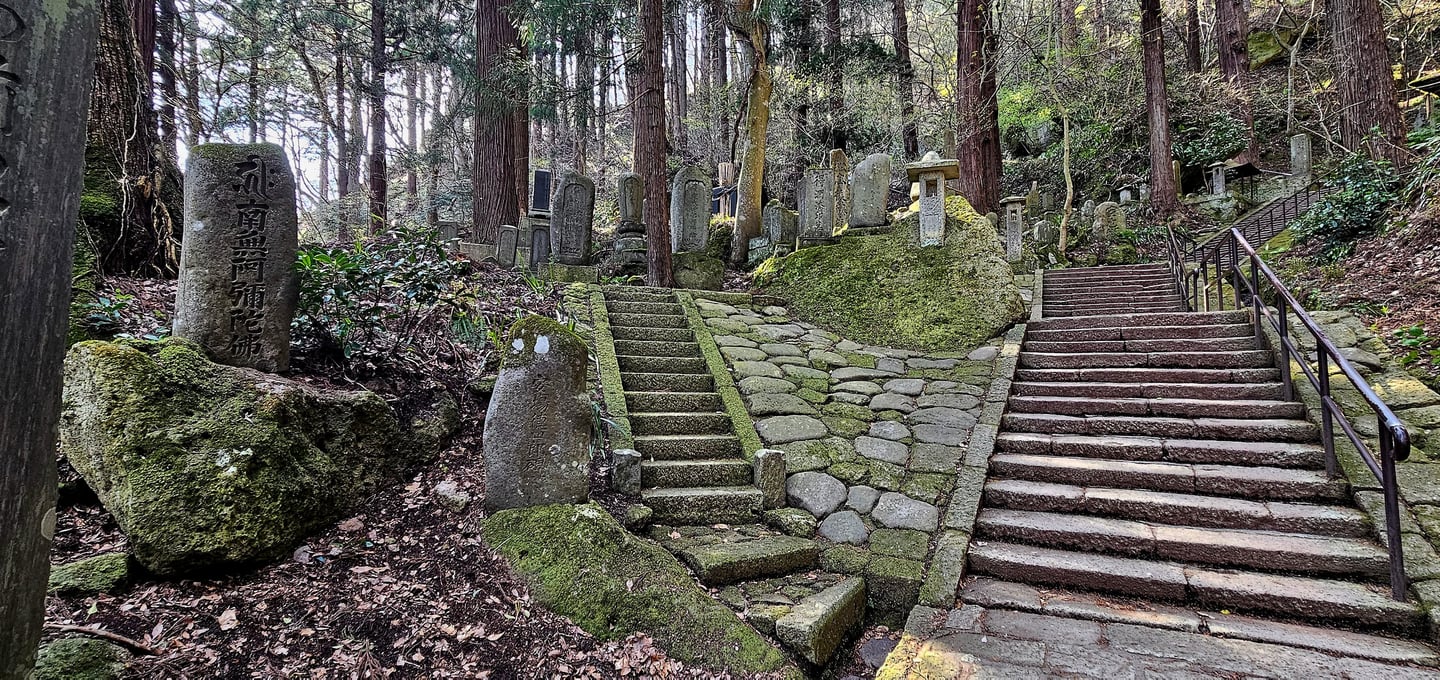


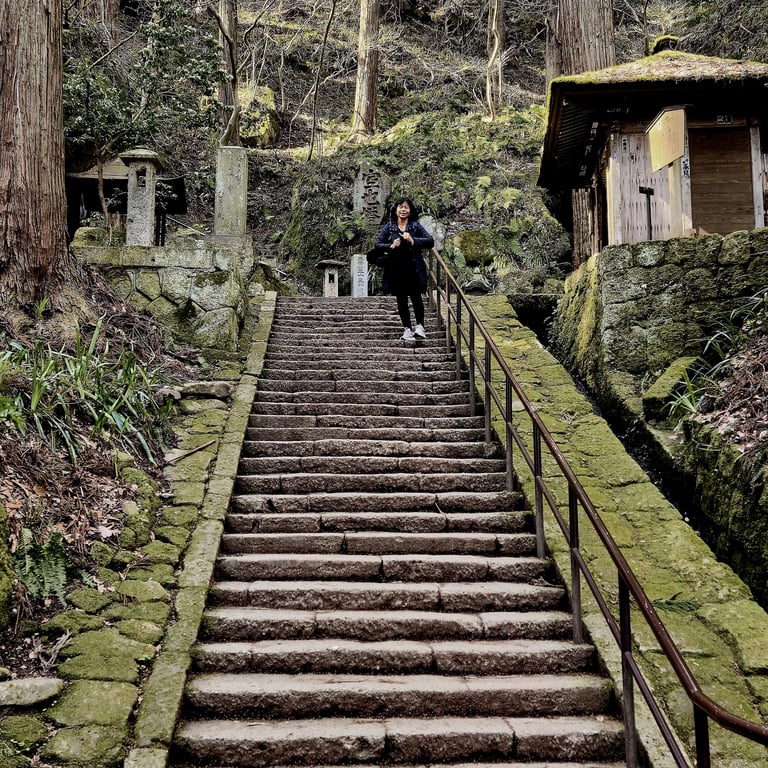
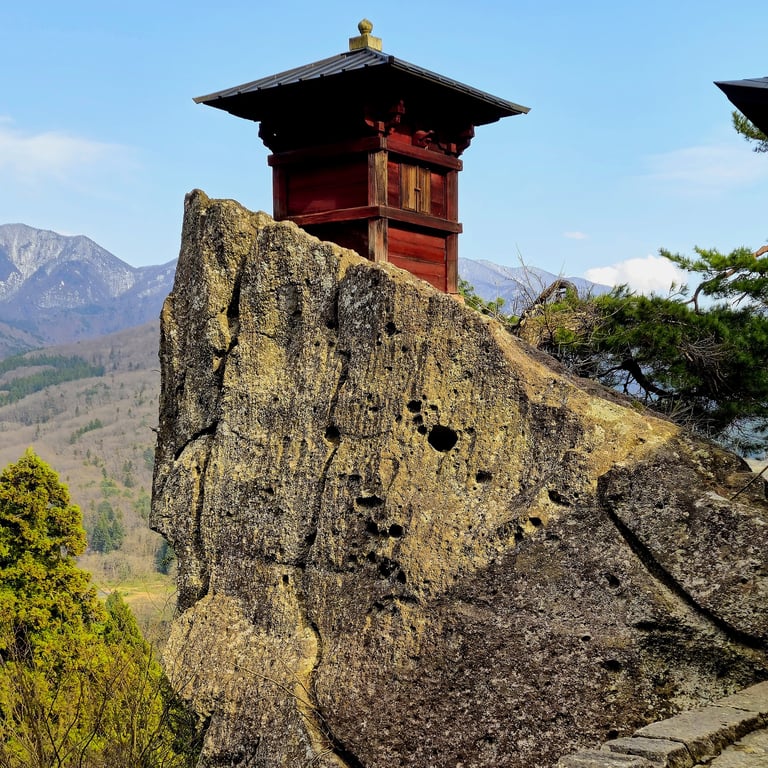
Street Festival, Shibuya
The beat goes on...
There is an annual street music festival in Shibuya, Tokyo, so you can guarantee a bit of heavy drum noise to go with the buzz of the weekend crowd. This particular jazz group were all proper players, and just one drum in sight. There also didn’t seem to be anyone hiding in the chorus, they all seemed capable of standing up and belting out a solo at any time. Add in the chic outfits and you’ve got jazz band smarts from top to bottom. There is a strong instrumental music programme in Japanese high schools, so it is not uncommon for people to say, ‘Oh, I used to play the trumpet a bit at school,’ or whatever, before zipping through some tricky scales at the local fete. 'Mixolydian, you say? Righto!'
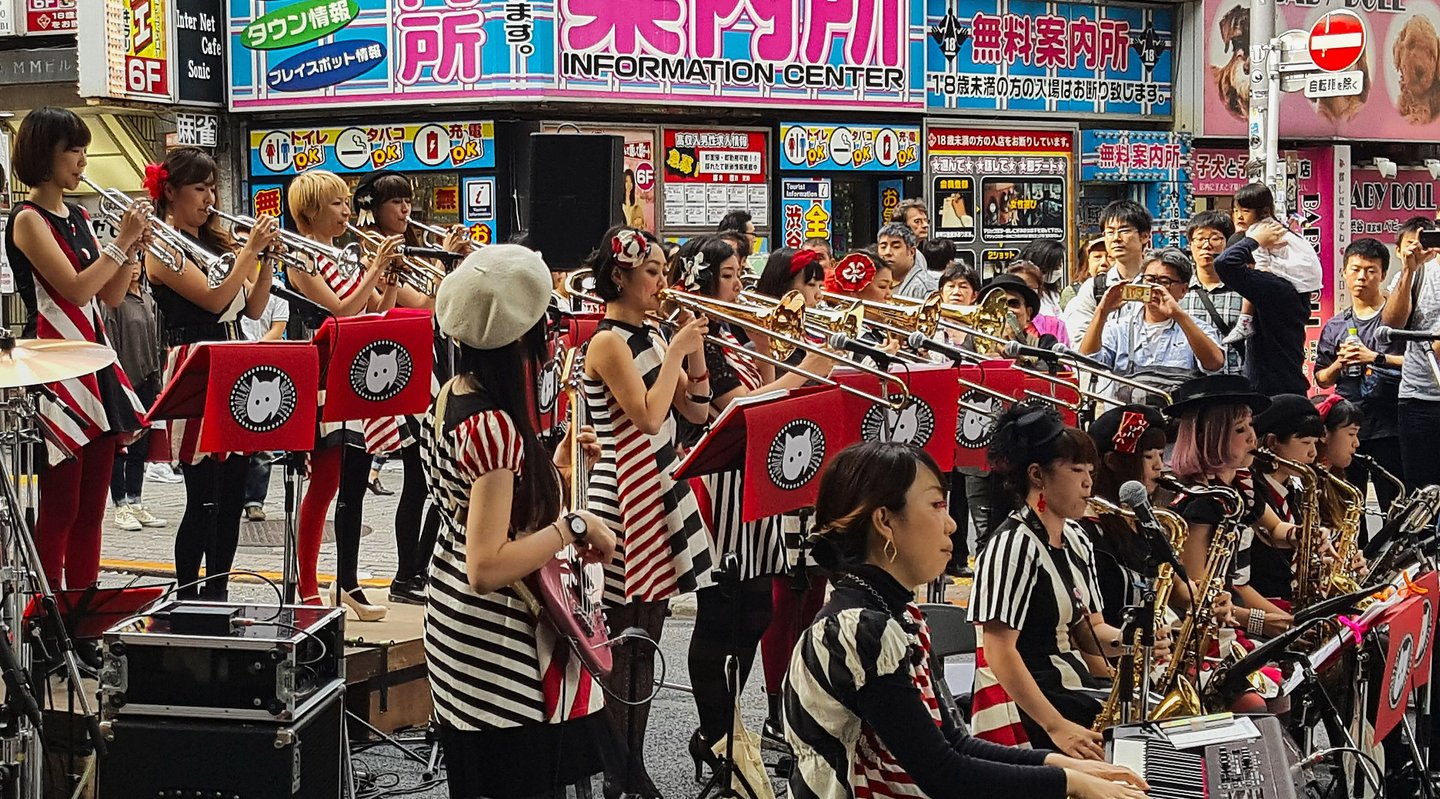

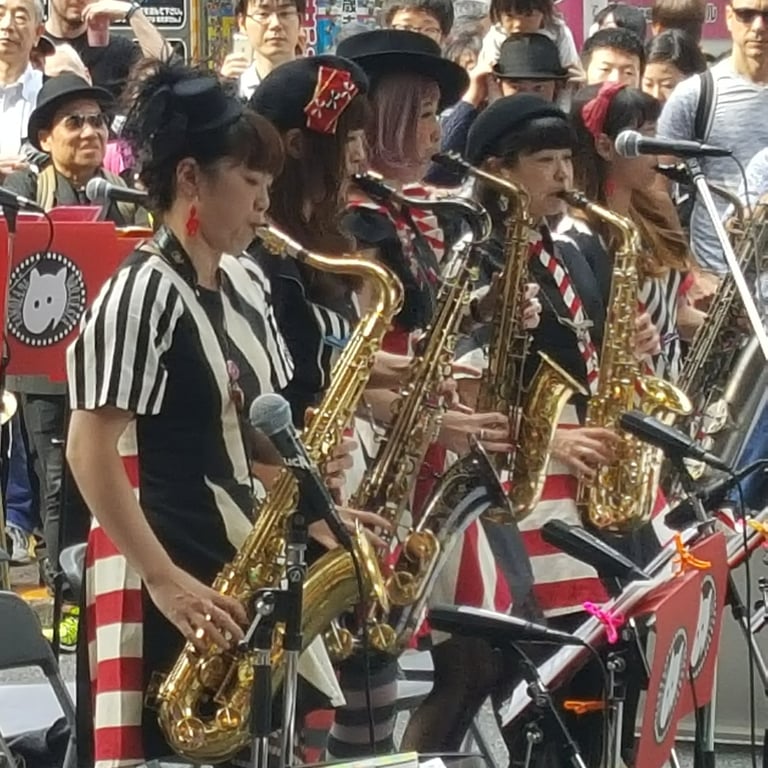
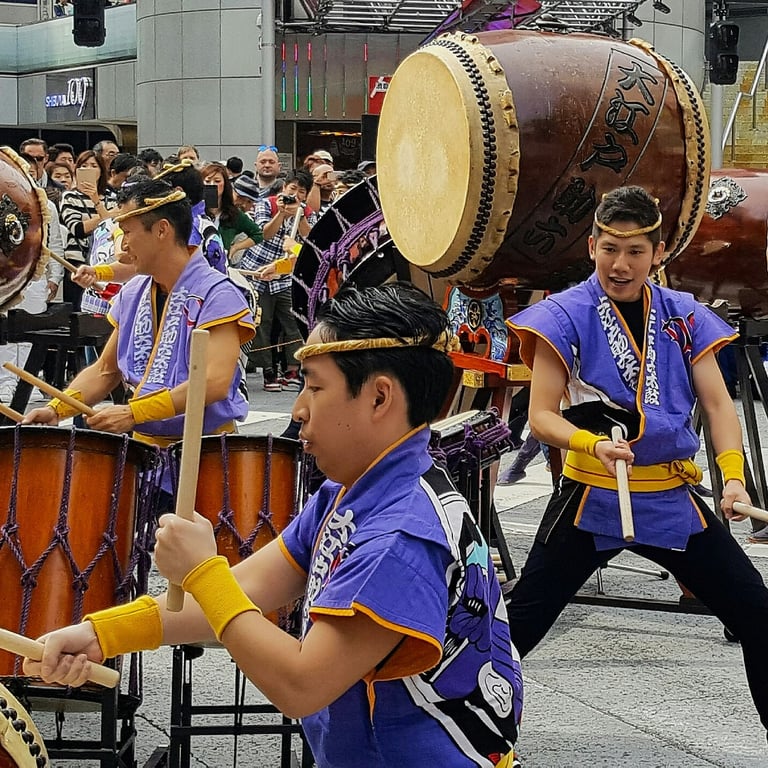
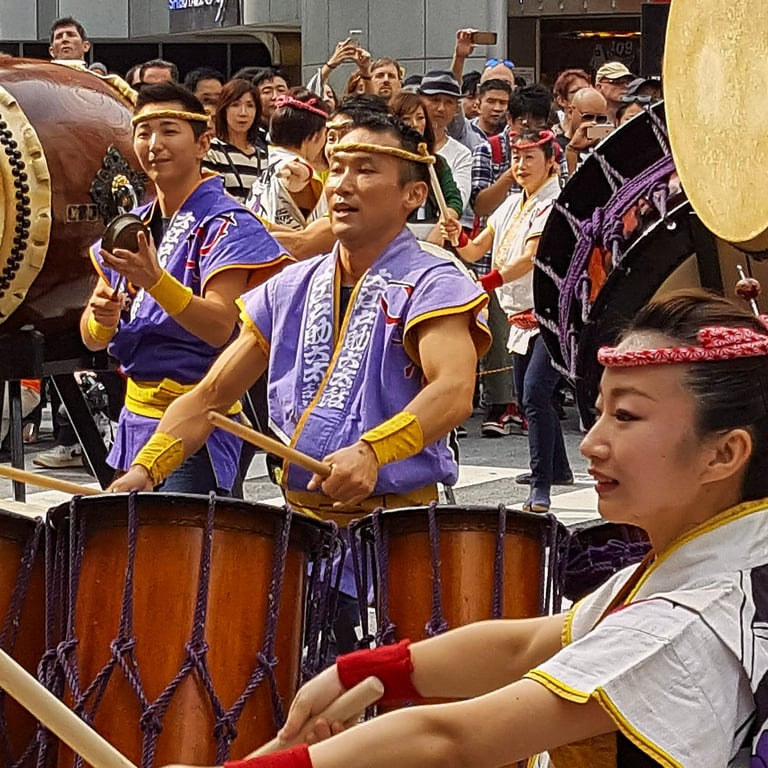
Kakunodate, Akita prefecture
Samurai stronghold
Kakunodate is famous for being the former Samurai stronghold in Akita Prefecture, with a whole street of Samurai residences preserved and open to the public. The other claim to fame is the weeping cherry trees which line the streets and are particularly attractive along the riverbank. Alas the trees were not yet in full-weep mode being half-way between bud and blossom on this visit in late April. Heavy rain for the day also dampened spirits rather, but being a Sunday there was a handsome crowd sploshing about. Brave souls were even paying 13,000 yen for an hour in a damp rickshaw - the rickshaw pullers wisely had waterproofing on their kasa or triangular straw hats. (Note: the blossoms bloomed three days later – boo!)
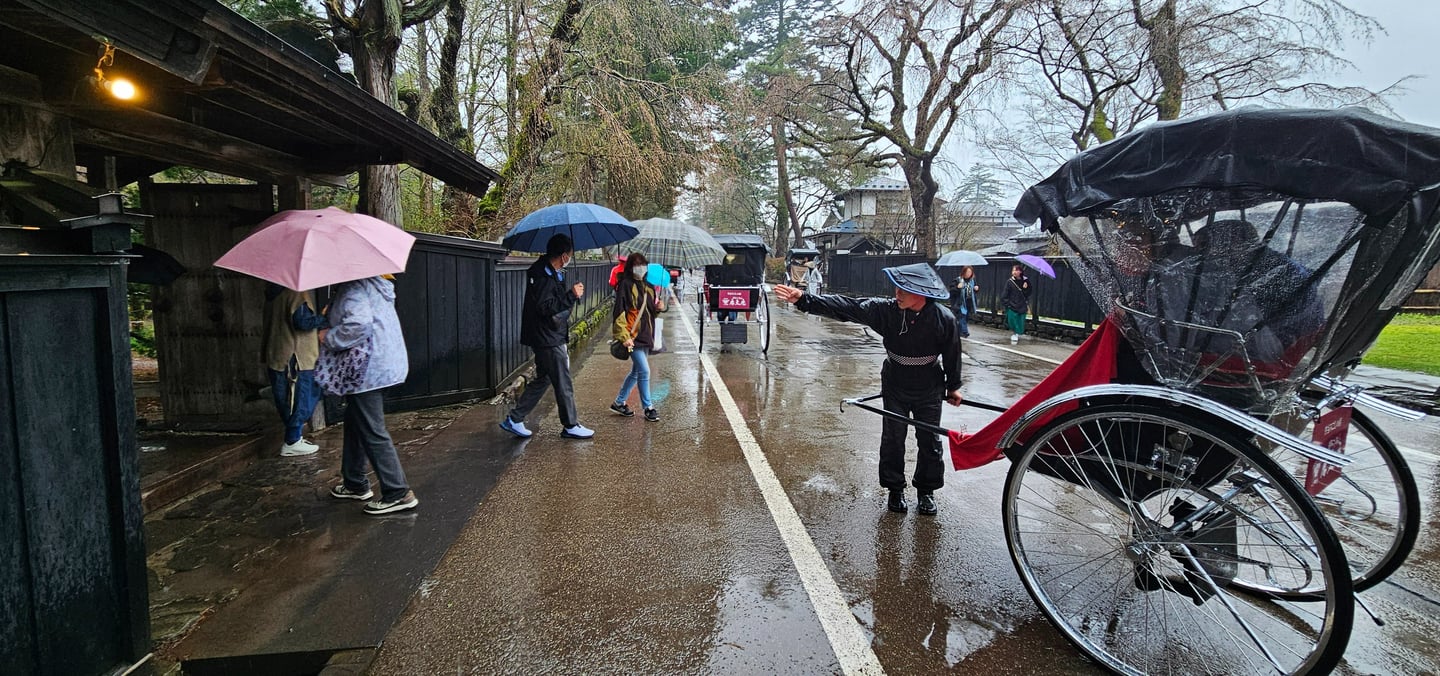

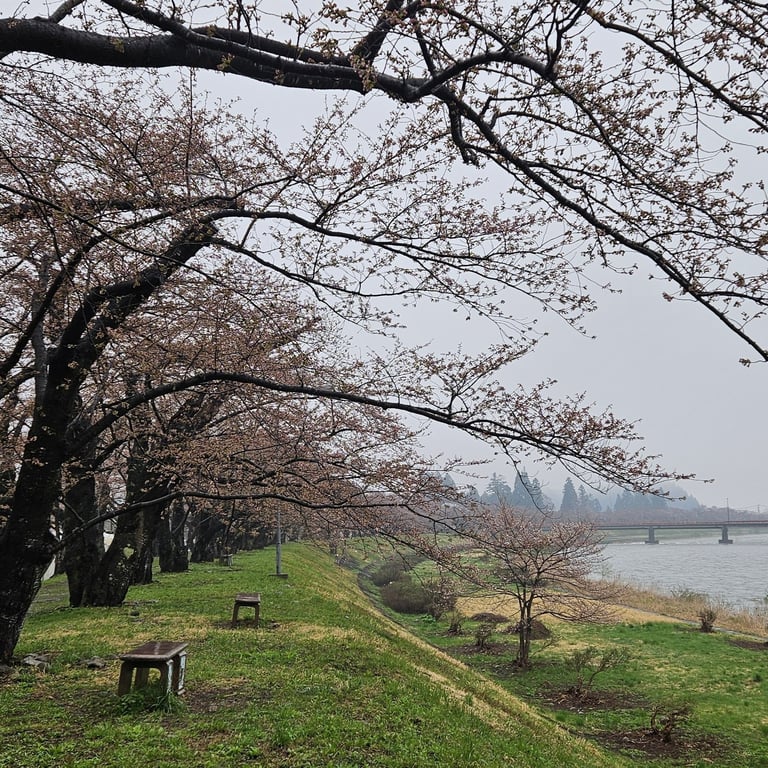
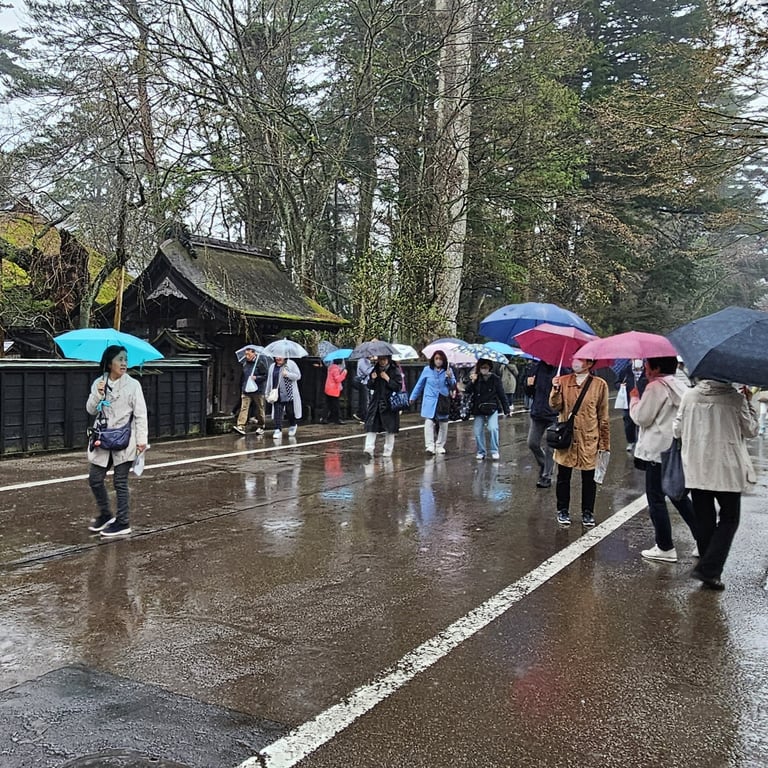
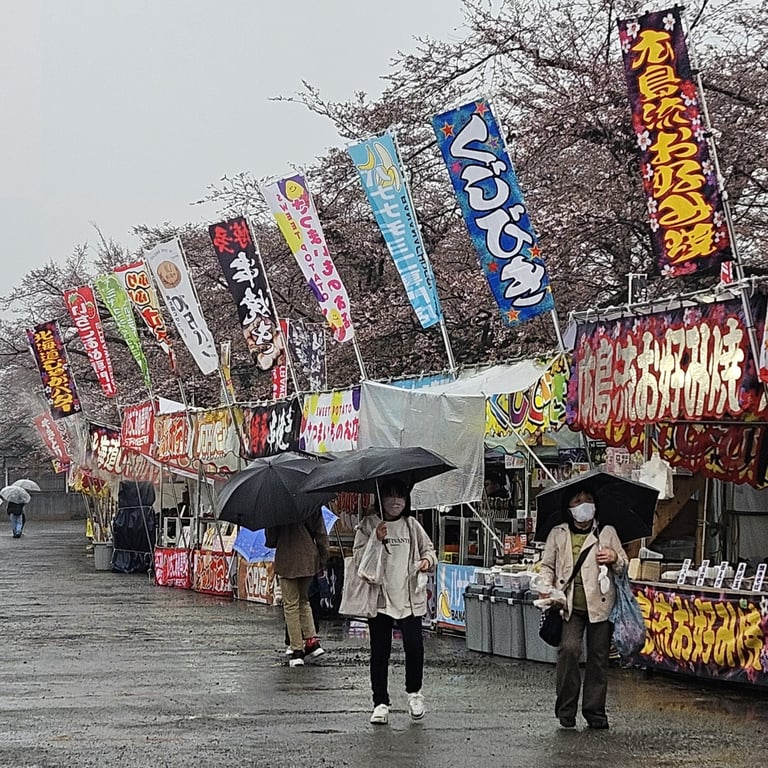
Furano, Hokkaido
Flowers in the rain
What should have been a colourful jaunt around a horticulture farm wasn't quite that - it was tipping it down! Sitting on the tractor trailer with plastic screens pulled down as sheets of rain pelted in sideways, there wasn't much of an urge to get off and explore. Spotting the sunflowers, I asked the driver to wait a minute while I ran up the muddy path to get the angle. The shot was taken balancing an umbrella with the camera shrouded by my coat. There weren't many out on the tractors, most people were huddled in the souvenir shop or slurping down ramen to ward off the cold.
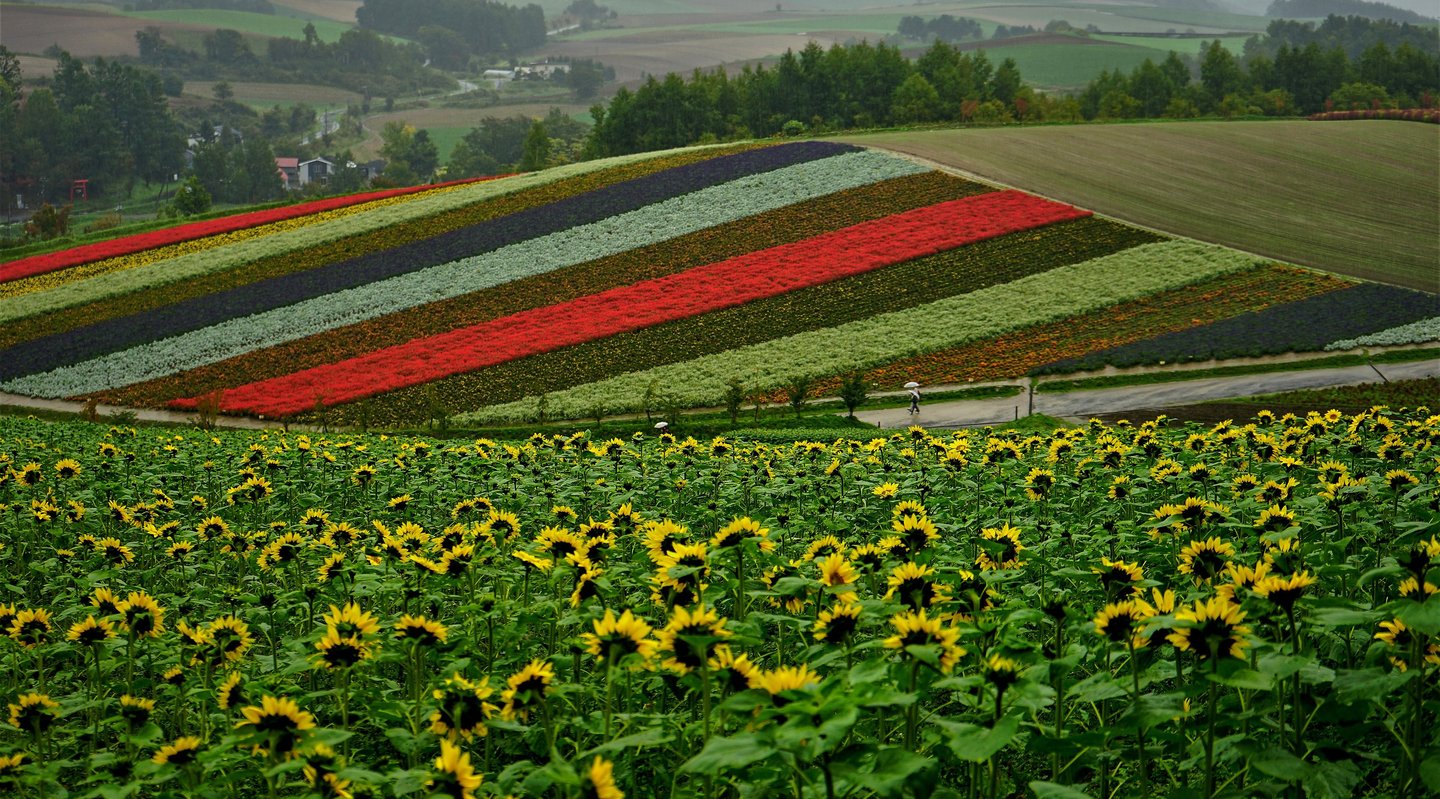

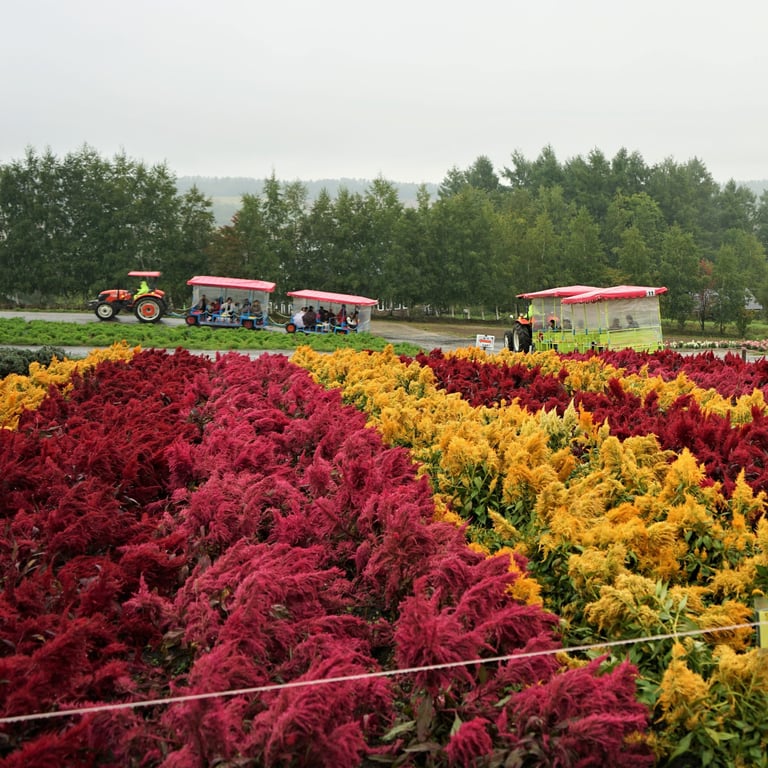
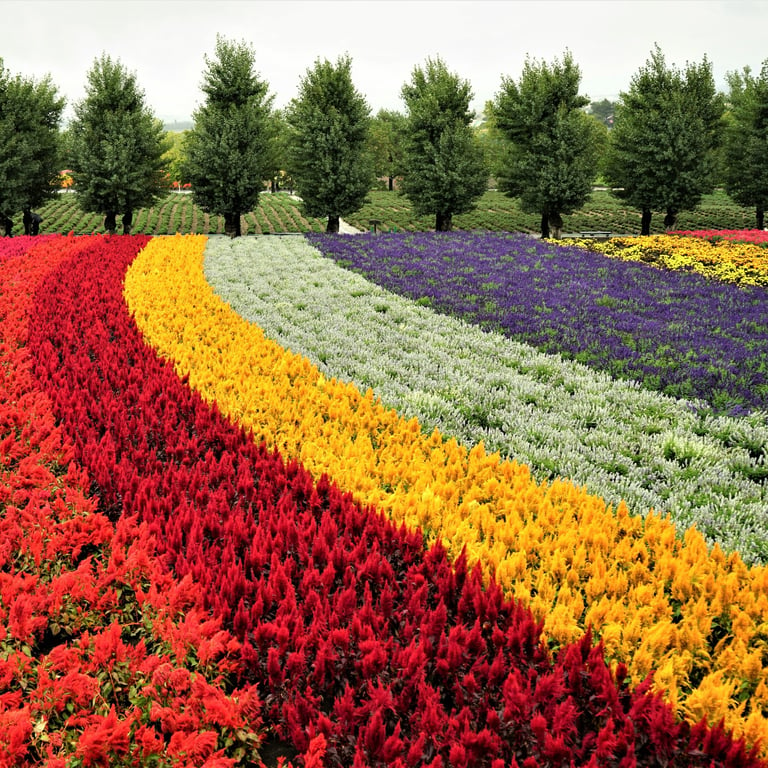
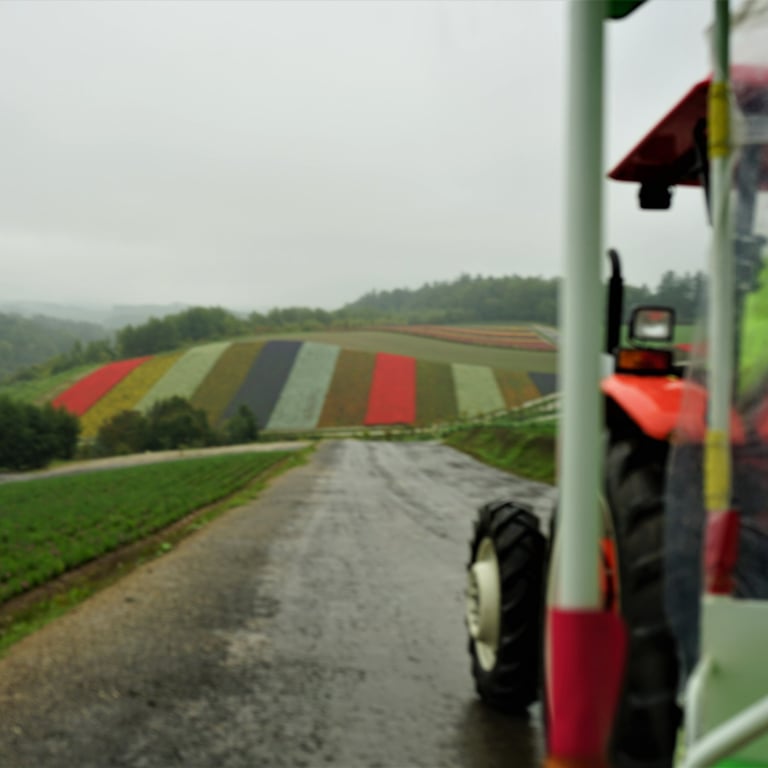
geisha lite, kyoto
An album to remember
Having offered alternatives to the main attractions, likely as not you will be bound to sample them anyway at some point. If you do find yourself in wonderful Kyoto, one of the options is a photo-session in traditional costume. The make-up and fittings can take hours as they attend to the exacting process of transforming you into a geisha or a samurai warrior, ready for your dream keepsake photo album and disk. Included in the price is often the chance to stroll about town in your new persona (back in two hours or you turn into a …). Pictured here are folks proudly strutting their stuff in Kyoto, but studios sometimes offer the same deal in Tokyo as well.
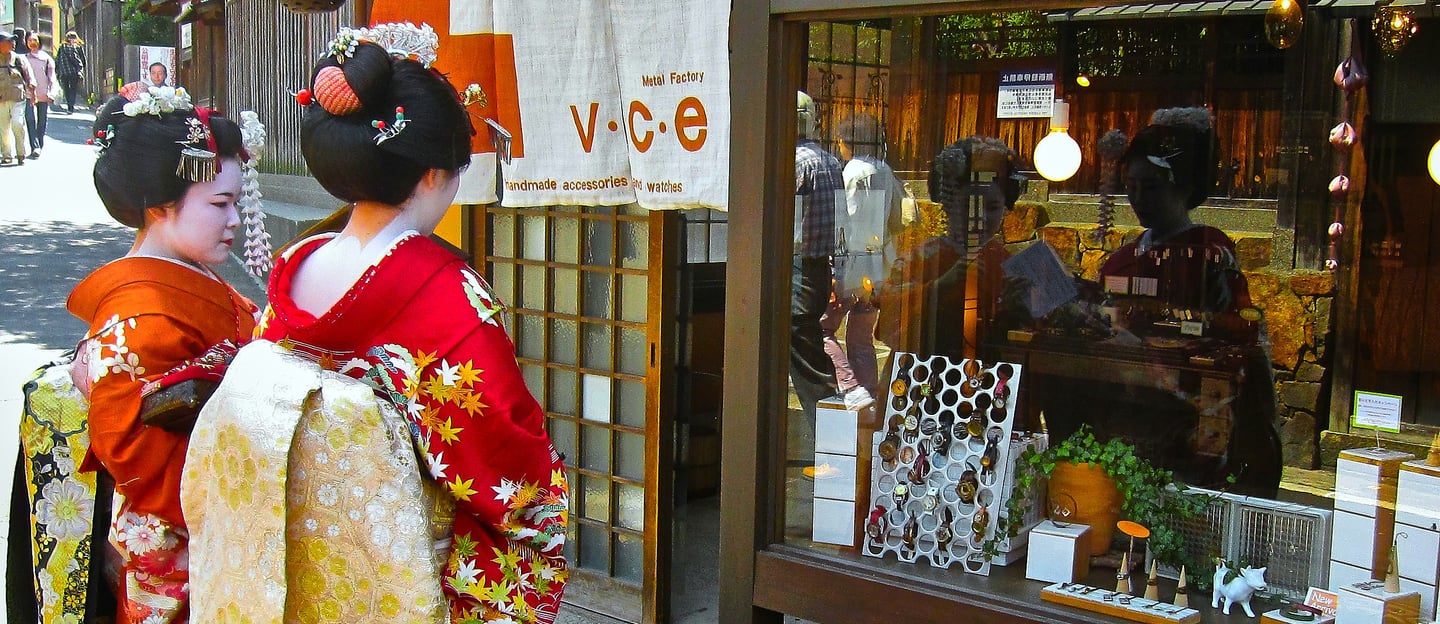

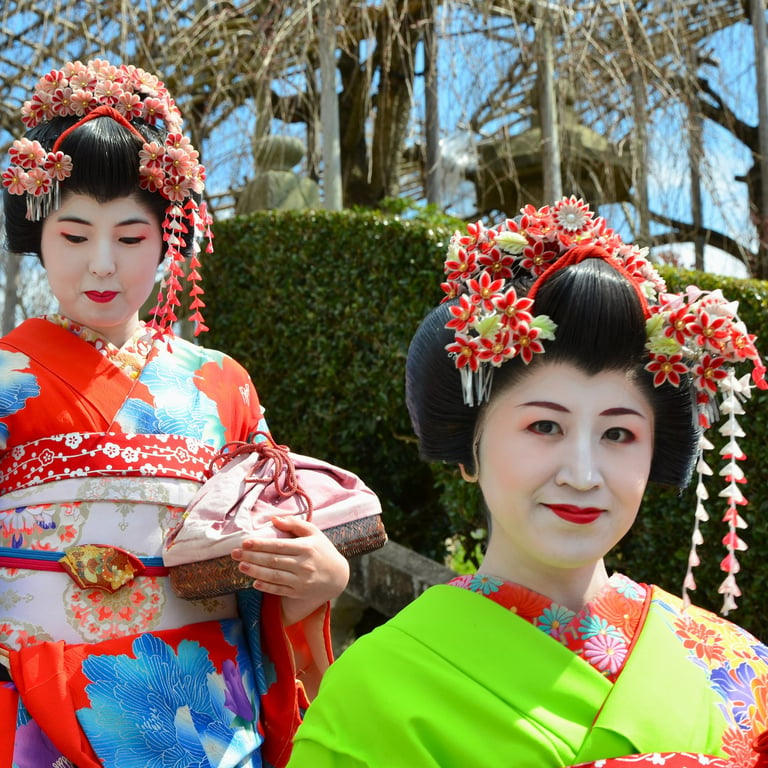
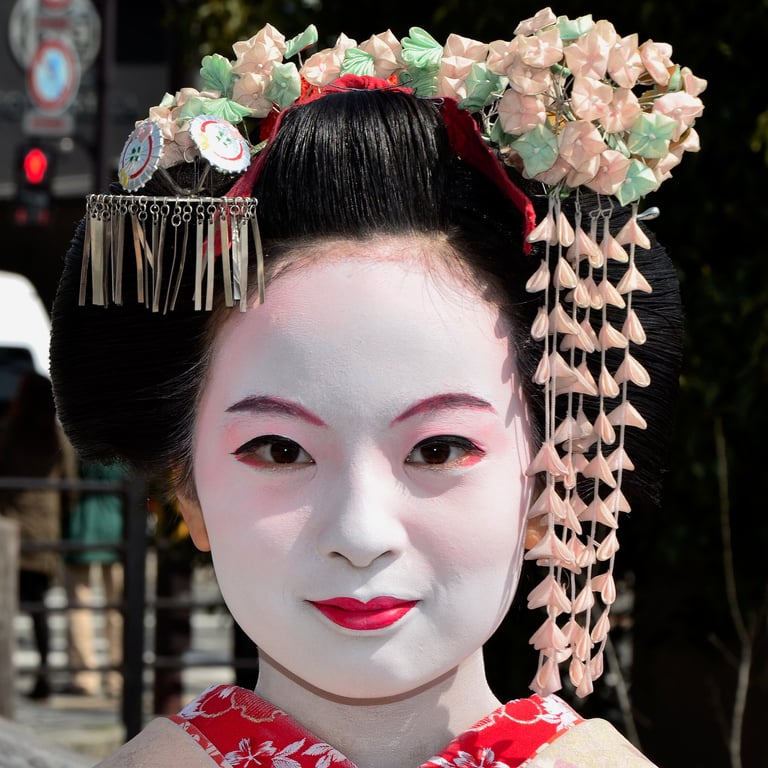
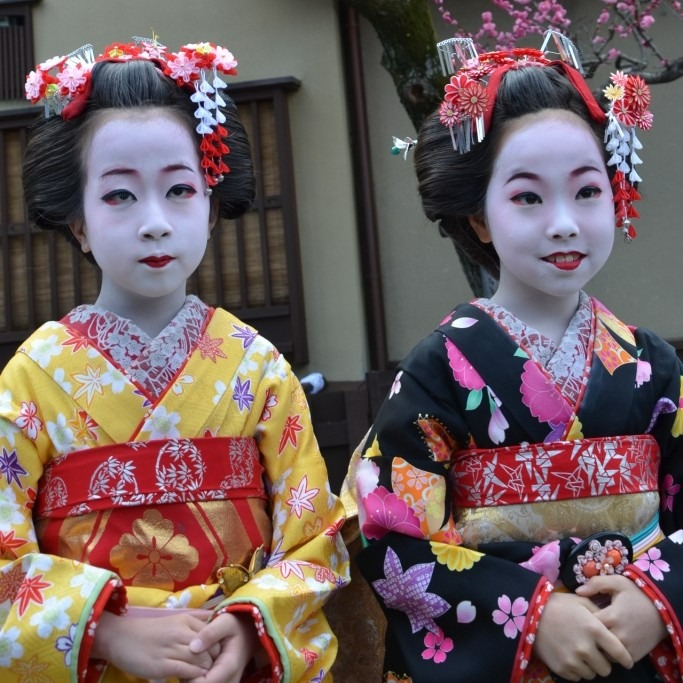
Meiji jingu, Tokyo
Meiji Park
Meiji Jingu was completed in 1920 as a Shinto shrine to Emperor Meiji and Empress Shoken. It is set in huge, forested grounds practically in the heart of the city, adjacent to Yoyogi Park. Standing 12 metres tall, the Ootorii wooden gate was destroyed by lightning in 1966 but reconstructed in 1975 using wood from a 1,000-year-old Japanese Cypress. It represents the gate between secular and sacred ground - you will likely pass under it on your way to the shrine. Once there you can inscribe a message on a wooden votive block. Good health, good fortune or prosperity are probably top of the wish-lists.
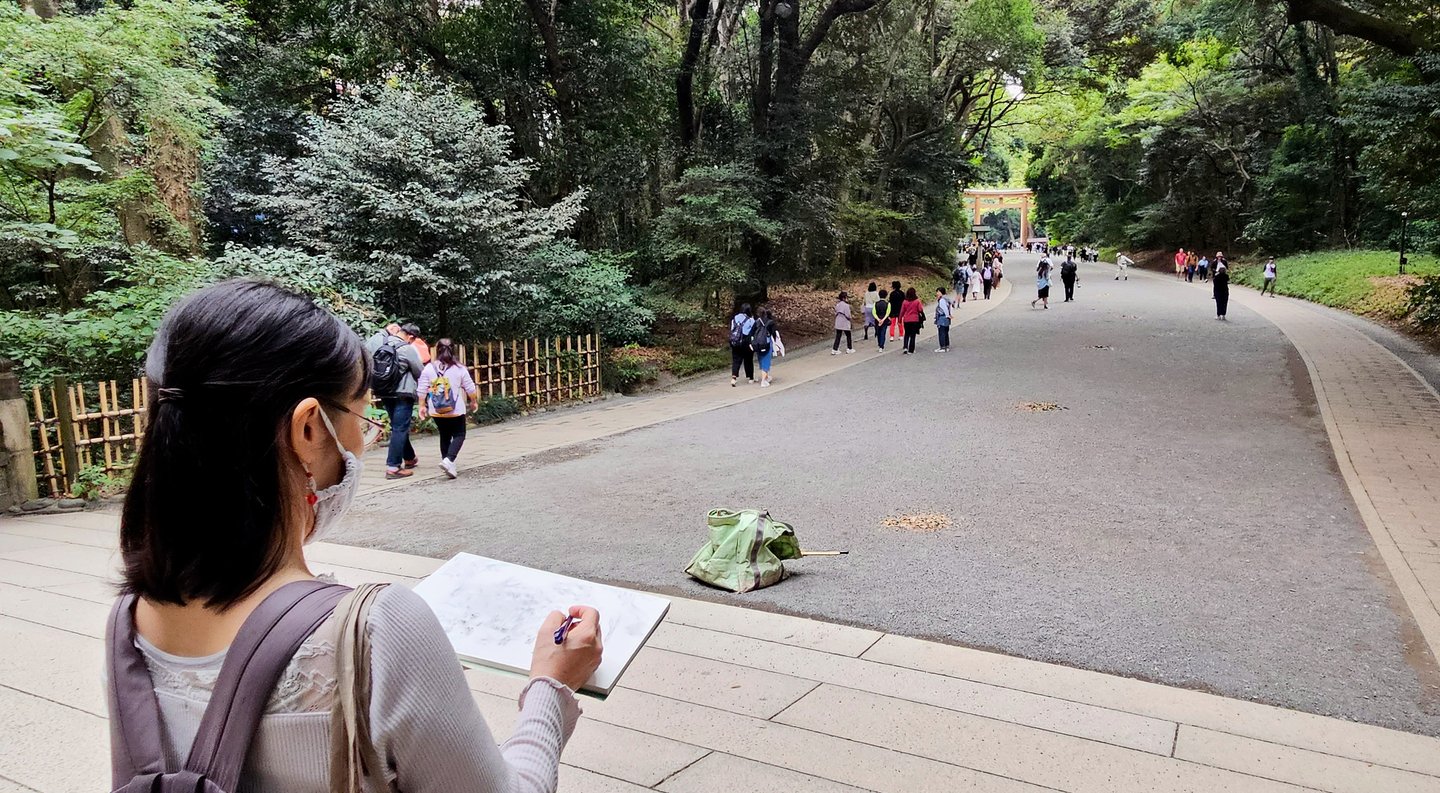

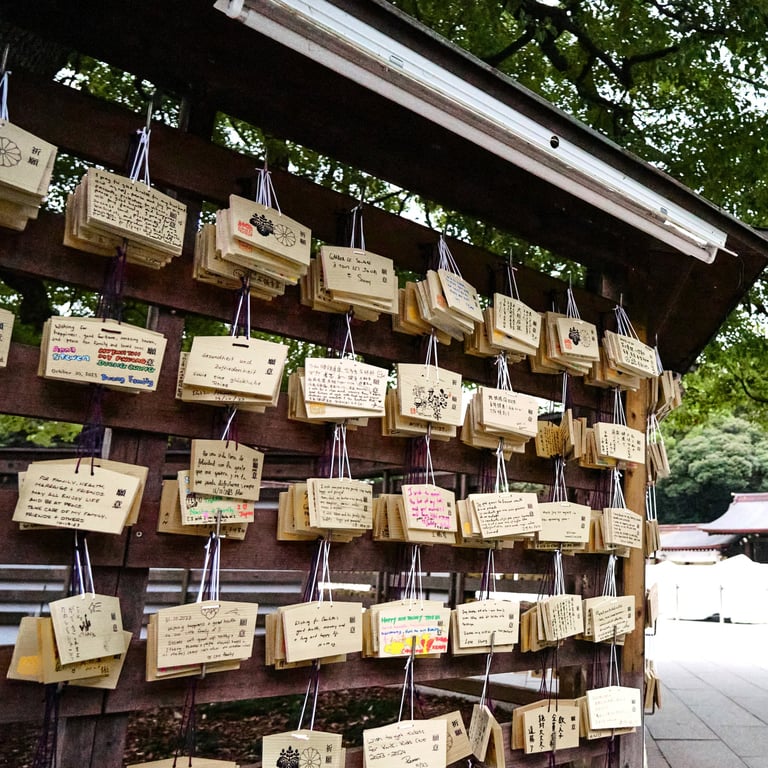
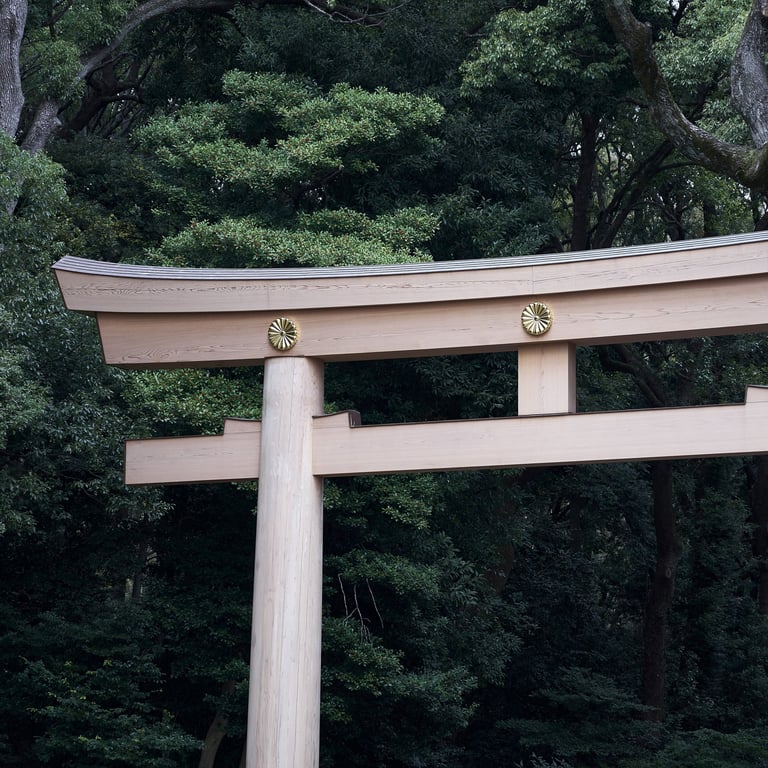
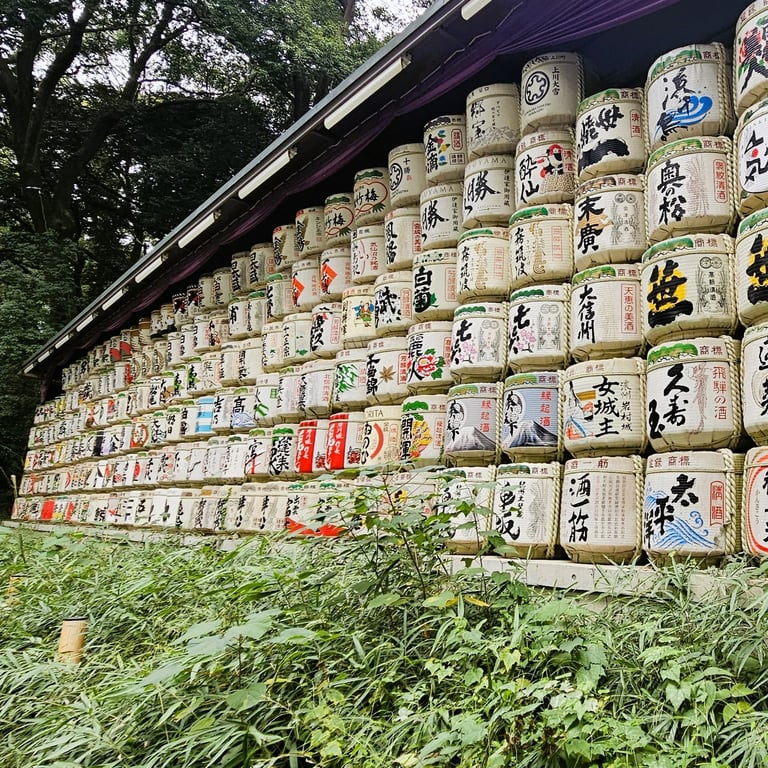
Ginzan onsen, yamagata
Welcome to a film-set
Ginzan Onsen is a picturesque town astride the Ginzan River up in the mountains of Yamagata Prefecture. It owes its origins to silver mining centuries ago which also led to the discovery of the hot-water springs. Once the silver had been exhausted, the town made a name for itself as an onsen resort; the current guest houses and onsen date from the 1920s. Now you will be paying top-dollar to stay overnight and take in the gas lantern-lit film setting experience. Without your own car it will likely be a two-hour train and bus trip from the city of Yamagata in the northern Tohoku region. Worth it, no question - you can even warm your feet up in the hot-springs troughs on the bridges.
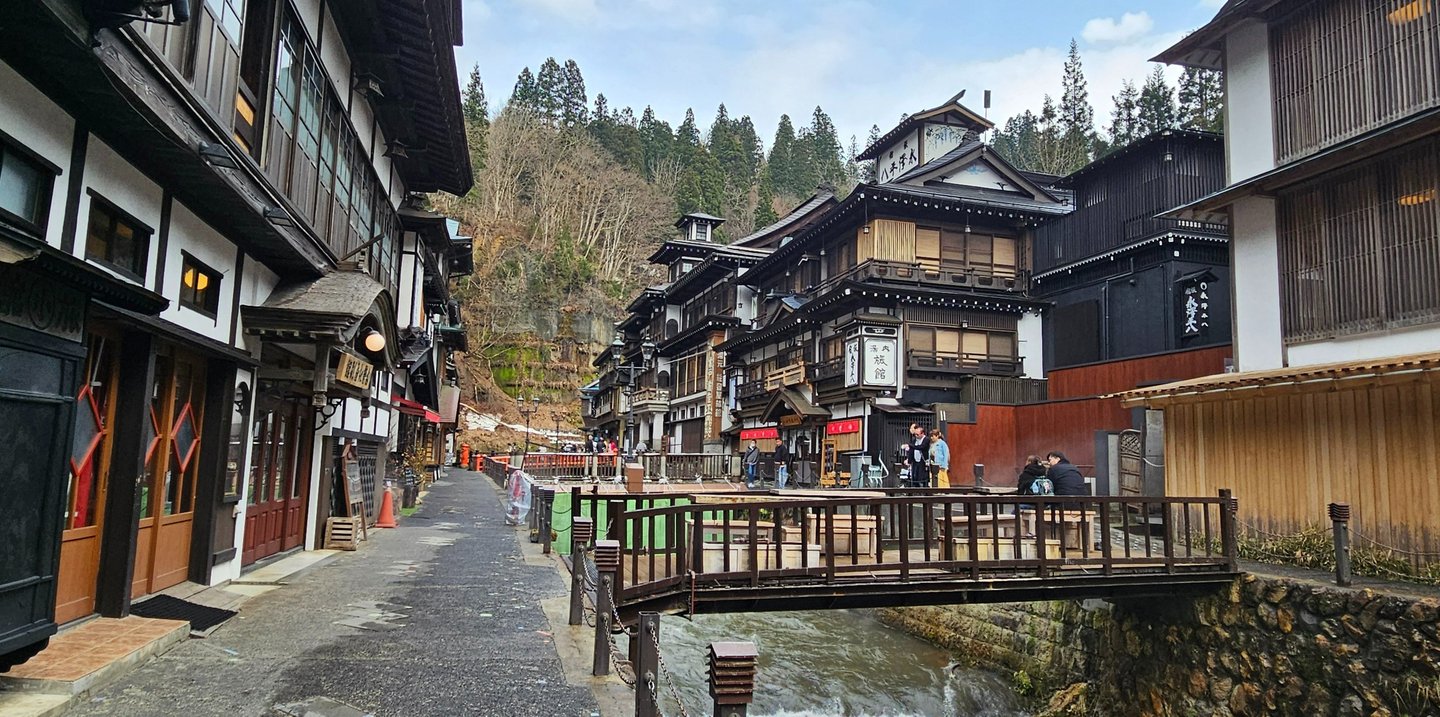

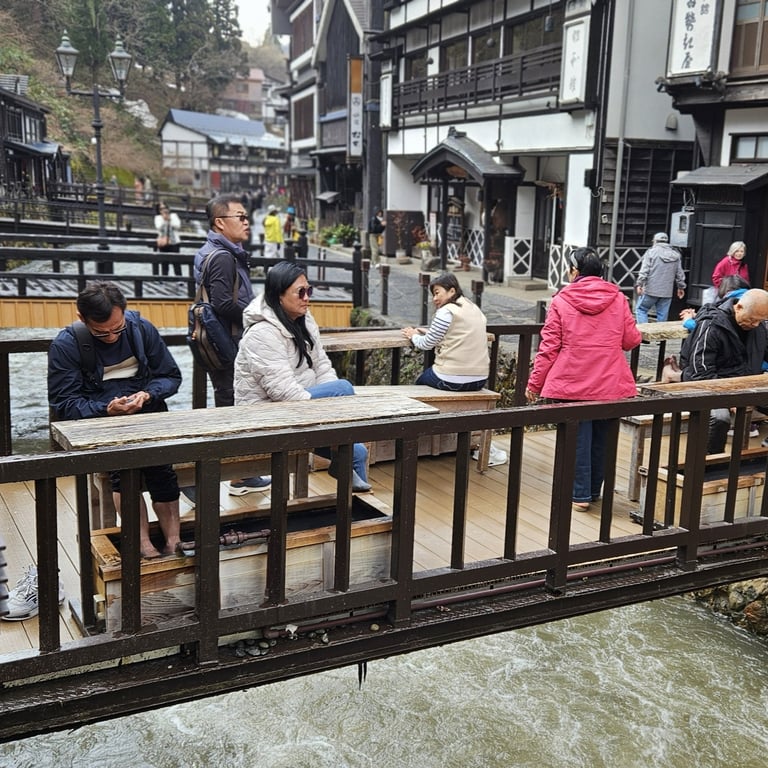
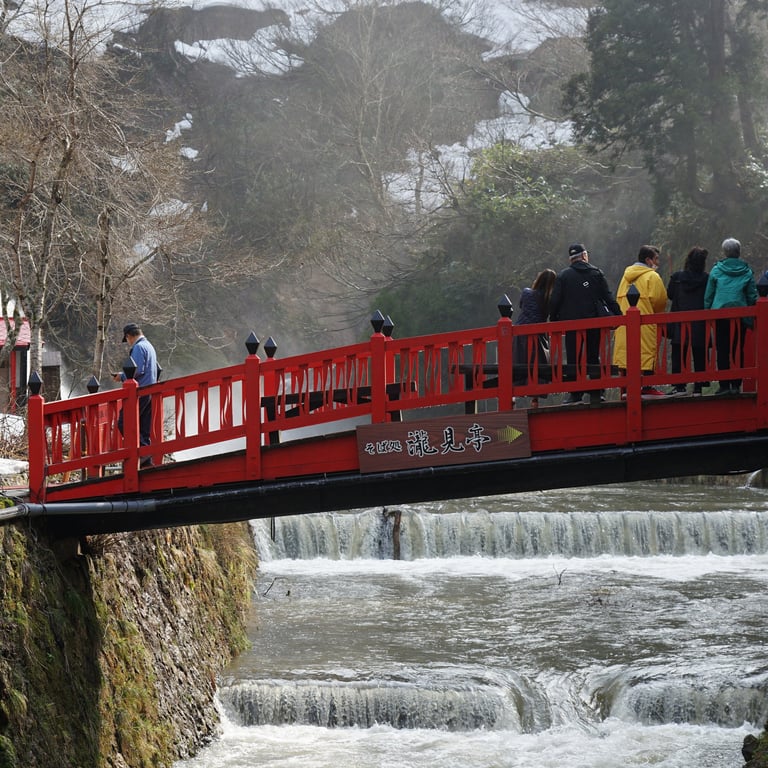
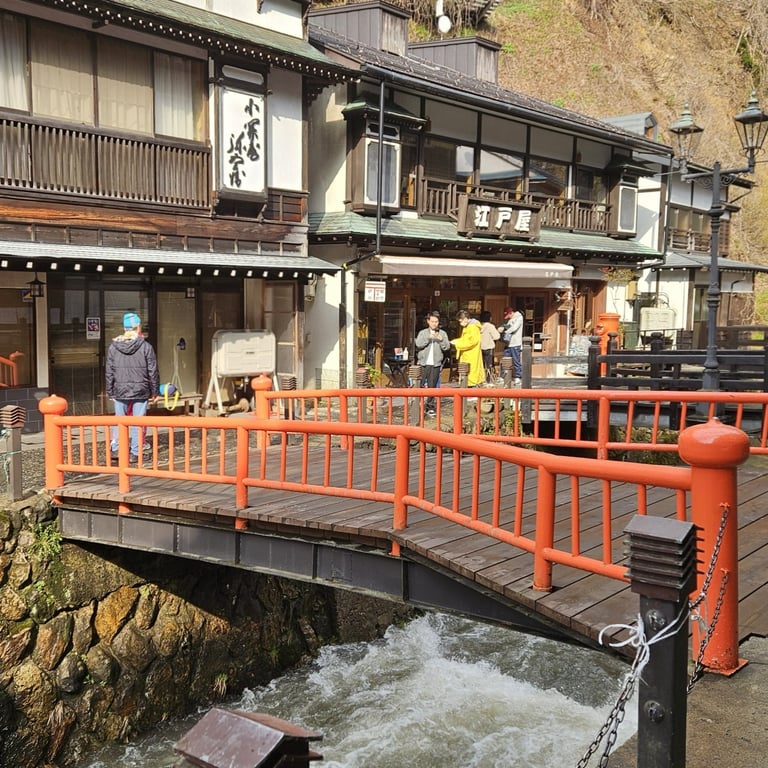
Sakura (Cherry Blossoms)
Plan ahead...
Sakura, the cherry blossom tree, has great symbolic meaning in Japan, as a motif the blossom is a ubiquitous feature seen in all manner places. For the Samurai warrior it signified a short but colourful life, herein lies the clue! To catch the blossoms in full bloom you really need to plan ahead. Take into account 1,000 kms of latitude south to north, as well as a location’s altitude – both of these will determine exactly where you need to be, and when. Blossoms appear in March in Kyushu and make their way up to Hokkaido in late April. Watch the weather too - one strong storm and all those blossoms can be but a soggy carpet on the ground. Blossom forecasts are published three times per year, with margins of error (measured in days) to help you plan your trip. Like a military manoeuvre, your research and attention to detail will pay off, with flights booked and an itinerary laid out with some degree of confidence.
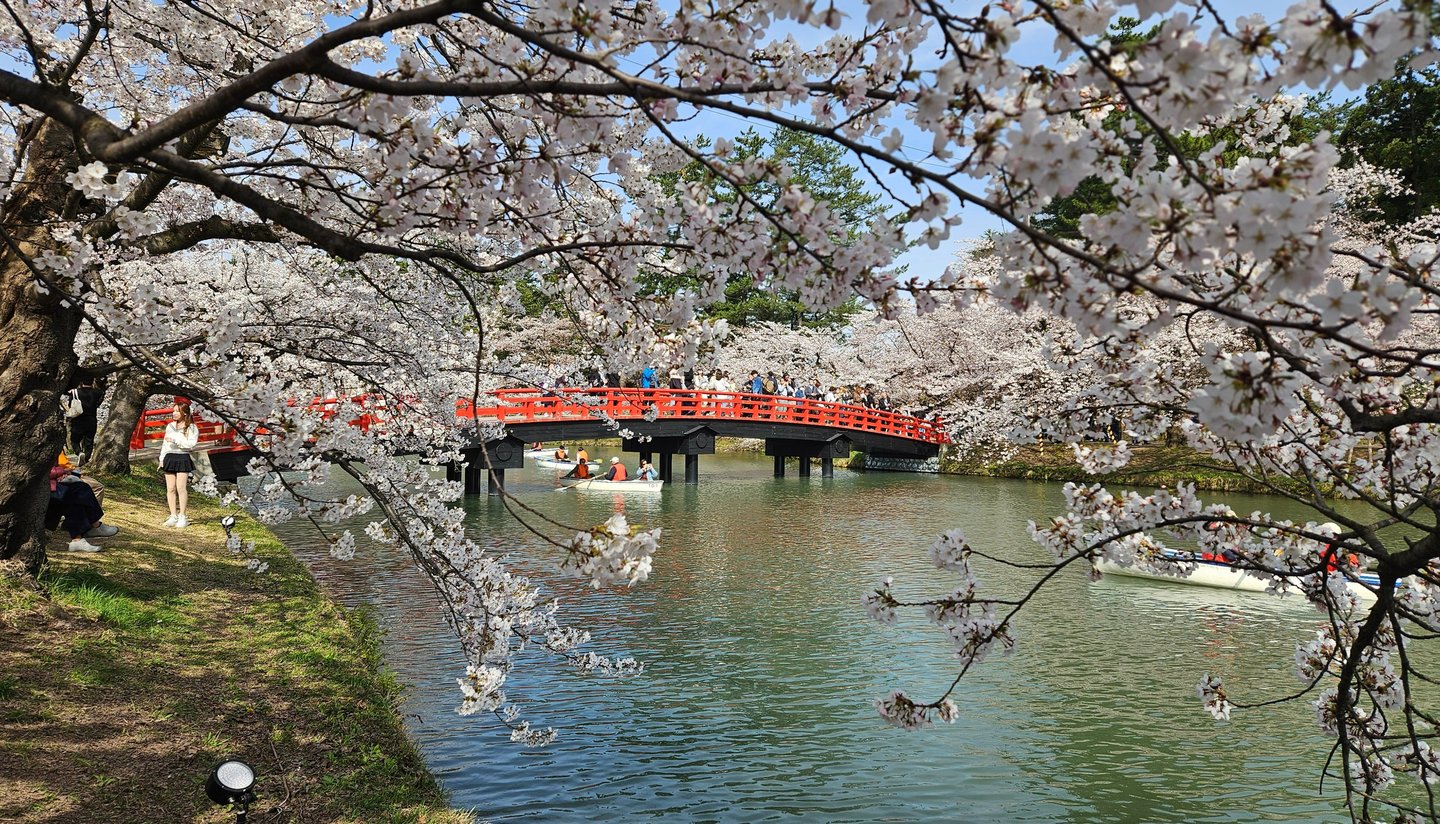

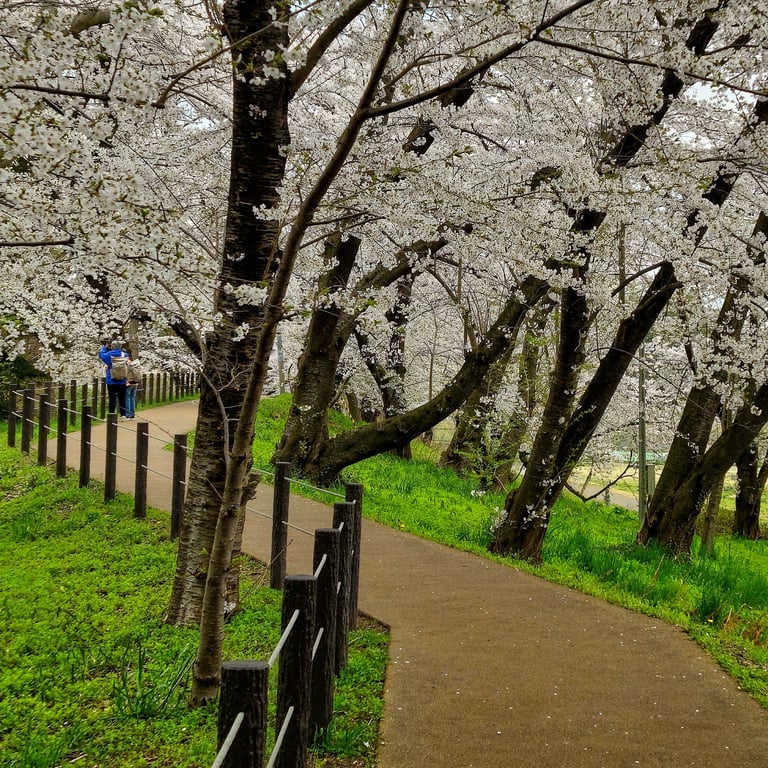
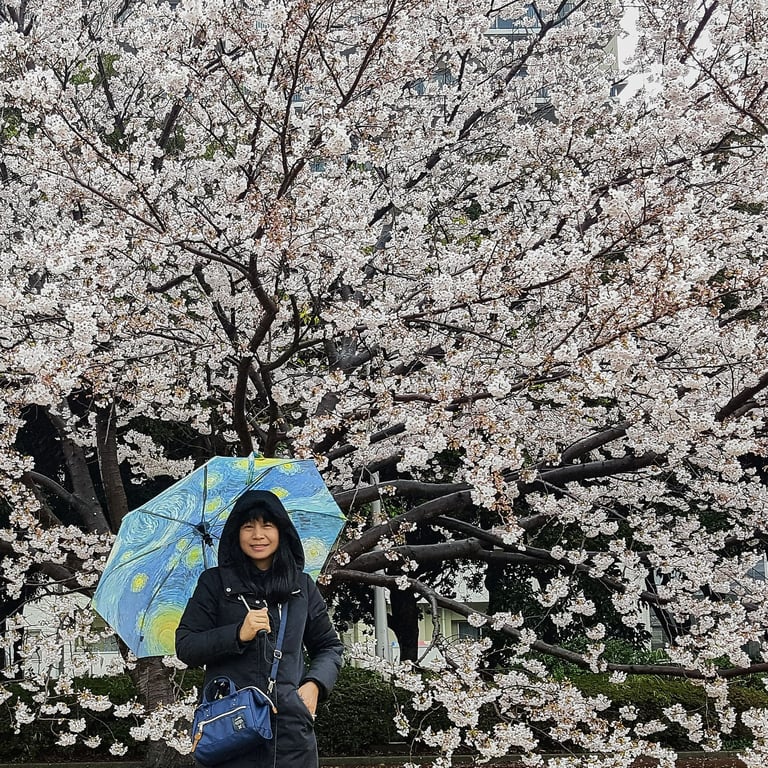
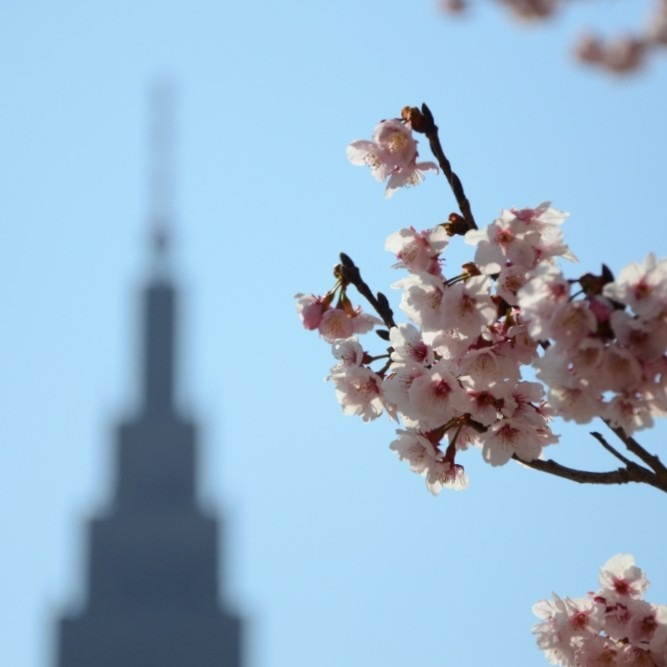
naritasan park, chiba prefecture
Autumn leaves
Narita is a lovely town near to the international airport. The centre is pretty much like any urban scene in Japan, there does seem to be an imprint comprised of Japanese uniform architecture and the regular franchises dotted about. But, wandering down the hill towards the park are rows of more 'olde worlde' shops selling local foodstuffs (unagi or eel is popular), and souvenirs. The park itself is large and takes some time to traverse, especially if taking in temples as well. I have wandered through several times and in different seasons, with autumn being the prime time, as seen here.
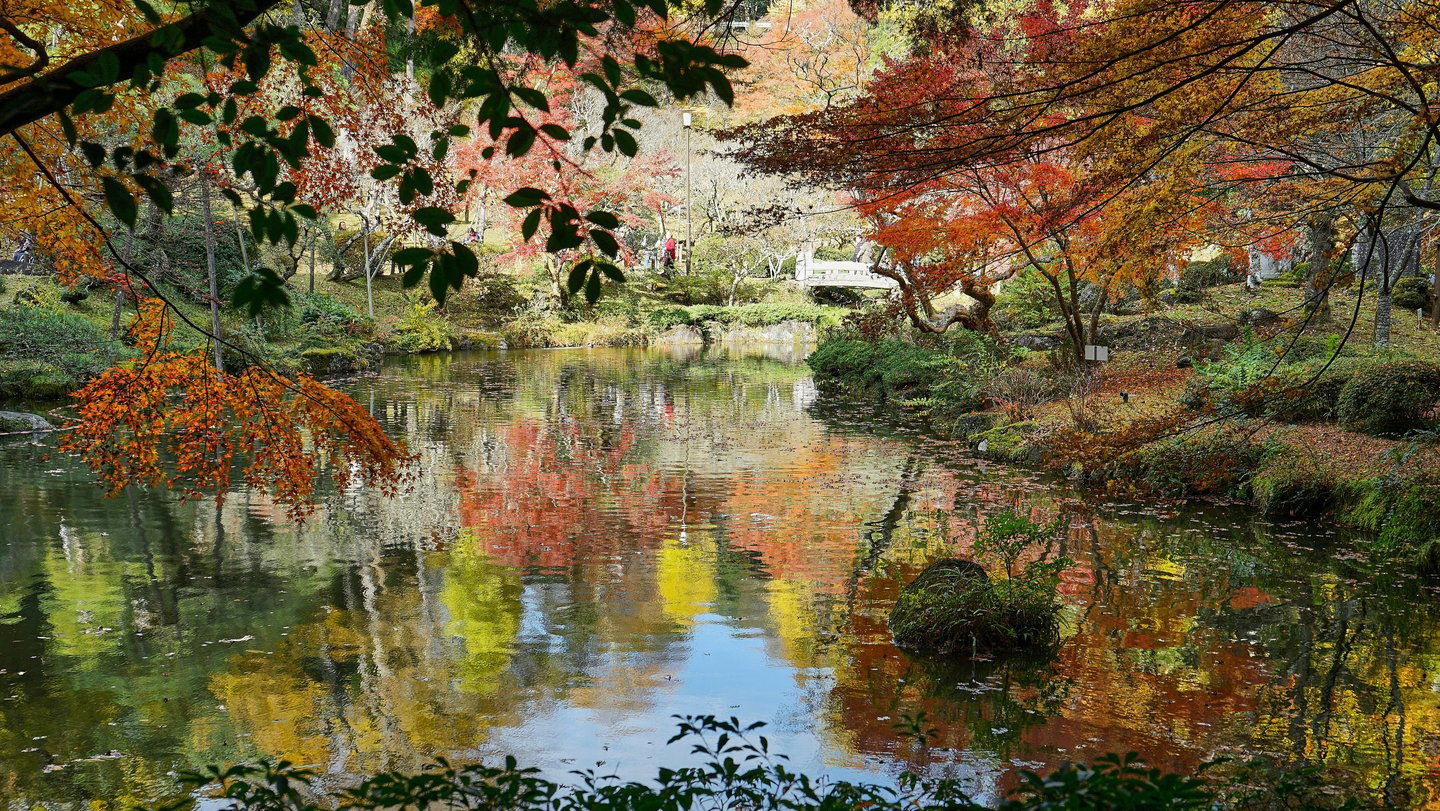

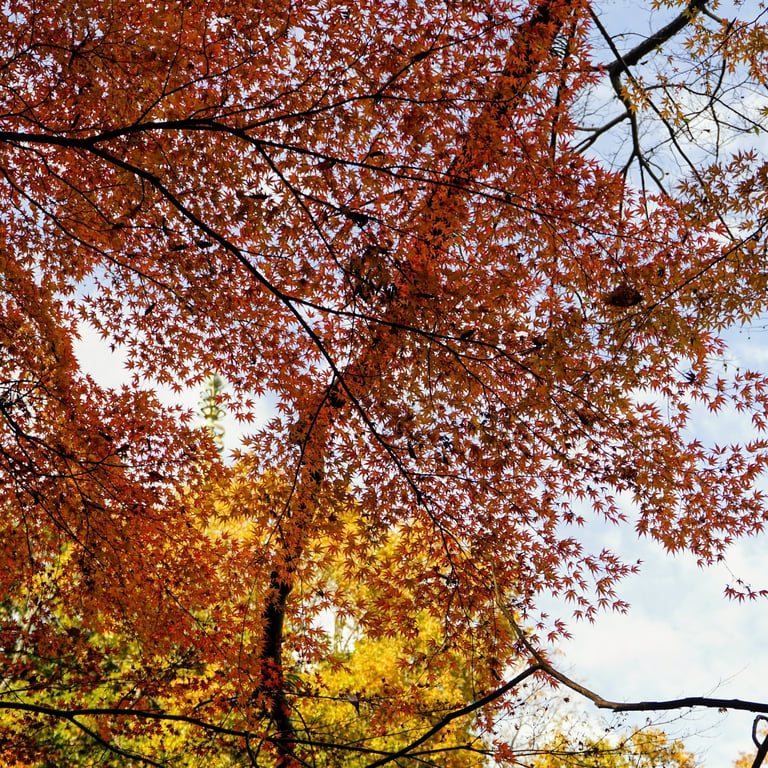
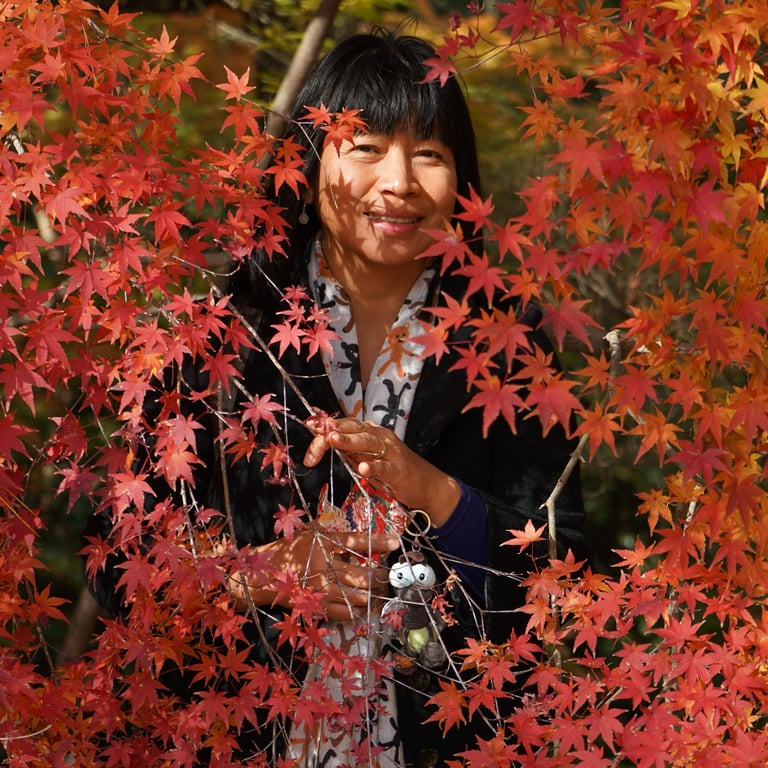
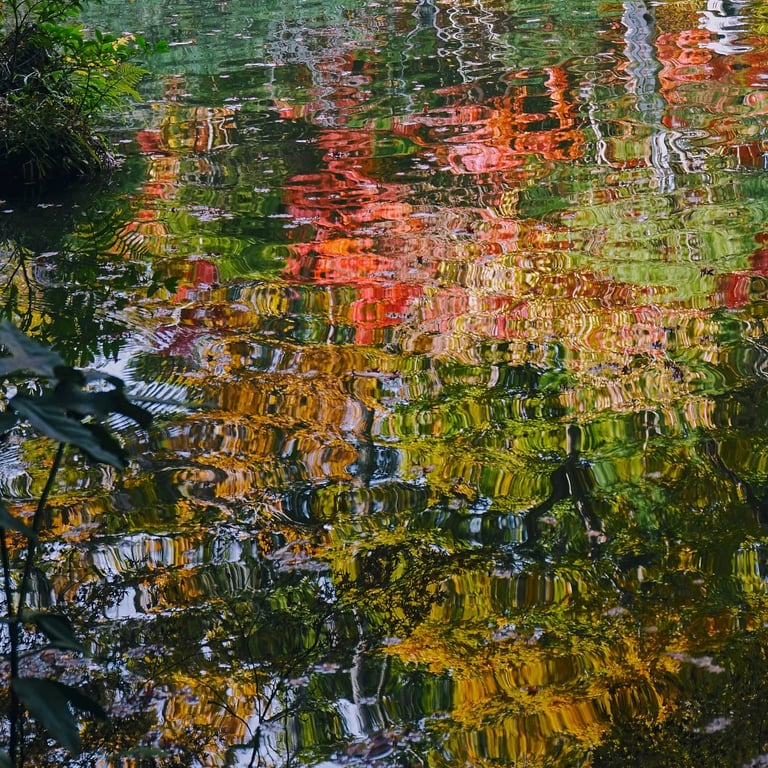
miyagawa morning market, takayama
Trendy Takayama
Takayama is a go-to place for lots of reasons, evidenced by the streams of visitors passing through. The riverside market which kicks off every morning at 07.00 is worth calling in on. To balance up all the farm produce and horticultural stuff on display, the houses opposite offer boutique-type Japanese clothes, along with coffee shops where you can sit and admire your purchases. This all makes for a very pleasant stroll, even if it isn’t the largest of markets in the orient. The neighbouring area also has many heritage houses for you to explore as you pad up the hill to the Sakurayama Hachimangu Shrine.
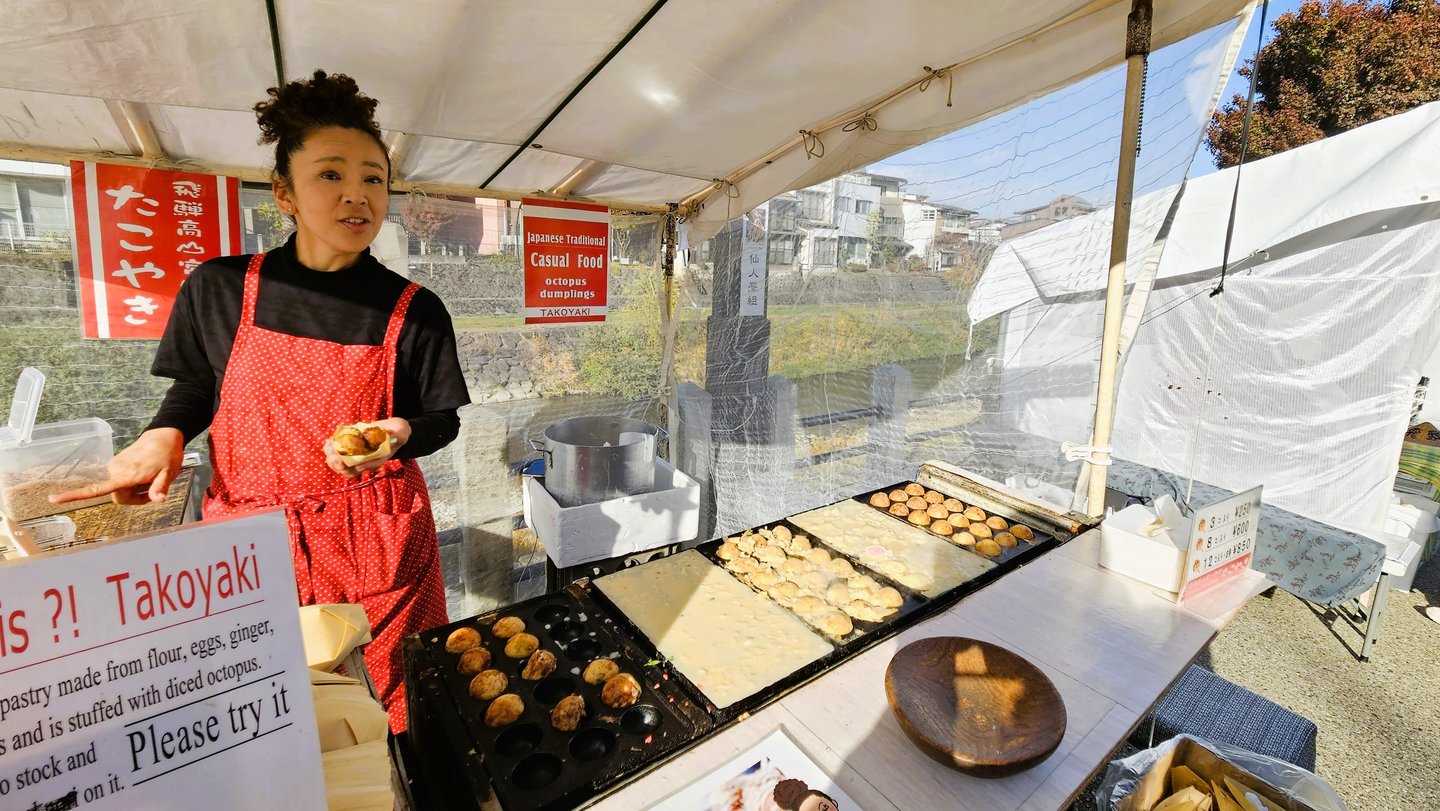

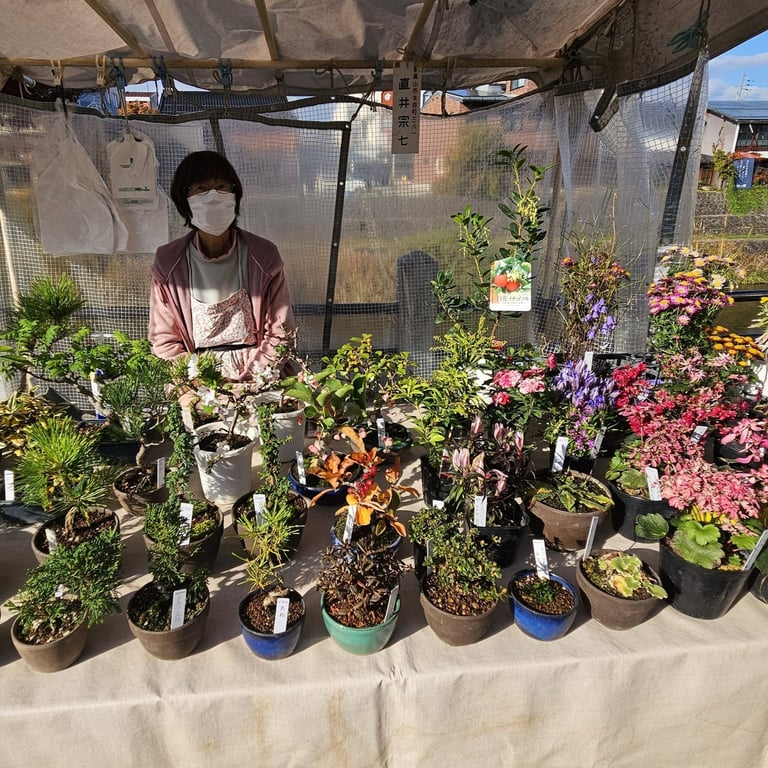
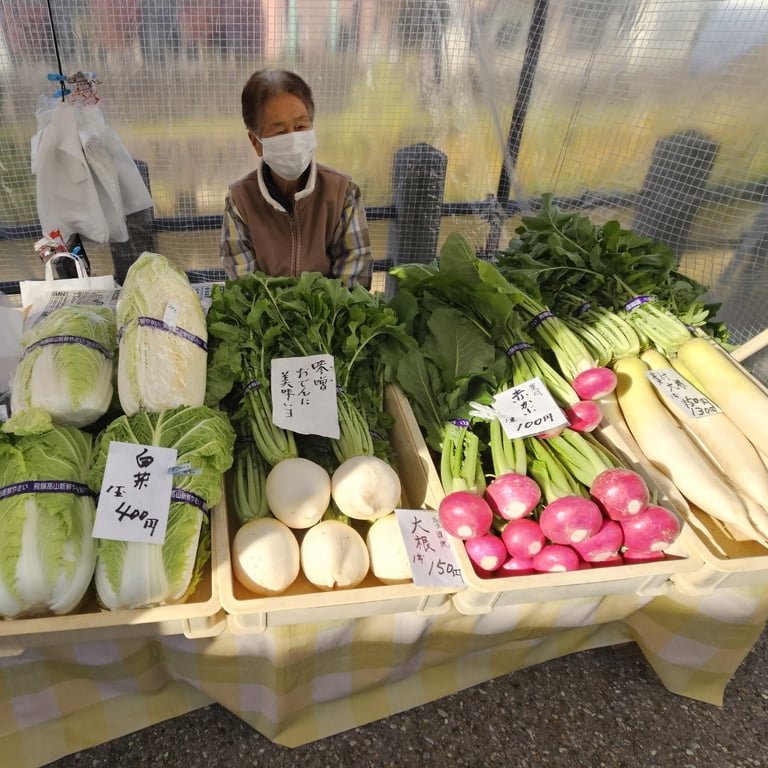
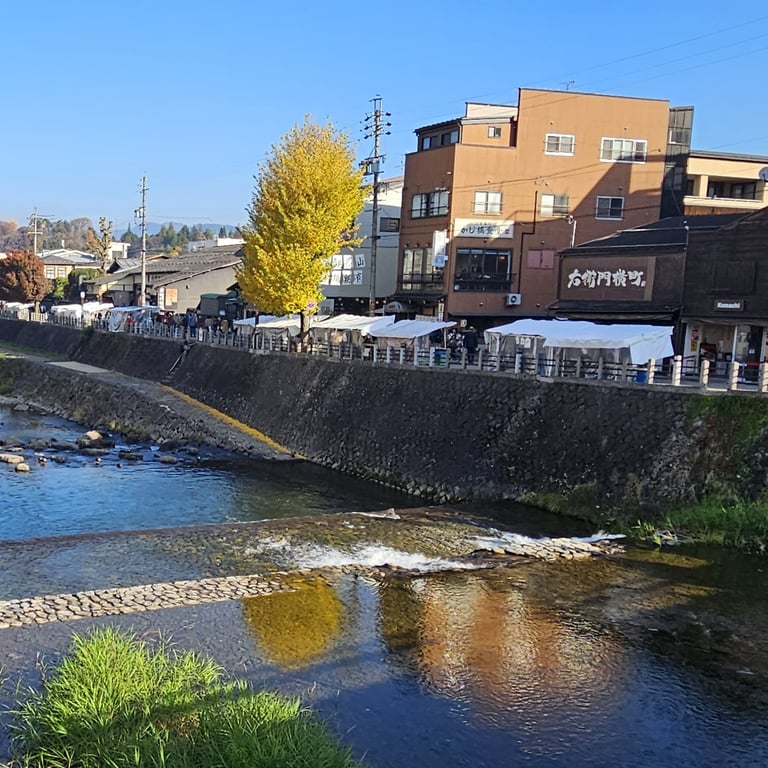
japan and bicycles
The Bike-o-Sphere
The first time I went to Japan with my bike I was a bit taken aback that you are not allowed to take a bike on a train unless it is in a bag. Living there brings understanding. The basic MO of getting to work is riding your bike to the train station and leaving it in one of the many bike-parks. It all makes sense. Imagine if all those commuters took a bicycle onto a crowded train carriage! Even if you leave your bike up against a wall somewhere you will be looking for it later at the local police compound, so regulated is the bike-o-sphere. Soon you will be keeping spare items of clothing at work, ready for when you arrive soaked with sweat or rain or half frozen. All part of the fun. A trip to the supermarket is taken care of with baskets fore and aft. What about the kids on the school run? Sorted - take a look at those mom-bikes!


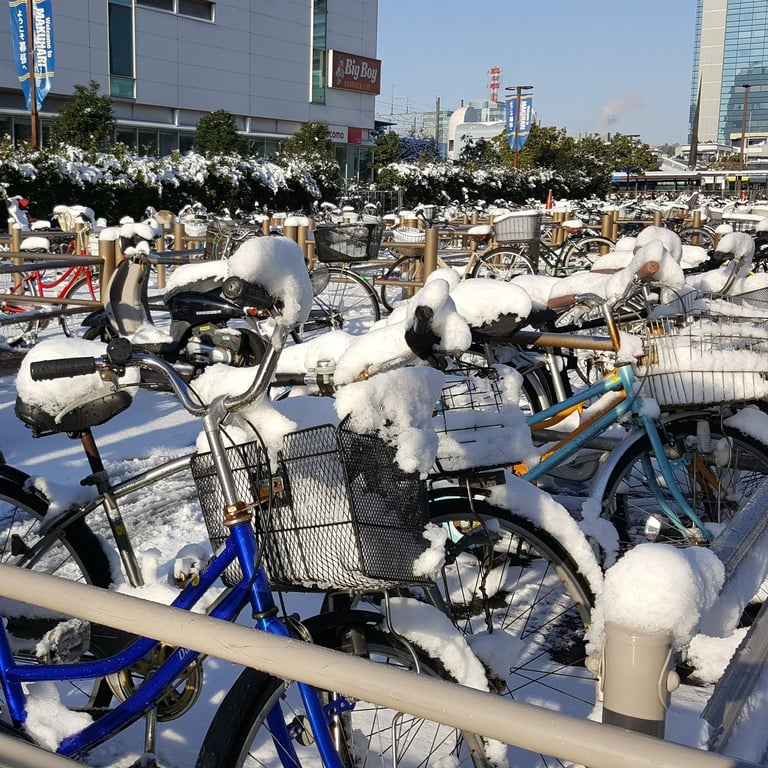


nikko, tochigi prefecture
World Heritage Site
One hundred and fifty kilometres north-west of Tokyo, Nikko became an important destination for pilgrims during the Edo period (1603-1867). The town has a long history, the antiquities dating from 766 when the Rinno-ji Temple was completed. Nikko was established as a World Heritage Site in 1999 when 103 structures were nominated in the application. You can catch up with the original Three Wise Monkeys there: 'See no evil, hear no evil, speak no evil', are to be found at the Toshogu Shrine. Their names are: Mizaru, Kikazaru, and Iwazaru,
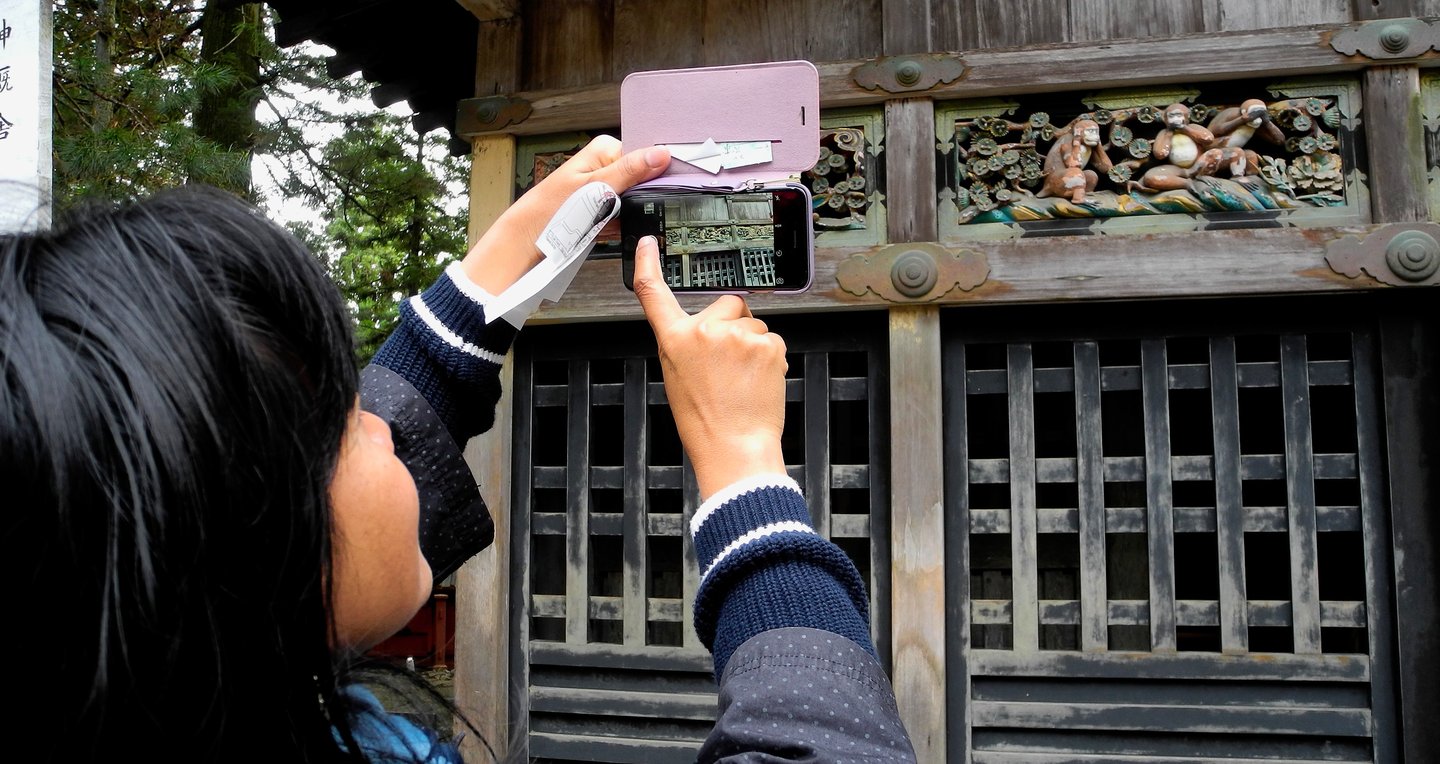

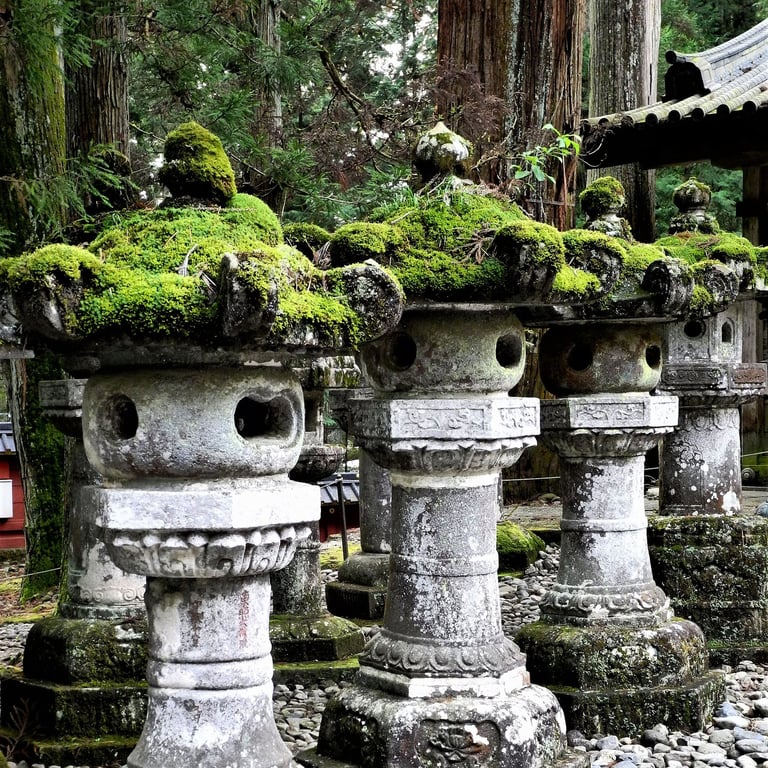
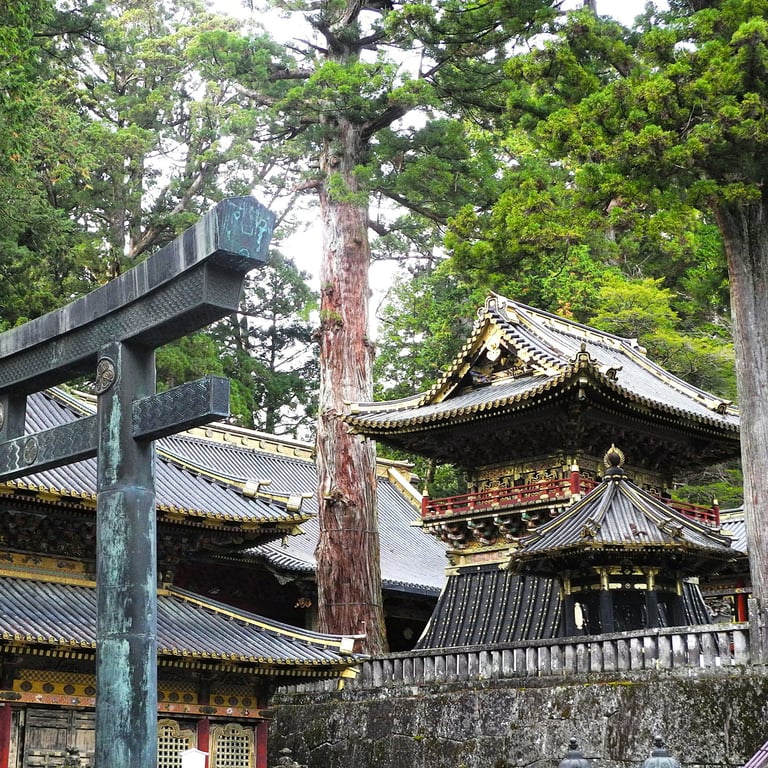
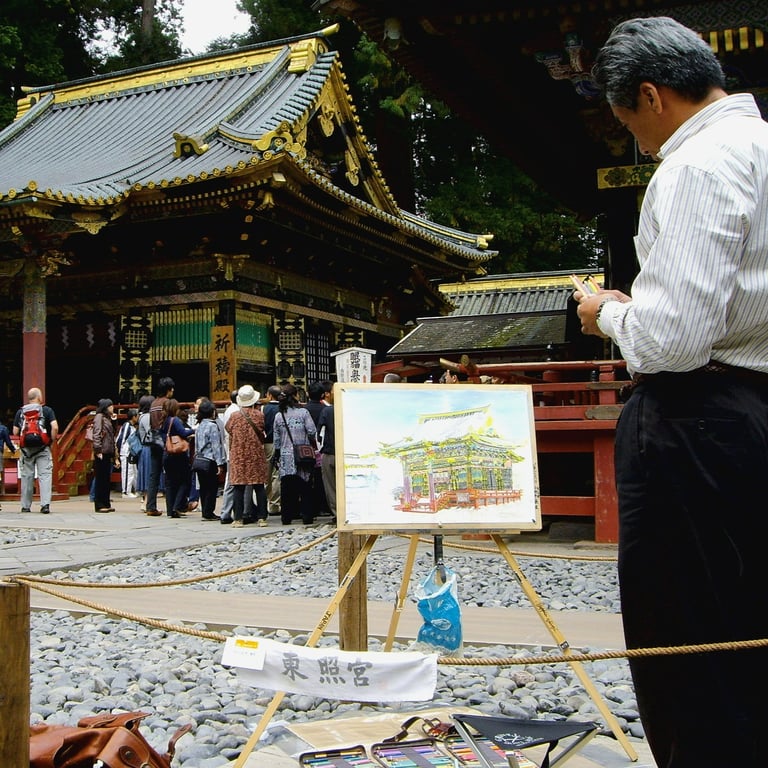
Higashi-Chaya district, Kanazawa
High-end browsing alert
This area of wooden teahouses or ‘chaya’ has been beautifully preserved. It dates from the 1820s and was a renowned Geisha area - in fact, it still is! During the daytime the streets welcome tourists who can peruse the many upmarket craft wares in the small shops. All kinds of stylish high-end lacquerware, jewelry, gold-leaf and health creations invite you to step inside. Not to mention to the sweet-smelling doorways leading you in to purchase a scented oil diffuser to take home with you to banish those workaday odours!
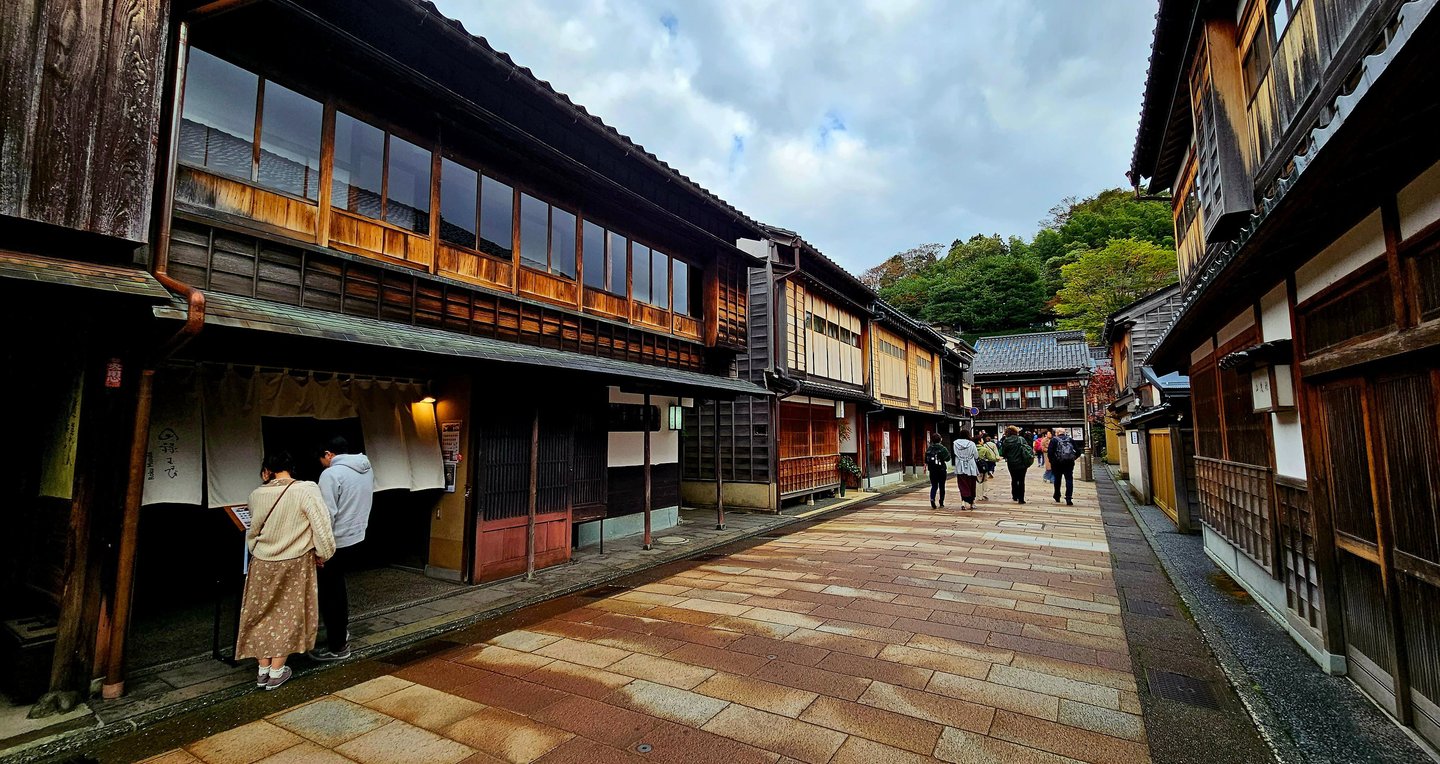

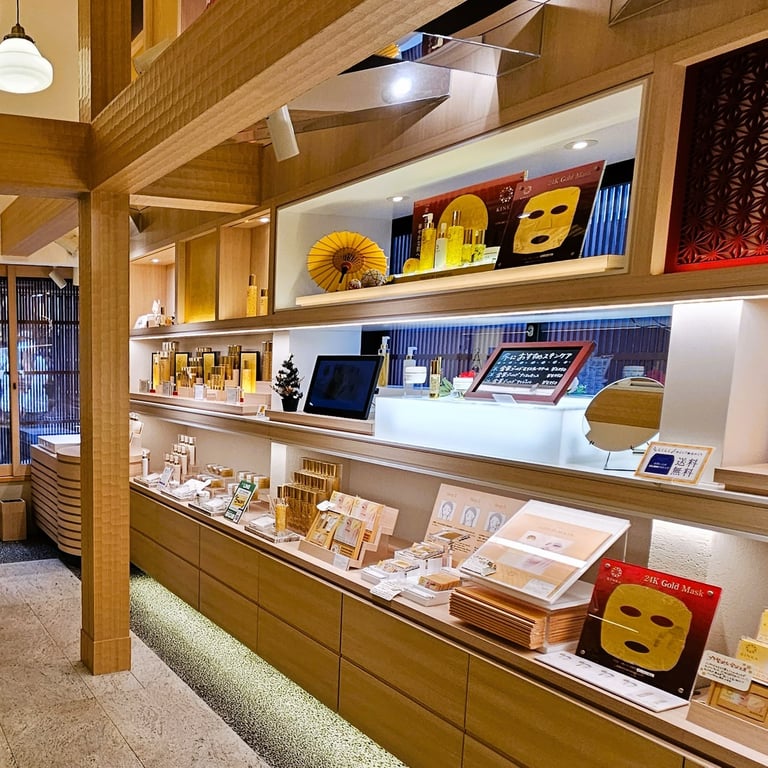
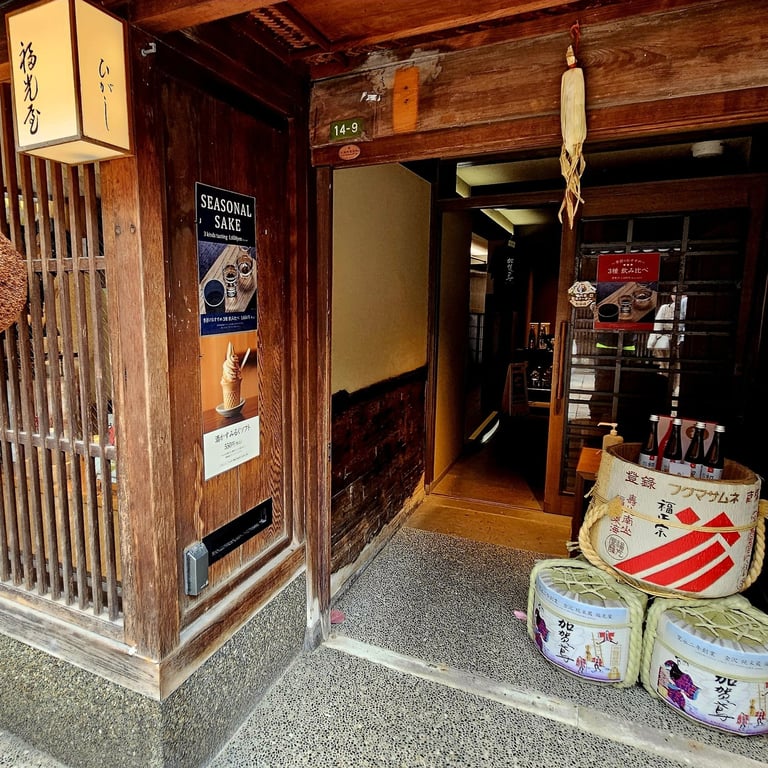
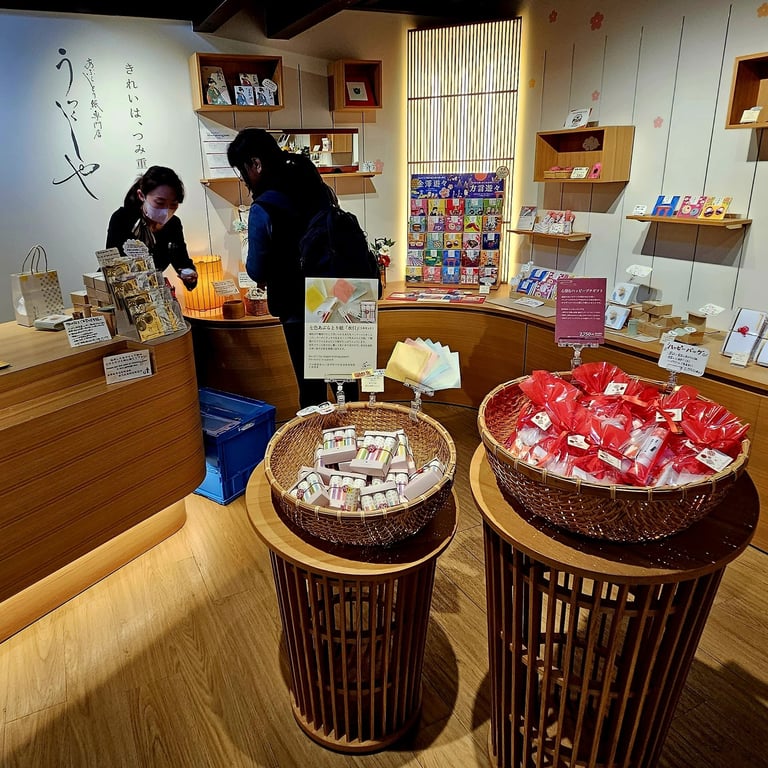
asahi-dake, hokkaido
Out and about
The great thing about ropeways in Japan is that they give you majestic views over the most dramatic of landscapes and deposit you in places that would otherwise be off-limits. Asahi-dake in the Daisetsuzan Range in central Hokkaido is a case in point. Over 7,500’ high, it was last active in 1739, but the constant hiss and splutter of the fumaroles would have you believe otherwise. Hardy folk abound everywhere in Japan, ready to exit the gondolas and tackle the highland pathways in any season and in all weathers.
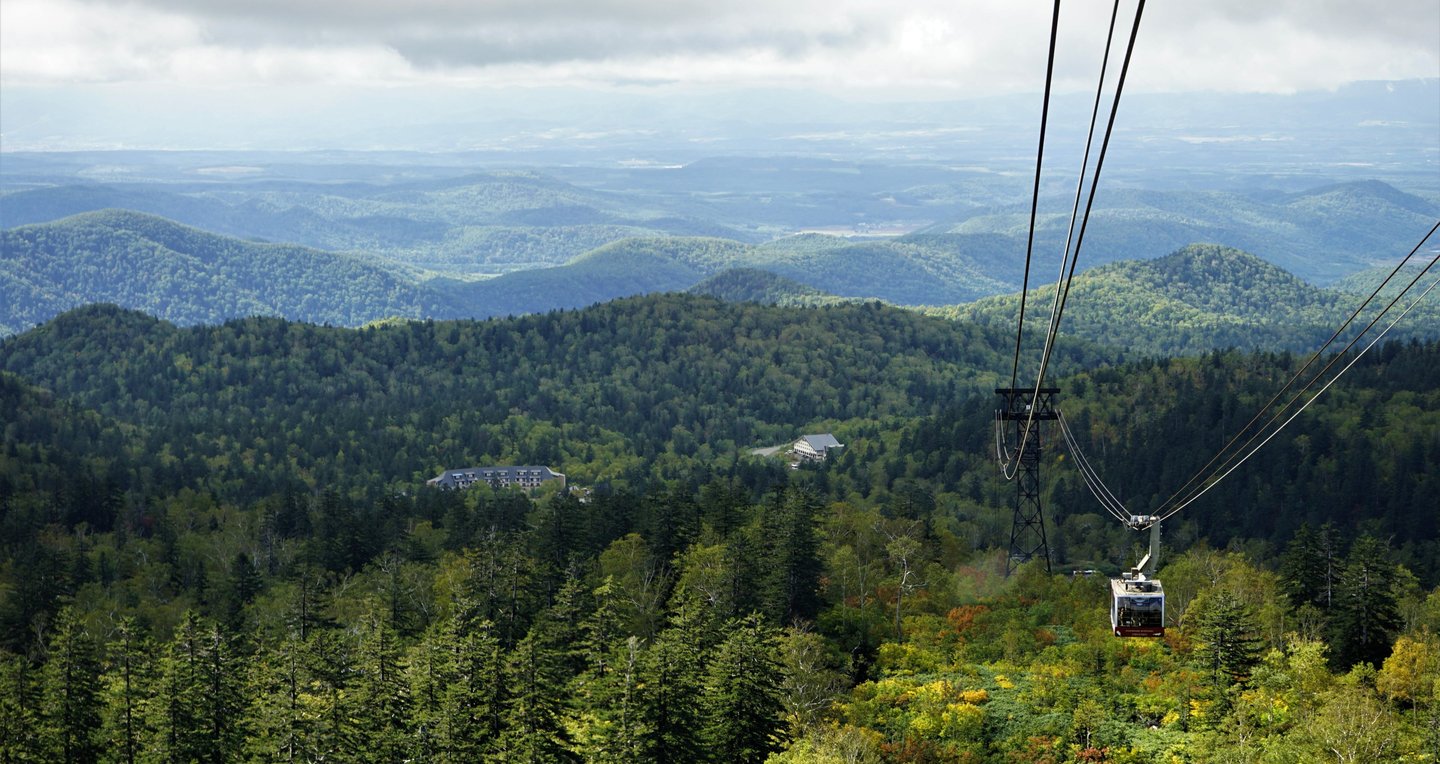

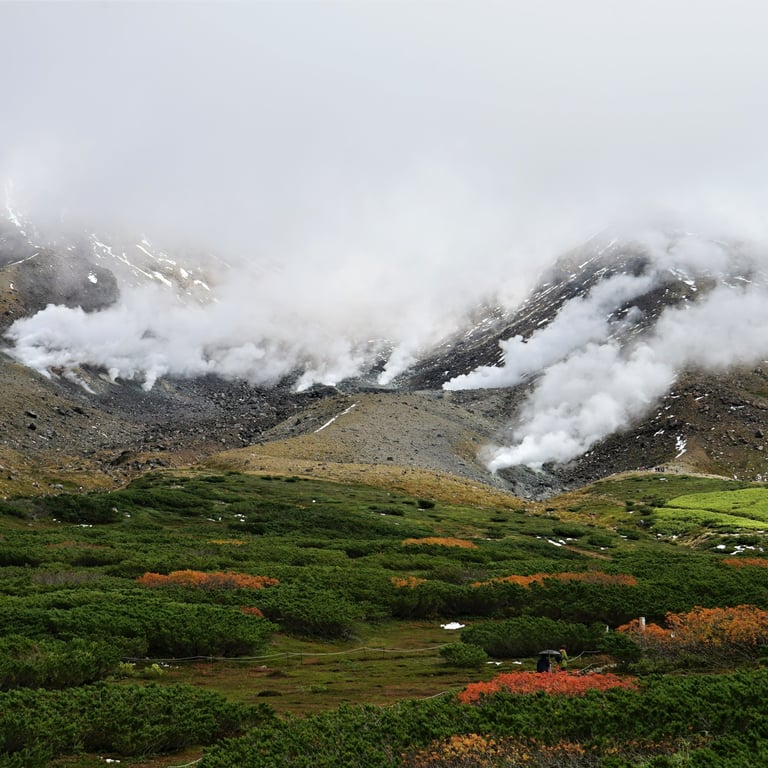
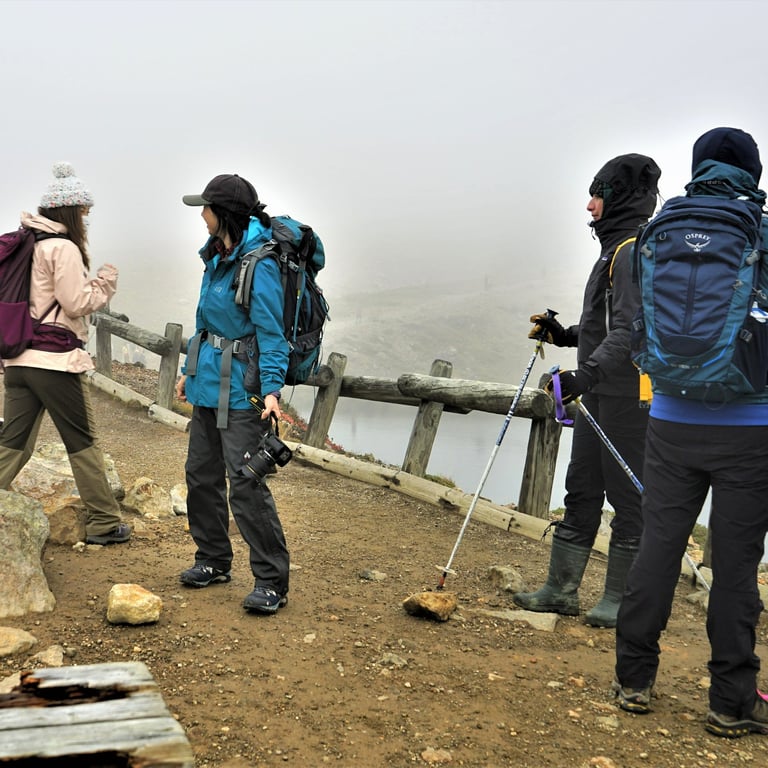
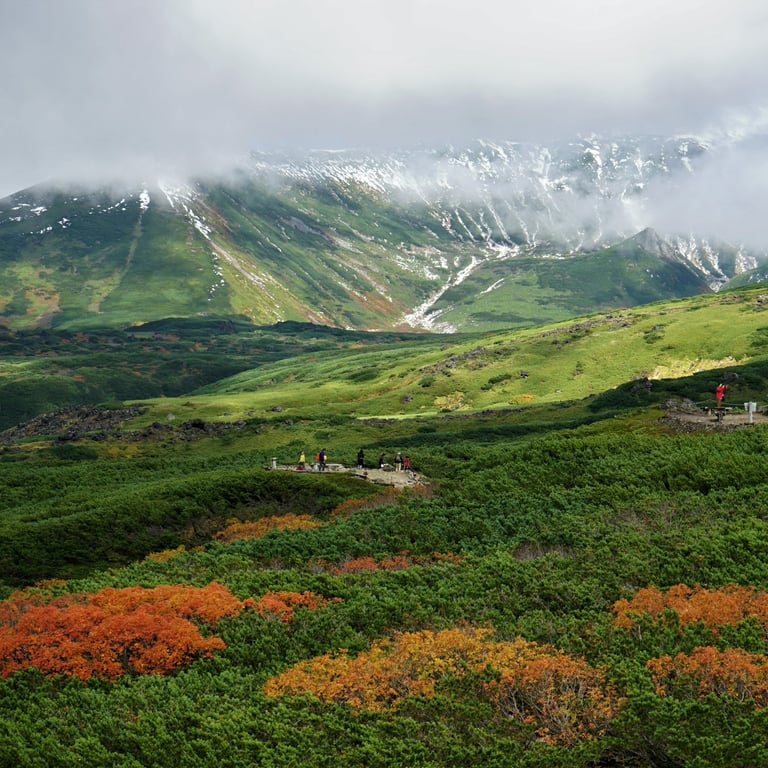
hoon-ji temple, morioka
500 Saints
The temple was built in 1394 and moved to its current location some 200 years later. It is now a Zen training centre for monks as well as a place for ‘sitting meditation’ for the public. The serene temple grounds lead to the Rakando building (statues hall) which houses 500 Rakans – these are Buddhist saints who have attained Nirvana, their effigies stacked in neat rows all around. The statues were made in Kyoto, each sculpted with a different pose and expression. Together, all the statues represent the celestial world – while looking at them you are advised to stay silent as one should in the way of Zen.
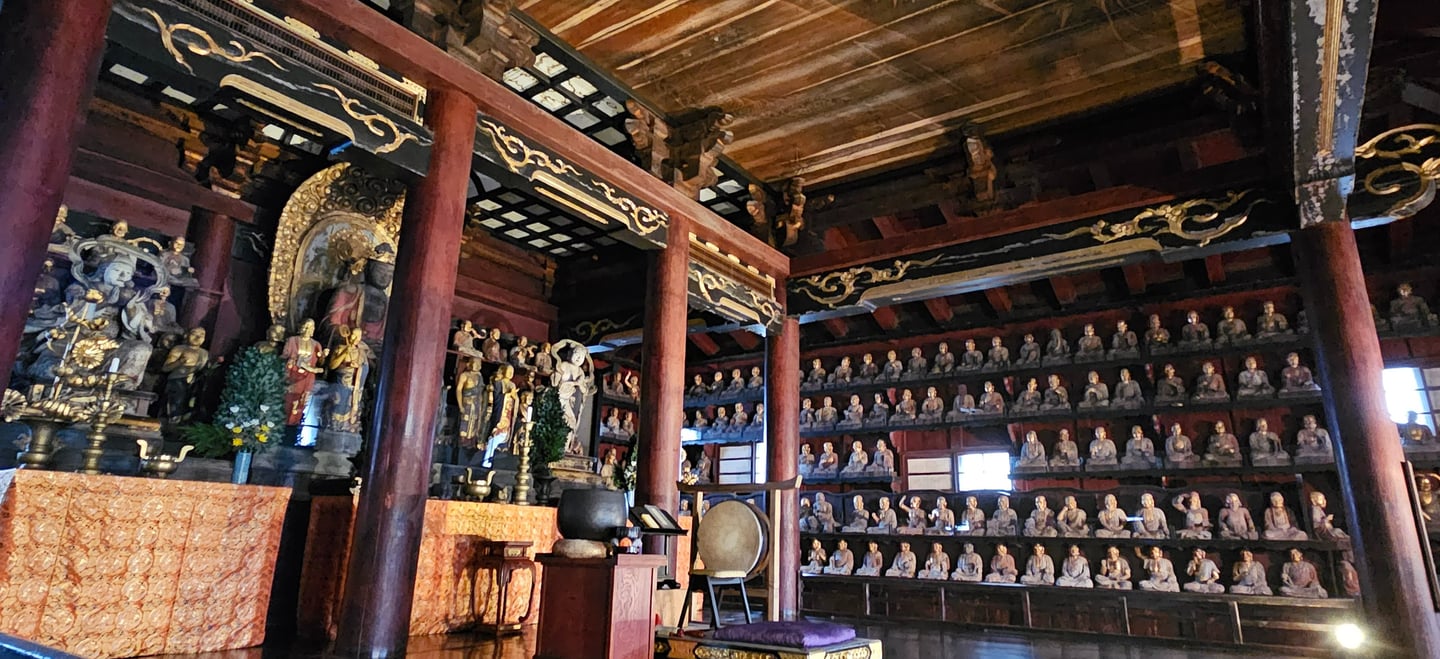

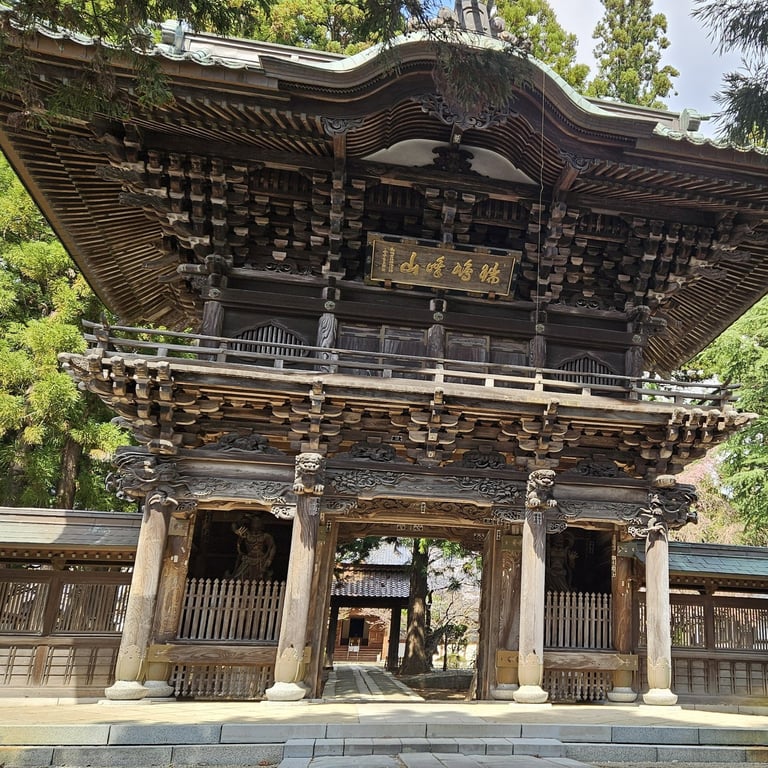
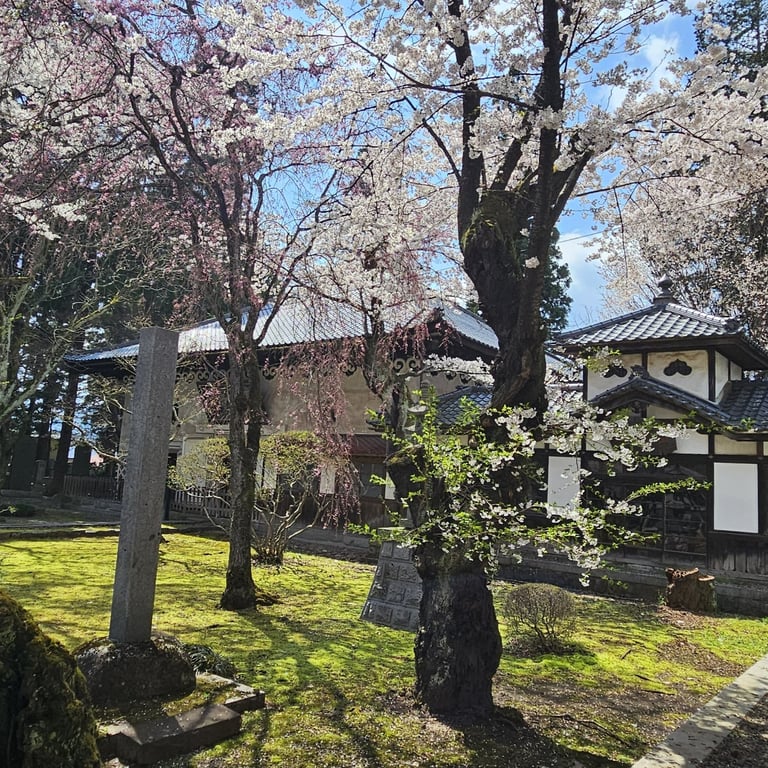
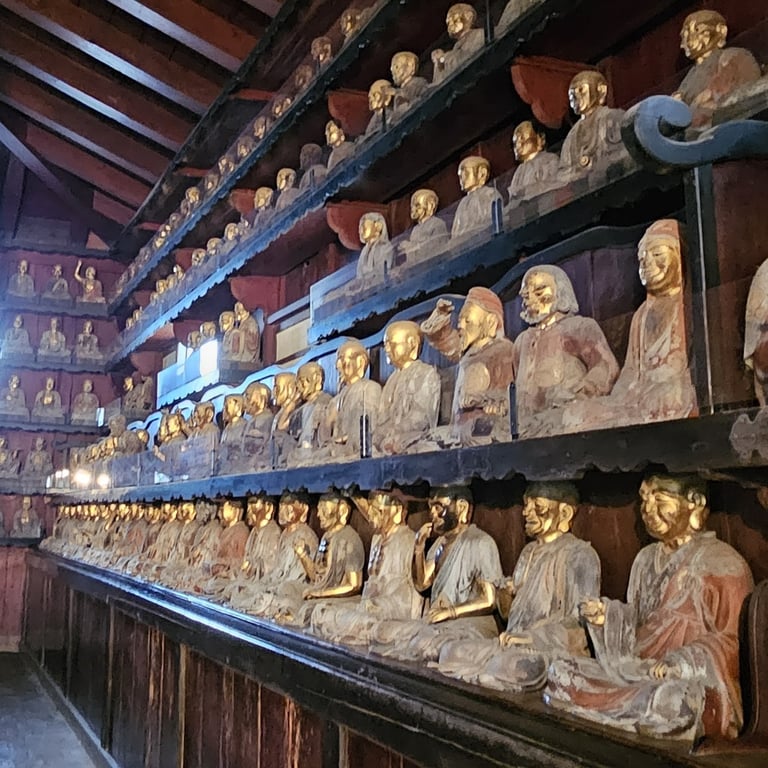
yokohama funfair
All the fun of the fair
Standing in the queue for the ferris wheel at Yokohama’s funfair, one is made aware of the adjacent roller-coaster as it thunders by, the screams being carried away on the wind. As it whizzes round some tight bend or careens down some precipitous drop, you can sense how vulnerable the whole thing is. Only slightly comforting is the sight of the walkway next to the track, probably just for maintenance, but you never know, for an emergency as well. The ferris wheel is one of those old ones that stop to load up the carriages every thirty seconds. This leaves you suspended high up and making only staccato upwards moves. Very high up. I found the process all rather disconcerting, Will pass on that next time.
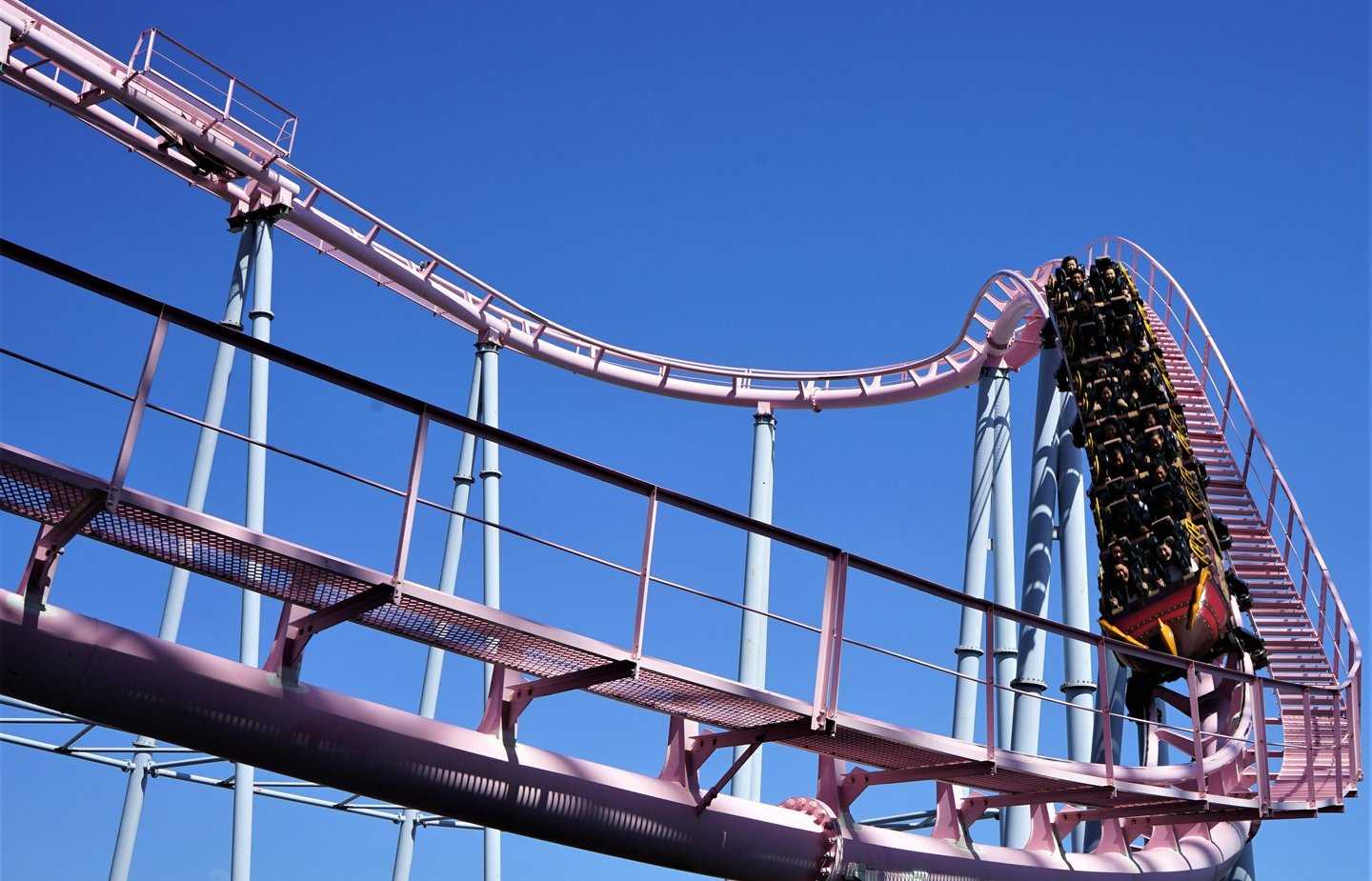

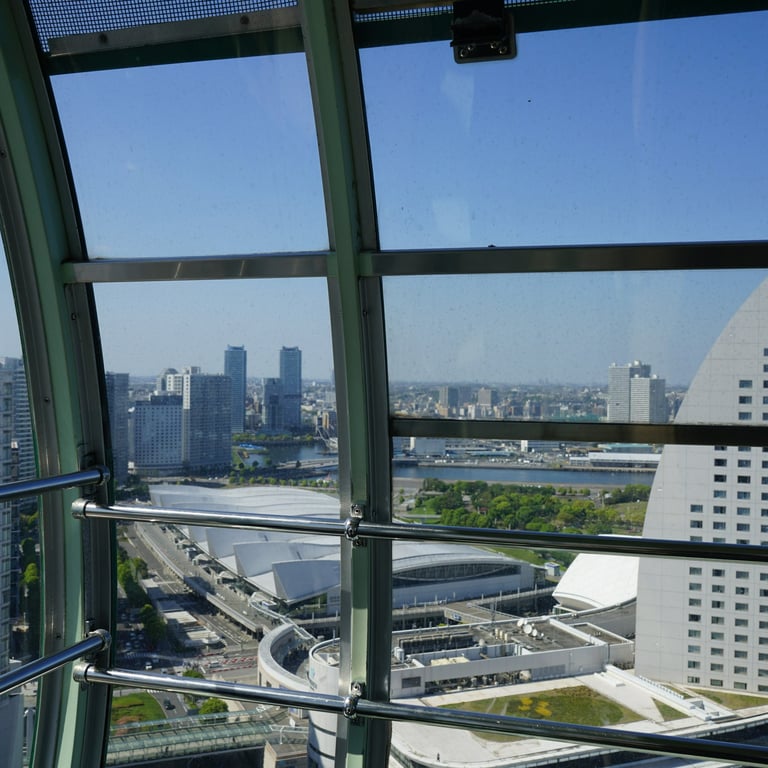
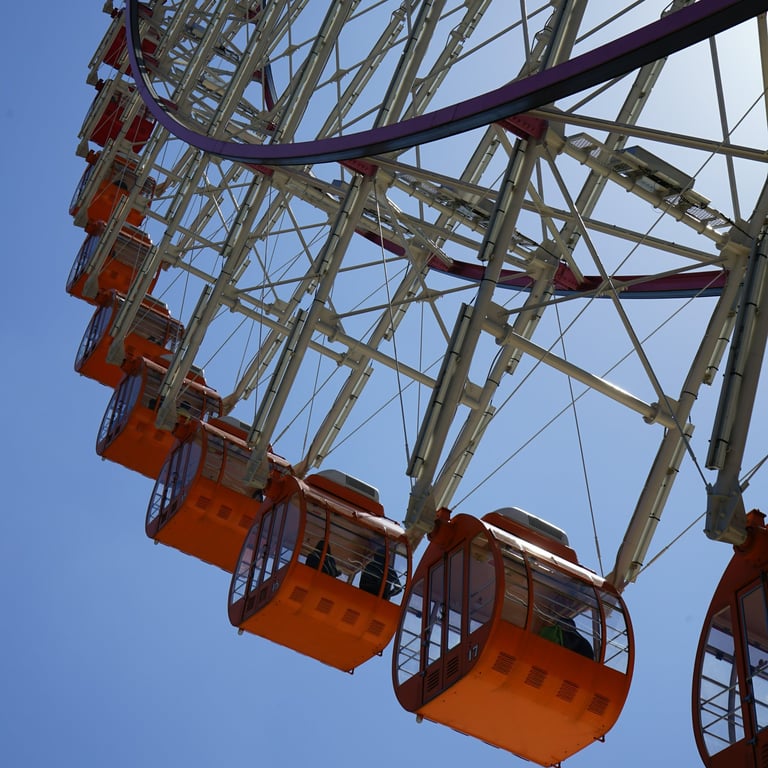
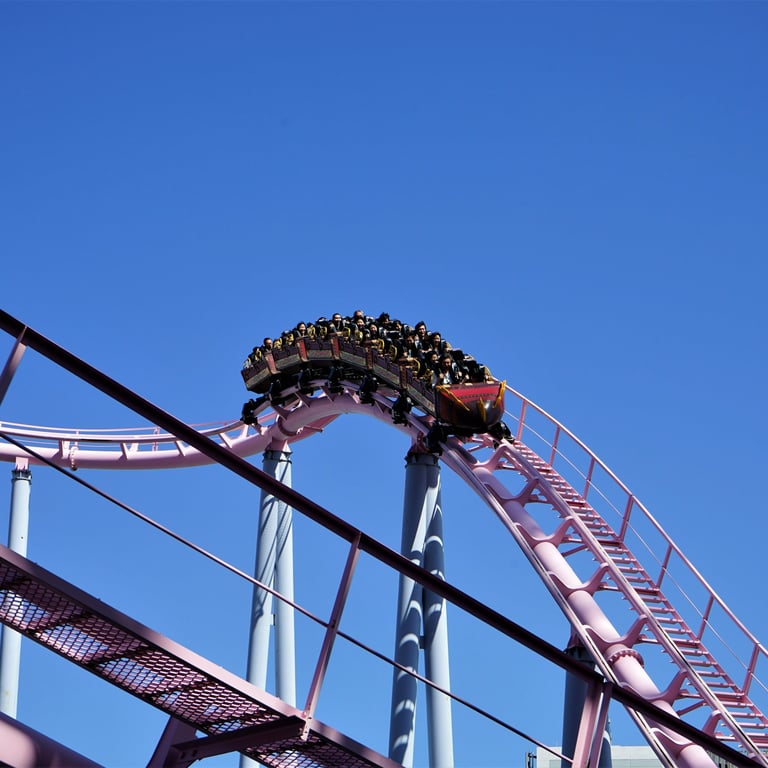
osaka castle
Storied history
The castle which was constructed in 1583 is one of those iconic buildings in Japan with a history to match. The main keep is surrounded by sheer granite walls which disappear into the inner moat. There is also a ring of outer moats. Its early history featured a tumultuous set of pitched battles and sieges with armies of 200,000 or so, as it changed hands several times. There were periods of neglect and even WWII bombing before the restoration in 1997, with the keep being a concrete replica of the Edo-era original. Wandering round and looking at the ramparts you do get a strong sense of a seemingly impregnable fortification belonging to a seat of absolute power; one which allcomers clearly thought was worth fighting for.
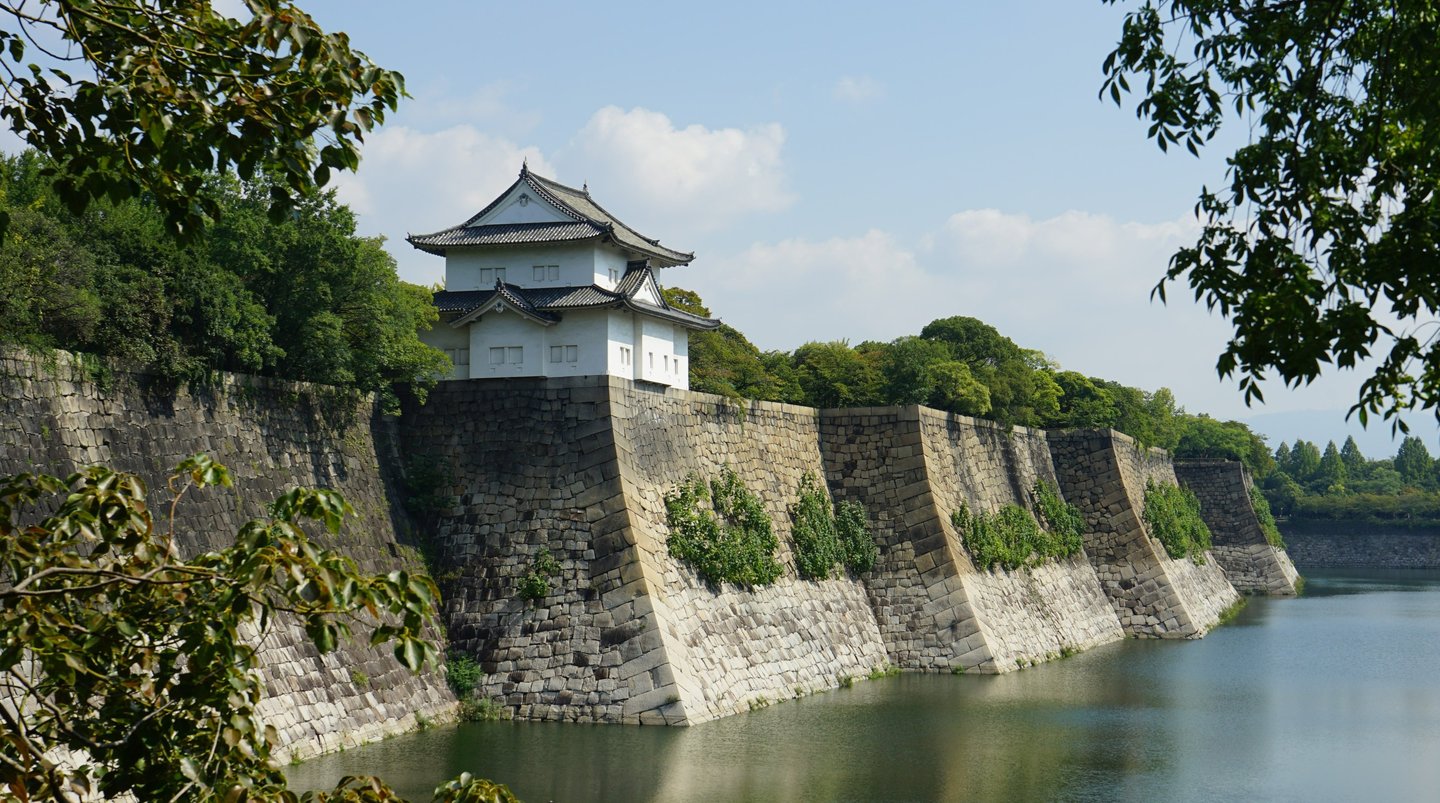

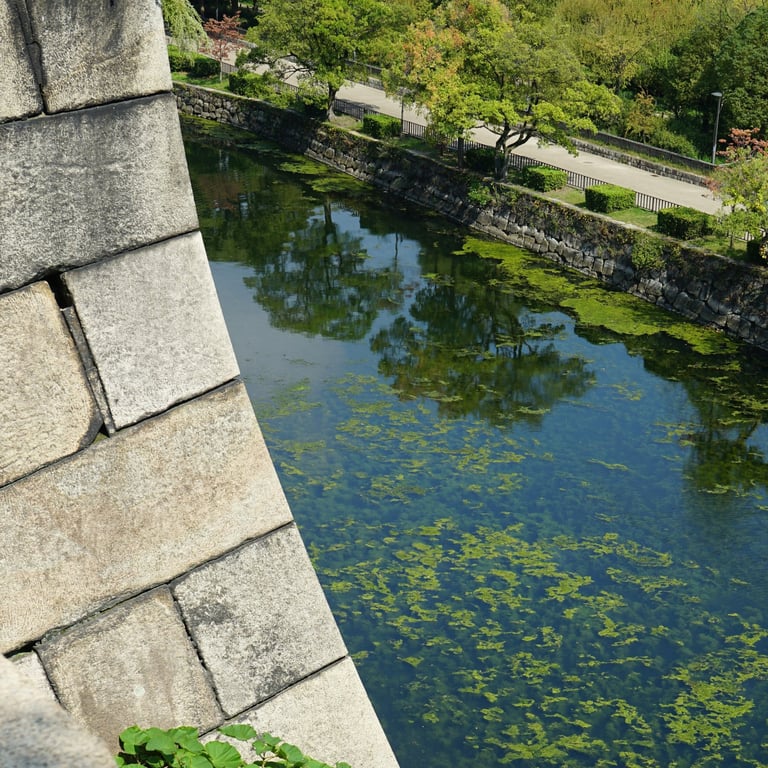
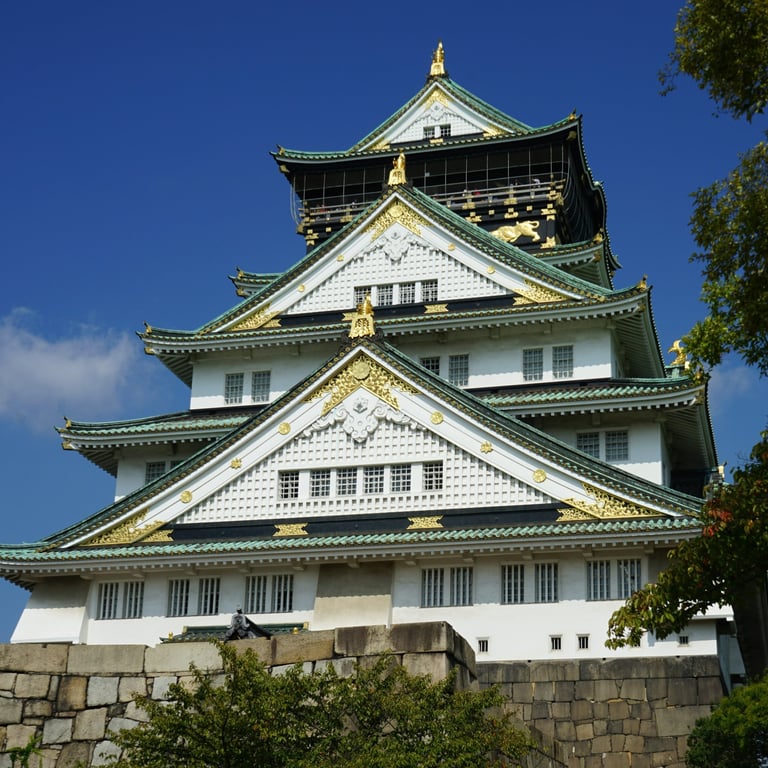
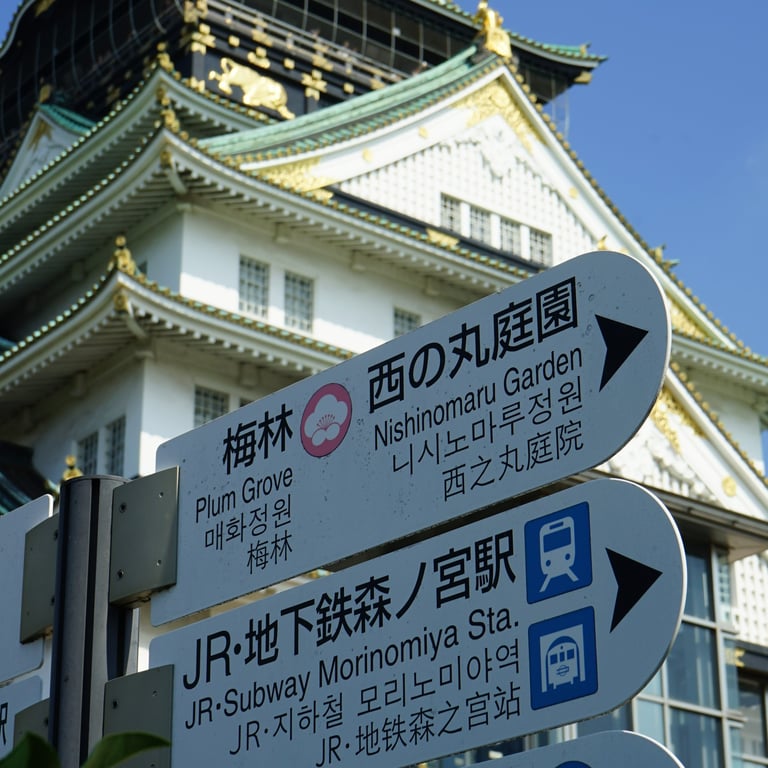
zenko-ji Temple, Nagano
Worth the queue
For atmosphere you can’t beat the buzz of a weekend crowd as it thickens approaching your intended destination. In this case, Zenko-ji Temple which dates from the seventh century and was the focus around which the original town grew. If it is a particularly famous shrine or temple, folks will have come from far and wide, having marked it in their diary weeks ago. The plus is that all the shops are open, and everybody is well turned out for the highlight of the month. The downside is that you may have to queue for that special prayer or blessing. Still, there’s an ice cream to look forward to, or the food speciality of the town whose aroma has been wafting across your path all morning – here it's Nagano, famous for its oyaki dumplings.
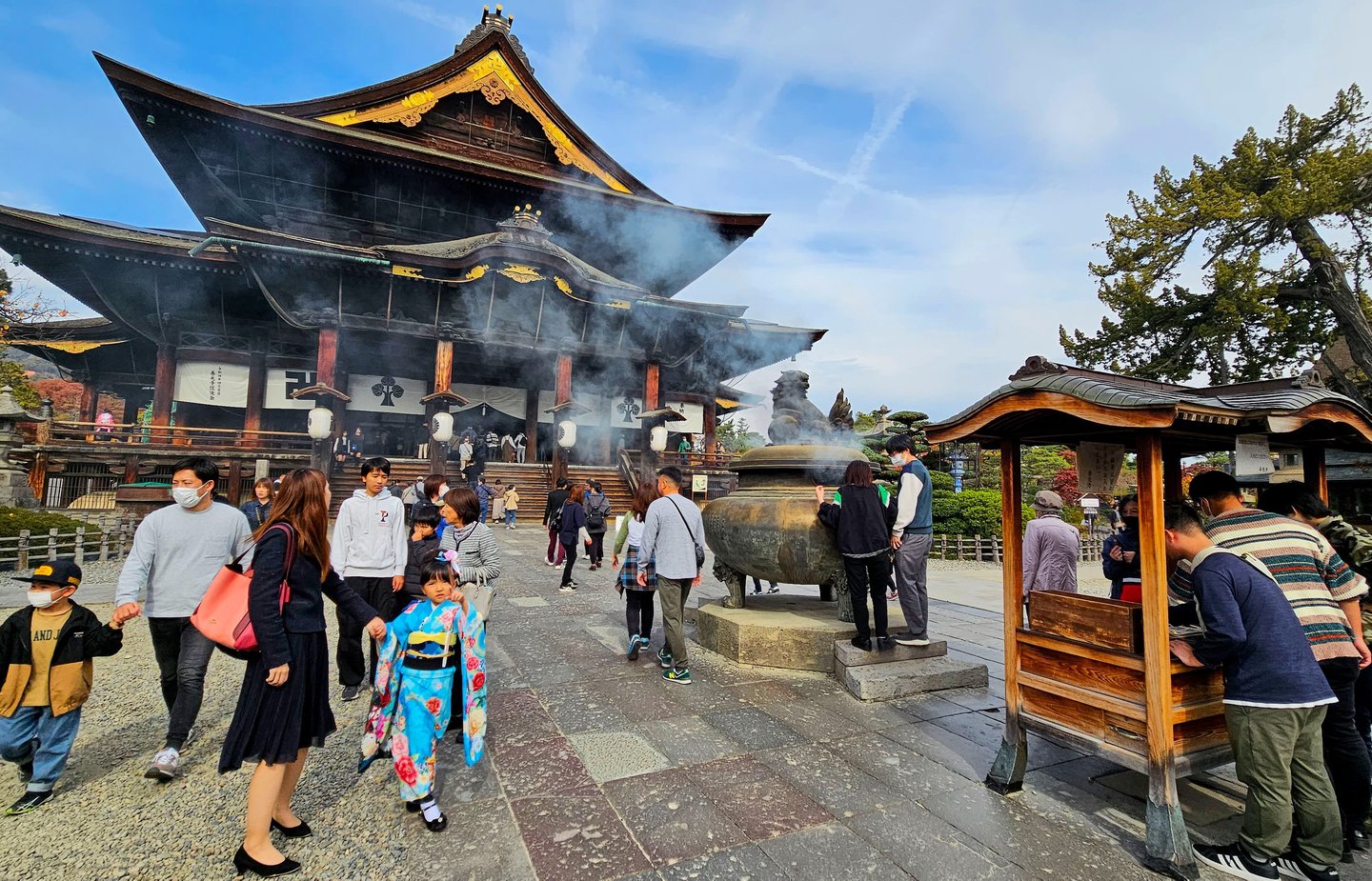

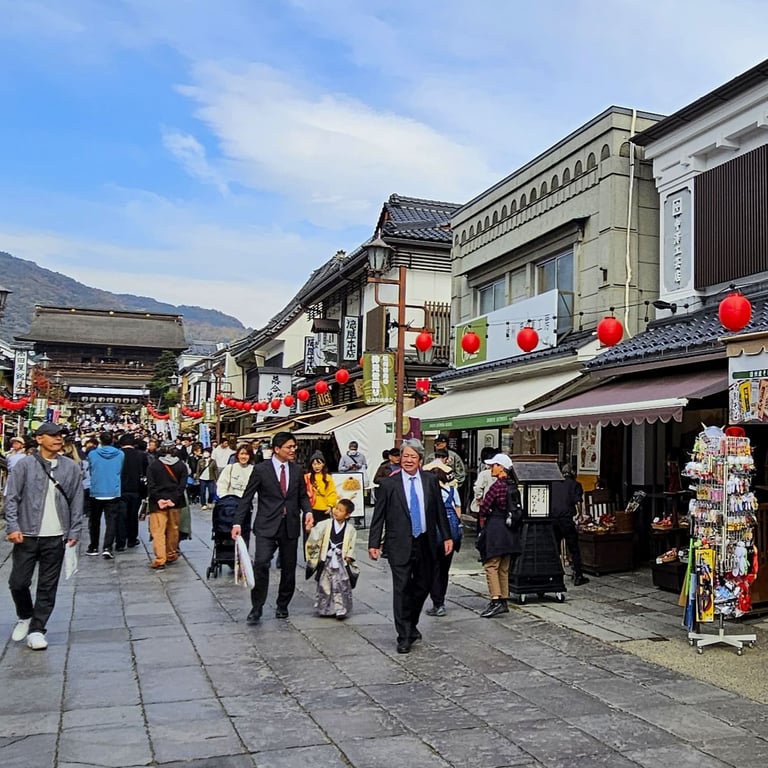
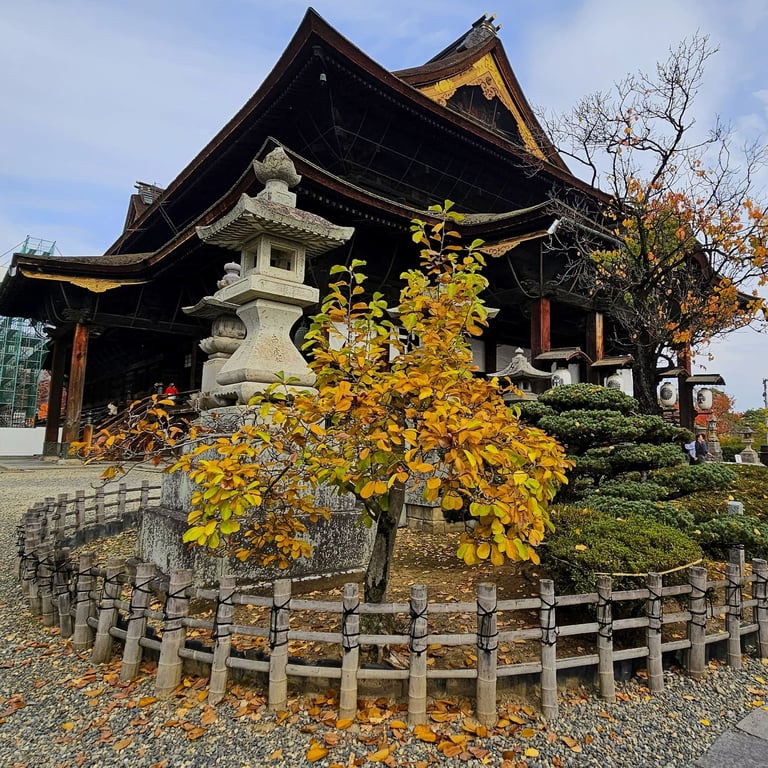
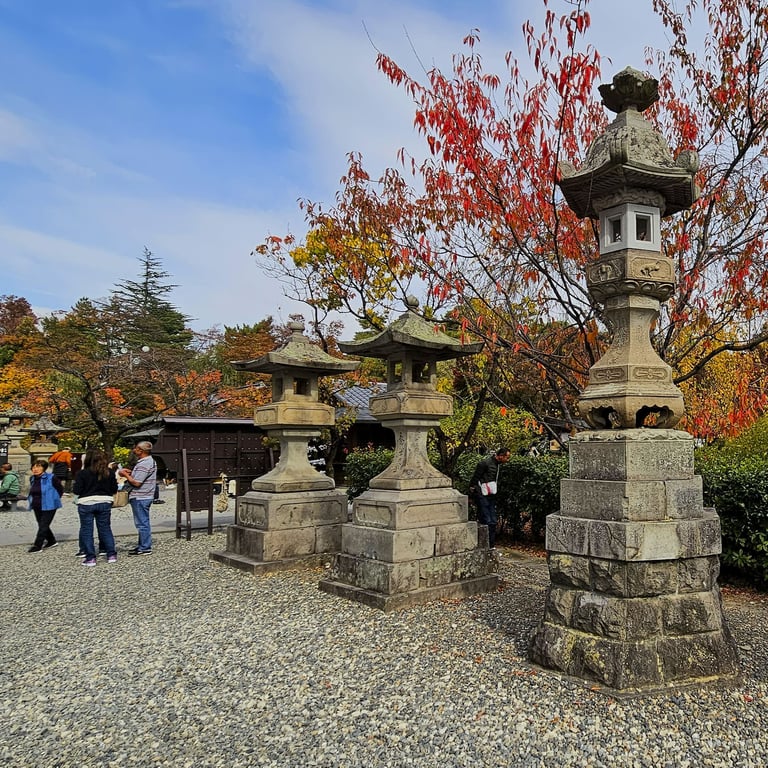
Mount Fuji
Fuji Five Lakes
The perfect symmetry of Fuji-san draws your gaze whenever you spot it. Speeding by on the bullet train, flying overhead as you come in to land at Haneda, spying it across the bay, or simply exiting Kawaguchiko Station for the Five Lakes. It is mesmerising, just one of those places in the world where you stand and gawp and quietly appreciate your absolute good fortune for just being there. There are many vantage points - you can visit via Hakone or take a bus round the lakes. This trip was a cold day-out from Shinjuku Bus Station, then the circular hop-on, hop-off bus round the lakes. Fancy waking up and being able to say, ‘What shall we do today – this being a Sunday and all?’ And ending up staring at Fuji-san.
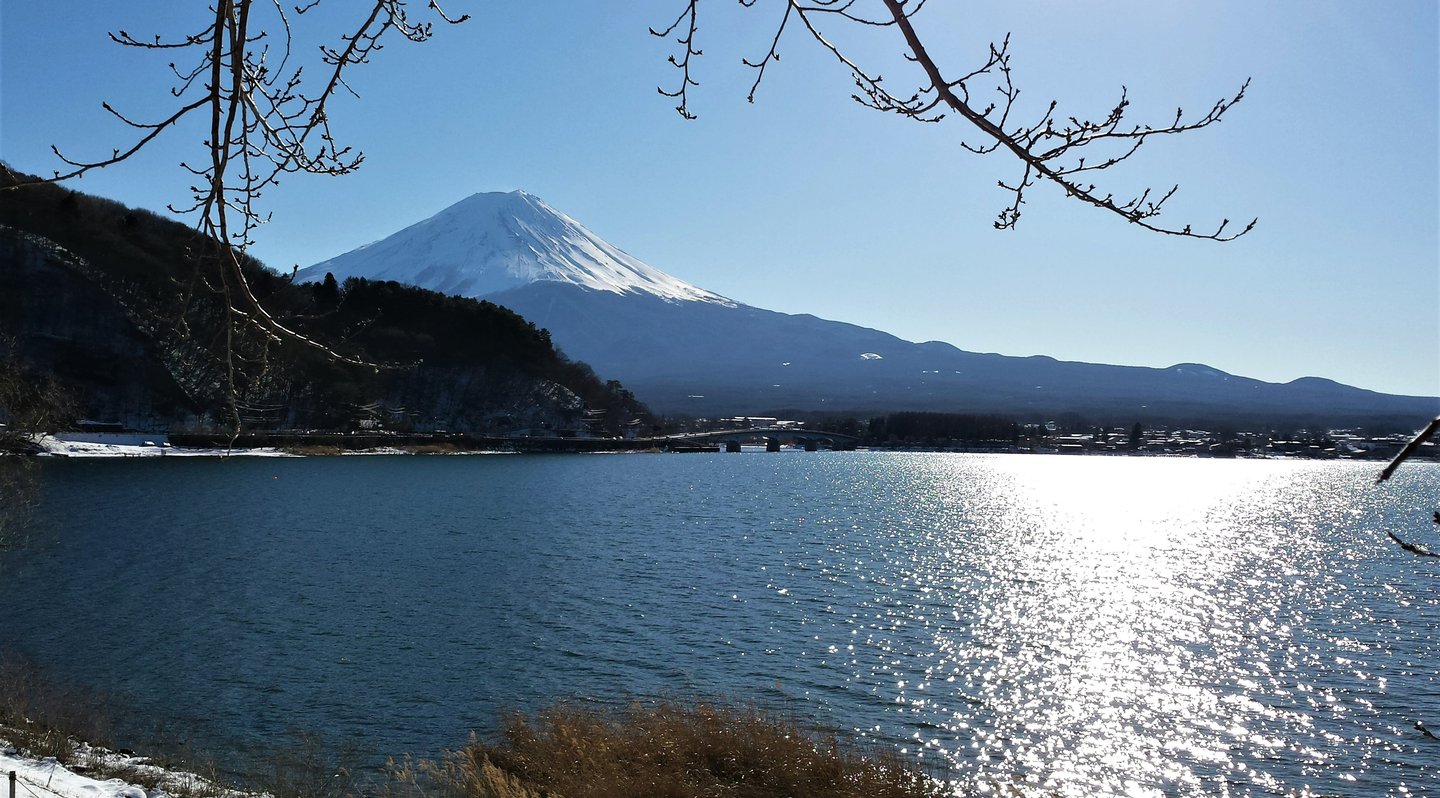

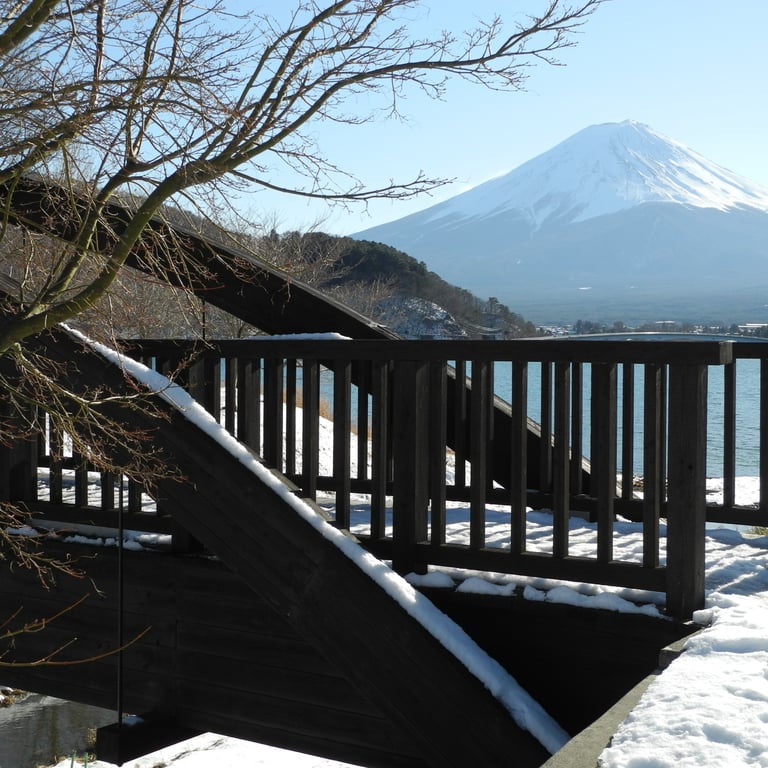
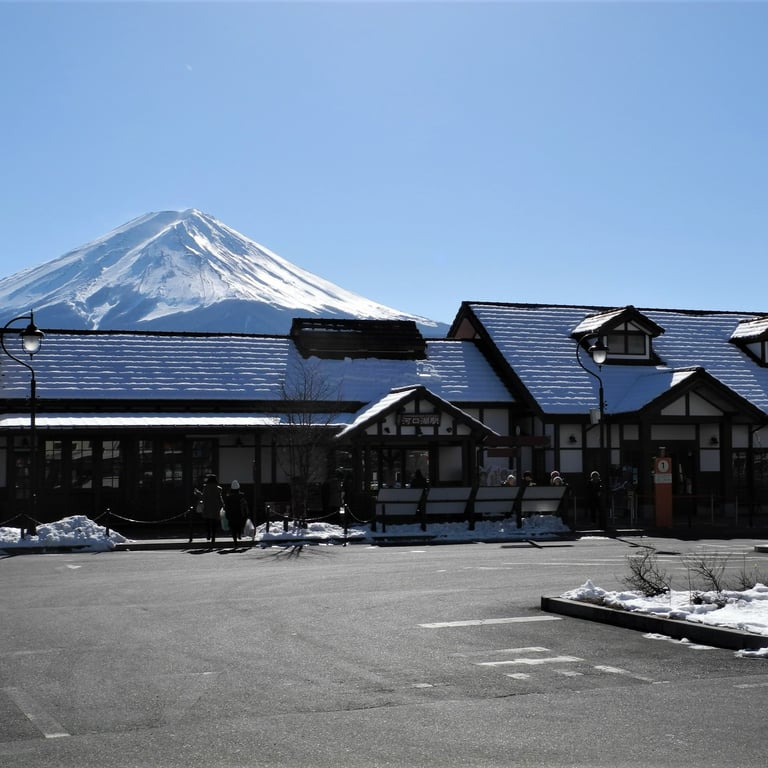
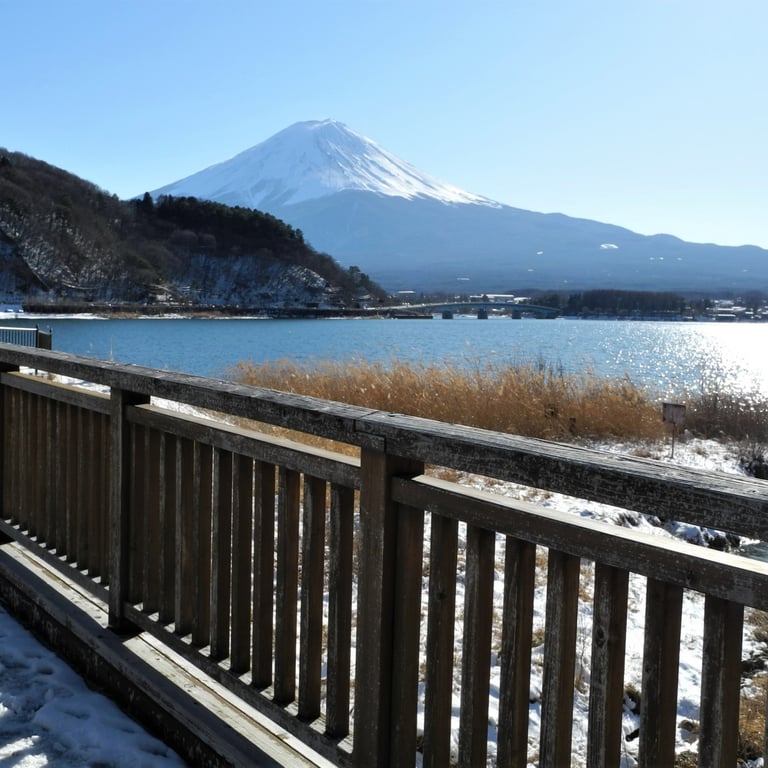
Morioka, iwate prefecture
Could live here...
It’s strange the way some towns just feel comfortable the moment you exit the station. Morioka is one of them, all spick and span in the centre, with a nice river walk and a great view of Mt Iwate in the distance. You can use it as a base for trips out to Kakunodate for example, or stick to the local sights of the Rock Splitting Cherry Tree, Morioka Castle (especially for the Sakura), Hoonji Temple or Hachimangu Shrine. As for the town itself, it is the capital of Iwate Prefecture, the castle being the seat of power of various clans over the years. Its vibe is definitely one of, ‘I could live here,’ and how cool is the gallery at the top of the main station which lets you watch Shinkansen trains come and go.
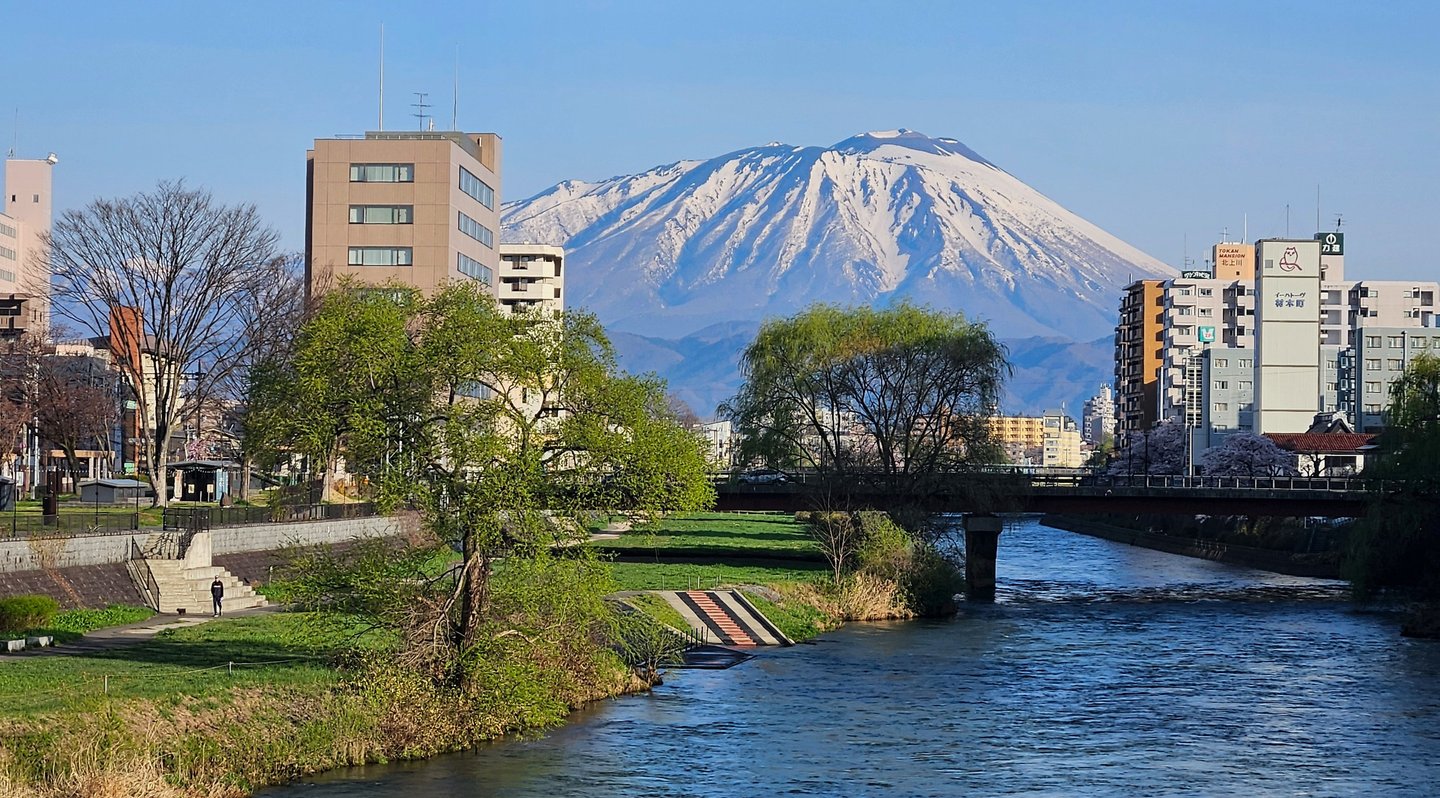

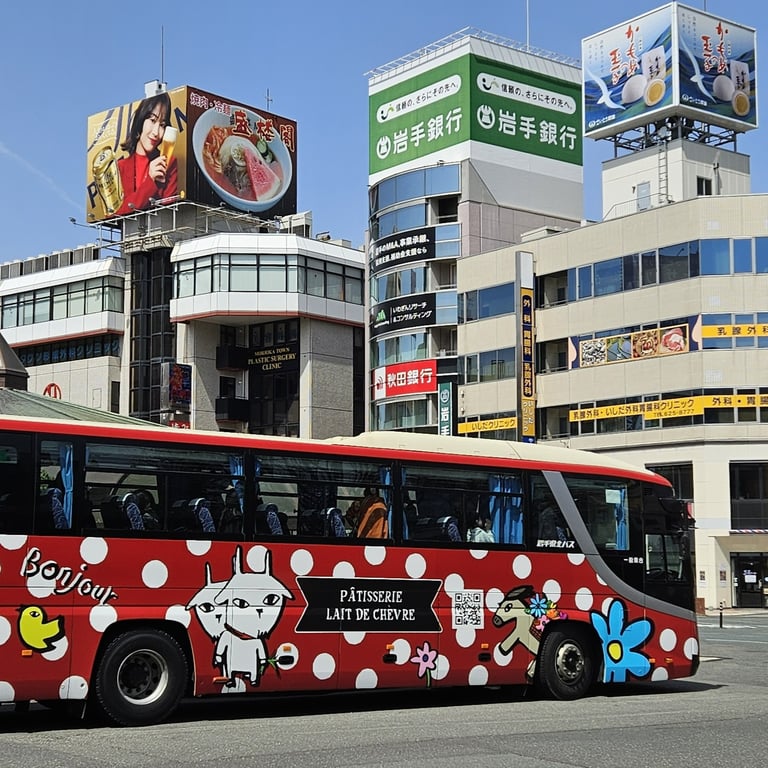
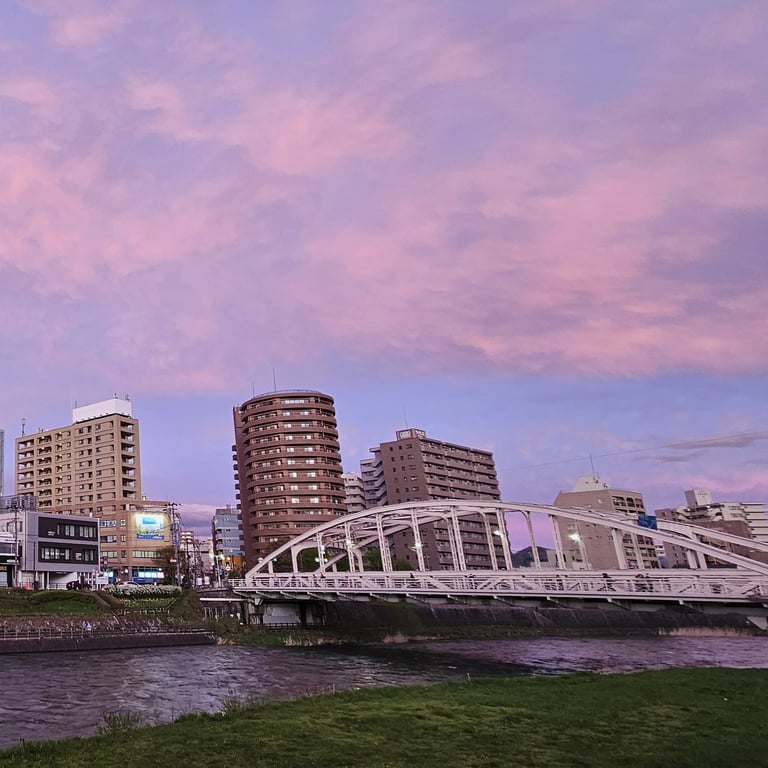
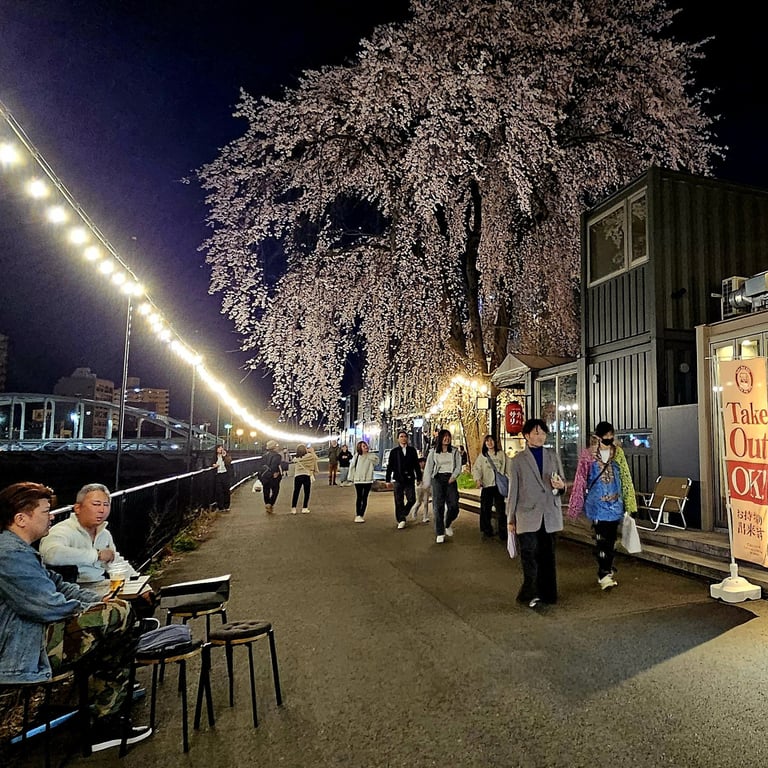
koyasan, wakayama prefecture
Over 200,000 graves
Koyasan, 85 kms south of Osaka, is the name of the mountain as well as the temple settlement that is located there, at 3,000 feet up. It was established as a sacred site in 819 and became the focus for the Shingon Buddhist sect, with the Kongobuji Temple as their world headquarters. There are now 100 temples or more on Koyasan; the Okunoin Cemetery which was opened in 835 is also of world renown. The modern section hosts corporate mausoleums for founders’ family members, such as the Matsushitas of Panasonic, and honoured company employees. The two-kilometre walk among the tall conifers (planting started in the year 1012) in dappled light is very atmospheric as you pass countless headstones and vaults.
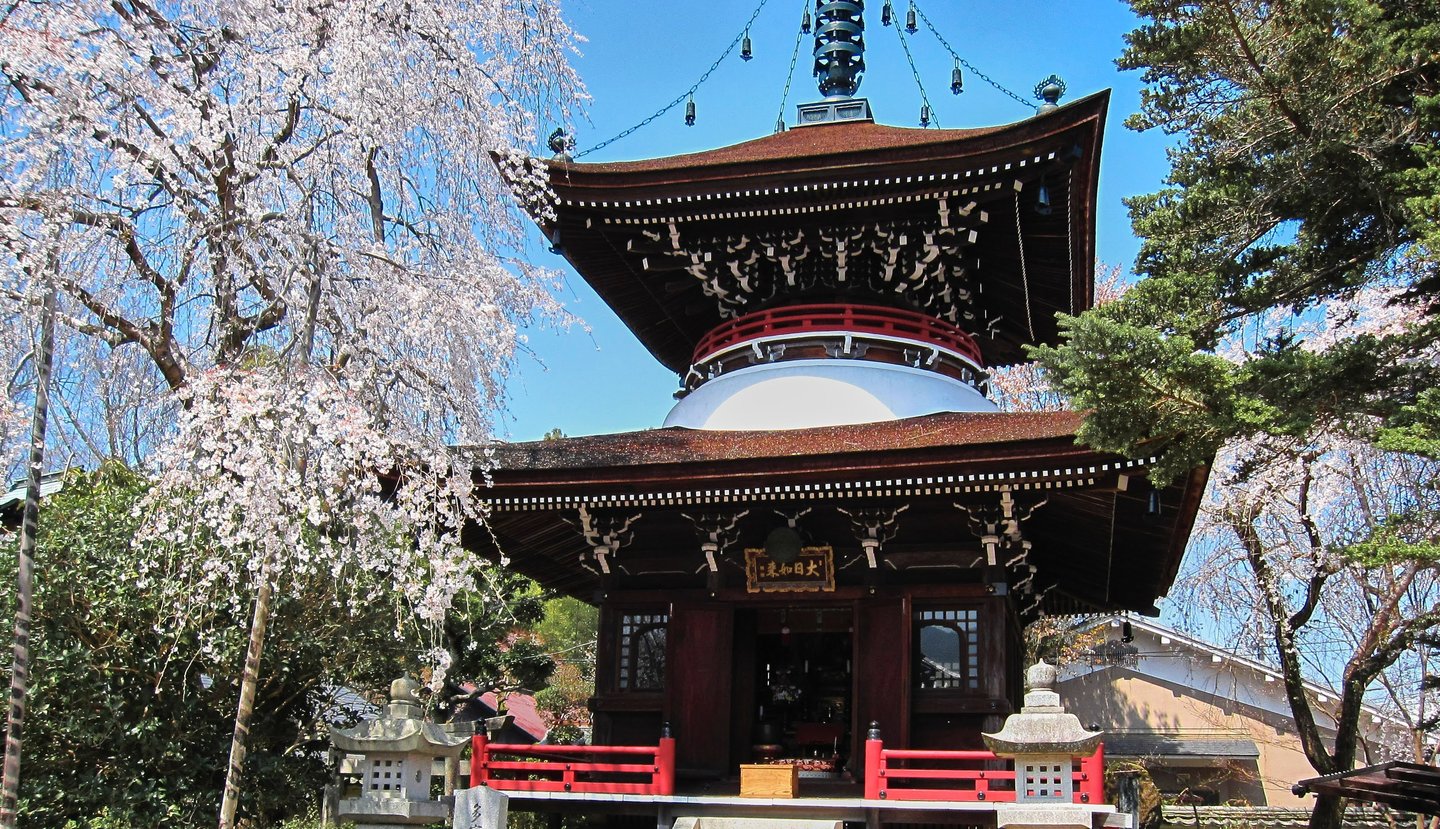

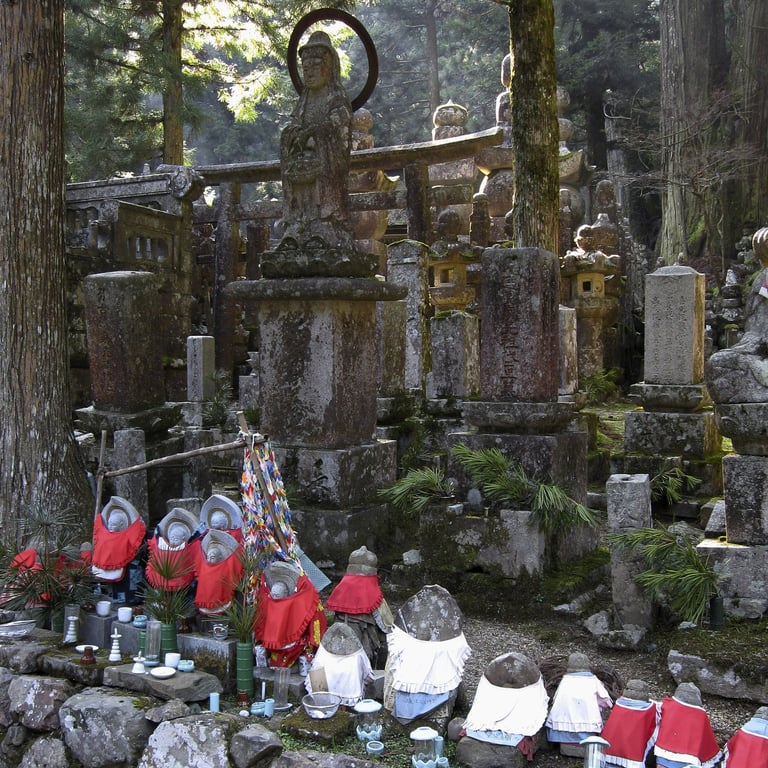
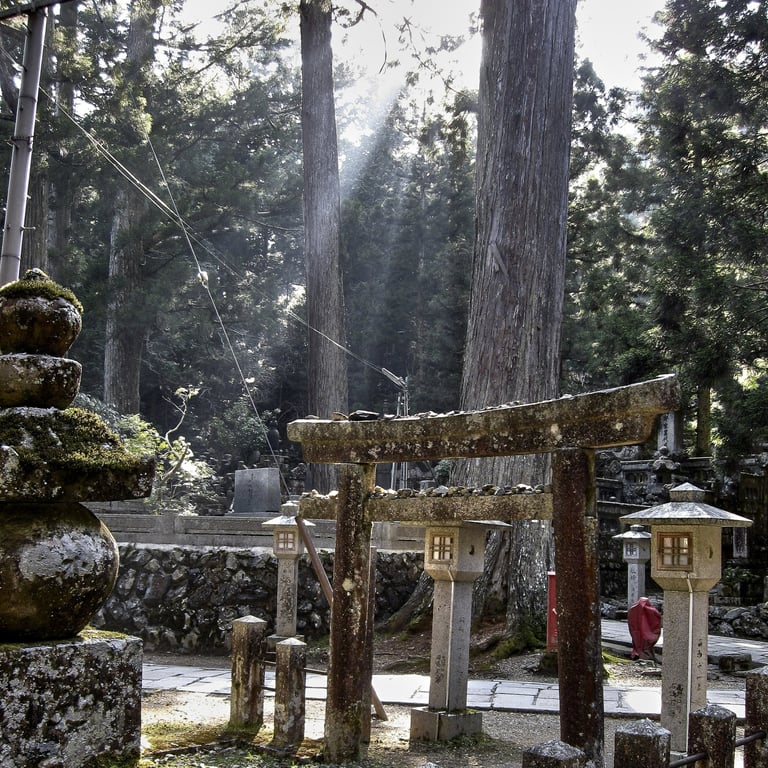
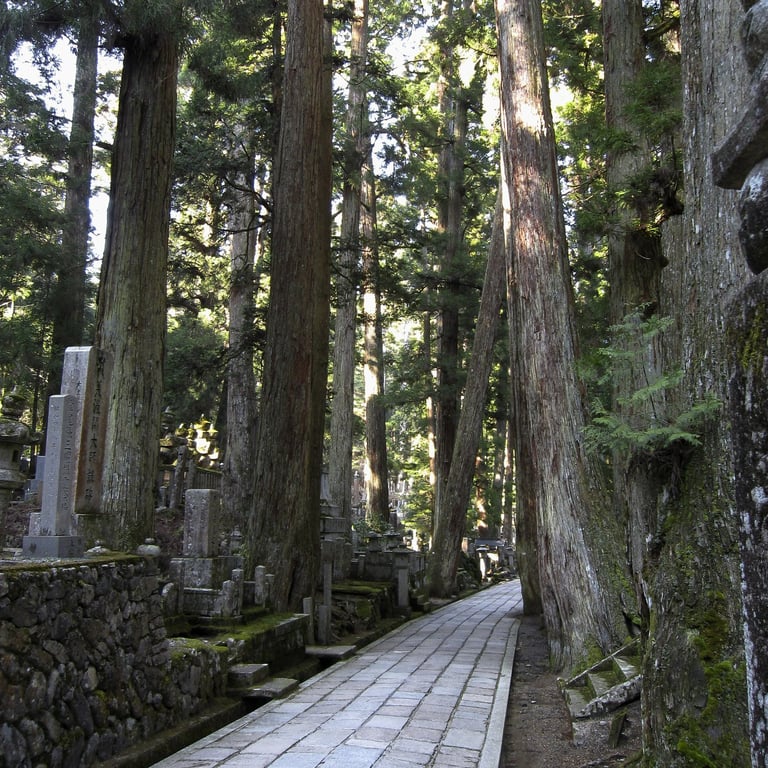
sawara, chiba prefecture
Frozen in time
Sawara is a former merchant town from the Edo period (1603-1867). Water transport founded its wealth, with the canals still pretty much as they were. Streets are lined with the old trading houses, which makes for a period-piece feel as you walk around. You can get there easily by train from Tokyo, Chiba City, or Narita. Katori-Jingu Shrine, atop a hill, is a bus ride away from Sawara and well worth a visit. On this occasion in December, a bitter wind kept folks alert at the bus-stop, hopping from foot to foot (a kind of 'given' for bus shelters world-wide). Fortunately, it was relatively calm up at the shrine.
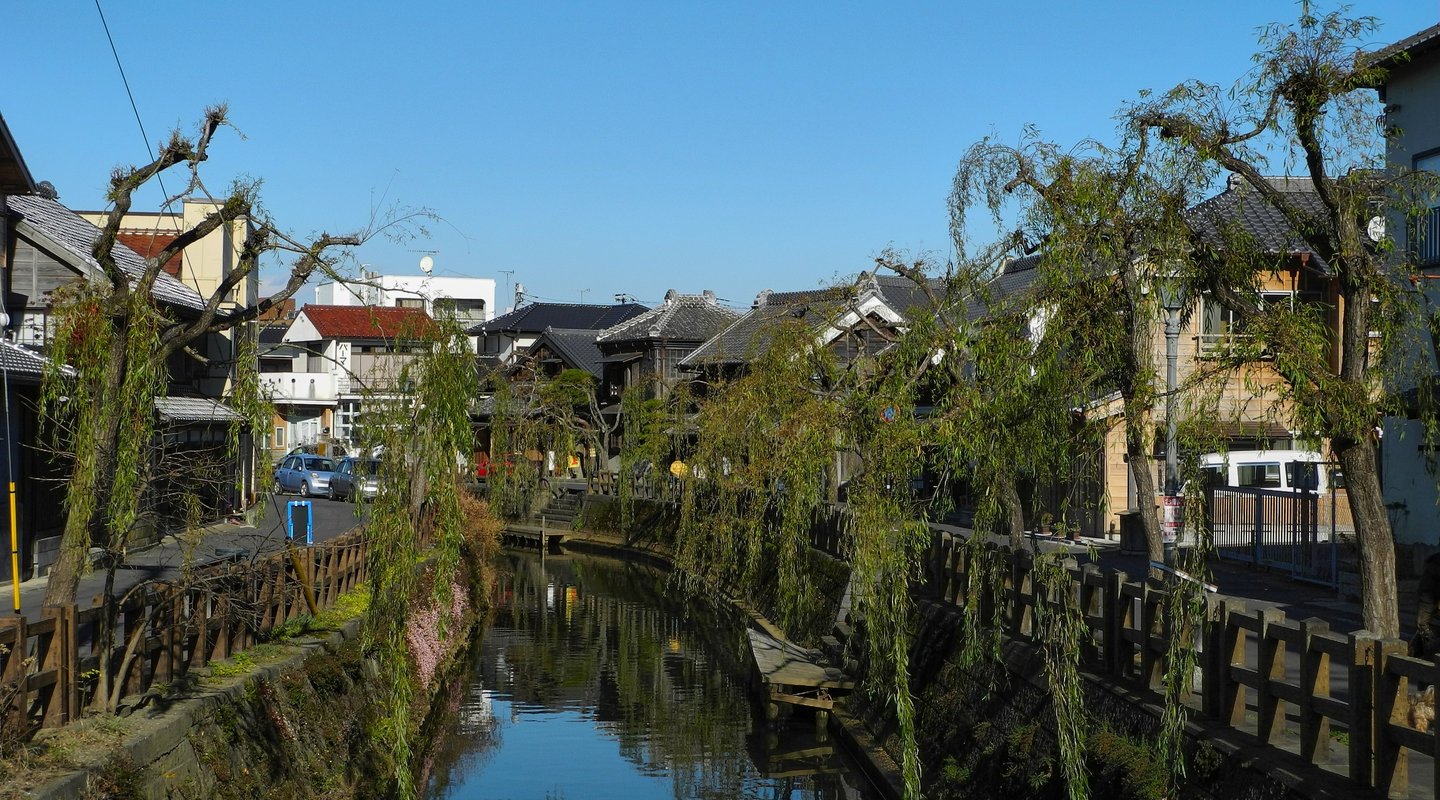

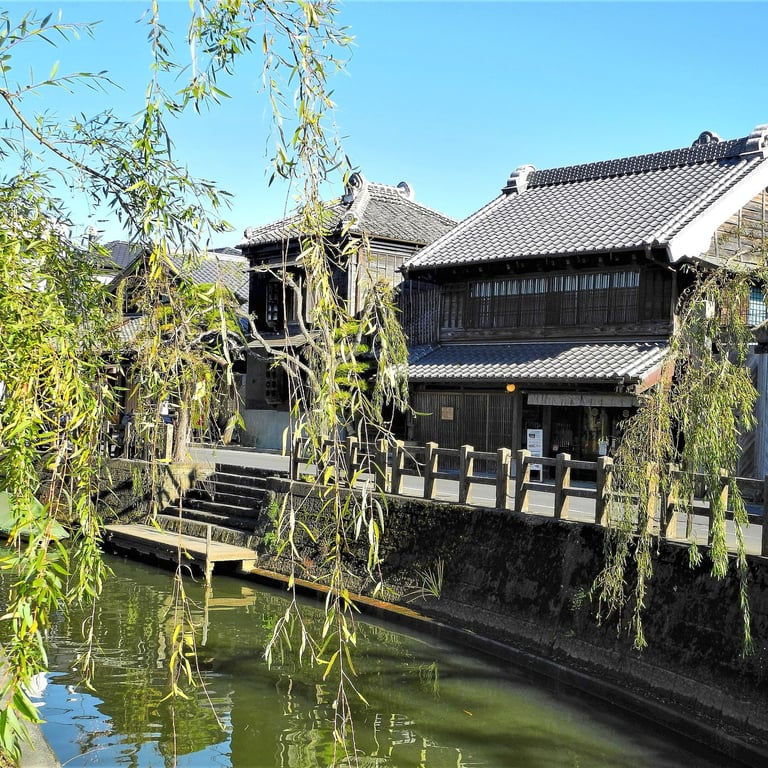
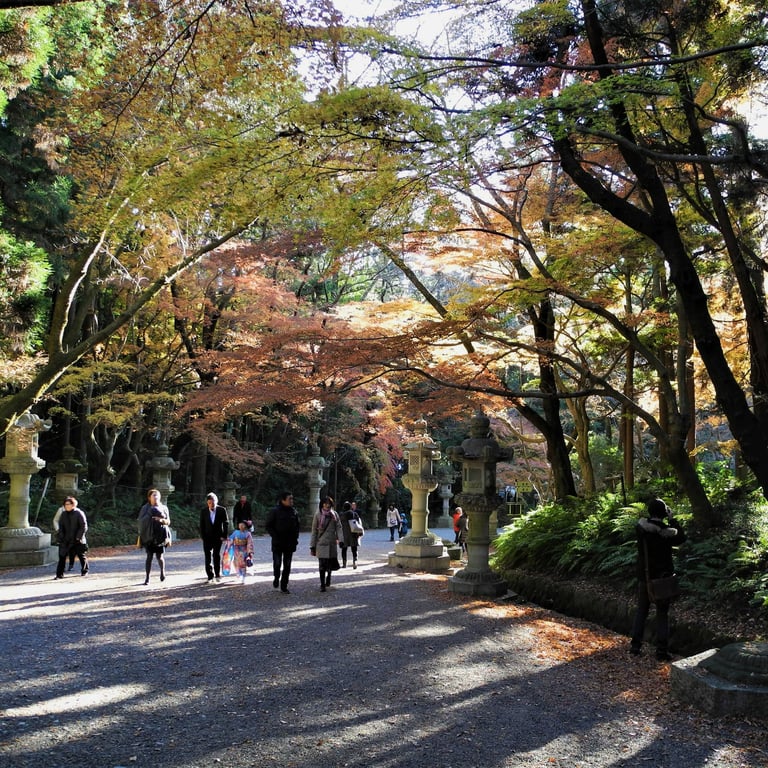
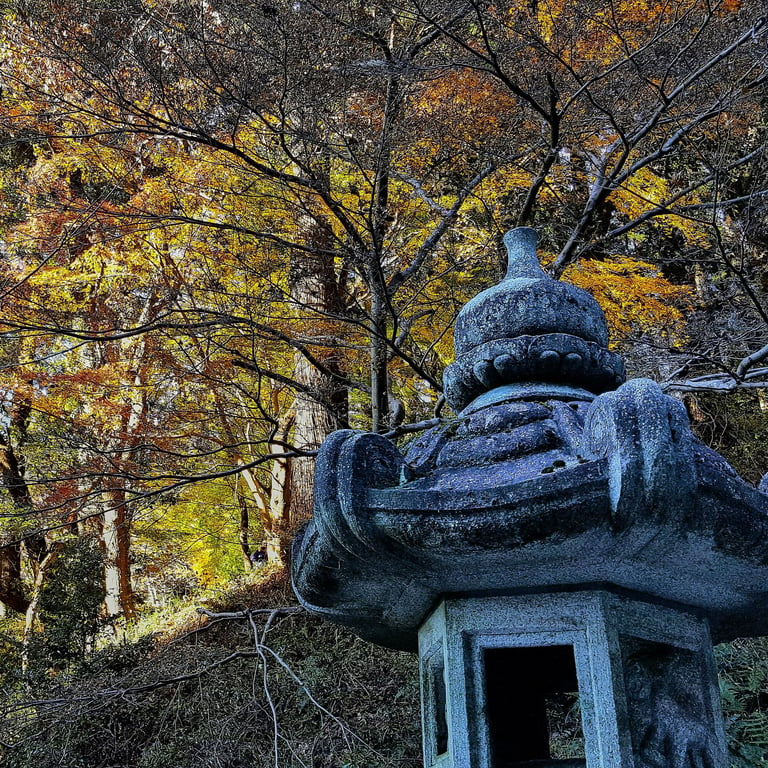
Mount takao, hachioji
Triple busy
Just a 50 minute train ride from Shinjuku Station, Takao-san offers a variety of hiking trails and views back towards the city. There is also a cable-car option if you don't feel like the walk. A bonus is the distant view of Fuji-san from the observation deck. Watch-point: public holidays will see the trails packed, and an hour-long wait for the cable car. This trip was actually on a Sunday and also a holiday - add in 'autumn leaves' and it was a triple whammy. This is how you learn as you go along. Learning lesson No.1 conclusion - plan for midweek!
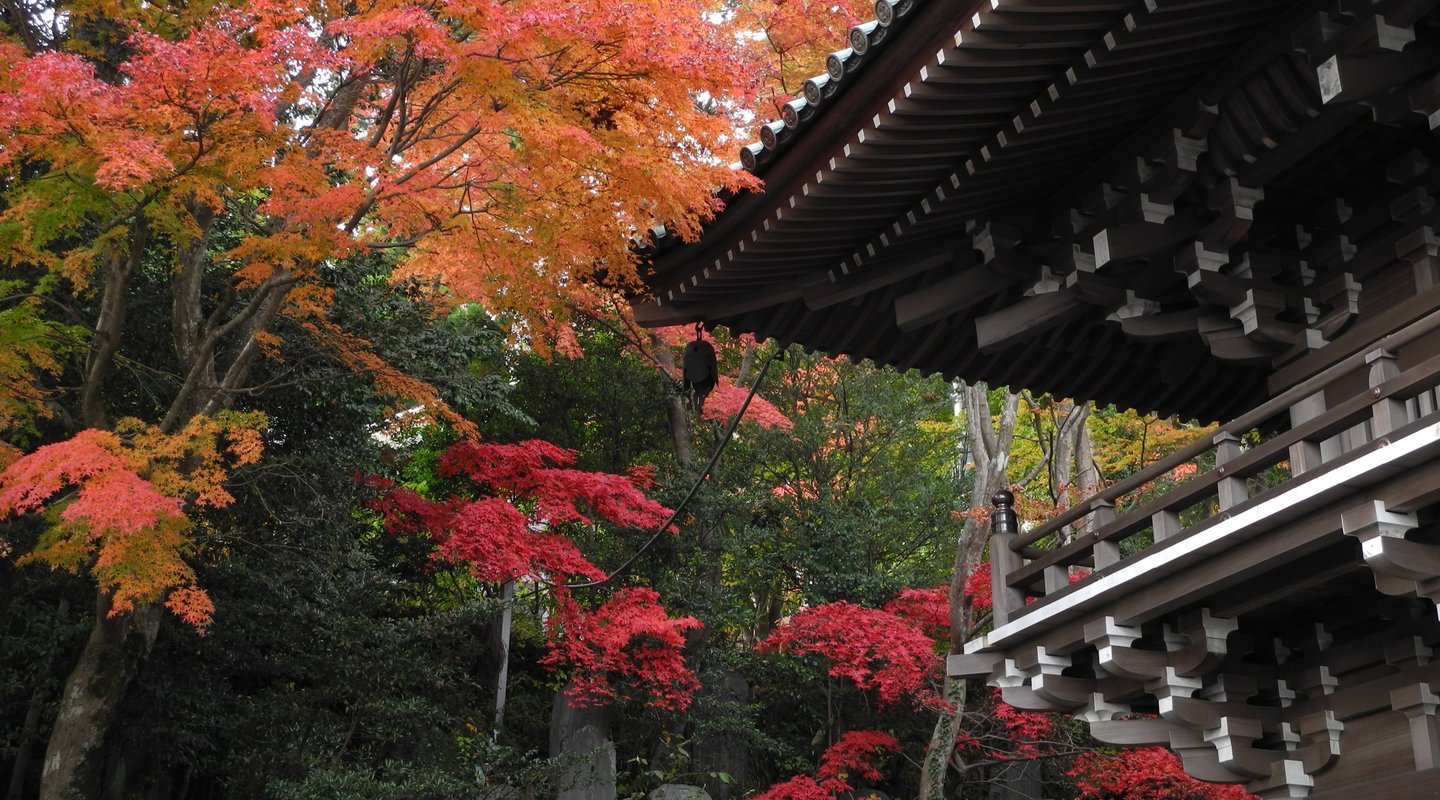

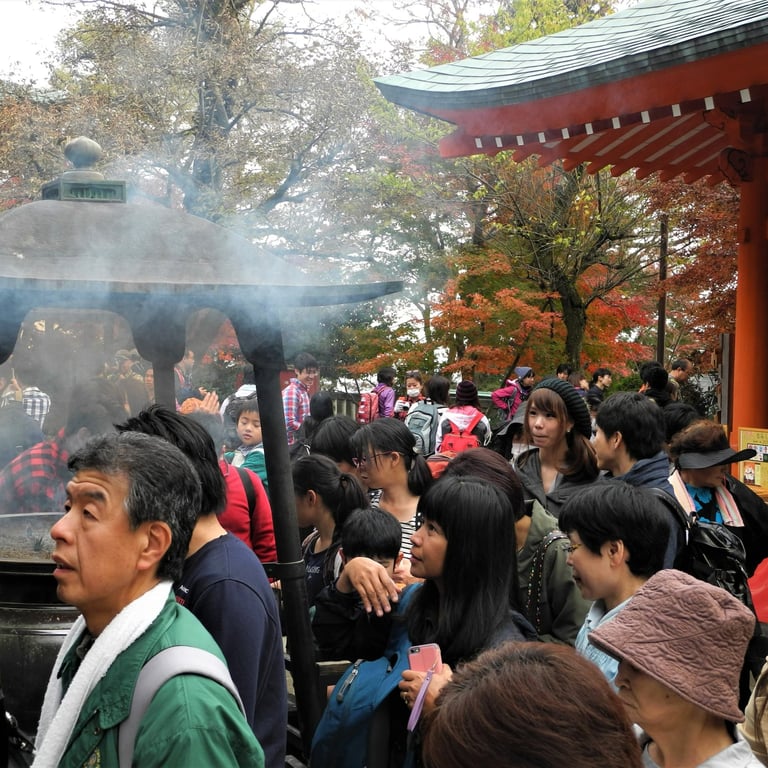
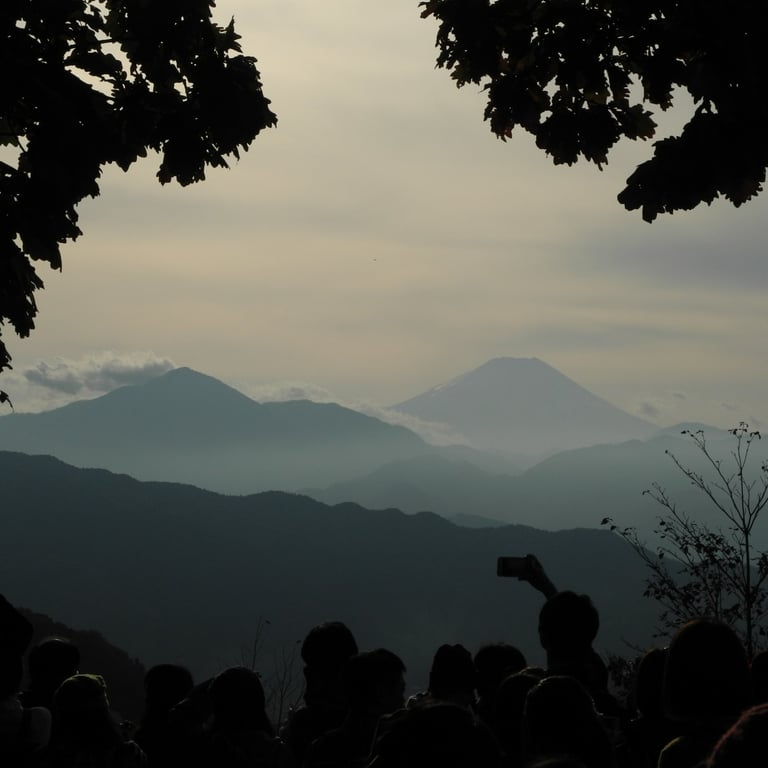
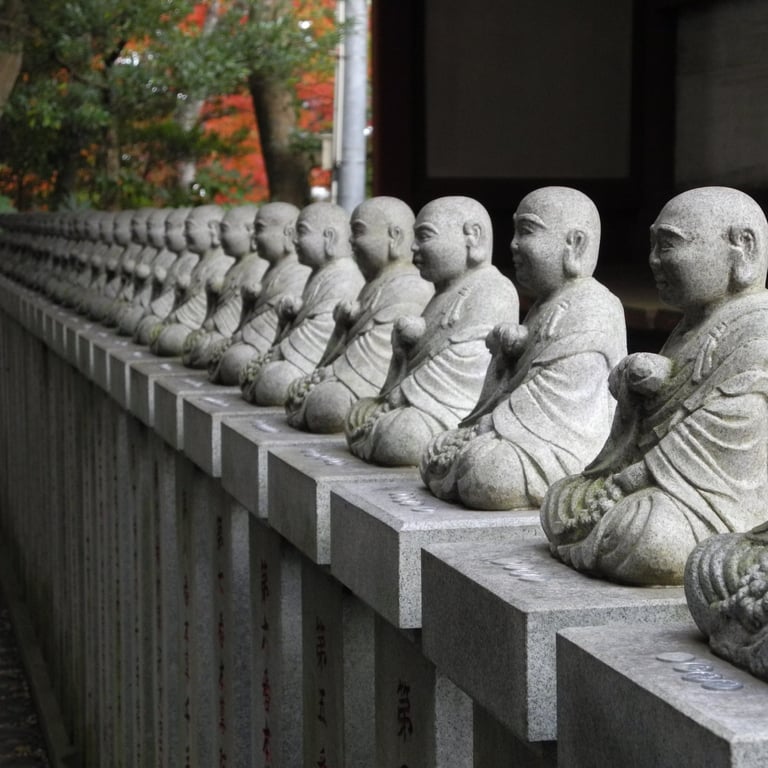
Chofu, tokyo
City calm
Sometimes interesting destinations are right under your nose. Chofu counts as its own city even though it is 20 kms from downtown Tokyo and part of the greater metropolis and its rail network. As a suburban centre is retains a village feel though, attractions including the Jindai-ji Temple set in beautiful grounds, and Jinjai Botanical Gardens, as well as the serene Fudaten Shrine. All of these make for a very pleasant afternoon visit, despite Chofu not making the regular ‘must-see’ lists. In Chofu you wouldn’t know you were in Tokyo really, and technically it isn’t one of the 23 inner Wards, so perhaps you aren’t.
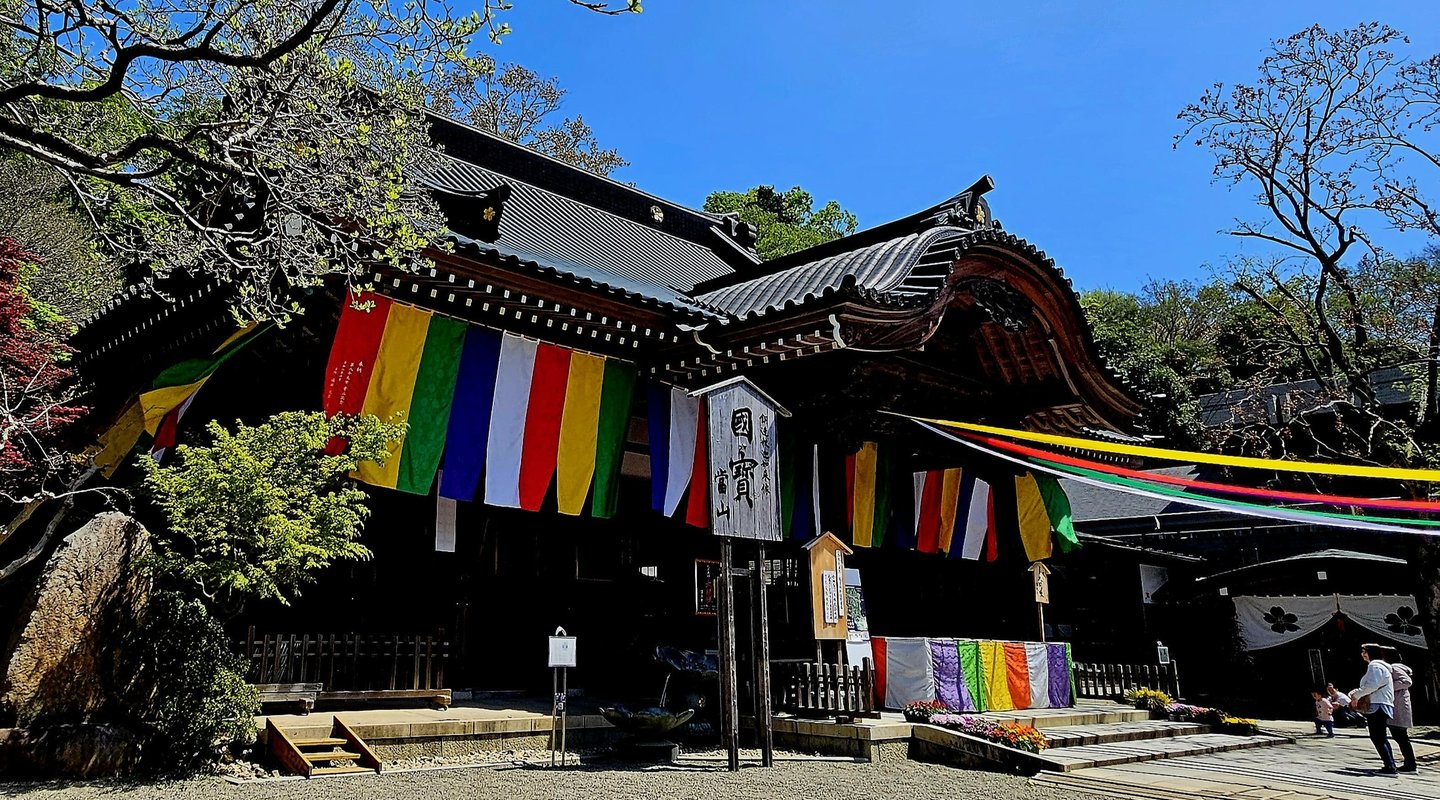

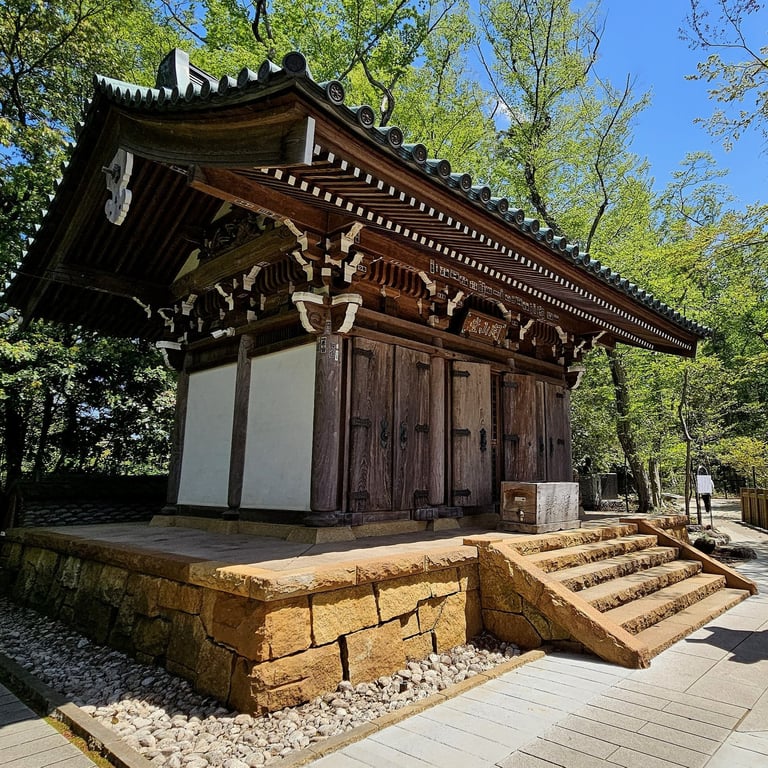
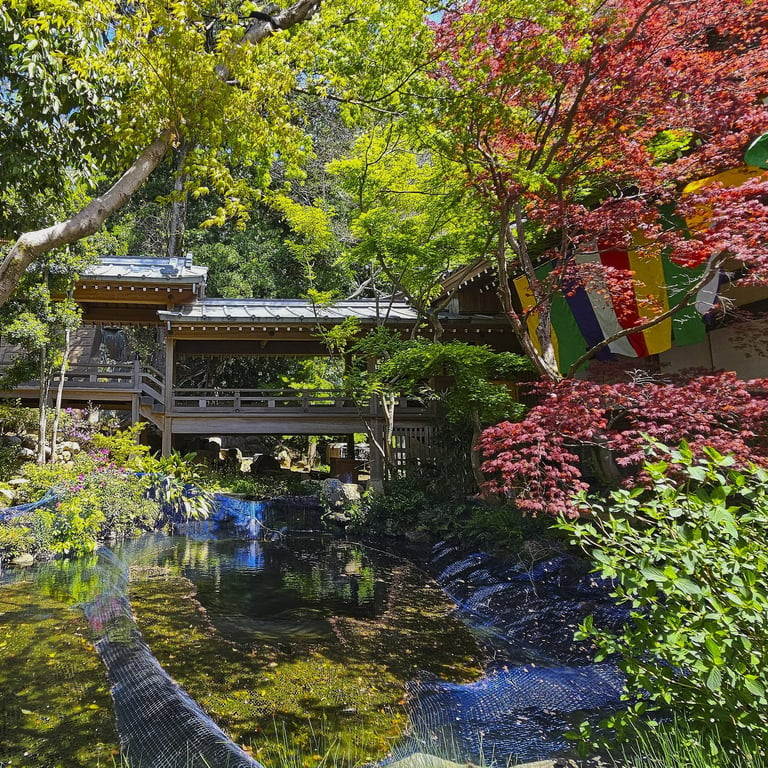
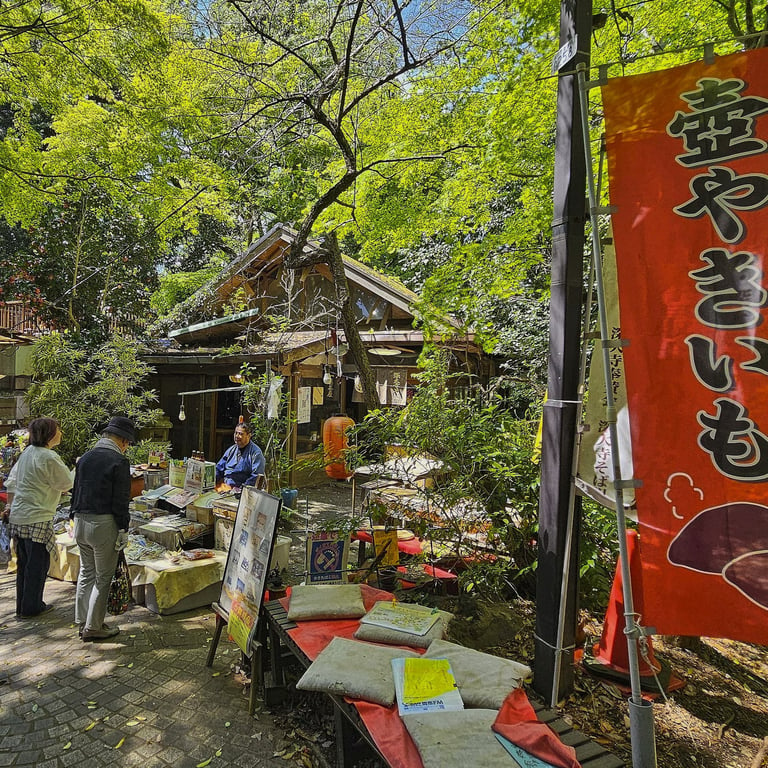
hachimangu shrine, morioka
Hook your fortune
The shrine was established in 1062 but rebuilt by the Nanbu Clan in 1593 to be the protective shrine for Morioka Castle. The grounds contain many smaller shrines at which you can pray or make offerings. One such temple invites you to grab a mini-fishing rod to capture a papier mâché fish containing your fortune message. 100yen well spent even if you have no idea what the prediction says – let’s hope it was something to do with good luck! The elevated position of the shrine gives views across to the snow-capped Mount Iwate.
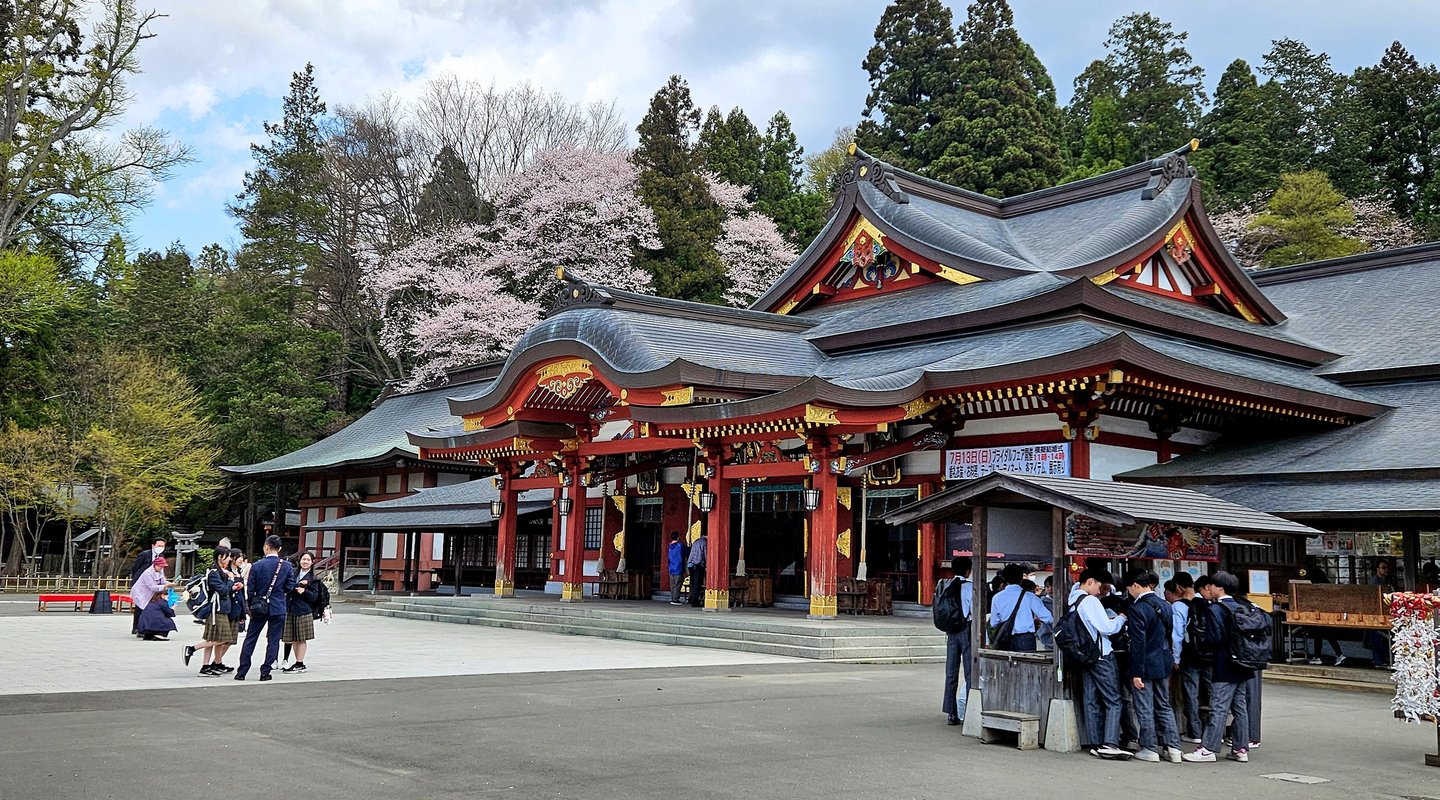

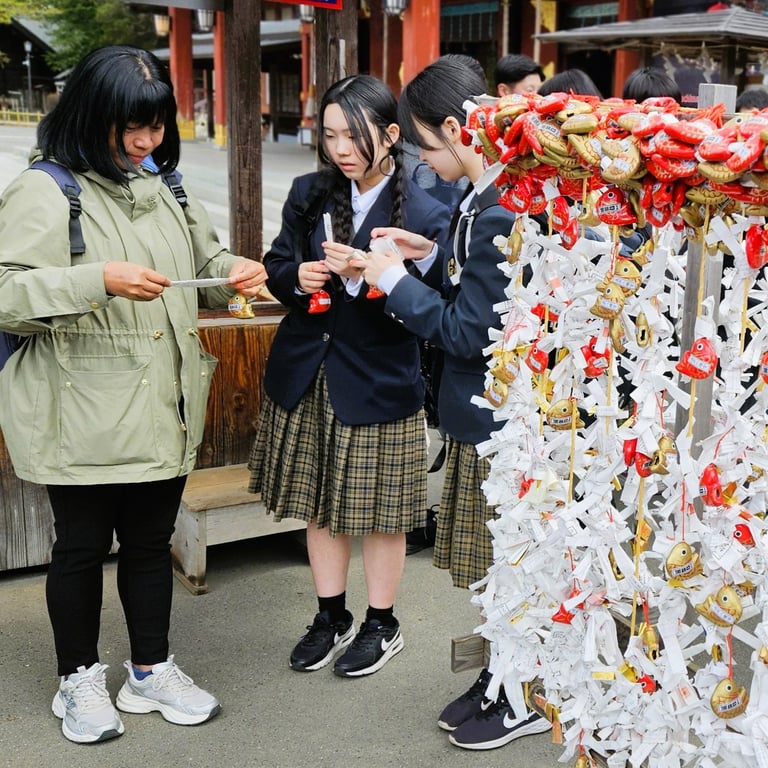
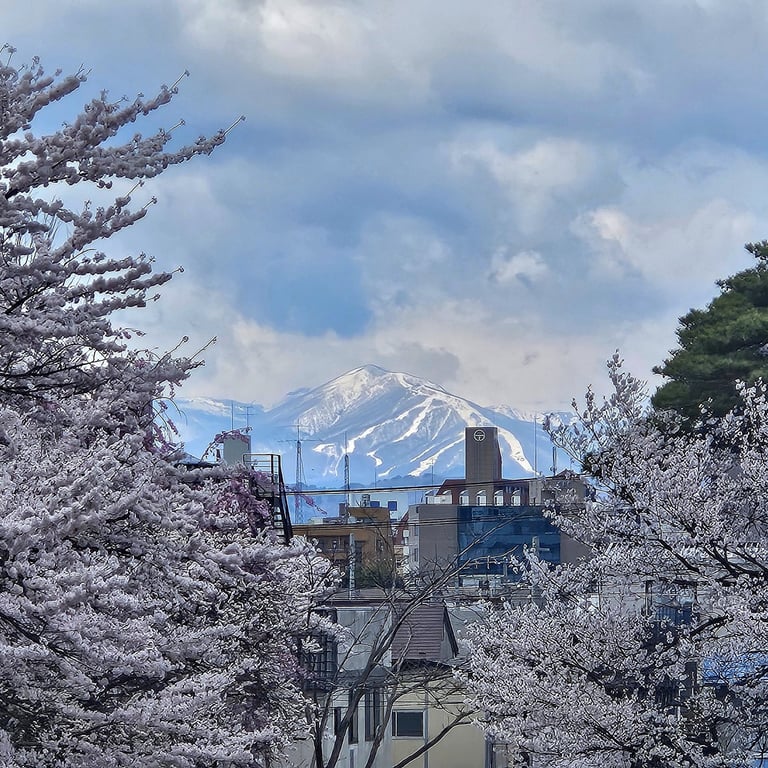
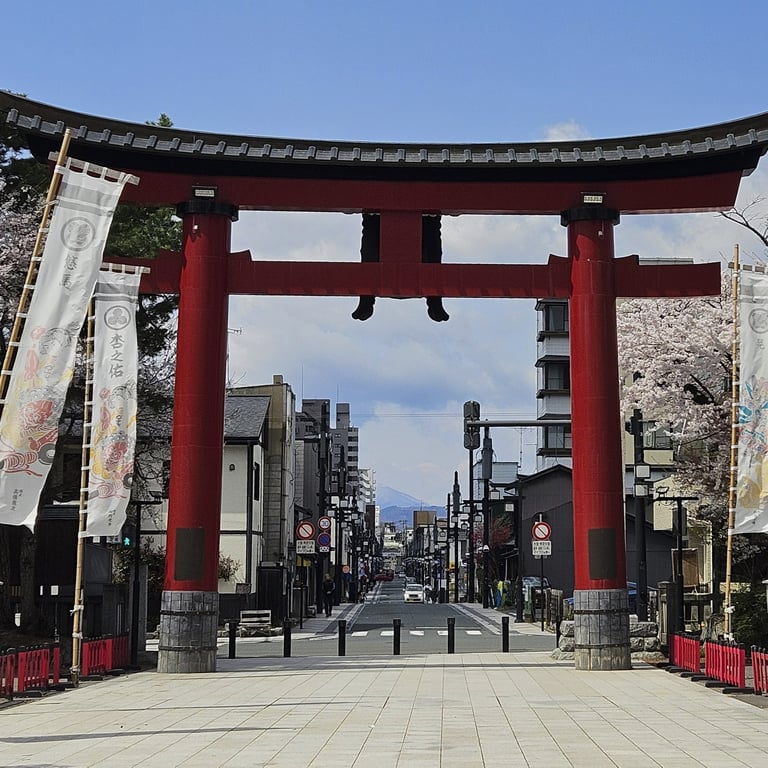
hakkoda ropeway, aomori
Snowy trails
The ropeway station is a 50-minute bus ride from Aomori. In the main ski season you might wait an hour for a gondola but in late April there was no queue. Lone skiers were amongst the crowd though. The gondola with a 101 person capacity dawdles up the slope (thankfully) before depositing you at the observation point. From there you can follow trails for 30 or 60 minutes or even four hours to the peaks if you are up for it. Discretion was the better part of valour on this occasion as the trails were covered in snow and my trusty Vans didn’t seem to be the most sensible of options. In the distance Mt Iwaki’s imposing presence grabs one’s attention, as does the view down to the bay surrounding Aomori.
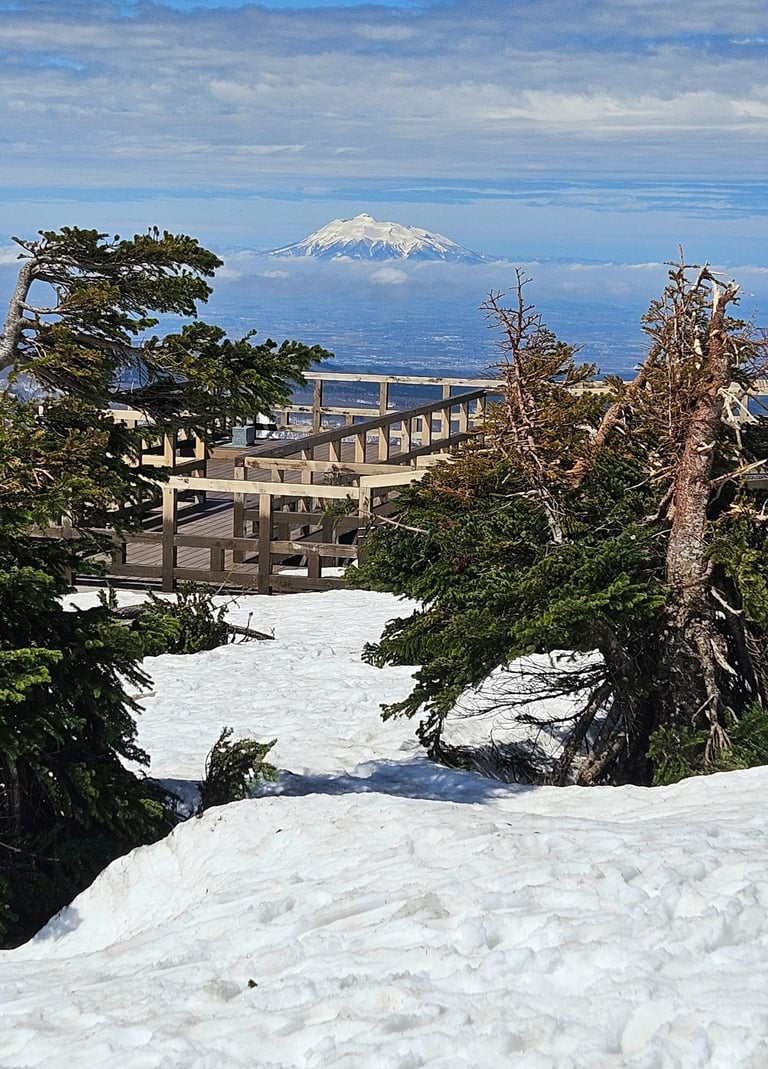

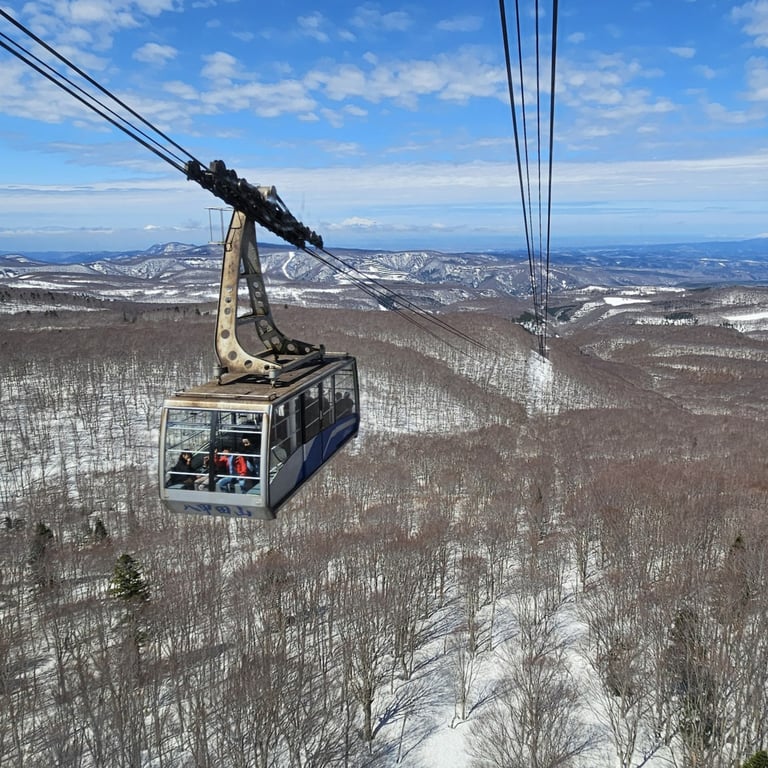
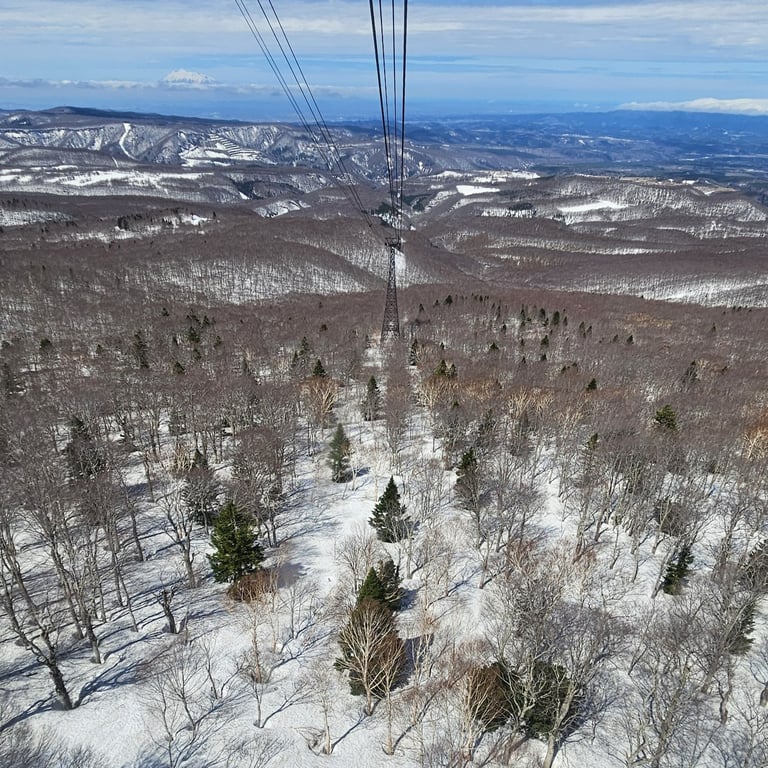
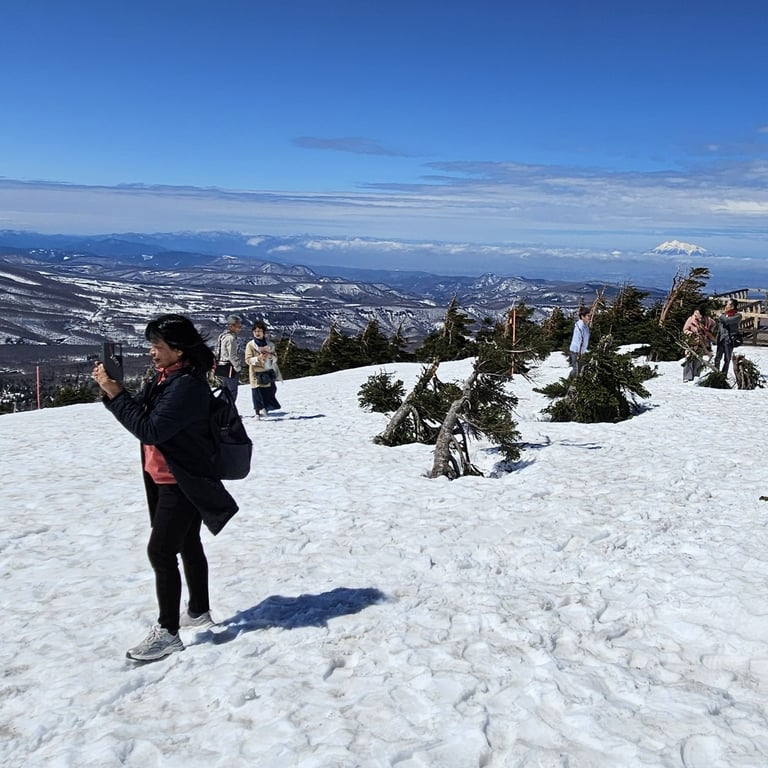
Ikebukuro, Tokyo
Time for reflection
Ikebukuro is a commercial district in Tokyo. You are good for shopping (Sunshine City - a city within a building), or changing trains at the main station, the second busiest in Tokyo due to several key lines intersecting there. Apparently 2.64 million passengers per day pass thorough - I bet there are no glitches, too! You may also find quiet spots in temple gardens, where you can relax away from it all. Following labyrinthine alleys away from the main roads, you may chance upon an isolated temple and accompanying cemetery. An opportunity to reflect in an island of calm.
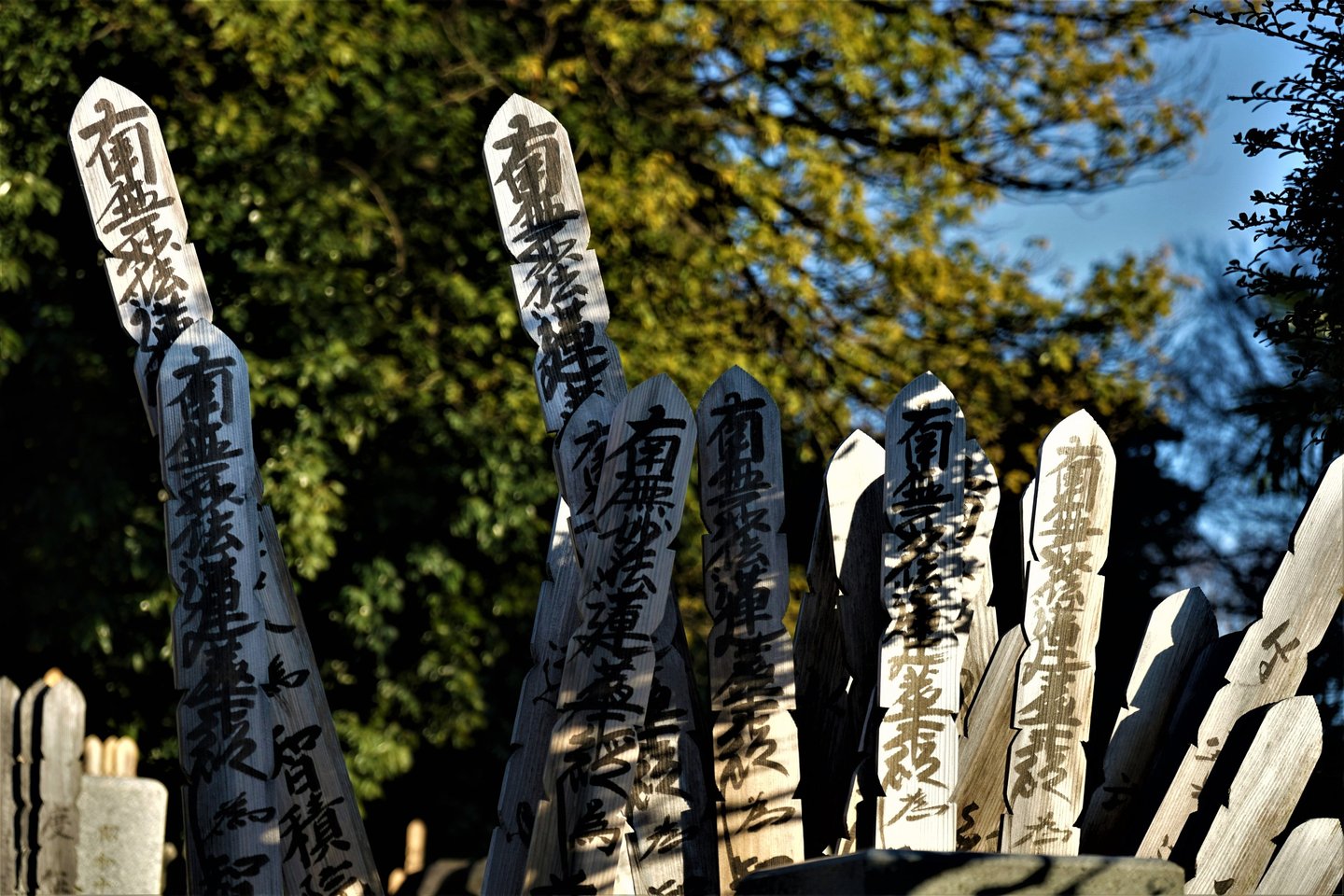

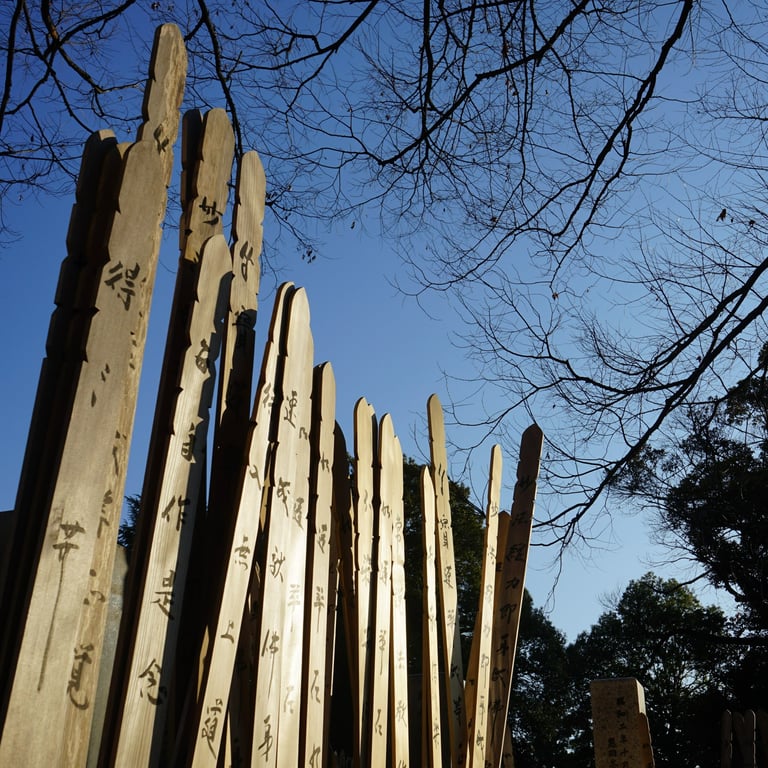
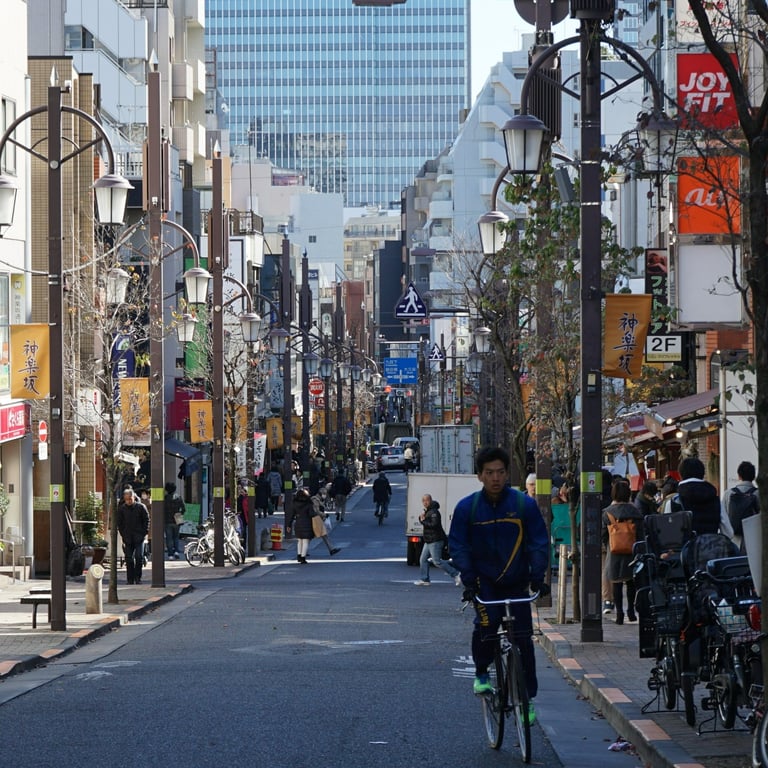
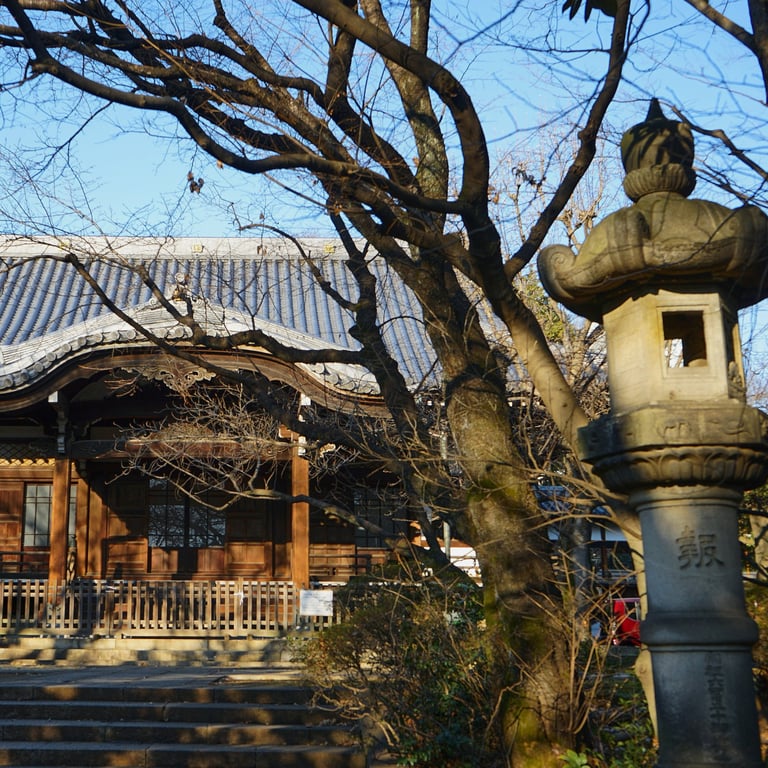
Okinawa Island
Sobering visit
Okinawa for a week or so was a disappointment. Probably because we stayed on the main island rather than the outlying tropical islands, besides the weather was largely overcast all the time. The highlight (a rather sombre one) was a visit to the Peace Memorial Park south of Naha. Here, over 240,000 names of those who lost their lives in the Battle of Okinawa, are inscribed in the zig-zag granite memorials. The names are in Japanese, Korean or English script according to the deceased's nationalities. A very sobering experience with the Cornerstone of Peace providing a focal point.
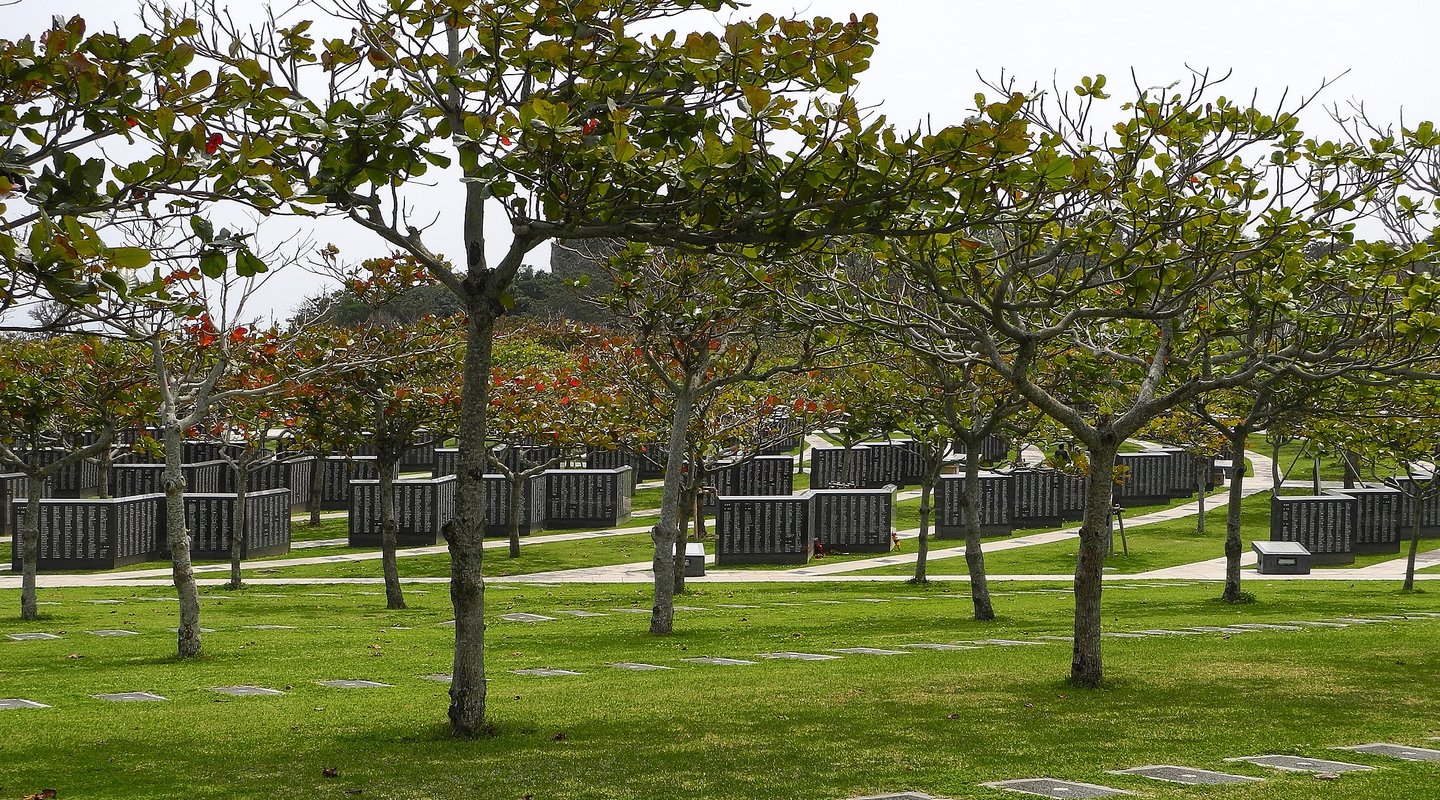


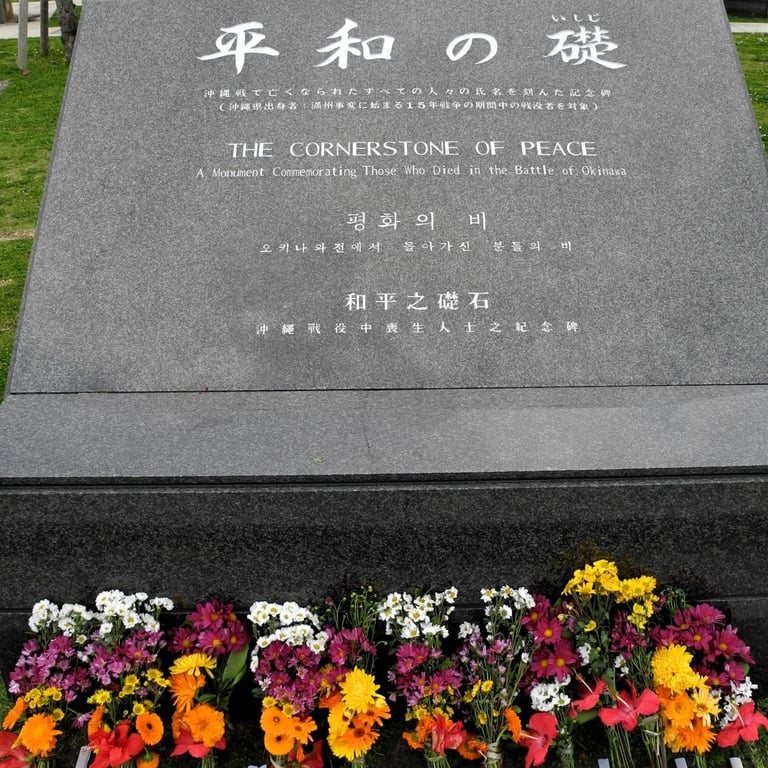
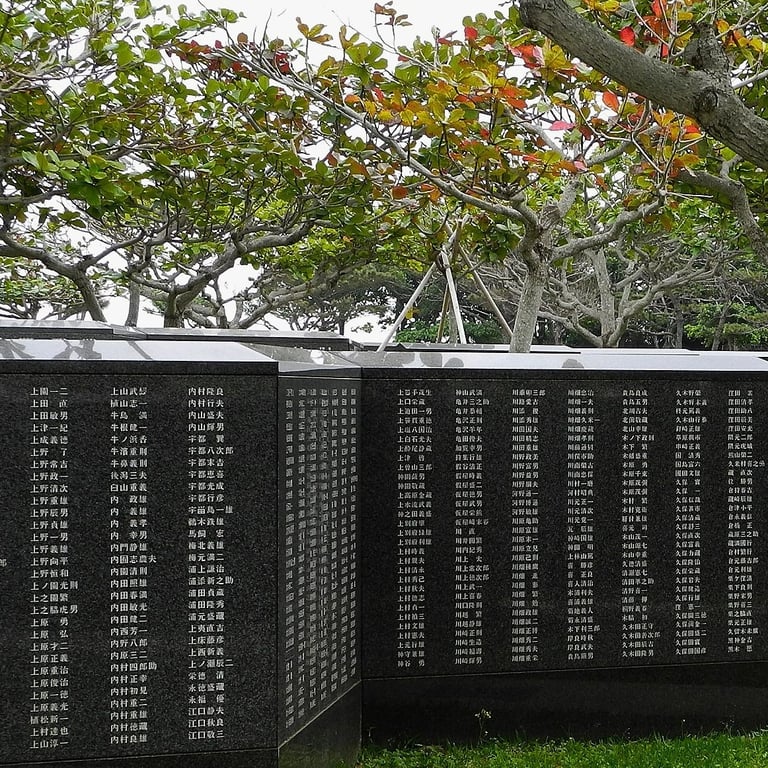
the skytree, tokyo
Quake proof!
The Skytree is a surprisingly okay trip. It didn’t sound too promising to be honest, but the megalopolis stretched out before you in bright sunlight can’t fail to impress. The icing on the cake as it were – more of a cherry really – is Mt Fuji seemingly suspended on the skyline. At 634 metres the Skytree is the world’s tallest tower, although not the world’s tallest structure. The tower is earthquake-proof by dint of a concrete tube running up the centre which allows the tower to sway. I’ll take their word for it with that one - absolutely no need for a demo.
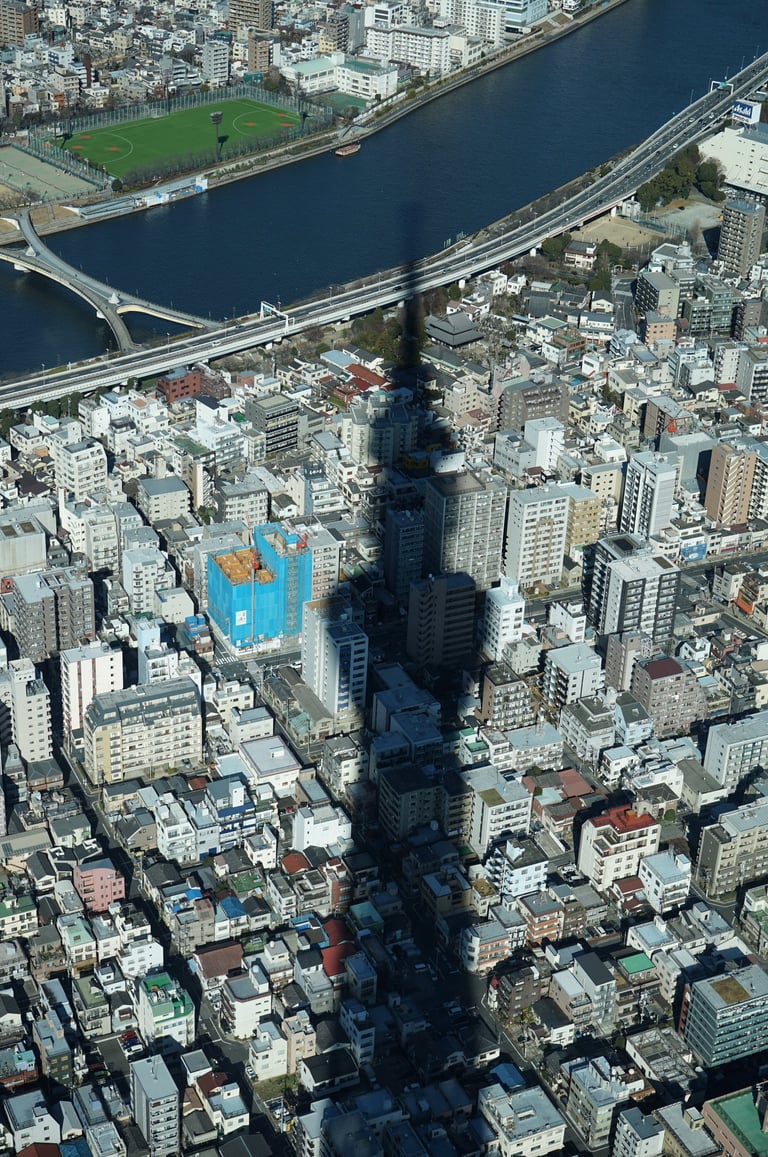

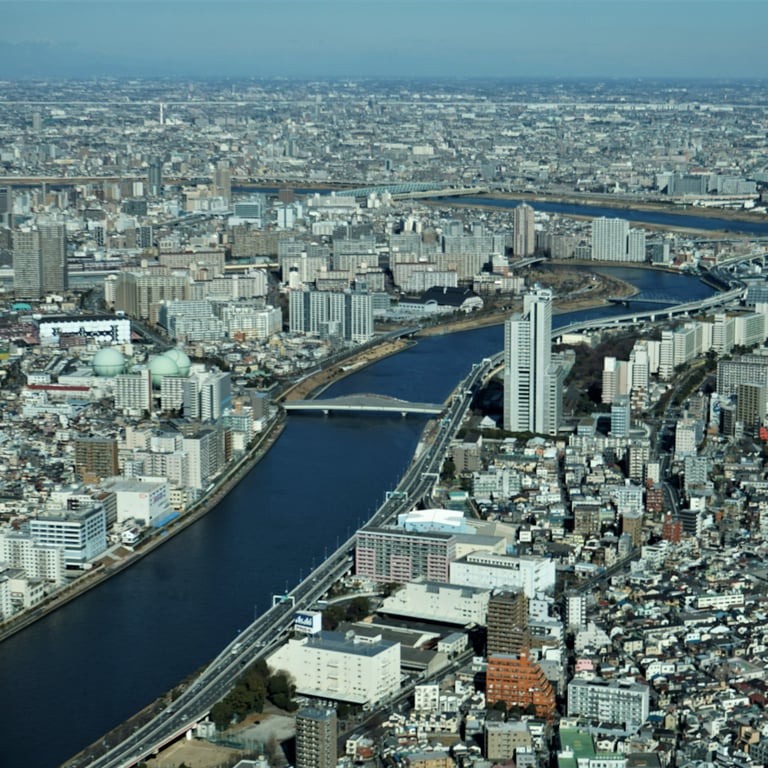
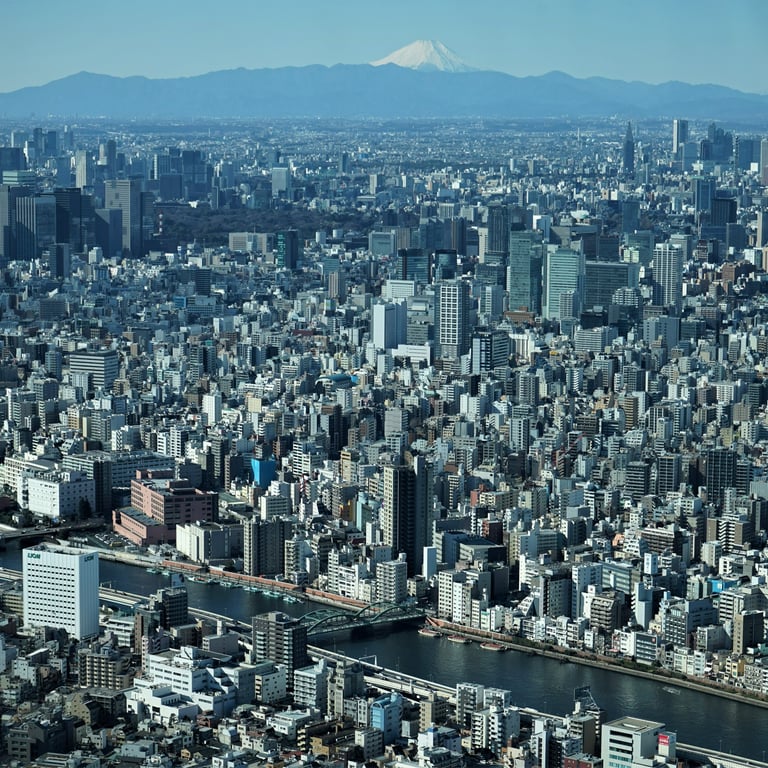
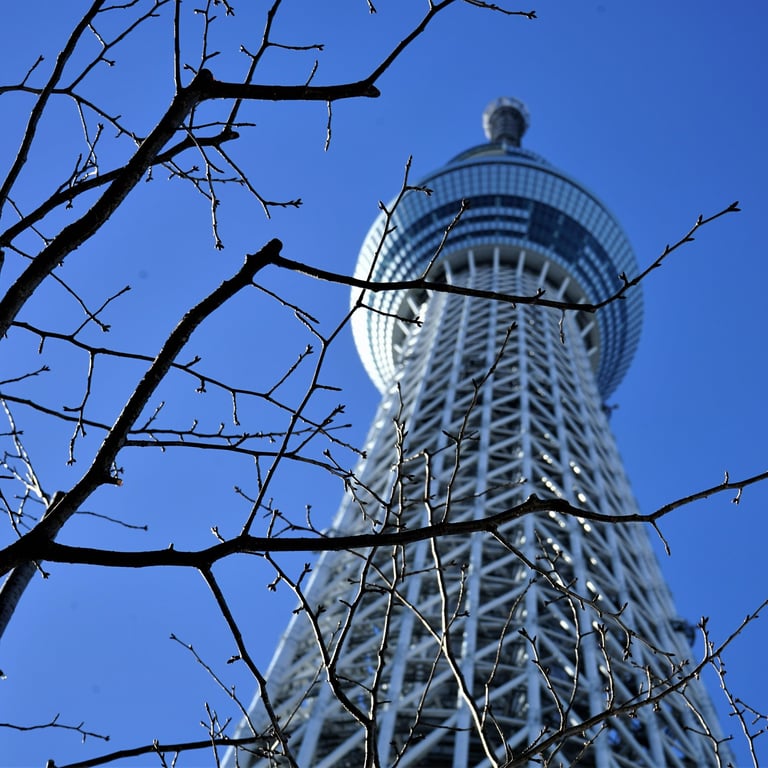
hakodate, hokkaido
Fresh plus
Hakodate is a large city in south-west Hokkaido. One of the ‘must-see’s is the morning fish market. To say that the fare is fresh is understating it rather. In fact, you point to what you want, swimming around in the tank and it’s on your plate within minutes. Watching folks fishing for squid before informing the kitchen how they want it cooked was fascinating (sort of). I even observed folks jabbing at an octopus on their plate with chopsticks as it tried to make a hasty exit.
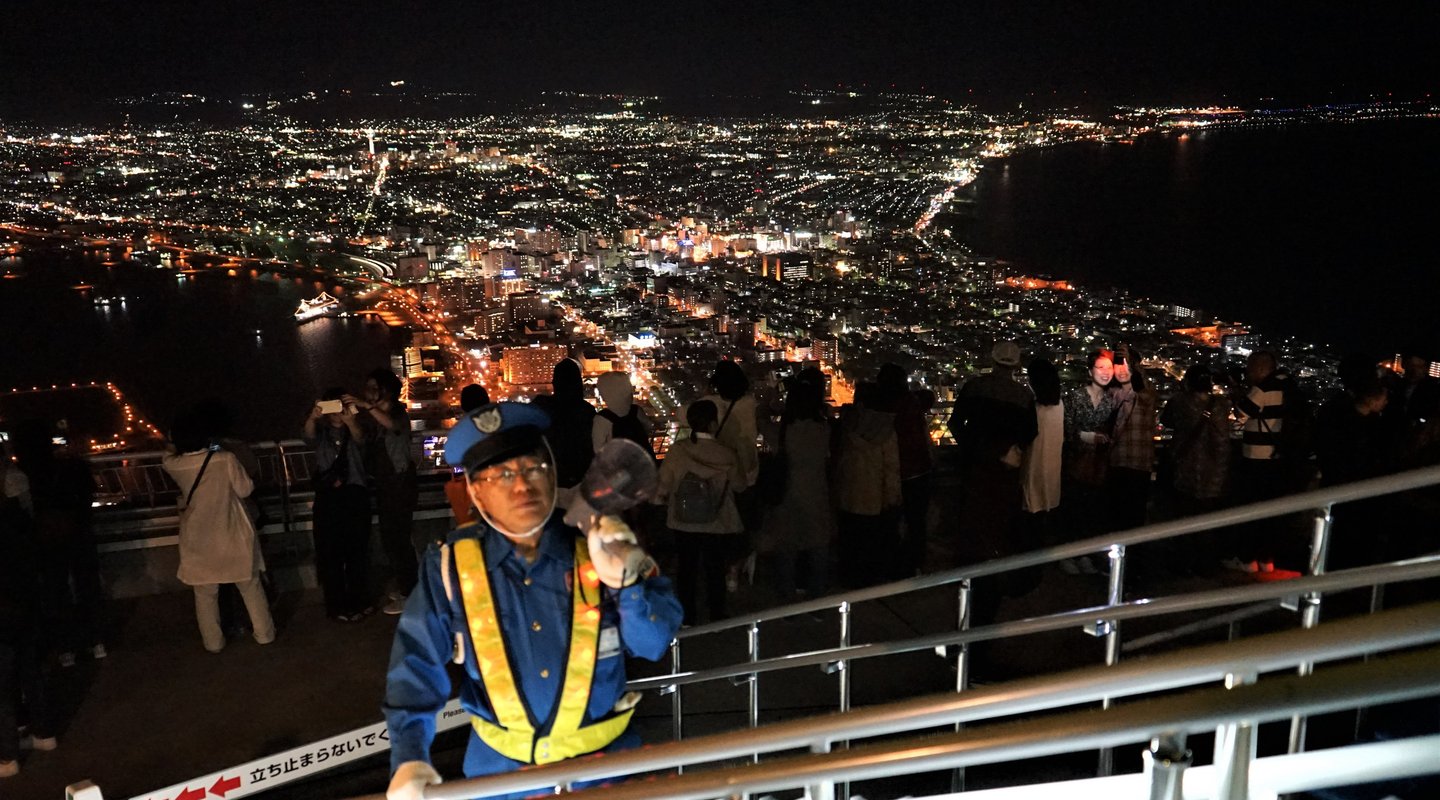

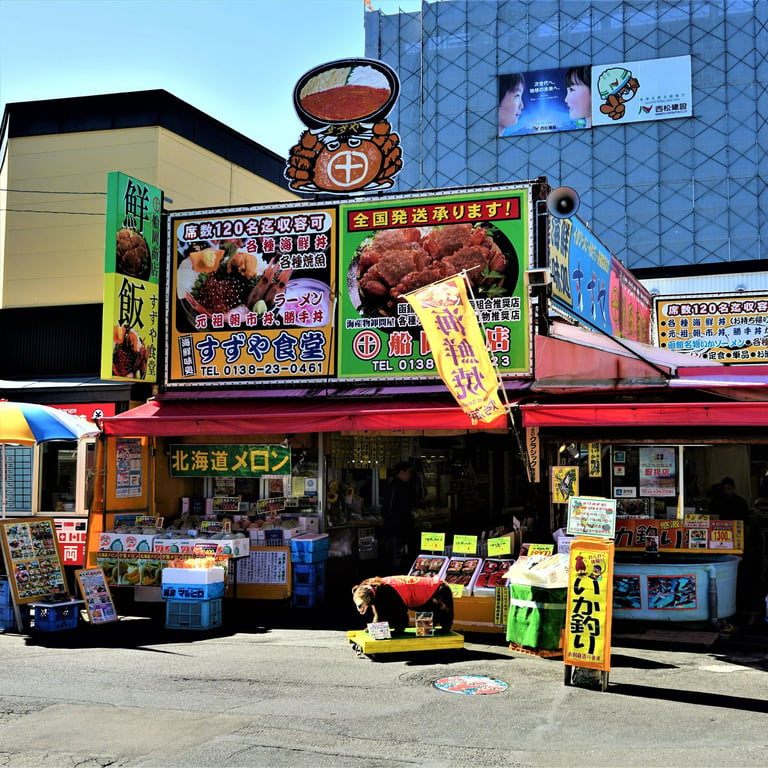
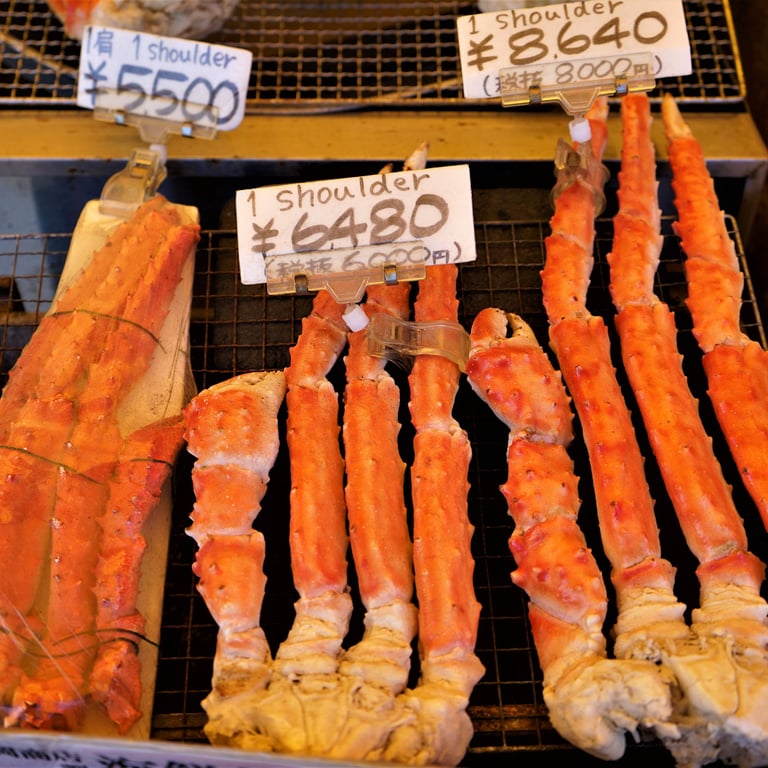
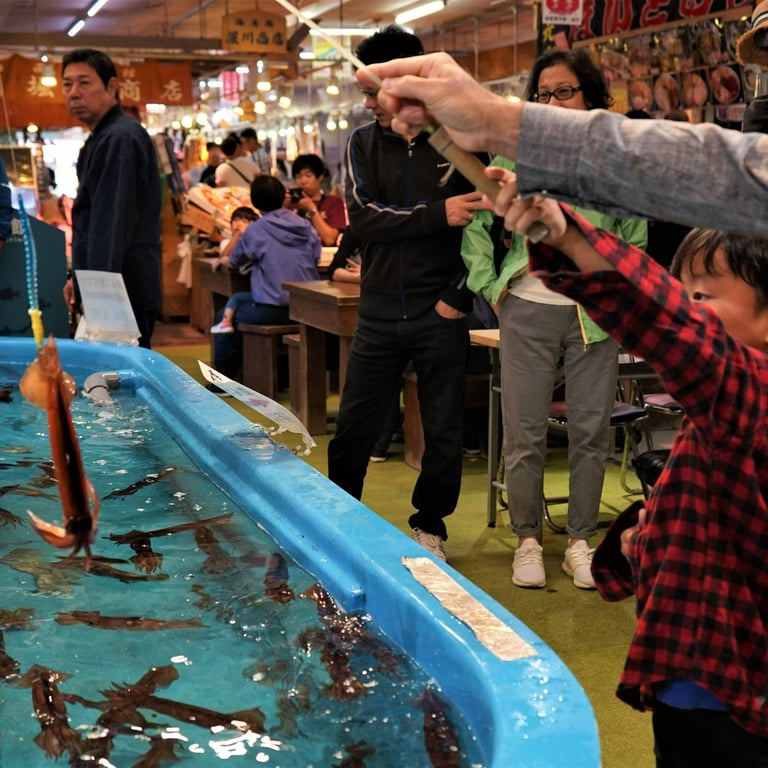
takayama, gifu prefecture
Hida Takayama
Takayama is a popular attraction being in the heart of the Japanese Northern Alps (Hida Mountains). The 10,000’ Hakodate is nearby and accessible via a Shinhotaka Ropeway. One of the main draws in town is the Sanmachi Suji District, an area of narrow lanes hemmed in by wooden houses dating from the Edo Period. Nearby is the Sakurahama Hachimangu Shrine (pictured here). The Hida No Sato Open Air Museum (also pictured) celebrates traditional village life and is also well worth visiting. All of this might account for the hordes of tourists that descend upon Takayama, even off-season. Of note: ‘Hida-Takayama’ is the adopted name of the town to distinguish itself from other Takayamas in Japan.
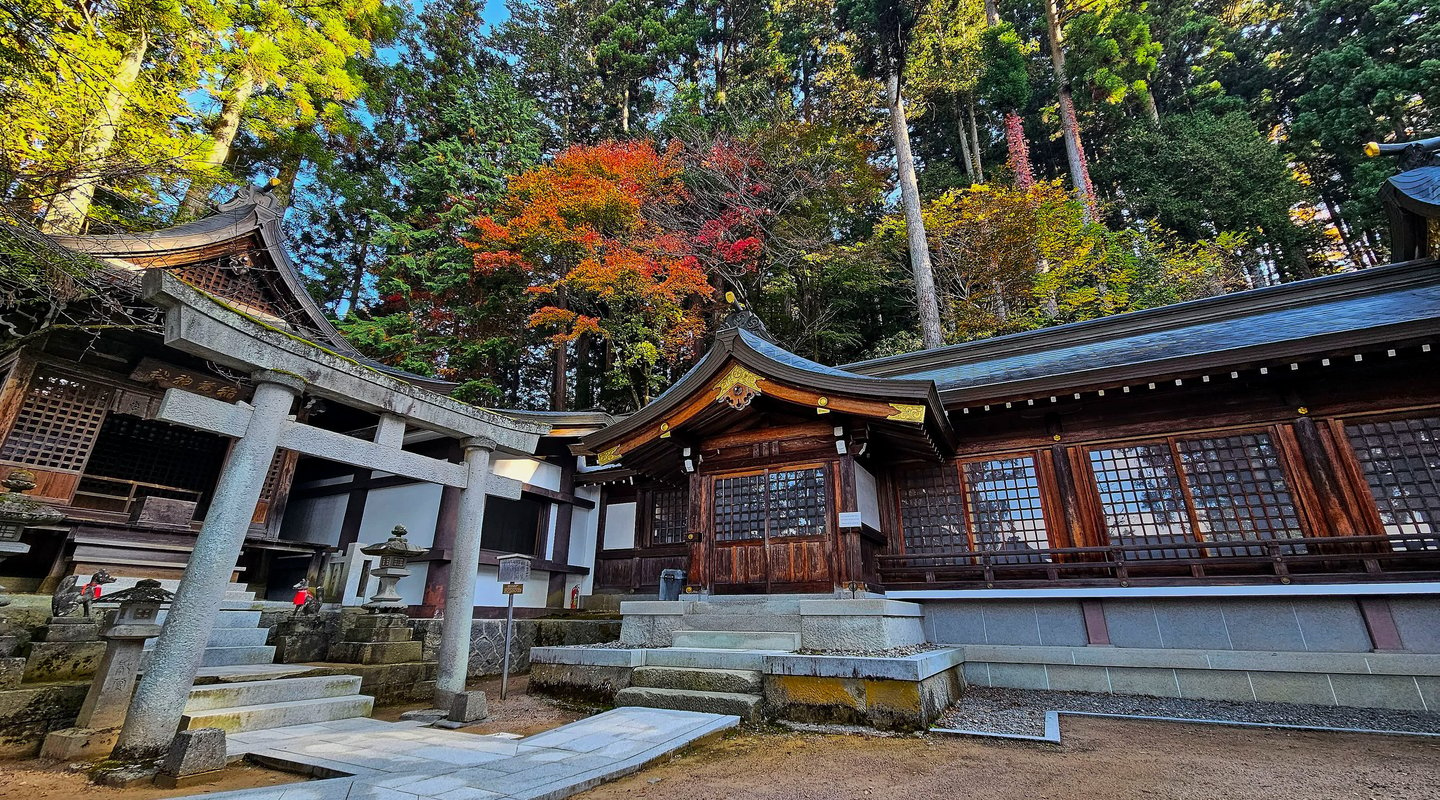

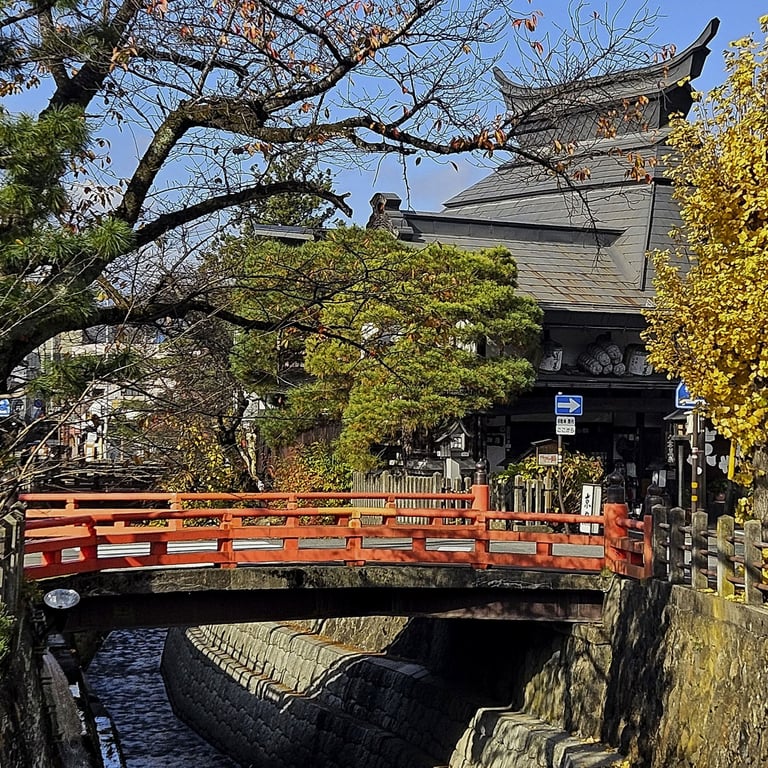
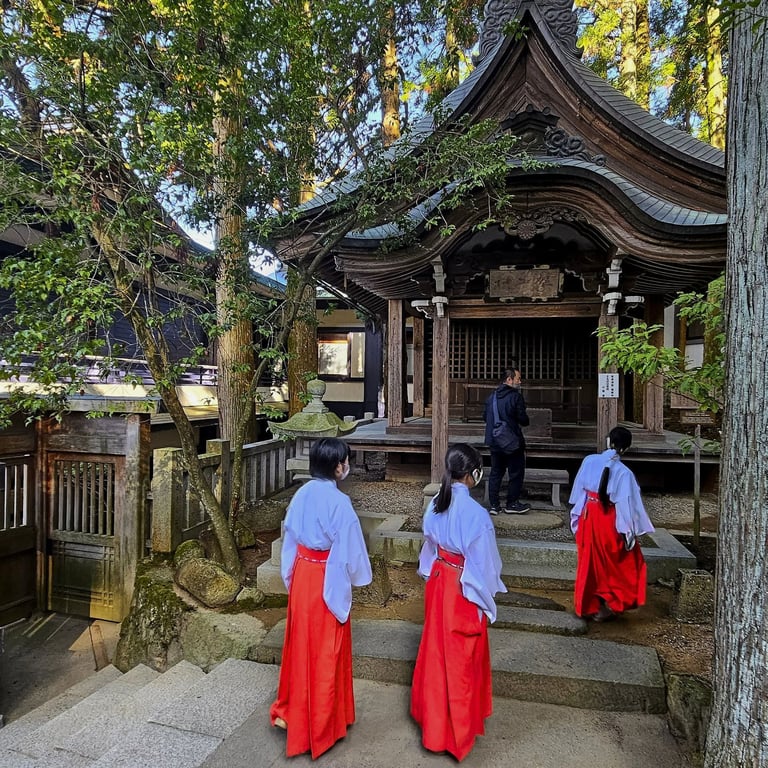
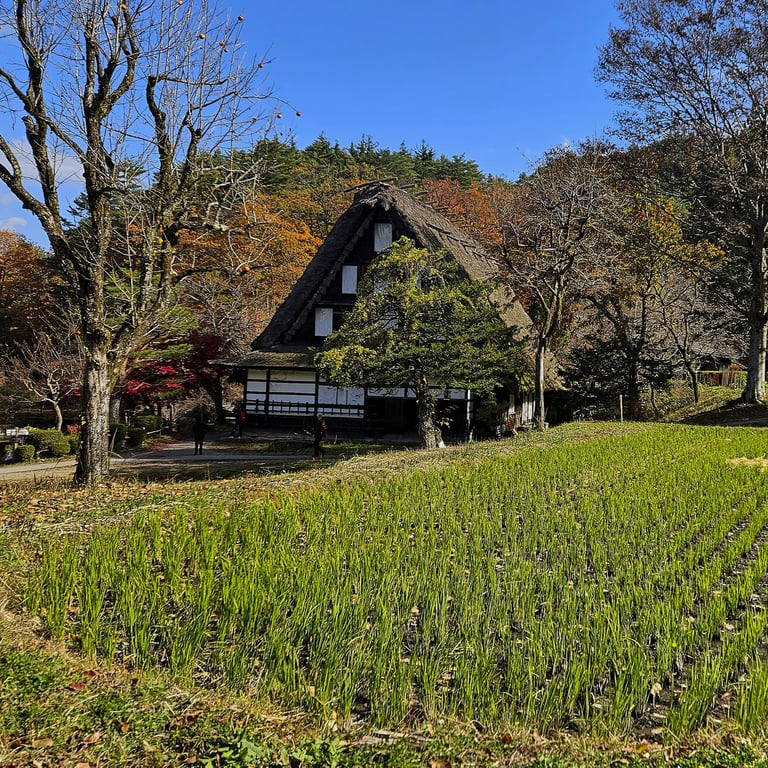
ueno, tokyo
Ameyoko Shopping Street
Ueno is a great place to stay if you are going to be exploring Tokyo by using the train and metro system. Ueno JR Station intersects with many other JR and Metro lines, including the handy circular Yamanote Line. You can also connect with five Shinkansen lines going north. Ueno Park is well rated for Hanami, and you’ve got the famous Ameyoko Shopping Street for the buzz in the evening. Here there are all kinds of stalls, plus a huge choice of restaurants. If you look at online reviews, it is one of those places that draws lots of ‘5’s but also ‘3’s. I am nearer the 3 end of the scale, simply because I find that the restaurant barkers out front tend to rope foreigners in then usher them upstairs to pack them in, which likely wasn’t what attracted them in the first place. The food is often only so-so as well, quantity holding sway over quality it seems. Apart from that, the atmosphere is a definite 5!
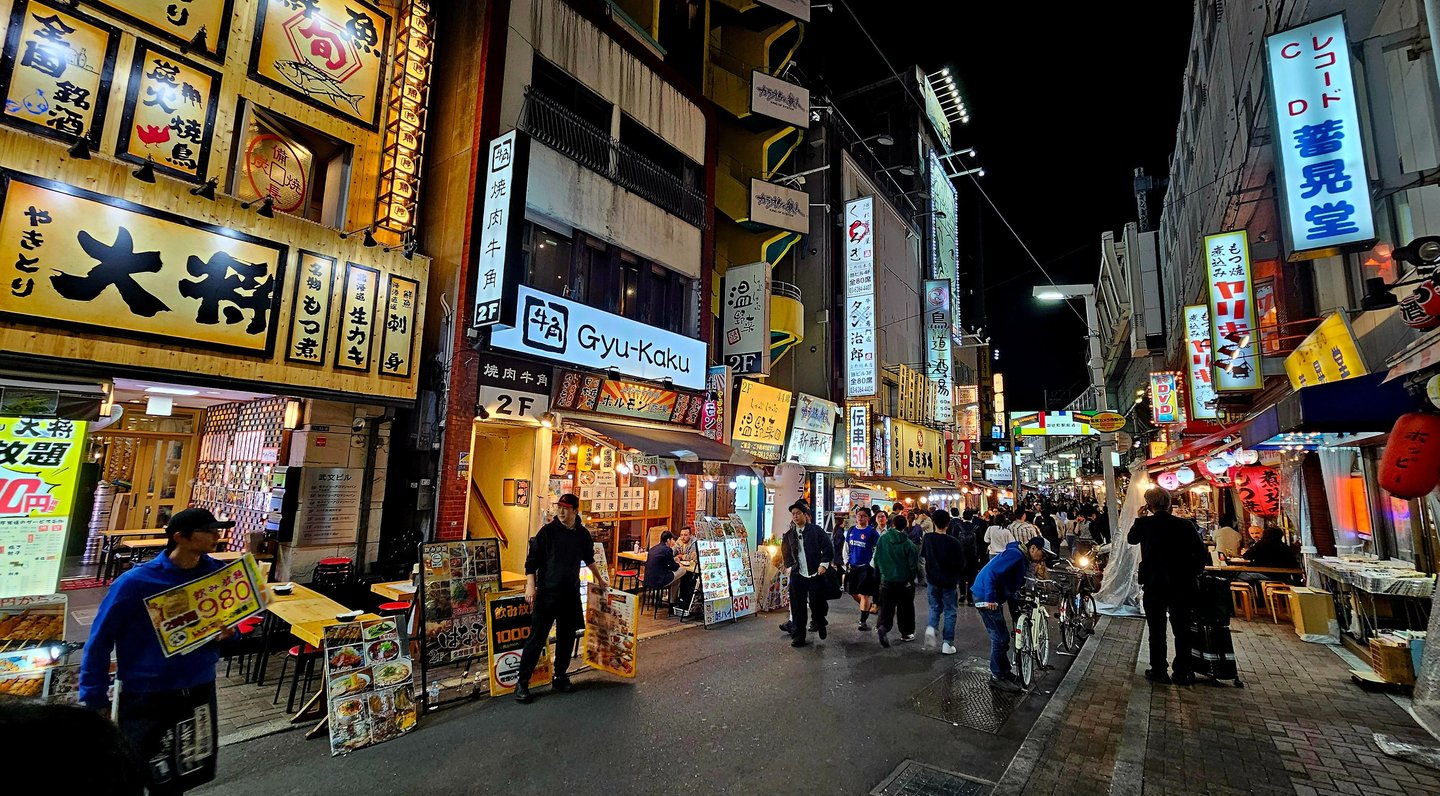

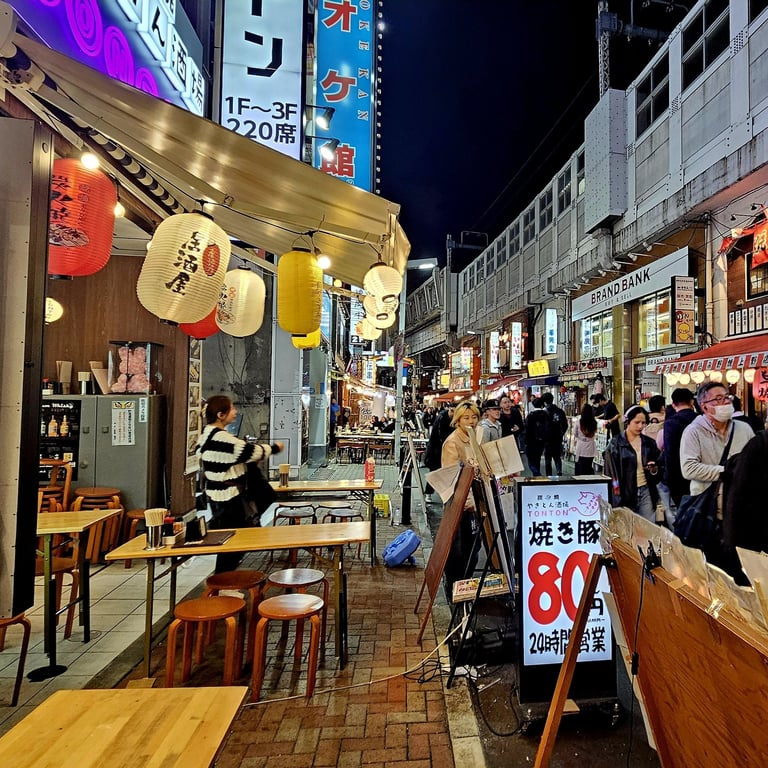
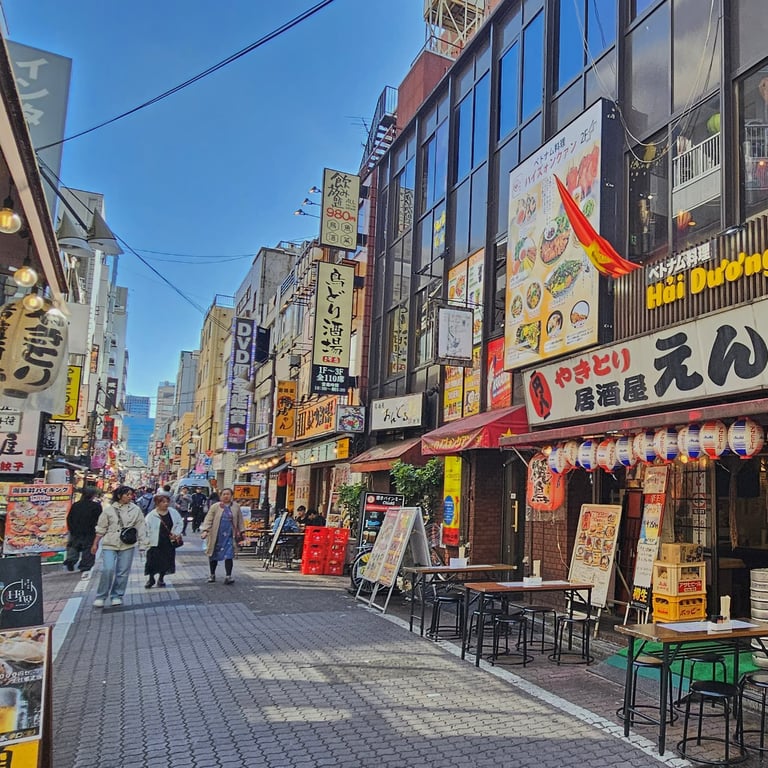
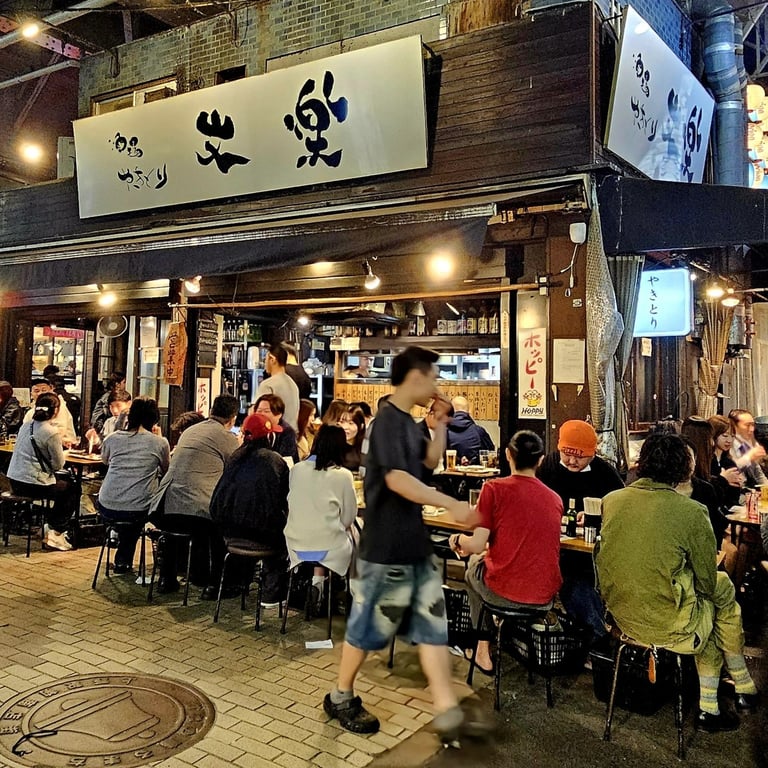
Kanazawa, ishikawa prefecture
Style all around
Kanazawa on Honshu’s west coast is famed for its arts and crafts and has several well-preserved areas that are worth visiting. The ‘ruined Kanazawa Castle’, dating from the 1500s and the seat of power of the Maeda clan, doesn’t look very ruined at all, being partially restored to how it looked in the 1850s. It is surrounded by the Kenrokuen Gardens which are amongst Japan’s finest. Nagamachi is known as the ‘Samurai area’, although in reality only one or two of the houses are of samurai origin. Higashi-chaya, the Geisha area (featured above), is well preserved with its lanes of wooden houses capturing the spirit of former times – having said that, Geisha areas were out of bounds for Samurai, being the purview of rich patrons and merchants.
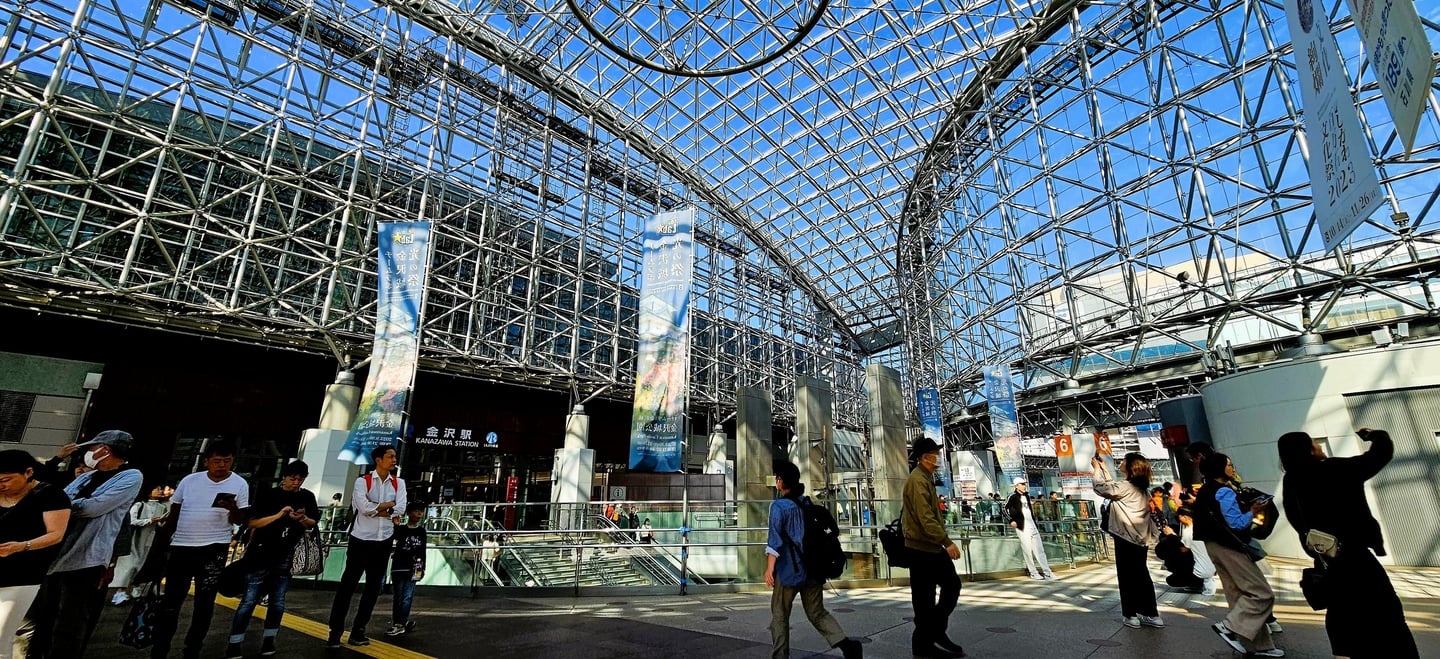

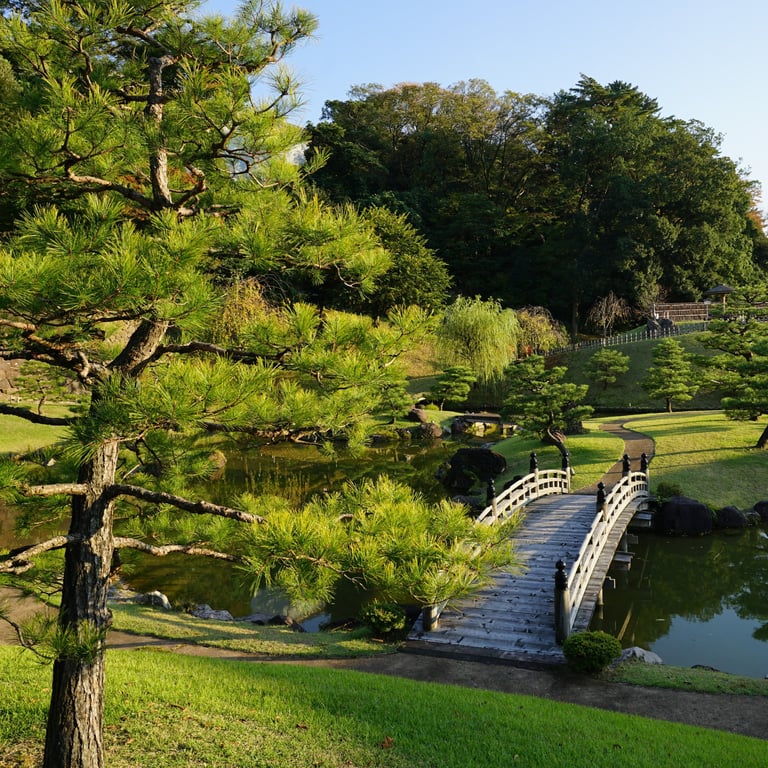
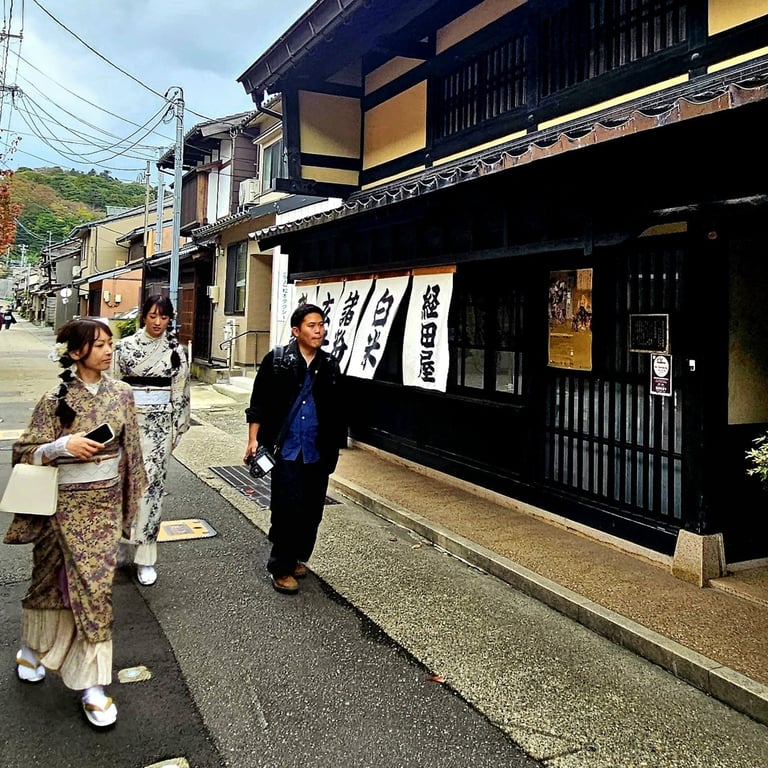
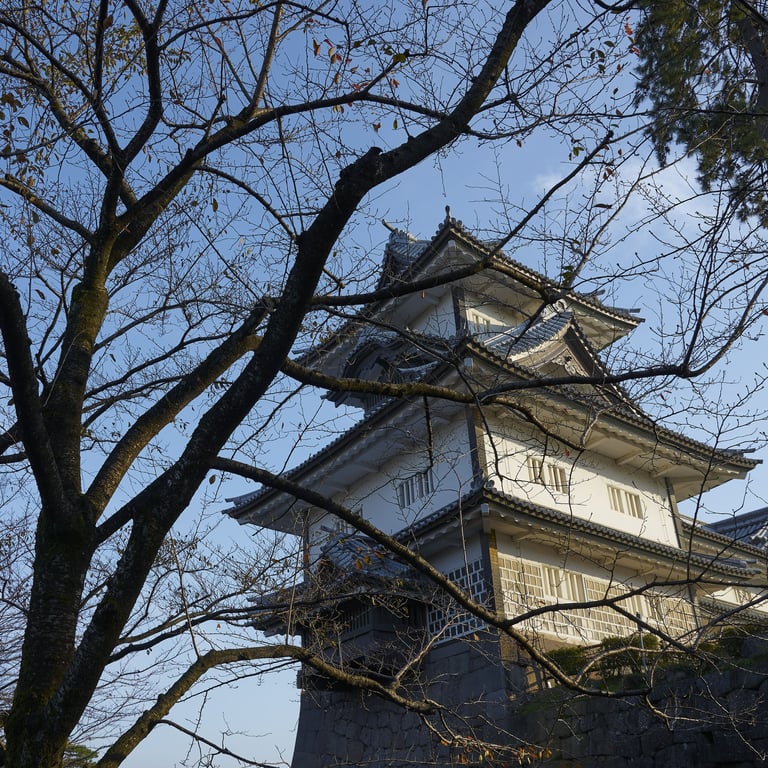
City Arcades
Still got it
A quaint shopping experience found in Japan is that of shopping arcades. These glass-roofed thoroughfares pre-date the bigger out of town malls and are located within easy reach of the town centre or a large station. Many of the outlets in them are non-franchise and look as though they have been there since forever. Perhaps that is what appeals, a set of quirky choices that buck the latest retail trends. There’s always a crowd wandering along, so something clearly works, and they often seemingly stretch for miles. Pictured here: Nakano (Tokyo), Nagano, Kyoto and Otaru.
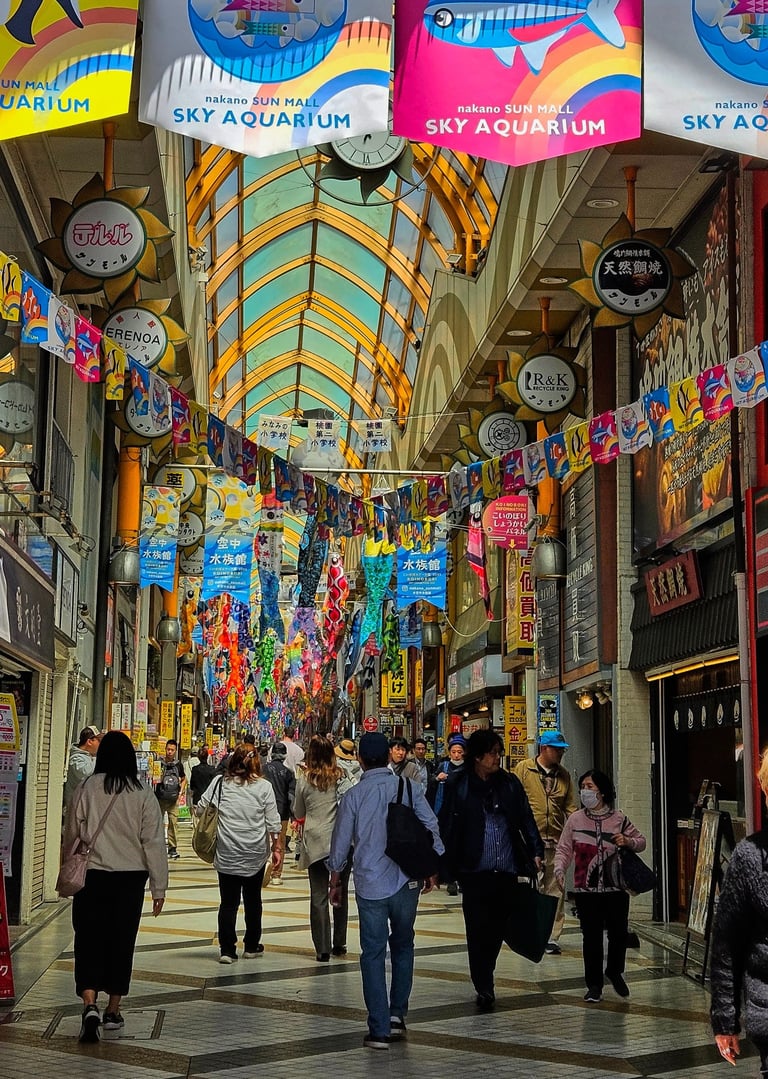

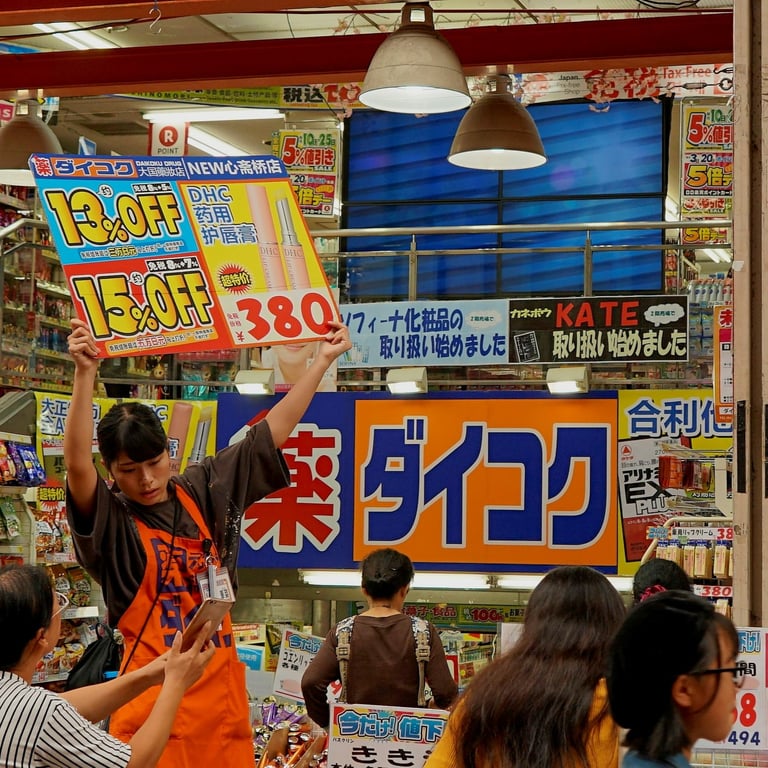
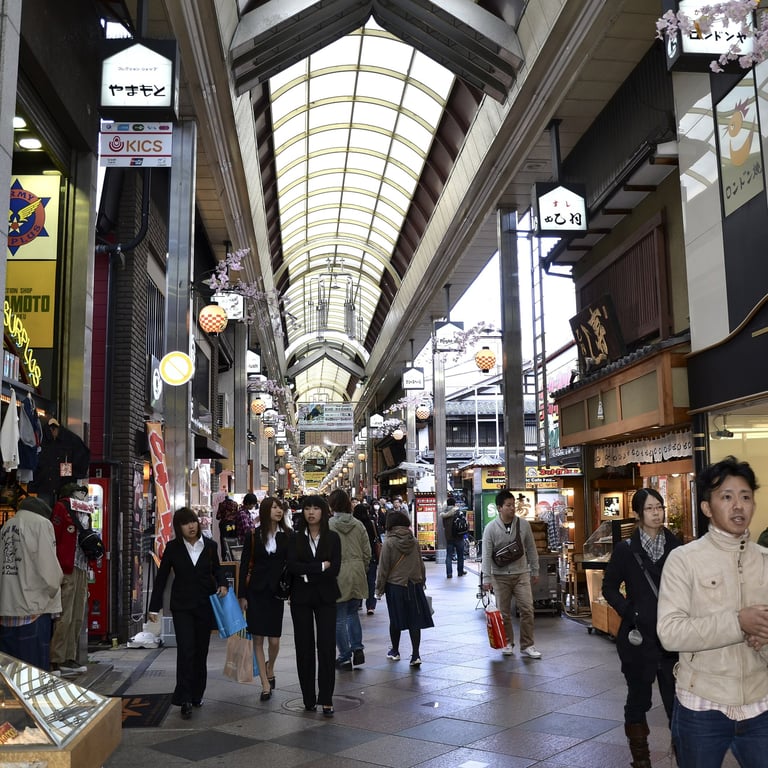
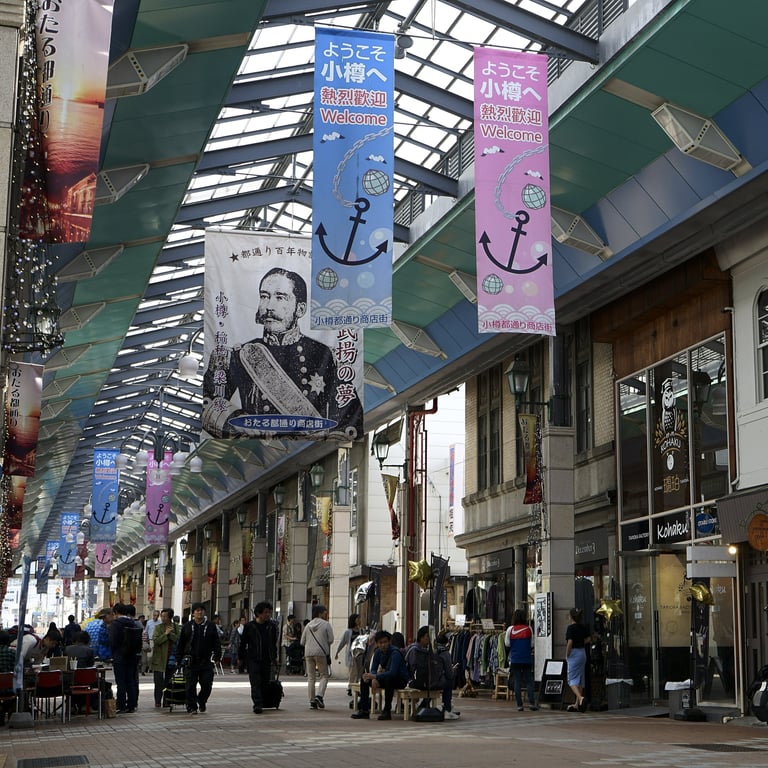
The Nebuta Festival, aomori
Drowsiness begone!
The Nebuta Festival is held in Aomori in the first week of August and can attract two million spectators. The festival is comprised of up to twenty giant floats featuring Nebuta creations of illuminated, decorated paper over a wood and wire frame. Nebuta artists are much lauded, with only six ever being granted the title of ‘Master’. The festival owes it origins to the warding off of drowsiness caused by sleep demons, the natural enemy of the local farmers. Quite right, too! Previous Nebuta designs are on display in the Wa-Rasse, which is the city’s nebuta museum where you can appreciate the size of the 9 metre long and 3 metre tall behemoths.
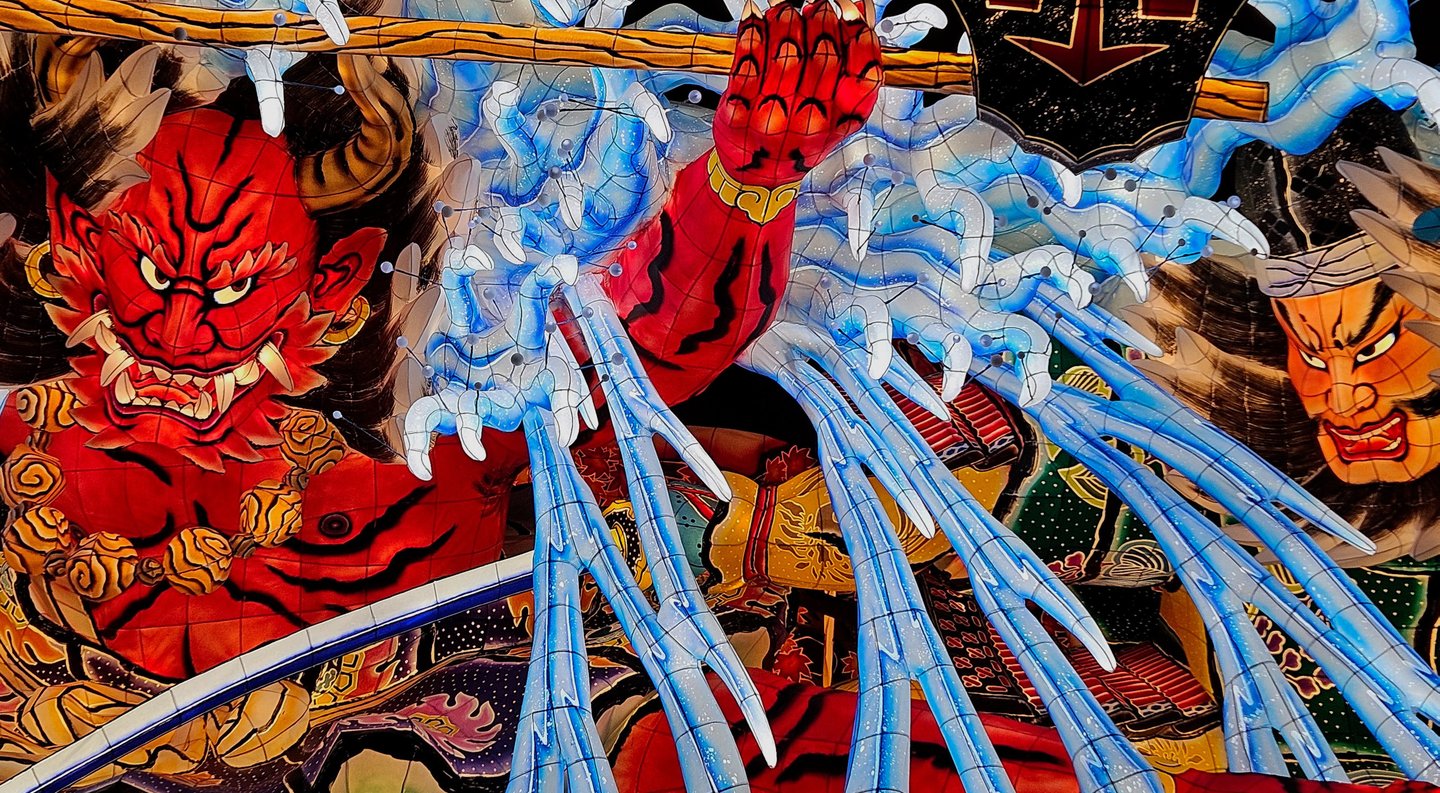

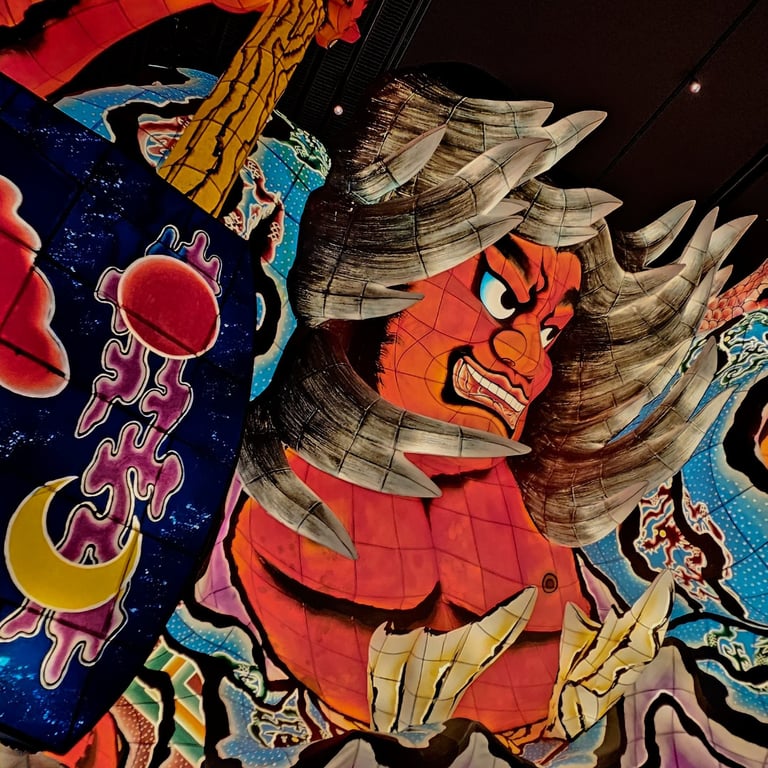
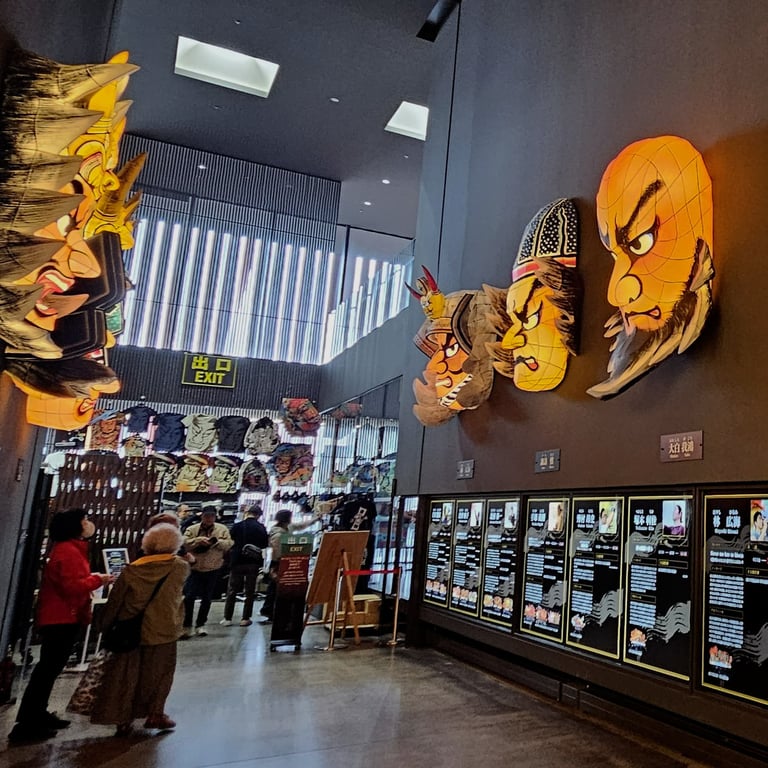
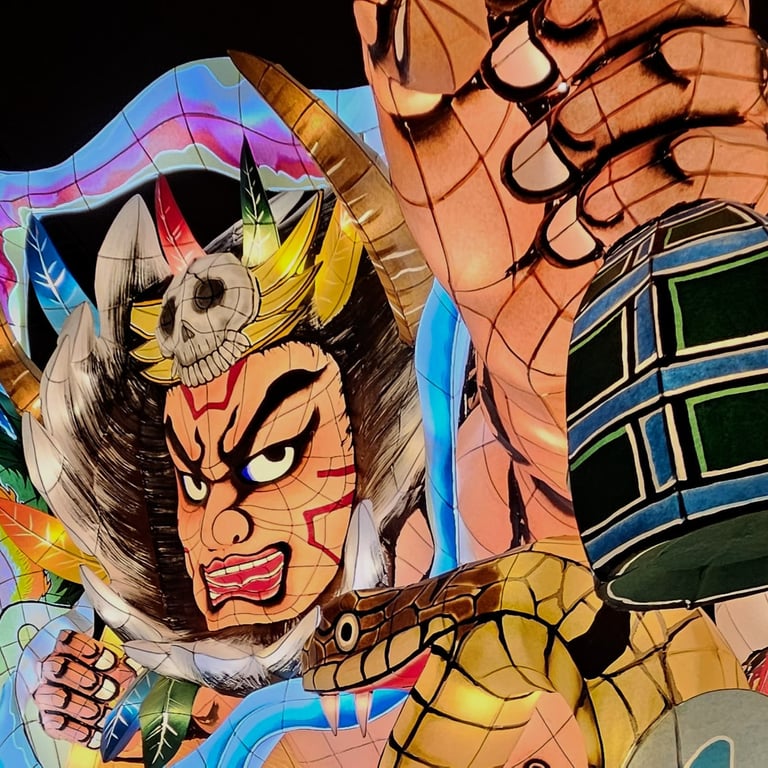
ginza, tokyo
Swish alert
Ginza is an upmarket area in Tokyo, a kind of Bond Street. It's a place where the high-end brands originally staked out territory before they also made their home in the malls that came later. At weekends the main street is pedestrianized which makes for a perfect stroll in the sunshine or a sit-down if you are lucky enough to get a seat. Nearby market stalls provide for those who don’t feel like purchasing a Cartier watch. ‘No Omega today sir, how about a jar of marmalade?’
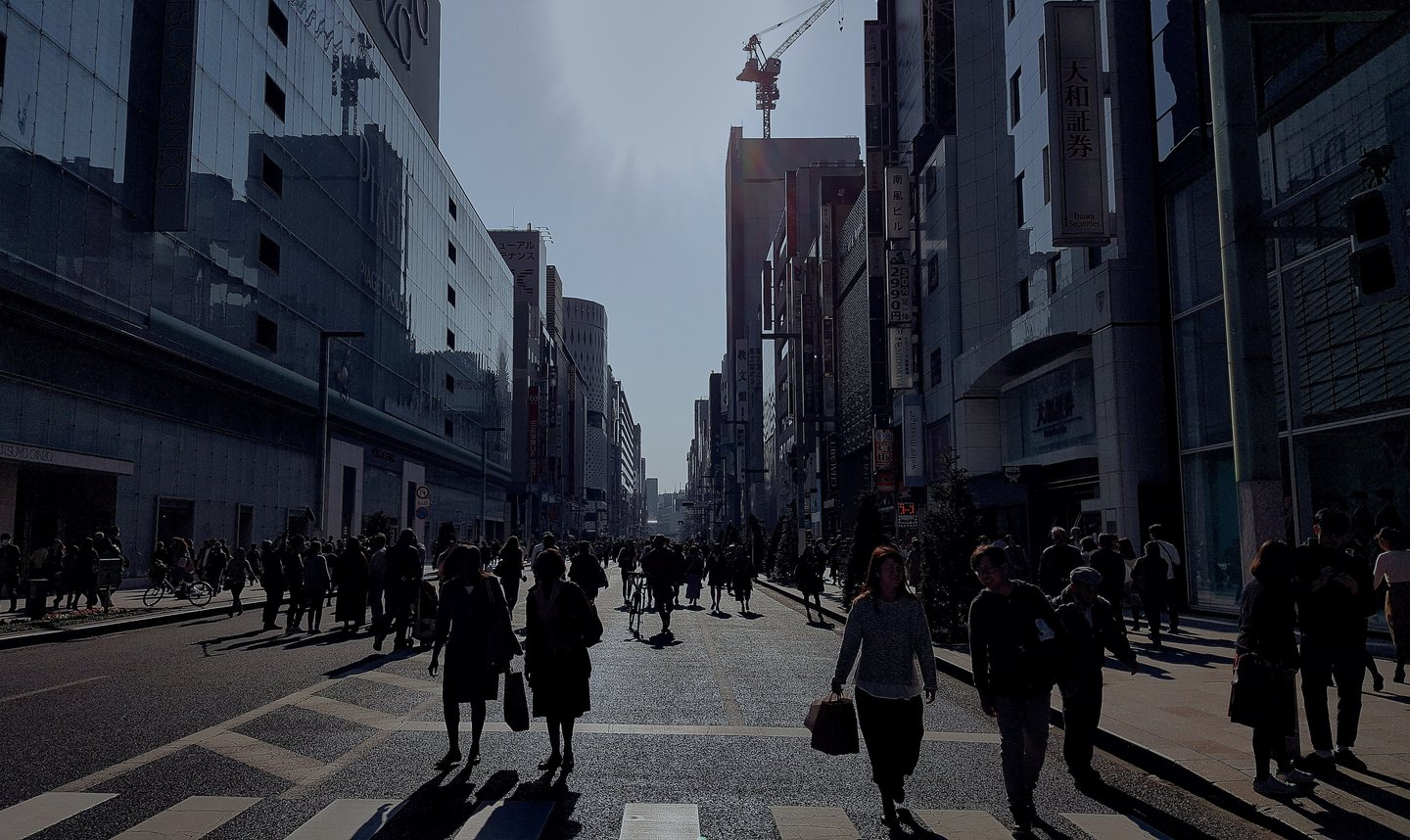

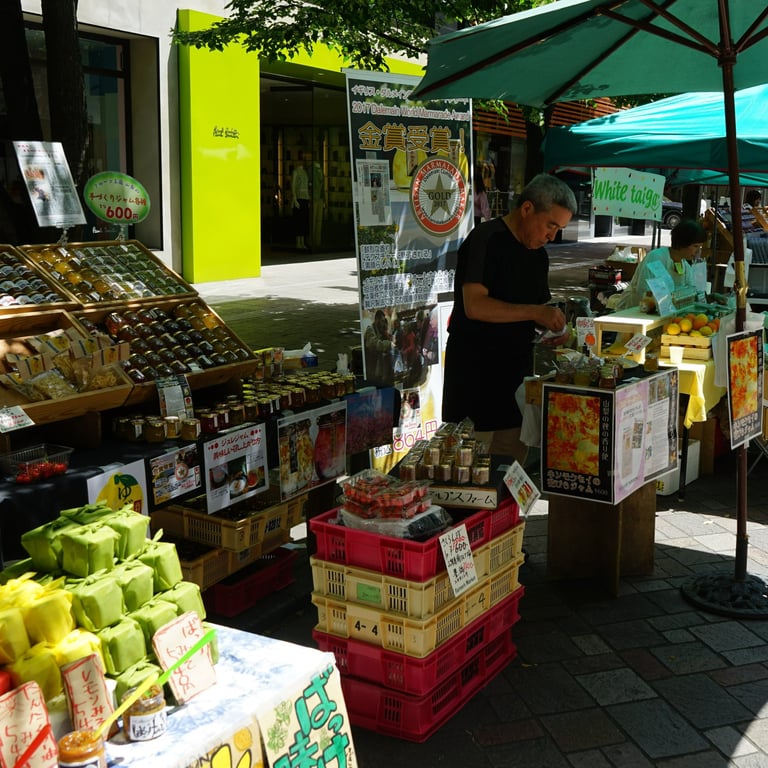
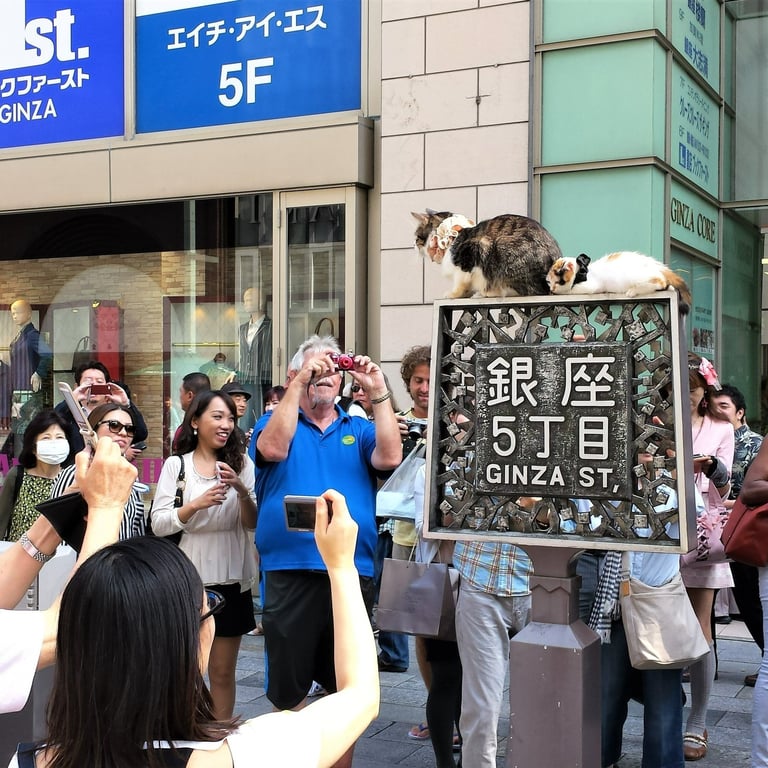
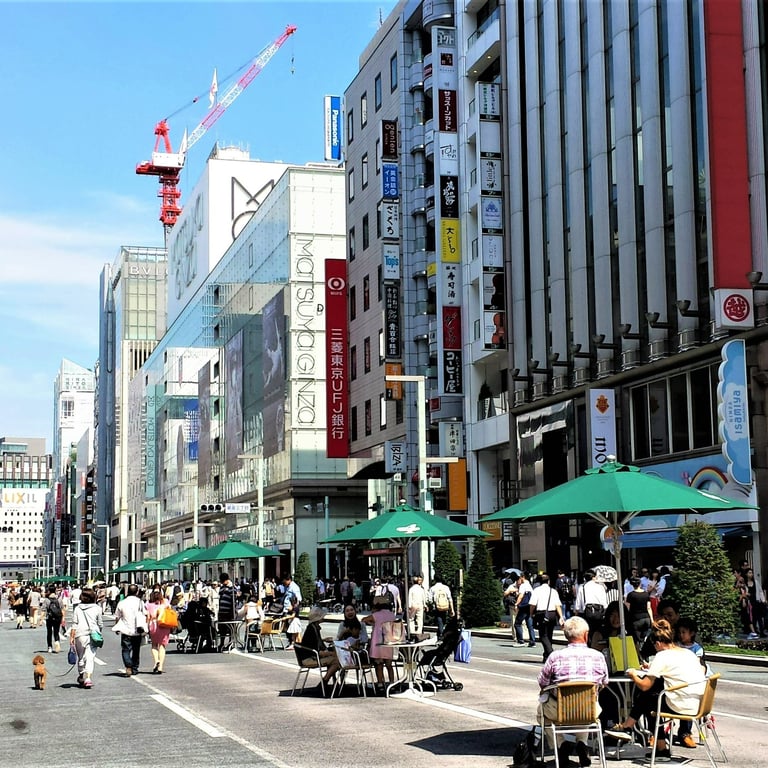
toyako, hokkaido
Huge caldera
Lake Toya , near Toyako, on the island of Hokkaido is a caldera or crater lake which formed 110,000 years ago. It is roughly circular with a circumference of some 10 kms. The Nakajima Islands in the middle of the lake are lava domes dating from 50,000 years ago and give the lake its picturesque appearance. The islands are uninhabited apart from wild animals and a summer museum for visitors. On the southern rim is Mt Usu, a still active volcano, which erupted recently in the year 2000. You can drive round the pretty lake or take the ropeway up to the Mt Usu Observatory for a windswept view down the coast or back towards the lake.
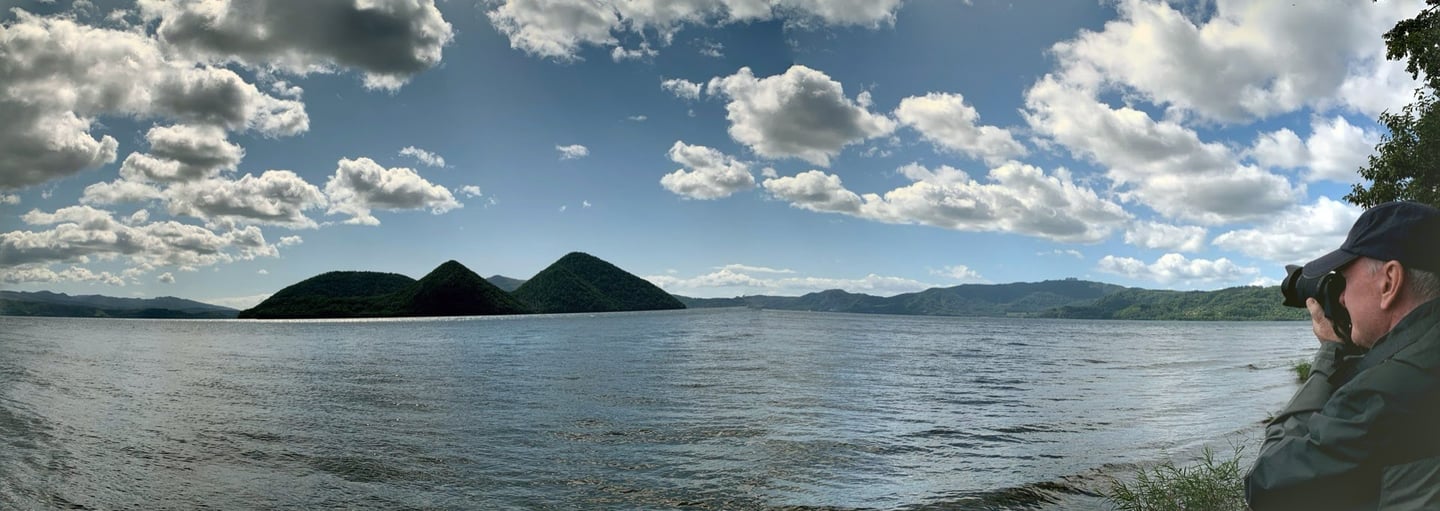

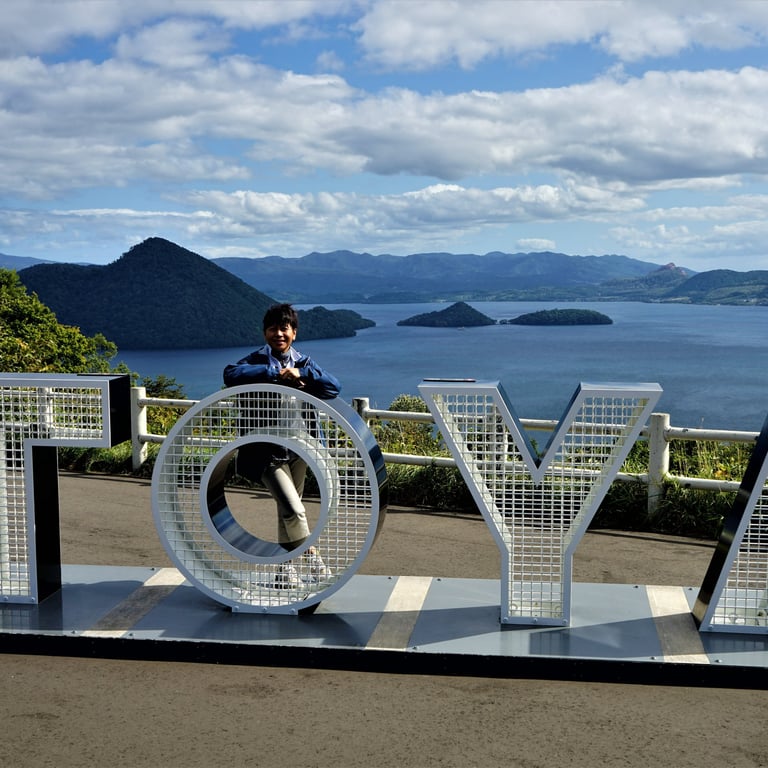
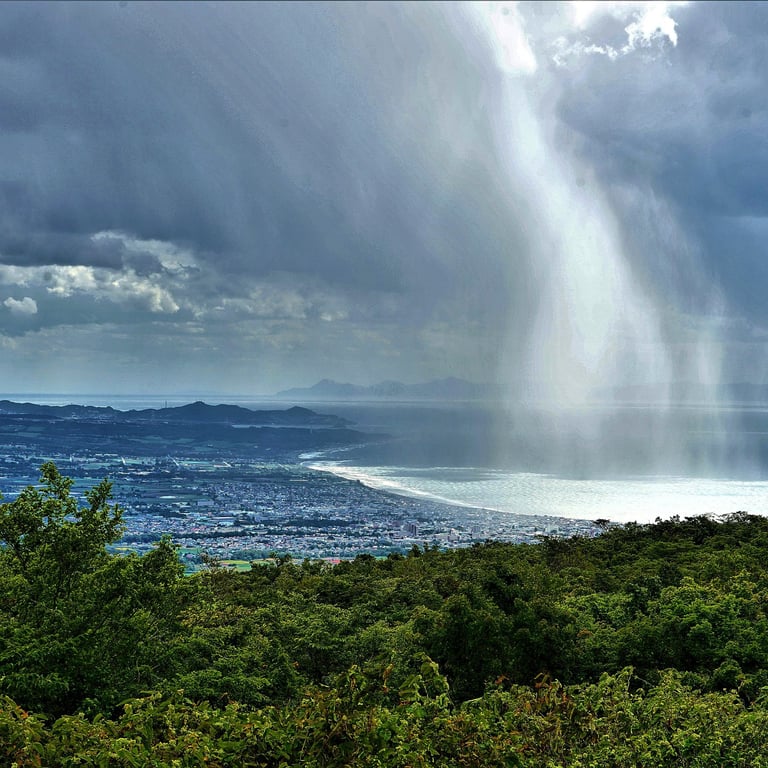
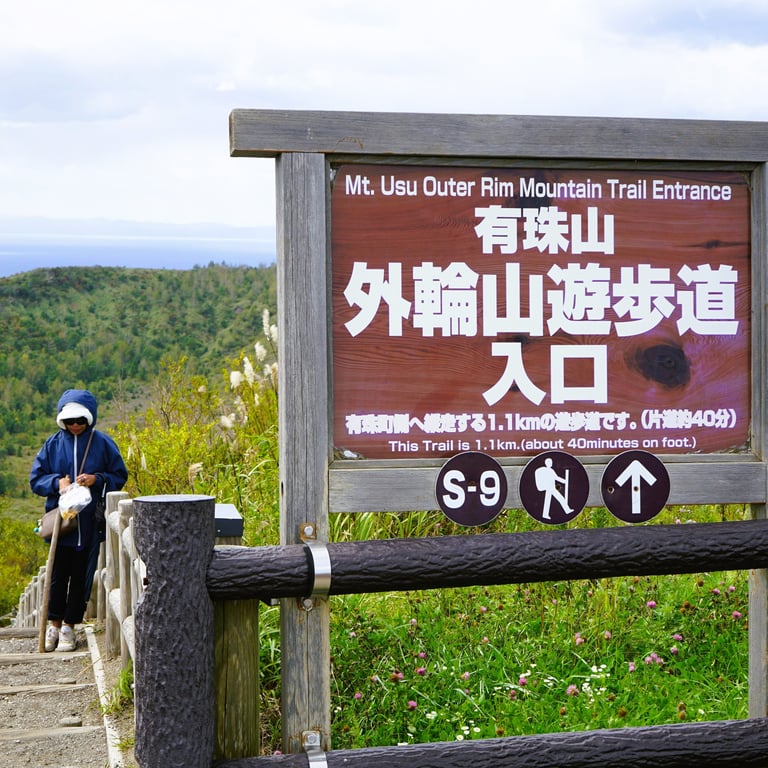
Urban rail network, japan
The daily commute
Commuting by train in Japan is a staple for the largely urban population, and often a rite of passage even for elementary aged kids. Organising it is a prodigious feat of logistical planning. These figures for Japanese stations are millions of passengers per day: Shinjuku–3.6M; Shibuya–3.0M; Ikebukuro–2.5M; Umeda (Osaka)–2.3M. The list goes on endlessly. So, cycle from the house, park your bike and dash for the train - how the day begins for so many. There is such a buzz of excitement as you press your Suica Card to the automatic gate and join the throng; or do the same to exit before seeing what’s for dinner – whatever’s left in the pre-packed sushi section of Perie supermarket, probably! As a visitor, just bite the bullet and join in. Your phone app will plot the route for you and everything will go like clockwork, exactly as published.
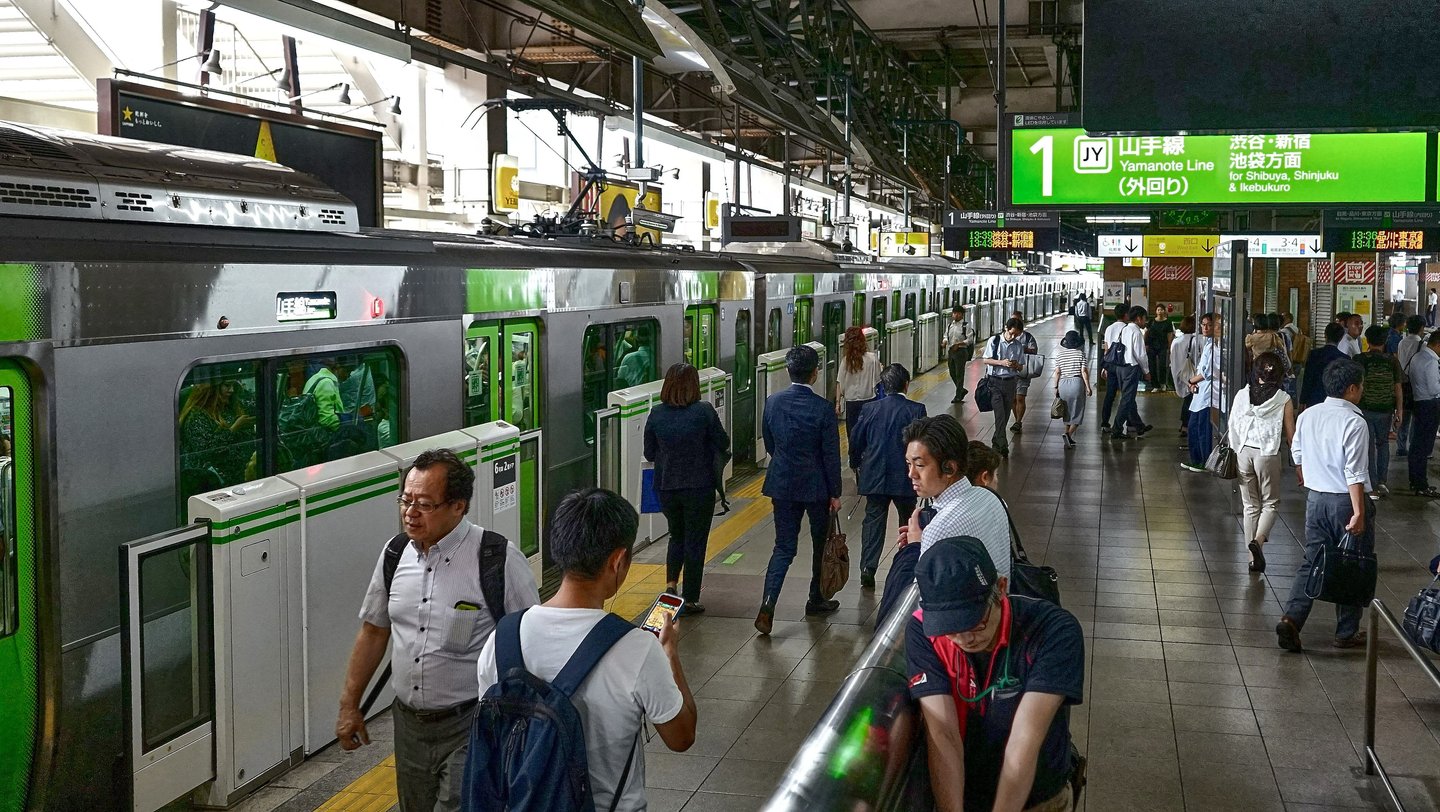

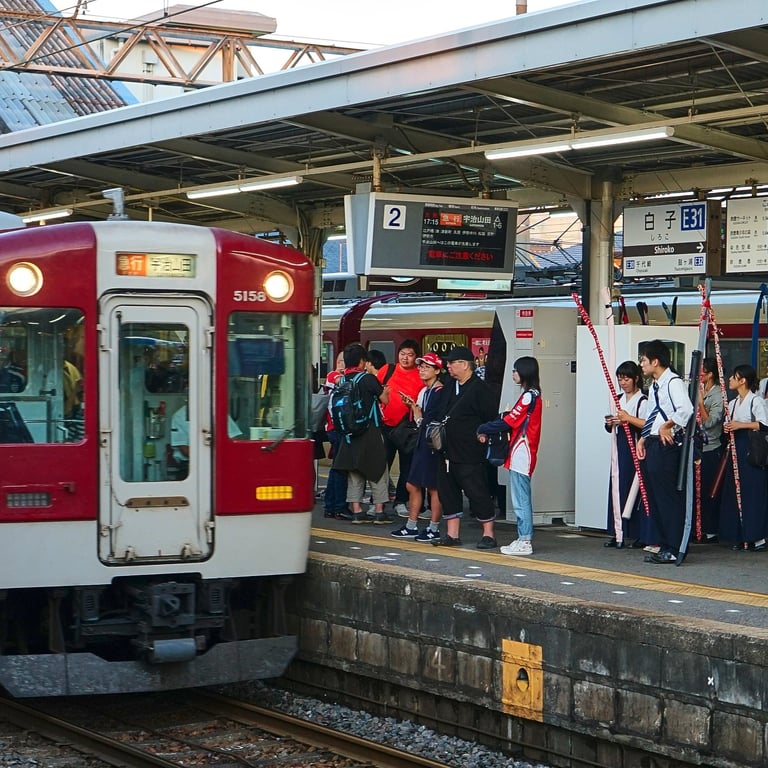
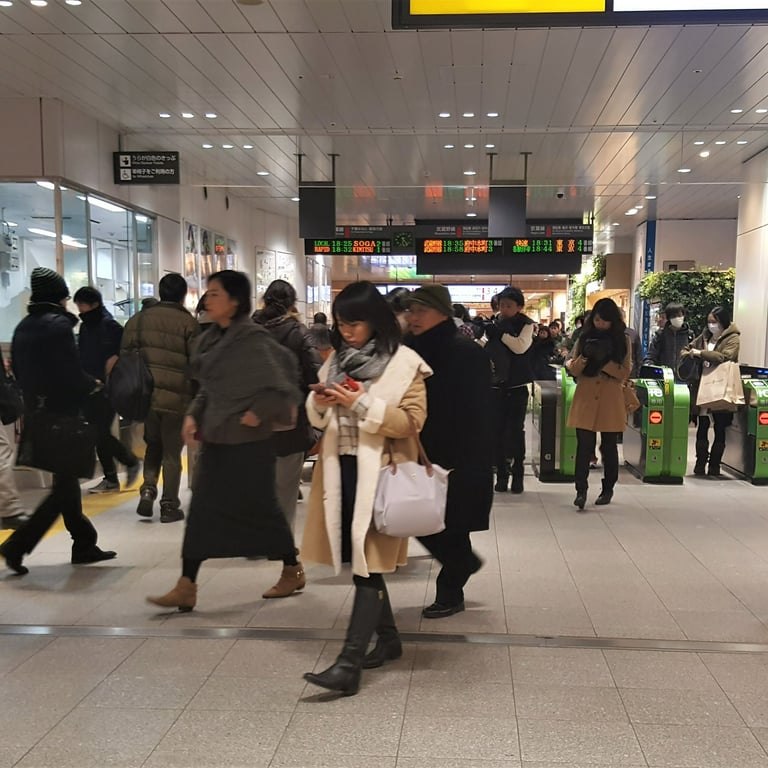
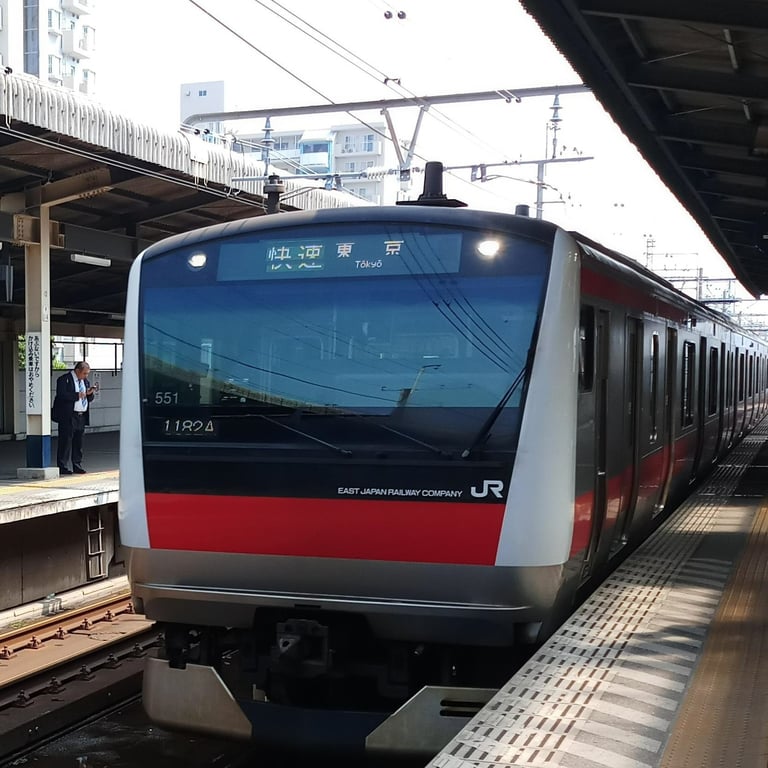
dotonbori, osaka
Decisions, decisions...
Dotonbori in Osaka is known for its restaurants, bars and neon. It gets its name from the canal and the street of the same name. But choosing a restaurant in Japan is often not as simple as it seems, especially if you don’t like sitting near cigarette smoke. You can go from place to place looking for a N/S area that is more than just a table with no ashtray on it. Frustrating. Added to that, ramen and soba are not really a Saturday night meal for me, rather a keep-the-cold-out winter lunch. So, even Dotonbori can be a challenge to find just the dining scene that you have been looking forward to. It will almost certainly be crowded as well!
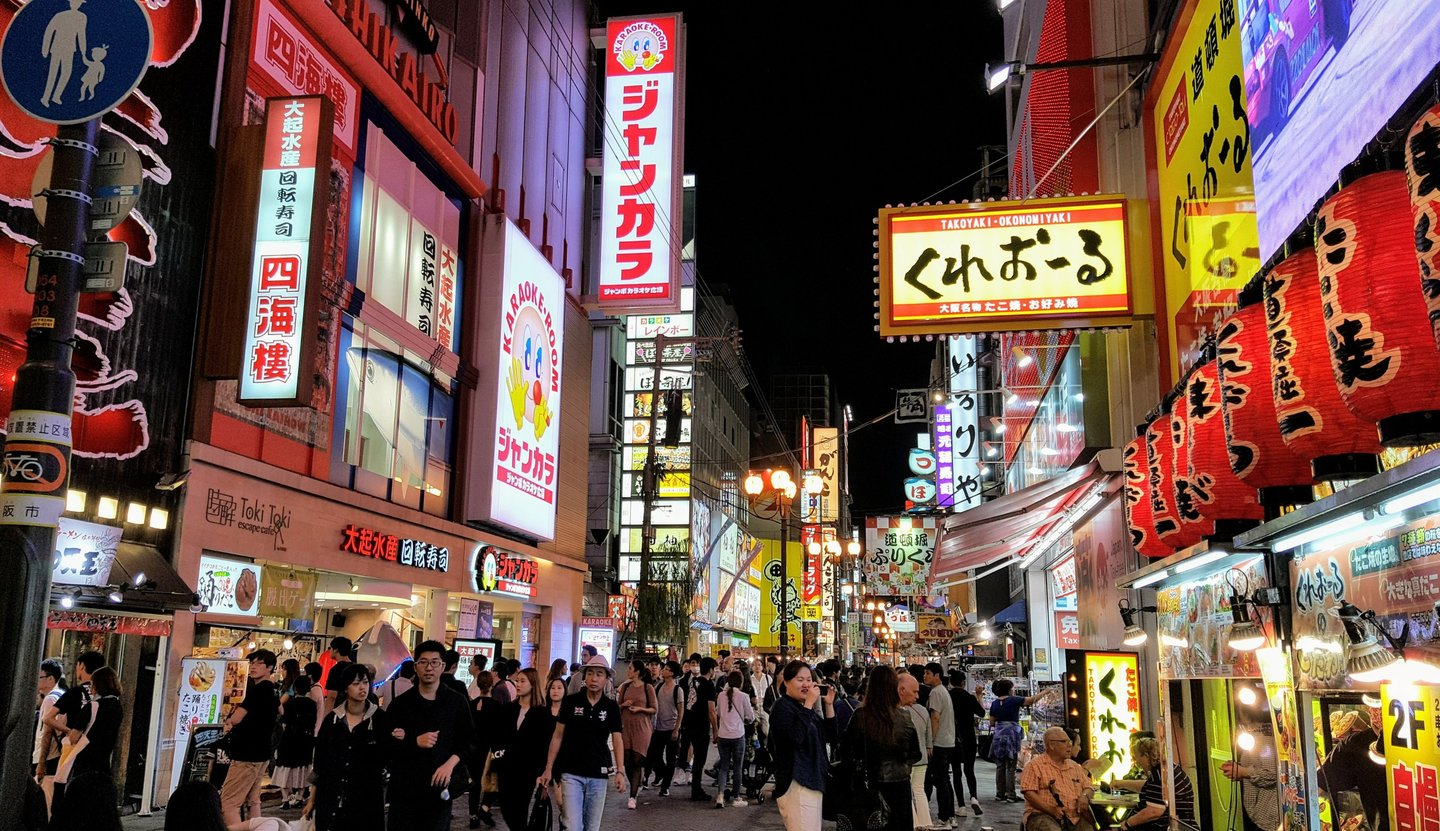

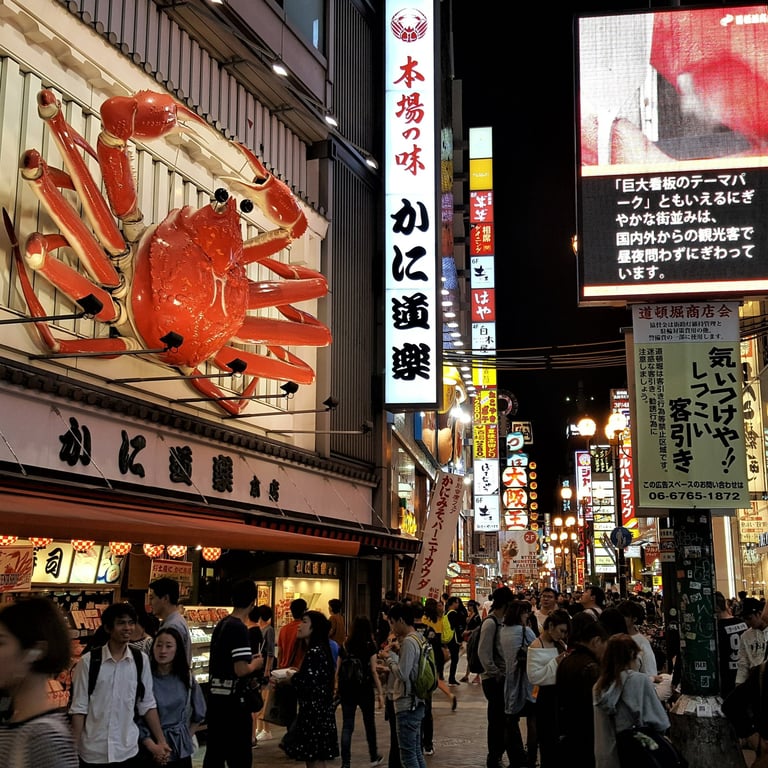
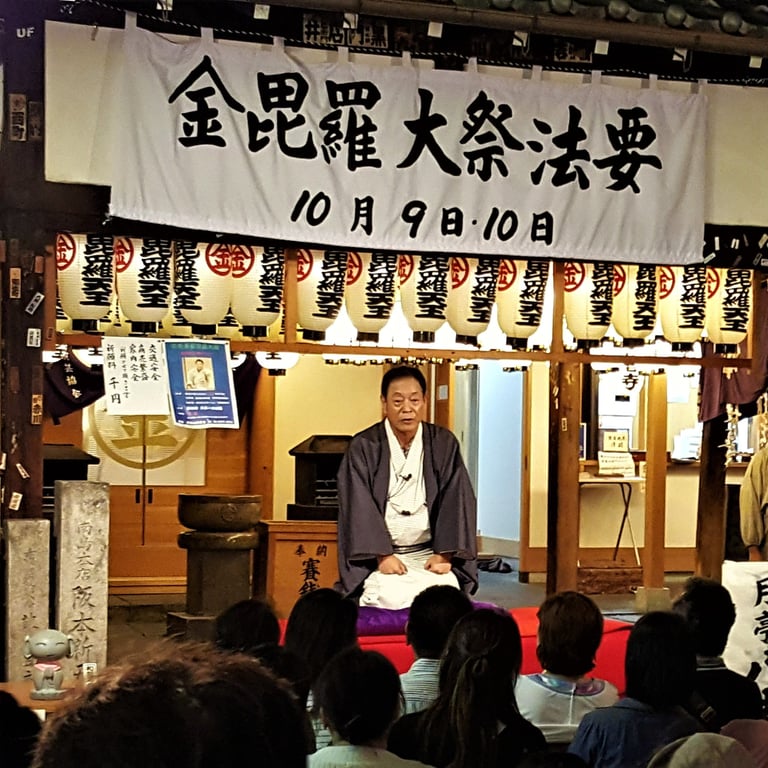
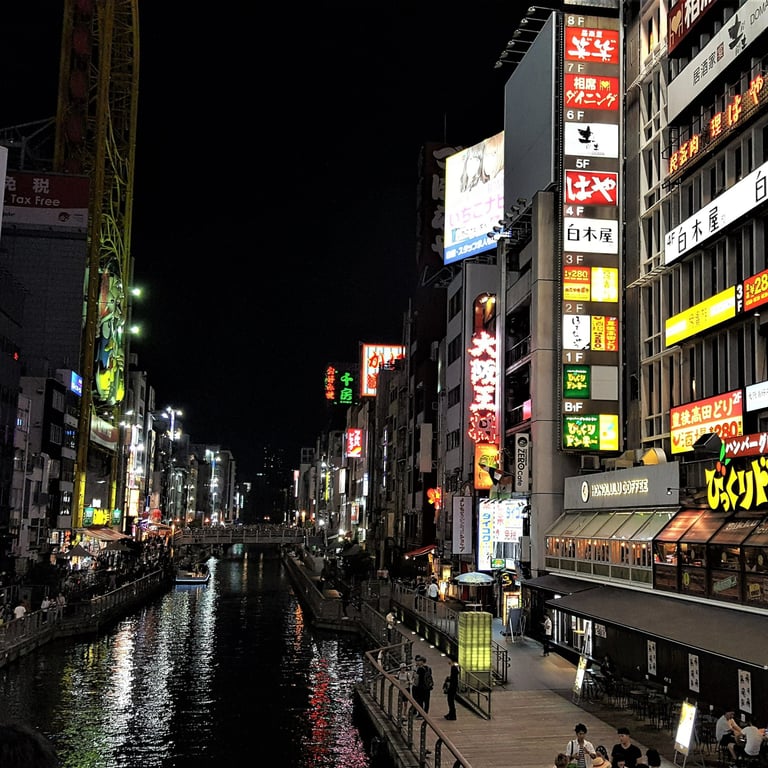
Nagasaki, kyushu
Sombre legacy
Nagasaki was the trading post open to foreigners when Japan was off-limits to the rest of the world. There is a re-creation of a 17th century Portuguese and Dutch island cantonment to which foreigners were confined. Guides in period dress show you round the lookalike Dejima Island settlement. There are also old 19th century residences of foreign traders on a hill overlooking the sound. The town sits inside a bowl surrounded by hills, ideal for shipping over the years, and finally as a target for events solemnly commemorated in the Atomic Bomb Museum.
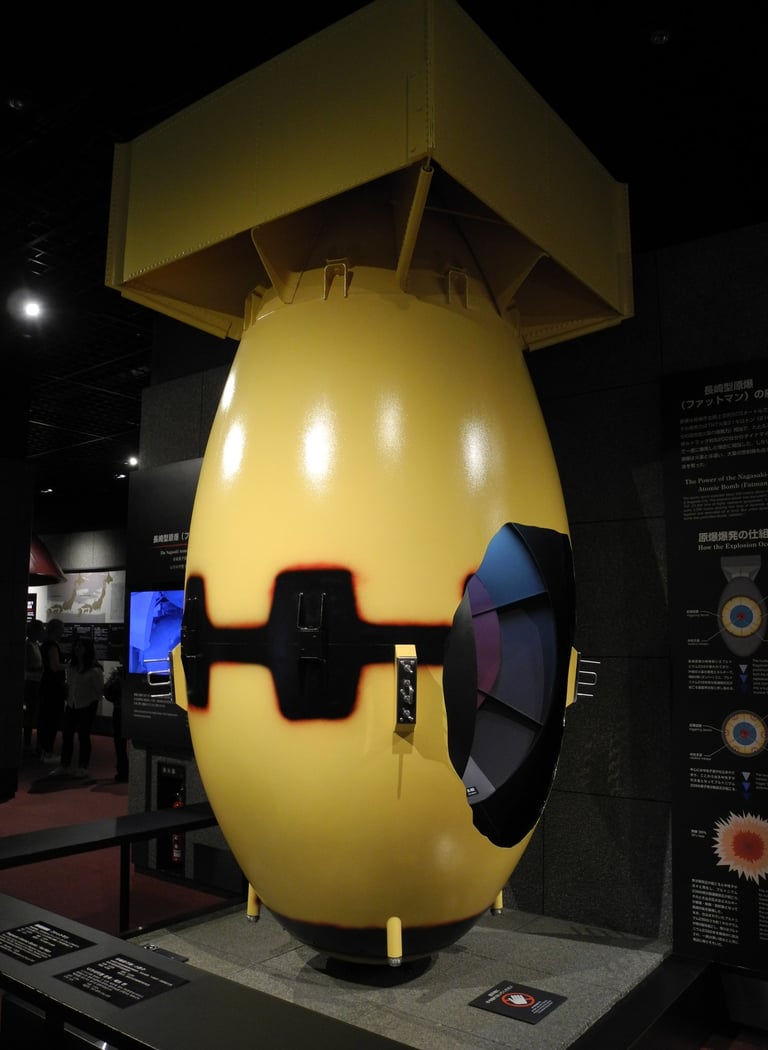

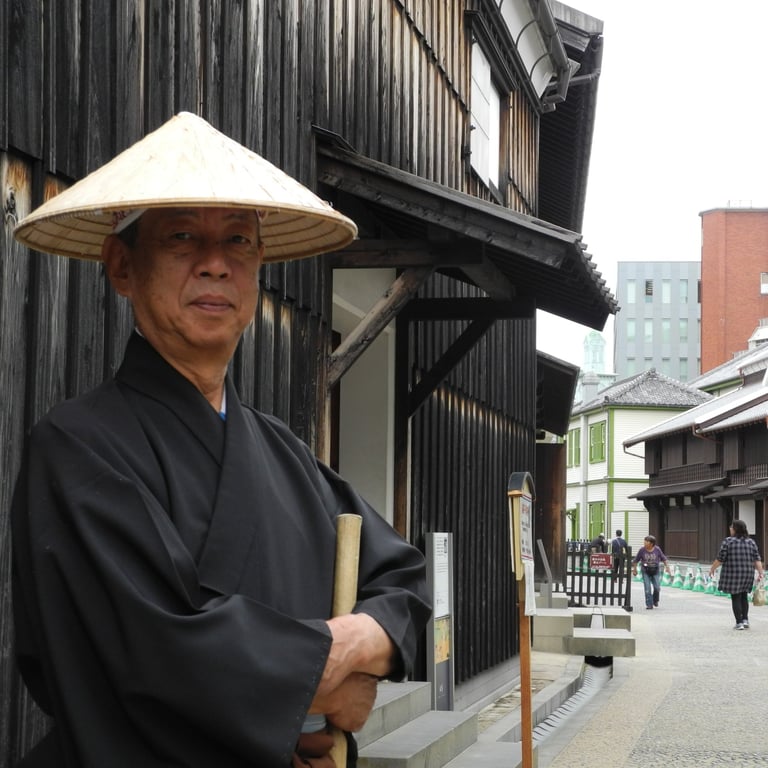
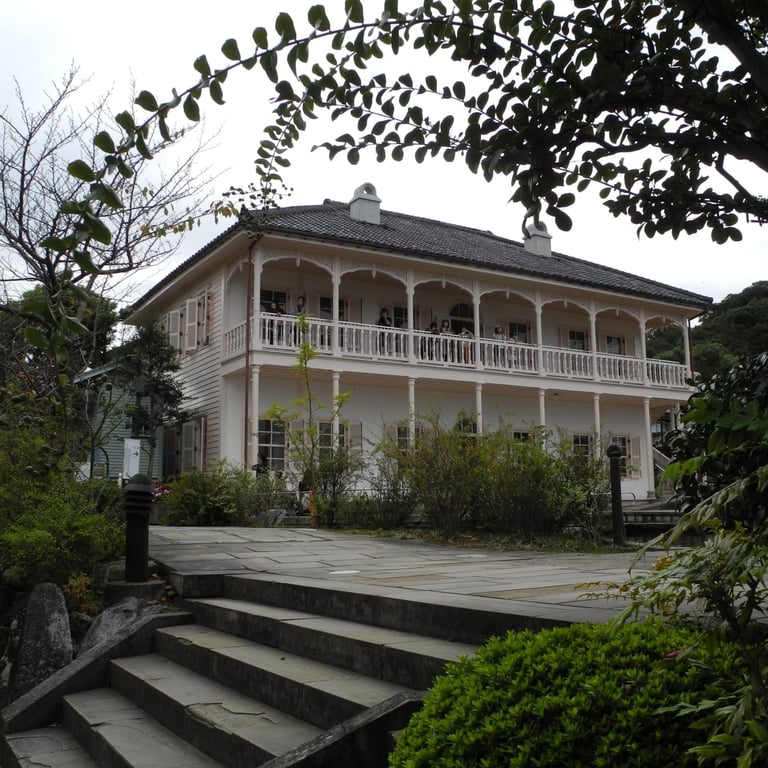
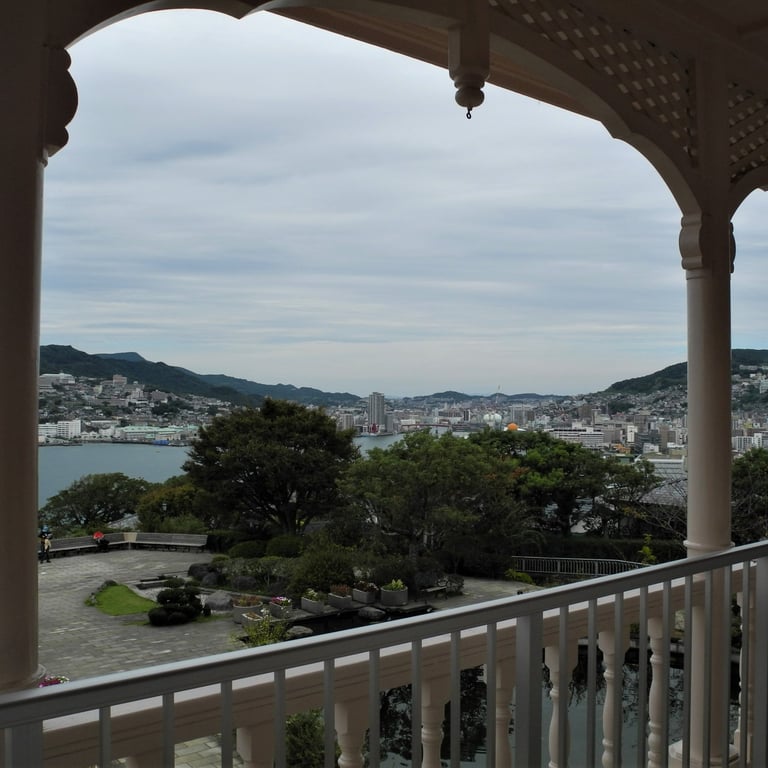
Baseball in Japan
Catch a game!
A baseball game in Japan is such an exciting spectacle, especially a night game! There is something formulaic about how the fans chant, taking it in turns as they do; they also have a different chant for each player. Then come the cheerleaders, then up go the balloons, then finally the fireworks. You know what’s coming but it’s still great – as are the beer girls who bring your pint to your very seat. The rules of the game? You pick it up as you go along, so that you have an understanding of what the tension is all about, even if you don’t quite get why the fans are groaning or whooping about a particular play.
Pictured here: Yokohama DeNA BayStars, Chiba Marines and Tokyo Giants.
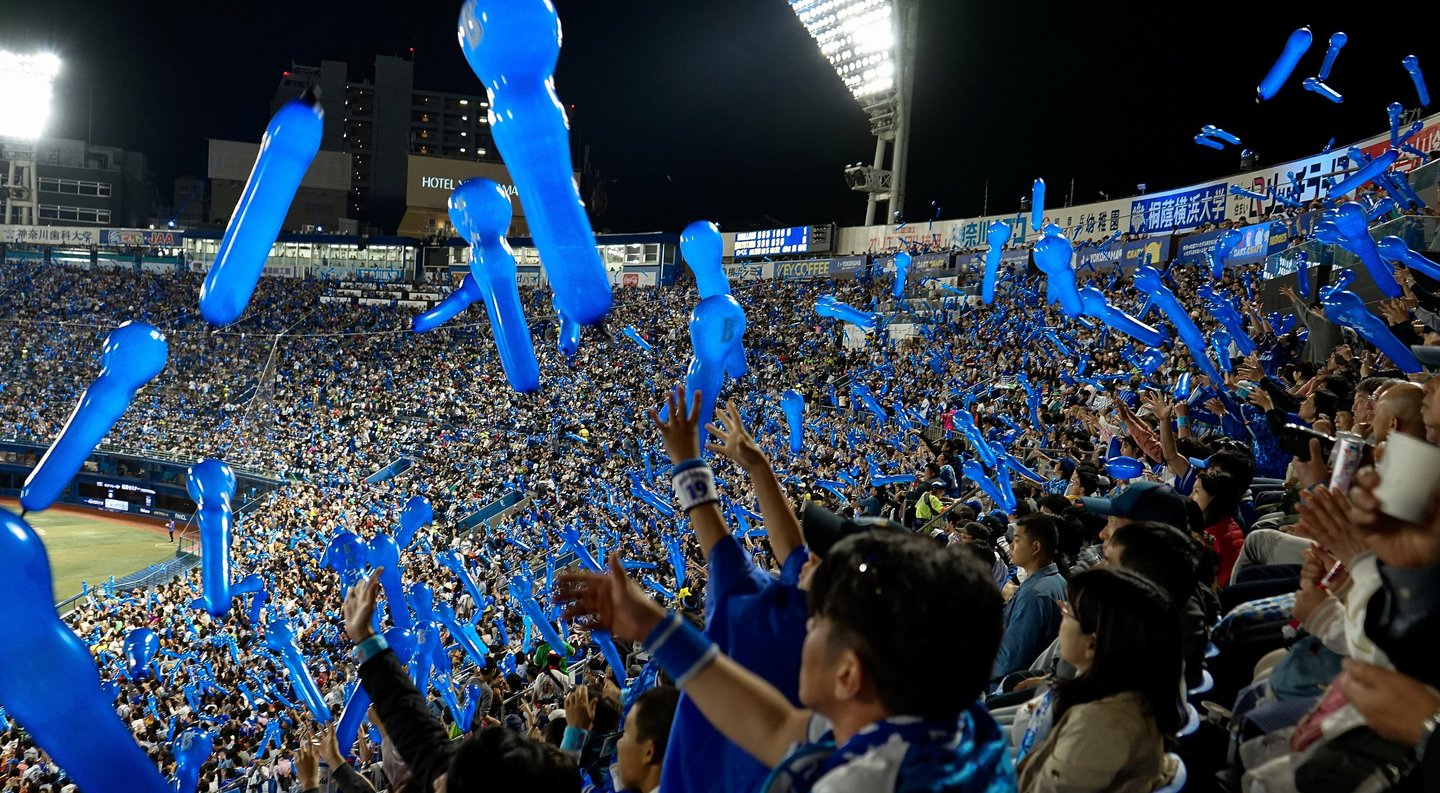

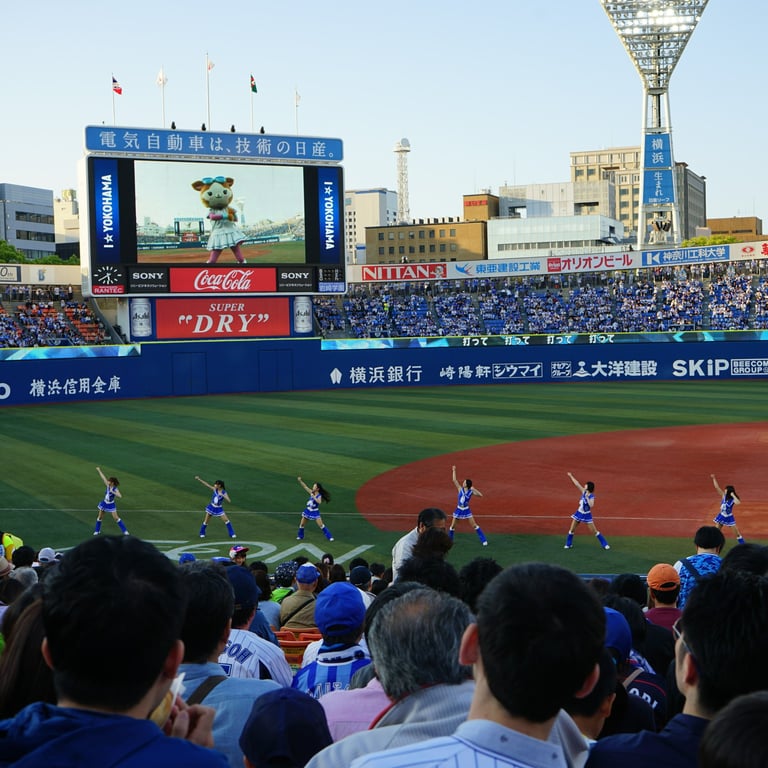
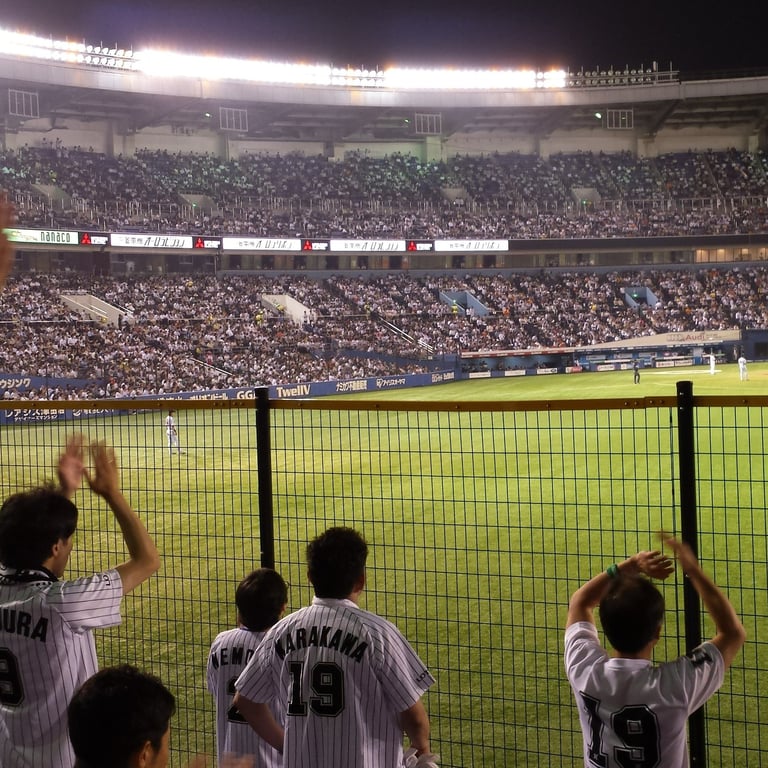
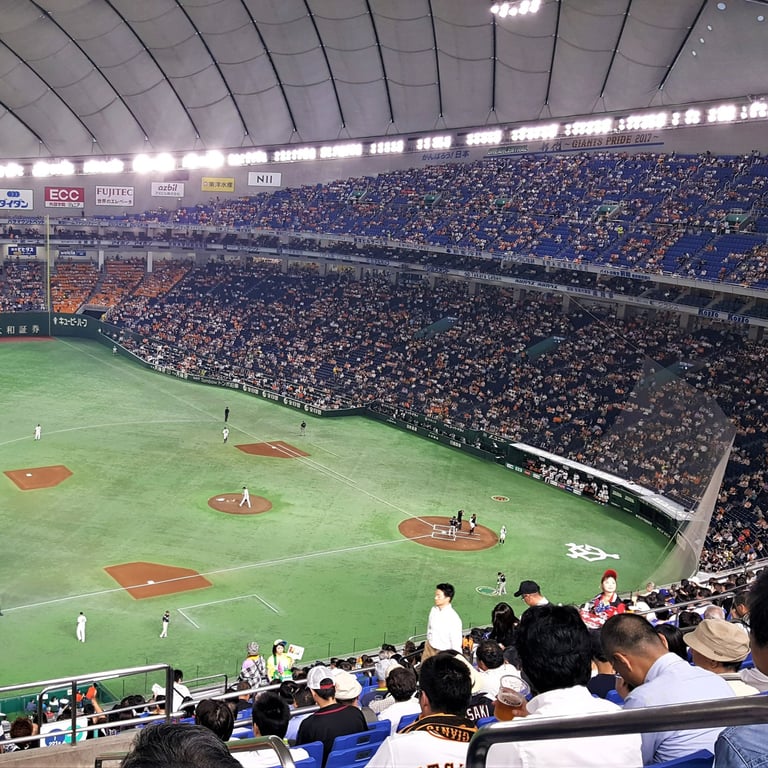
nara, nara prefecture
Former capital
The former capital is home to the world’s largest wooden building. Its various old temples and trading houses ensure that there is a steady flow of tourists ready to feed the deer that roam freely all over the parks. Amazingly, the first time that I was there I was on my bicycle and stopped one night on the way to Koyasan. When someone later said to me, ‘What about all those deer, eh?’ I replied, ‘What deer?’ I never saw a single one. I wonder where they all were? The place is teeming with them and deer-food paper bags are on sale everywhere. A complete mystery!
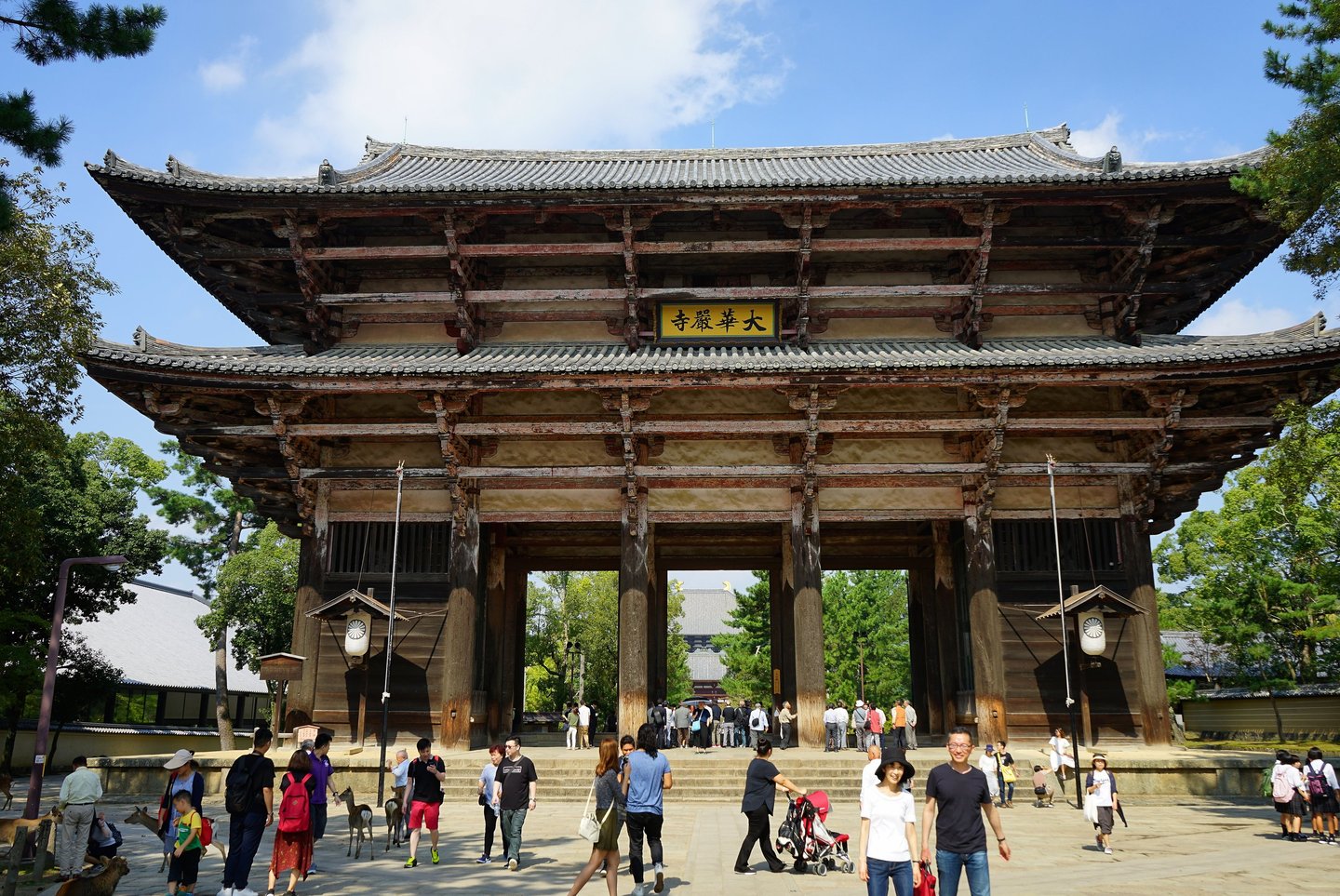

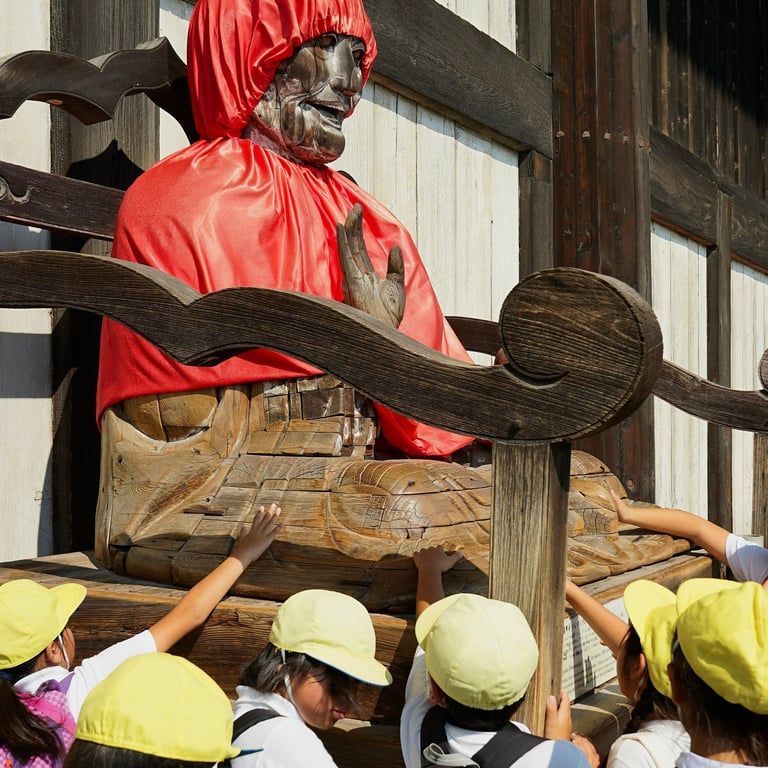
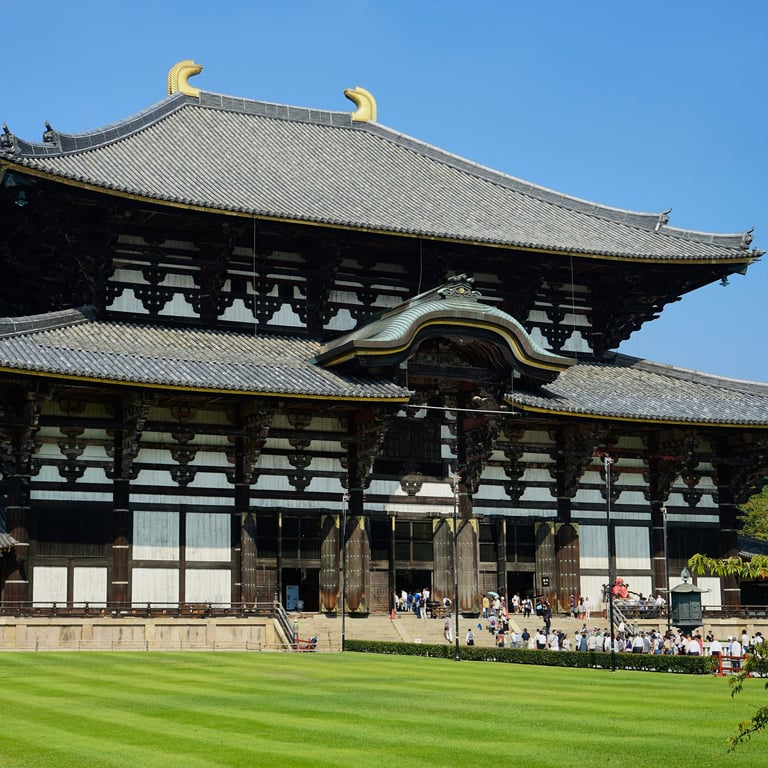
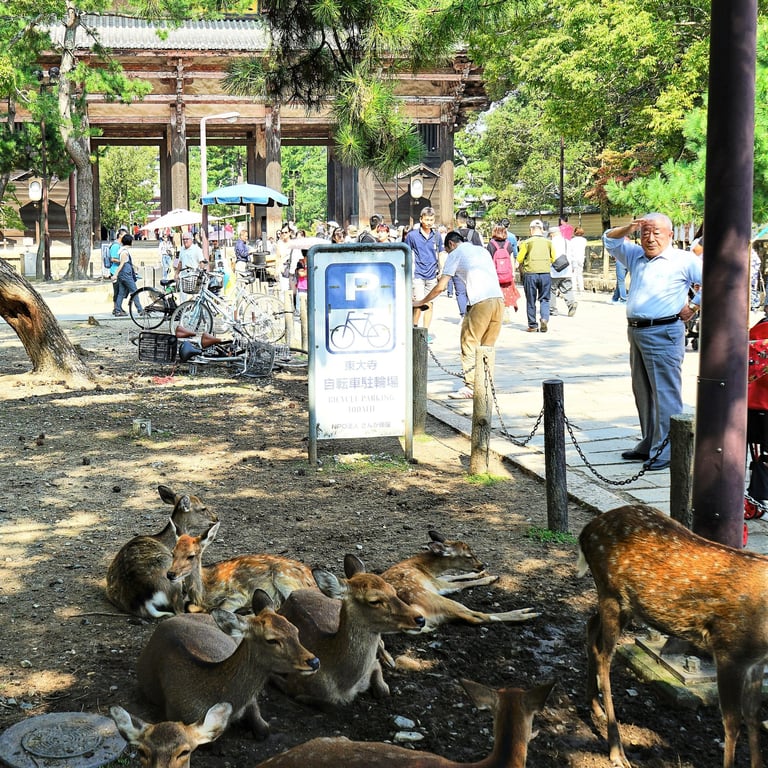
Tokyo big sight
Beat the Clock
The Tokyo Big Sight is an arena that hosts events next to Odaiba Seaside Park, which is adjacent to one of the venues for water sports in the Olympics. It is big, it’s true, and quite a sight too - so, well named! The hangar sized halls are set up such that several expos can take place at the same time. This particular one was about floral arrangements, which happens to be a thing in Japan. There were all manner of weird and wonderful entries, along with ‘have a go yourself’ tables and a TV live action, timed competition - a kind of 'beat the clock' with a random selection of flowers and stalks. So creative!
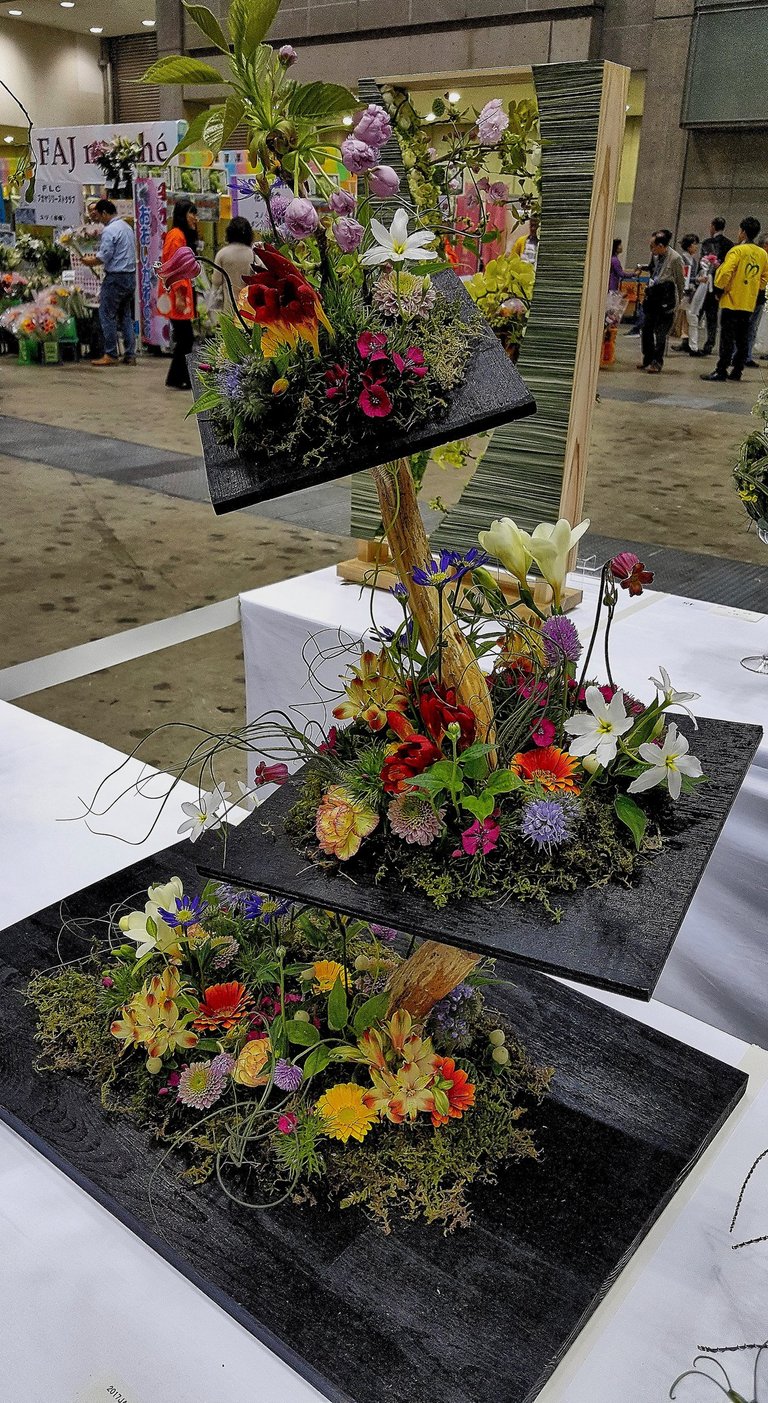

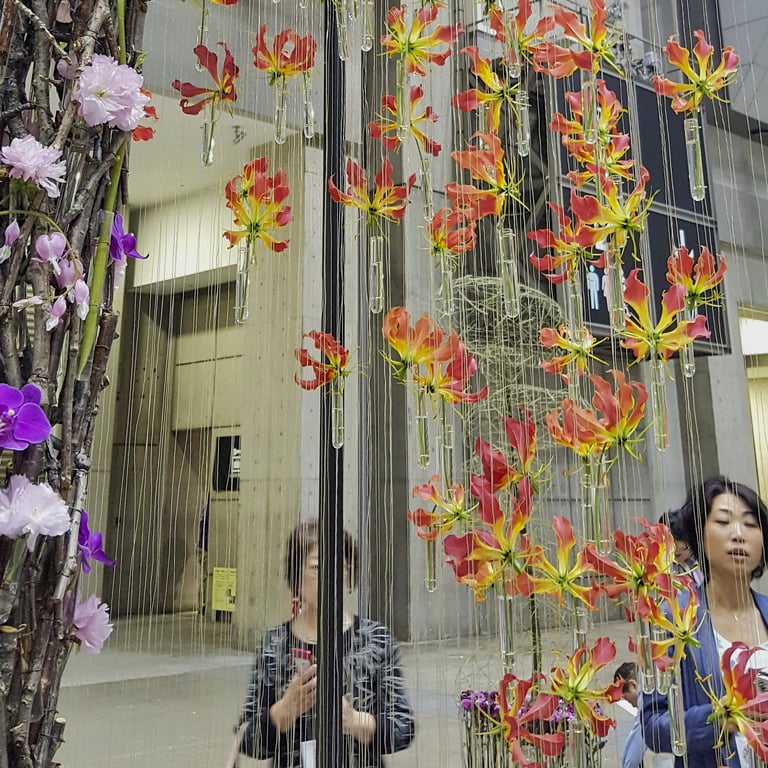
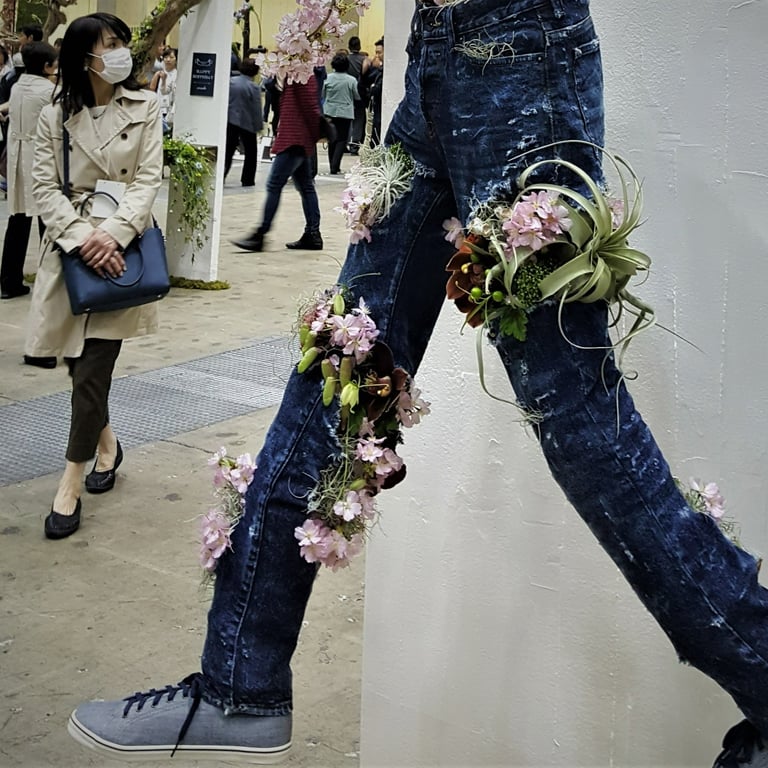
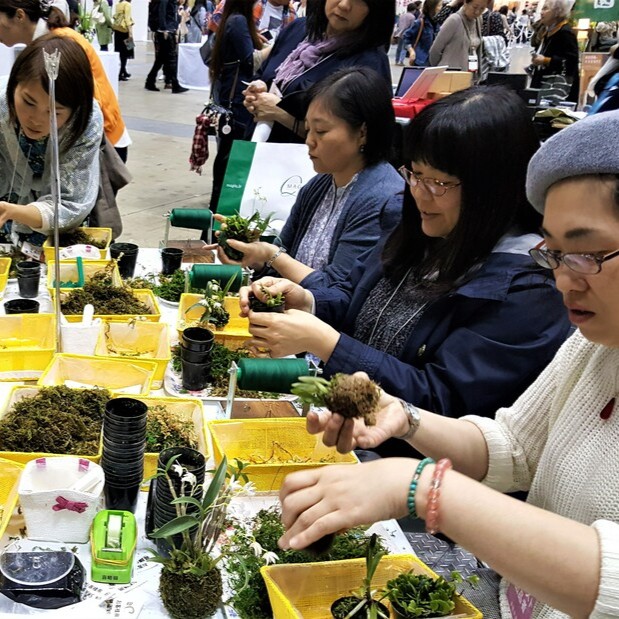
Sumo at the budokan, tokyo
Drama upon drama
Sumo at the Budokan is probably on all tourists’ lists. You will likely be seated high up in the gods, so that the nuances of the sport are lost on you. Still, you do get to see the ritual that accompanies the spectacle. The traditions that are so important to sumo are well hidden to the untrained eye but the local fans, as in all sports, know what’s what, what’s great, not-so-great, or what’s unexpected. They will have been following the personal trials and tribulations of the participants for weeks, in newspapers and on TV, giving hugely significant meaning to the actual performances. ‘Sanctuary’ on Netflix is recommended if you want to find out more.
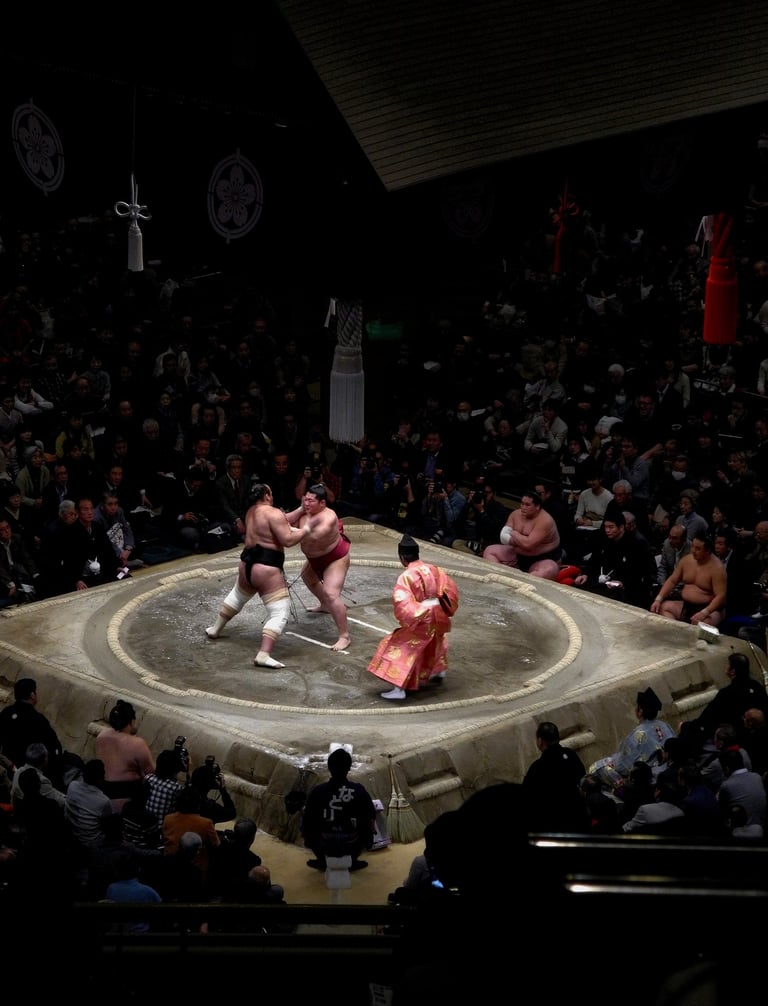

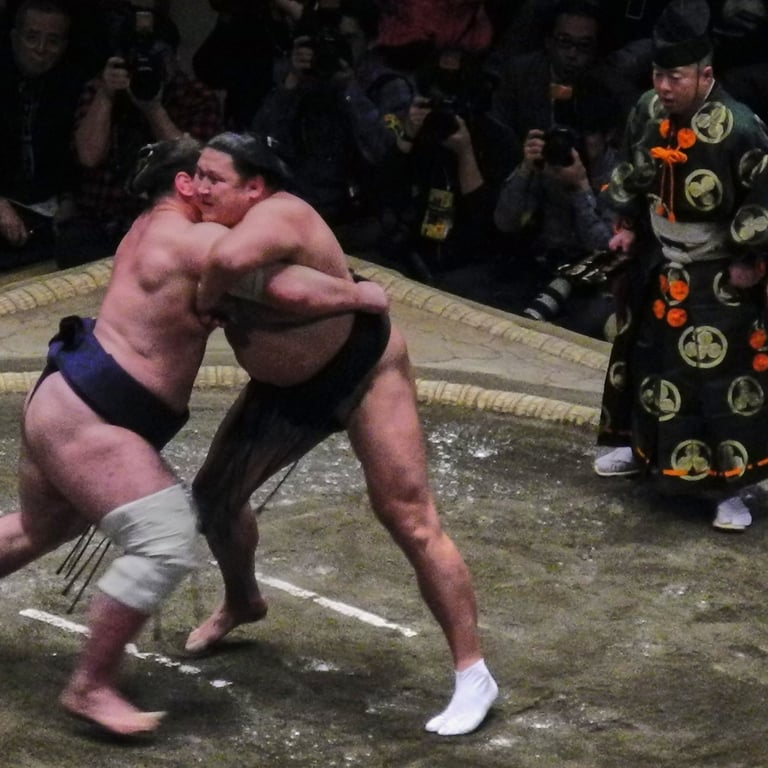
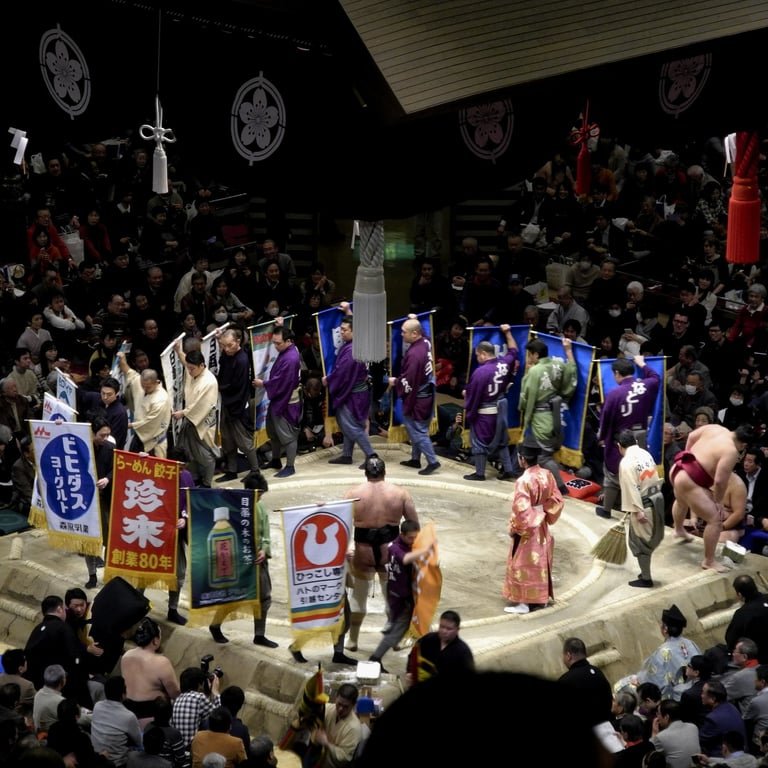
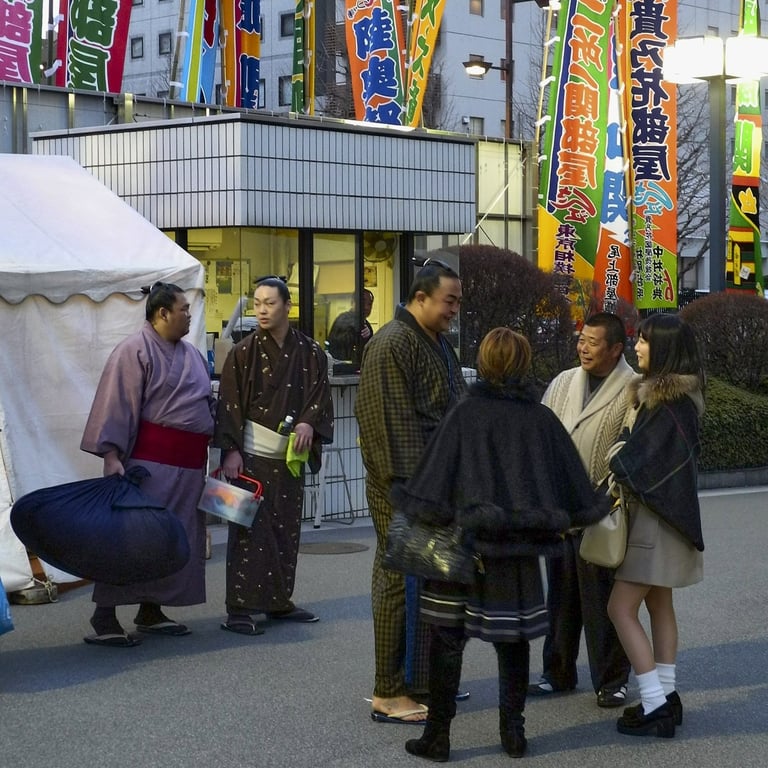
kemigawahama, chiba prefecture
Must be mad!?!
Down the road from where I lived was a coastal stretch which was good for a walk, cycle or a coffee. Occasionally the wind would get up and the windsurfers would materialize right on cue (everyone checks the weather in Japan every morning, so they know what to wear when setting out from the house). Full marks to those guys tearing back and forth in the freezing sea. Such intrepid folks! The photos, being backlit, also capture the elements in play on that icy February morning. It was such a clear day that you could see Fuji-san on the skyline 160 kms away across the bay (top pic)! If you find yourself out that way (it may be that you are staying locally for a conference or exhibition at Makuhari Messe or that you are visiting Disneyland, a few stops away), you could have time for the coastal path which stretches for three kilometres all the way to Kemigawahama Beach where these photos were taken.





otaru, hokkaido
Year-round charm
Otaru is a 40-minute train ride west of Sapporo. Historically, it grew as a port town on the bay facing the Sea of Japan and initially flourished as a designated trading centre with the USA and UK. Later, from the 1920s, it prospered in more local trade when Japan ruled Sakhalin Island. Nowadays Otaru is a popular day trip from Sapporo, famed for its fresh seafood and sushi and the canal-side experience. The Otaru Canal presents as a pretty attraction with its Victorian-style streetlamps, renovated warehouses, restaurants and slow-boat tours. Add snow for effect and you have year-round charm in which to promenade.





kawagoe, saitama
Busy ambience
Kawagoe is a thirty minute train ride from Tokyo. The main street still has many old warehouses reminiscent of the Edo Period (1603-1867). People visit these days for the ambience, which has the feel of an old Japanese high street. There is also the Candy Street alleyway with shops laden as the name suggests. Together, these two features make it a popular day out. Coedo Brewery has its home there too - they do a sweet potato beer (!?), but their top brew is the excellent brown-labelled IPA (find it in Aeon Mall).
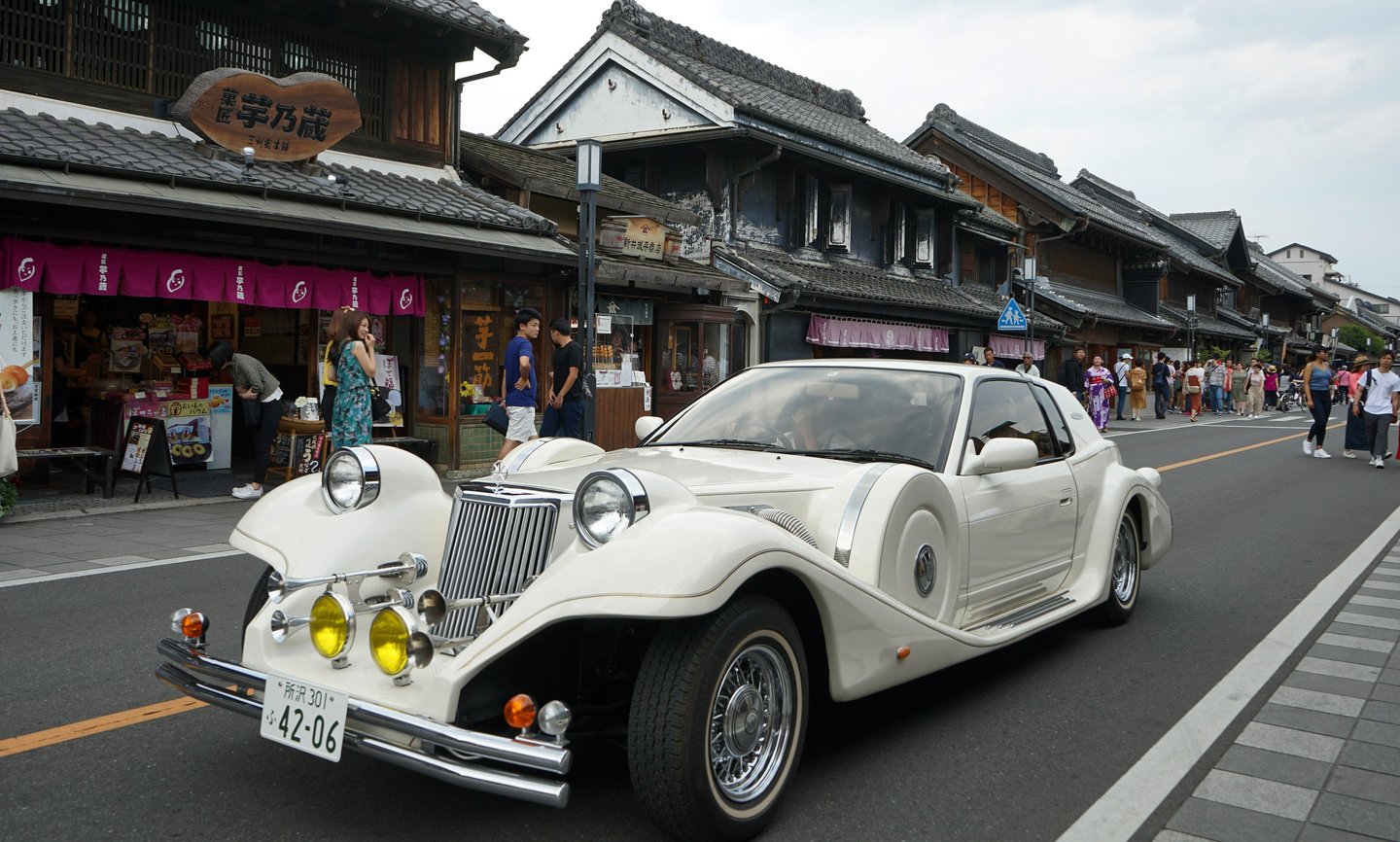

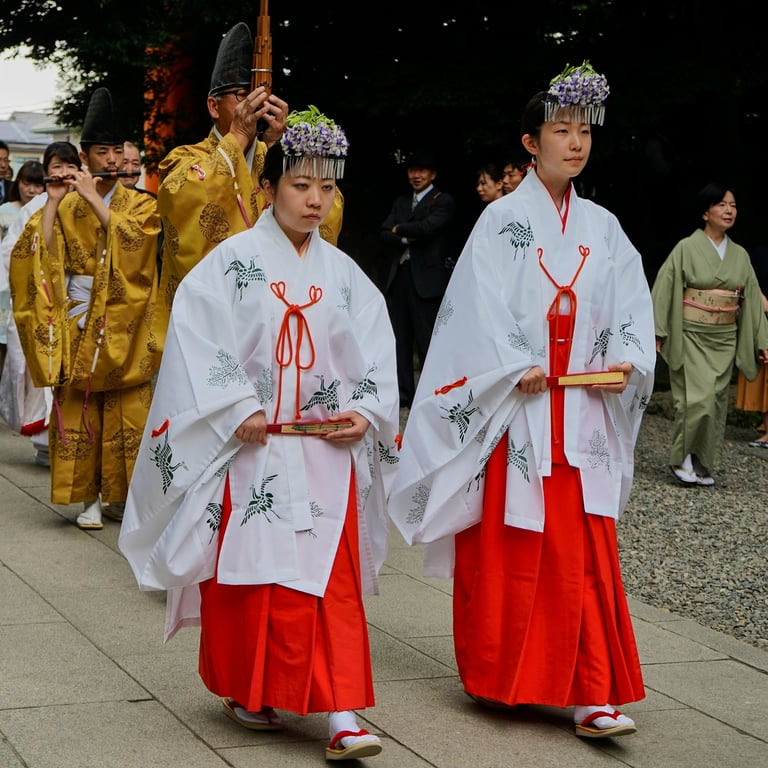
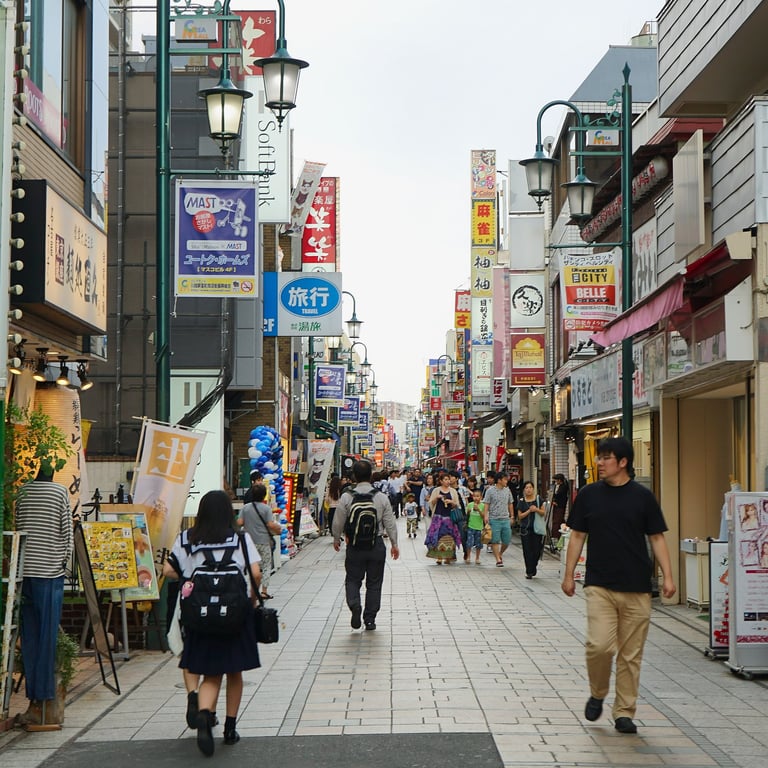
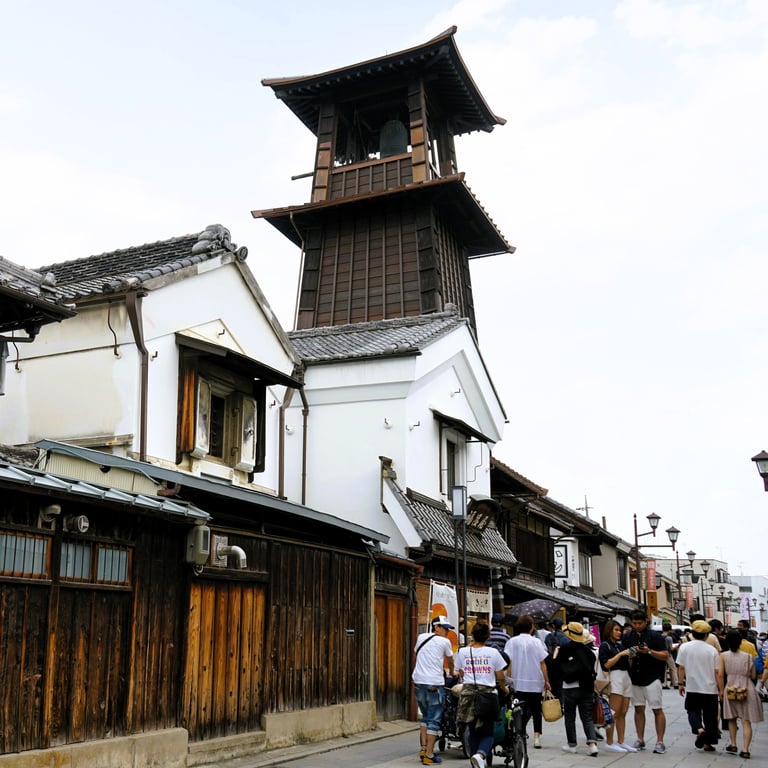
setsubun festvial
Oni out!
From 3rd-5th February each year there is a chance for a new beginning. The Setsubun Festival heralds, 'Demons out - good luck in!' The demon, or Oni, parades through the streets giving you a clear target for hurling your roasted soy beans as you chase away your cares and woes. You can also stock up on the beans to take home. Good fortune is ensured for the coming year by eating the number of beans of your age, plus one. Quite a meal for many in ageing Japan! Pictured here: Shimo-Kitazawa, a 'cultural quarter' in Tokyo.
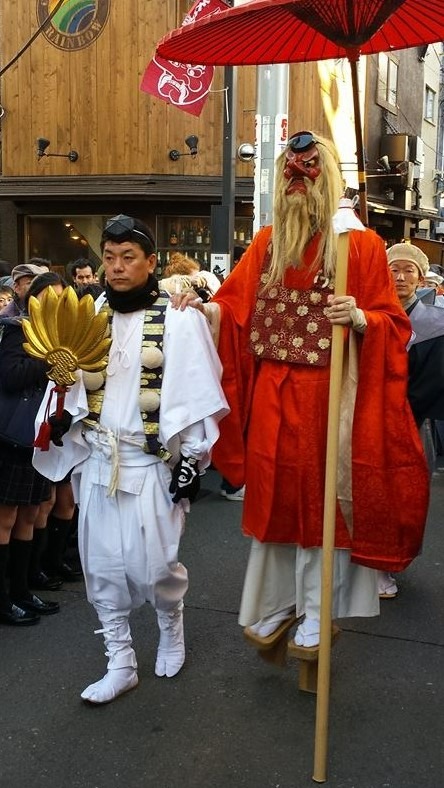

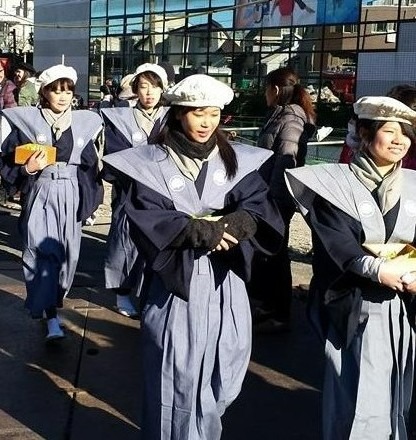
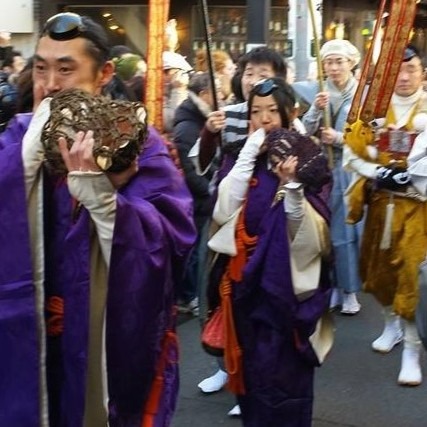
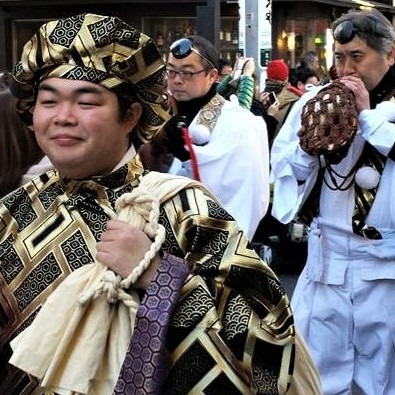
automated vending machines
Jidohanbaiki
‘Jidohanbaiki’ is Japanese for vending machine. They are simply everywhere, and probably because they suit the Japanese lifestyle, being ideal for 24-hour convenience and people in a hurry. I'd imagine their low maintenance in the labour-costly Japanese job environment also helps. Beverage options for hot or cold drinks seem to be the most common; they can be found at stations, hospitals, schools, the workplace and even any non-descript suburban street. Bulk machines, not even requiring electricity to operate, offer snacks as well as drinks. The snacks lately are tapping into ‘health’ with granola bars rather than crisps. You can get anything from a vending machine, from a hot meal to clothing accessories to used ladies’ underwear (fiction rather than fact, that last one – an urban myth that still has legs, so to speak). But, gone are the days when a can of Kirin beer could be found, it's just soft drinks now. For cigarettes, you need to show ID or your driving licence – so, there are some rules.

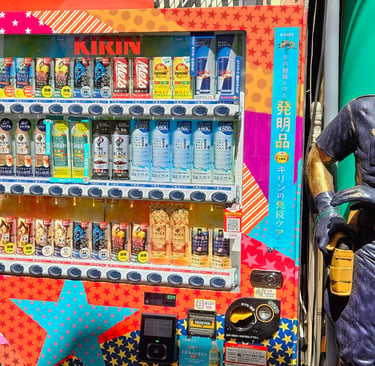

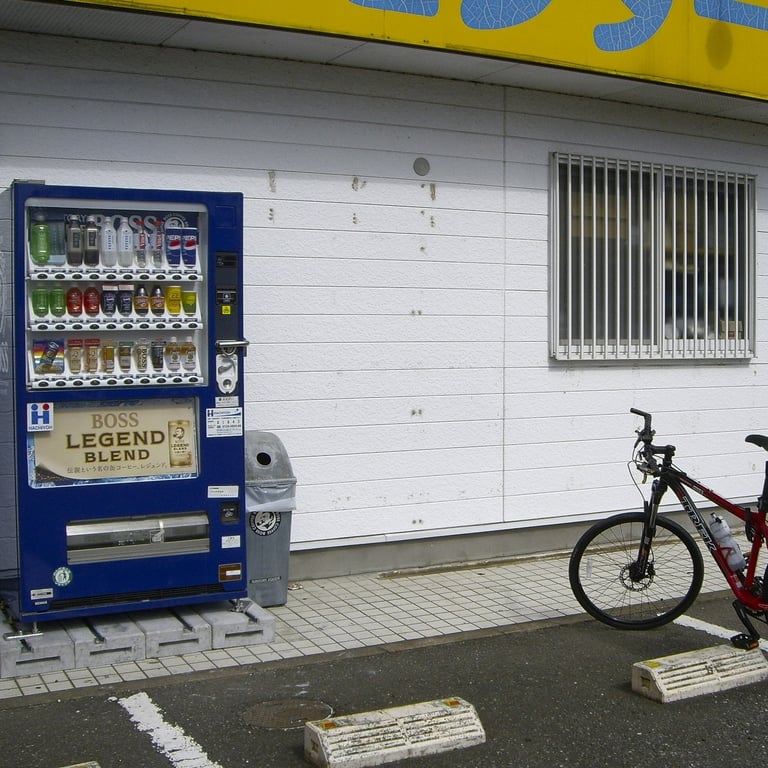
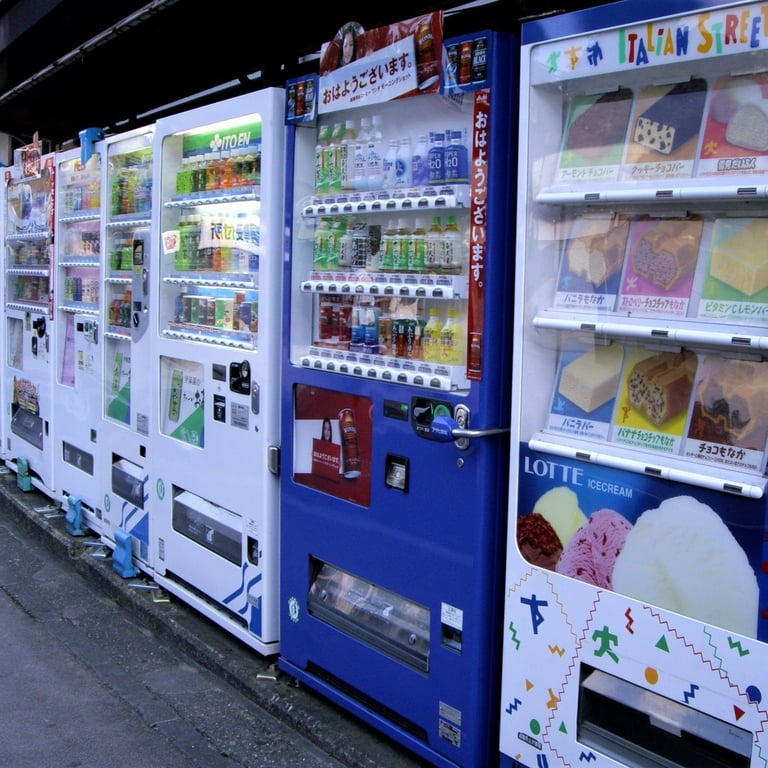
kamakura, kanagawa prefecture
Step-by-step
Kamakura, south of Yokohama, is an easy day trip from Tokyo being less than one hour away by train. It is famed for the giant outdoor copper Buddha and shrine. Travelling there on a public holiday was a bit of an adventure, with seemingly half of the population of Tokyo having had the same idea that morning. Japan being Japan, they sure know how to organise though, attendants with megaphones were on hand to help everyone shuffle up the stairs and along the platform to get the train. It really was impressive how the crowd stayed in step, in rows, in an perfectly choreographed procedure. Clickers clicked authoritatively as a set number were at last released group-by-group to calmly move forward to fill up the train. The bonus of a wedding also added a touch of glamour to the day.

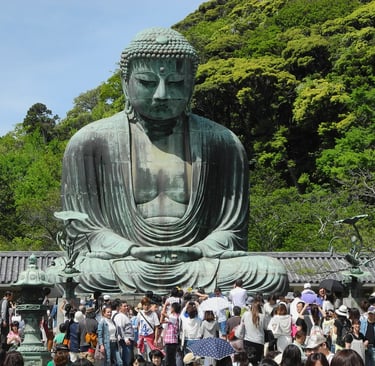
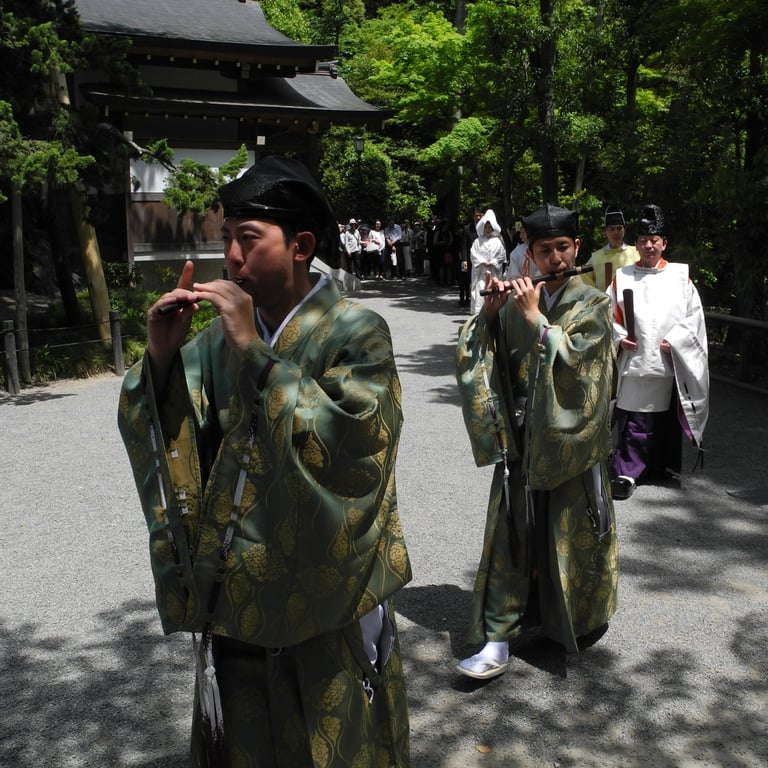
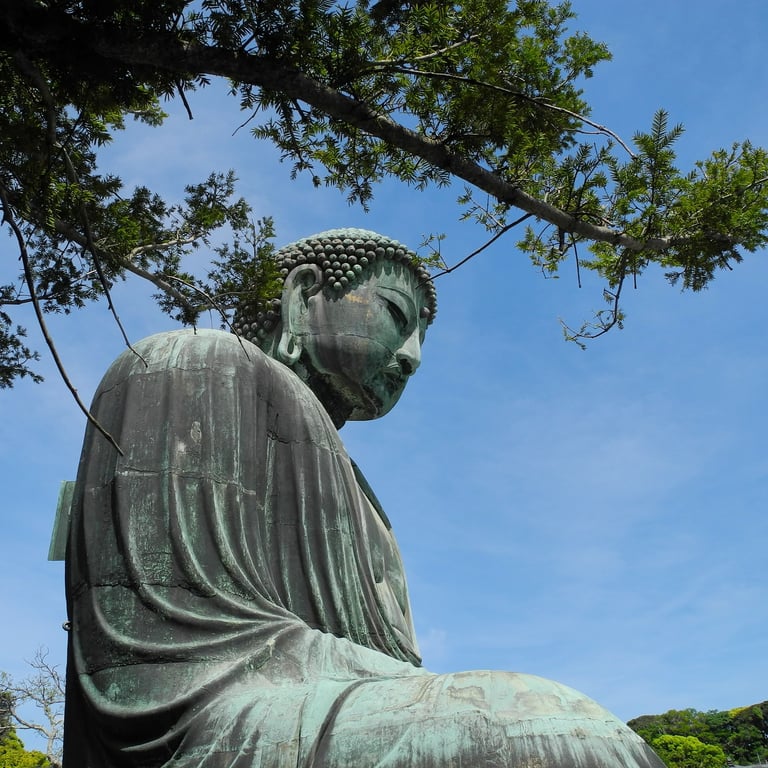
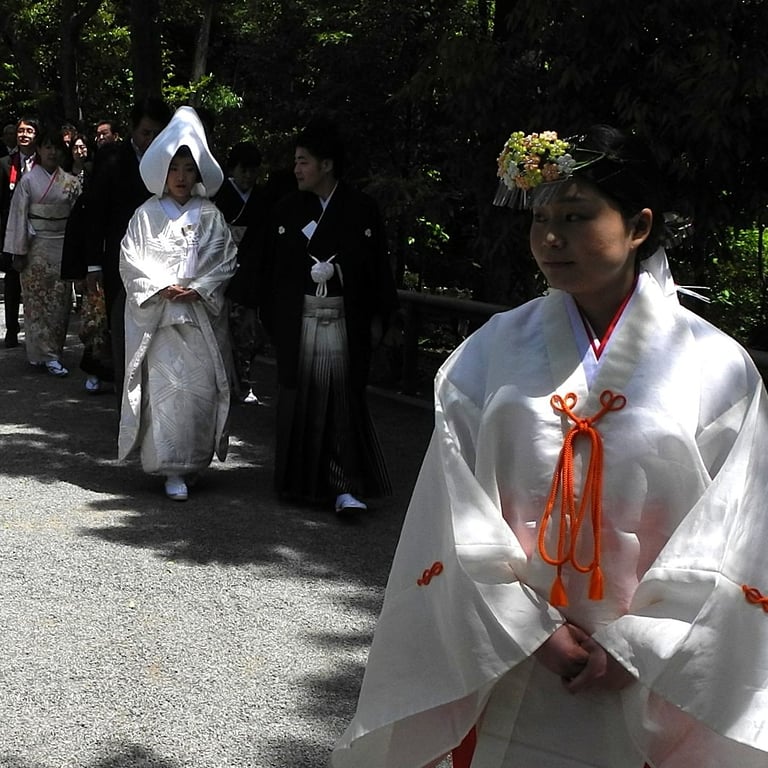
suzuka, mie prefecture
Formula One
The Formula One racing track at Suzuka is one of the old classics, built in a figure-of-eight (the race track crosses itself by going under a bridge). It is rather remote though and the huge F1 entourages take up all the local accommodation. You have to stay in Nagoya or Osaka cities and commute – that’s no biggie, mind - the Japanese are very good on transport! Needless to say, the crowds are very enthusiastic which makes for a great atmosphere. Many are in Ferrari garb, to the point that you feel as though you are intruding on a private, red-themed party. A glum one if Ferrari don’t do very well in the race (as was the case this time).
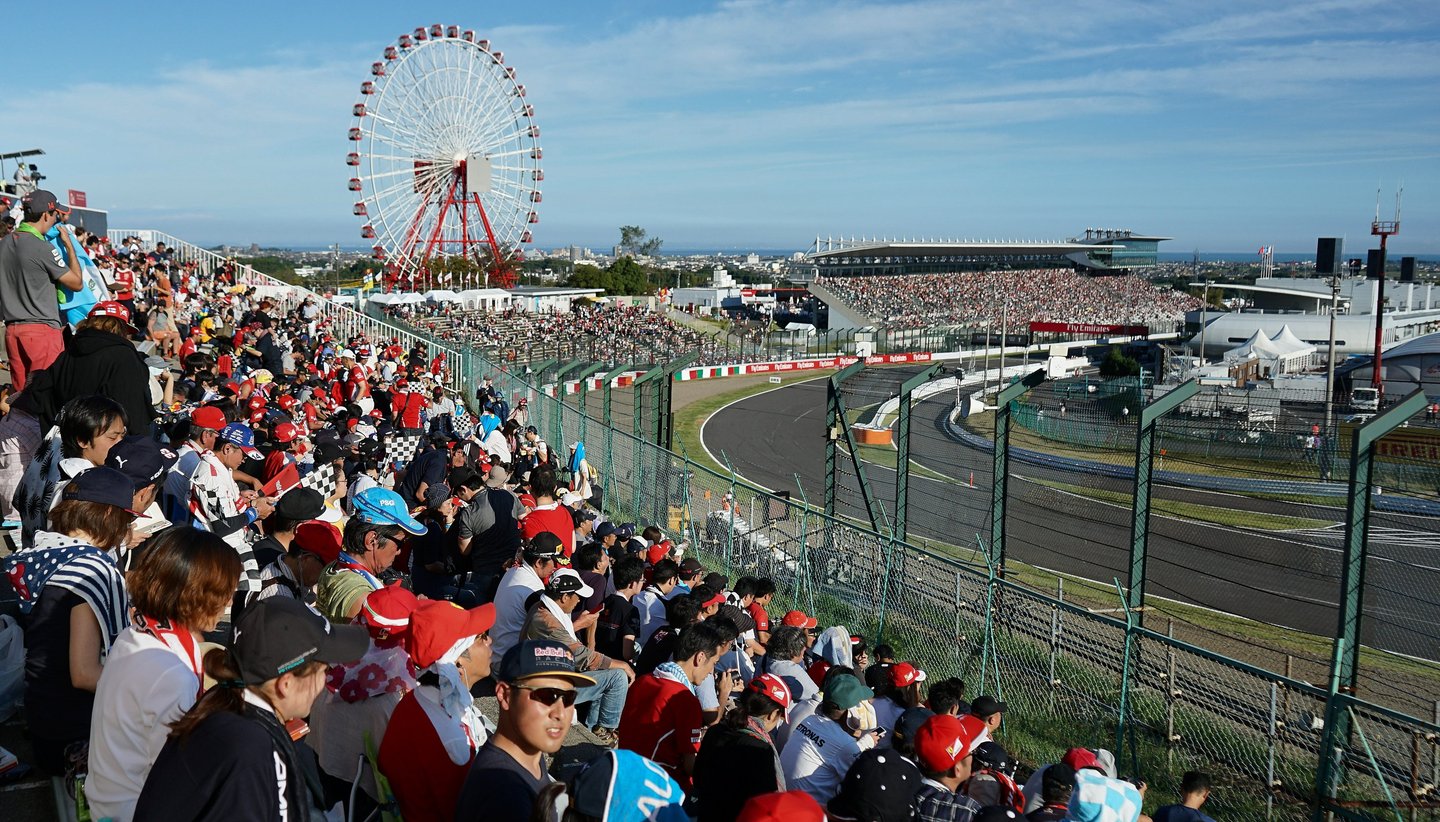

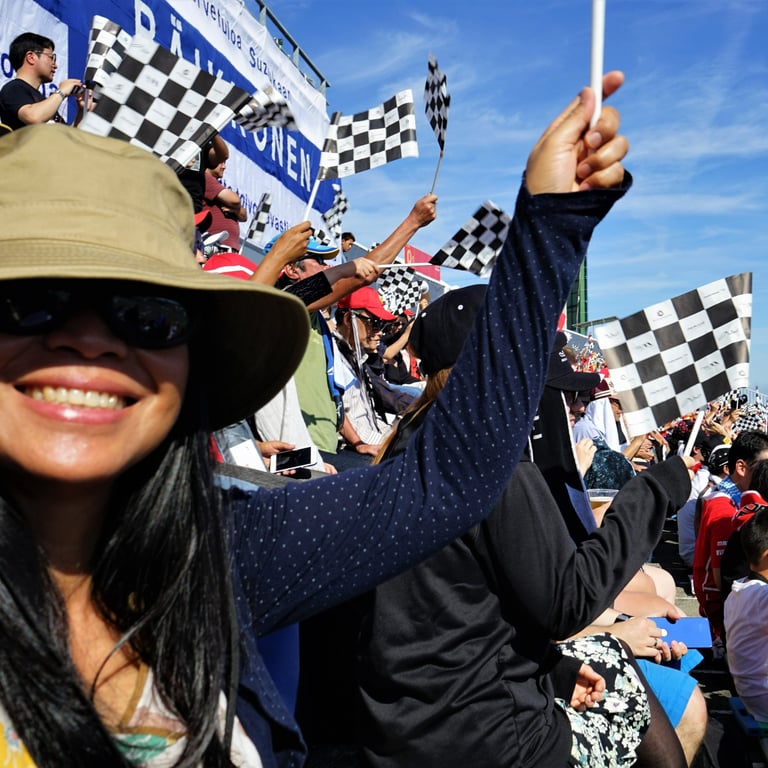
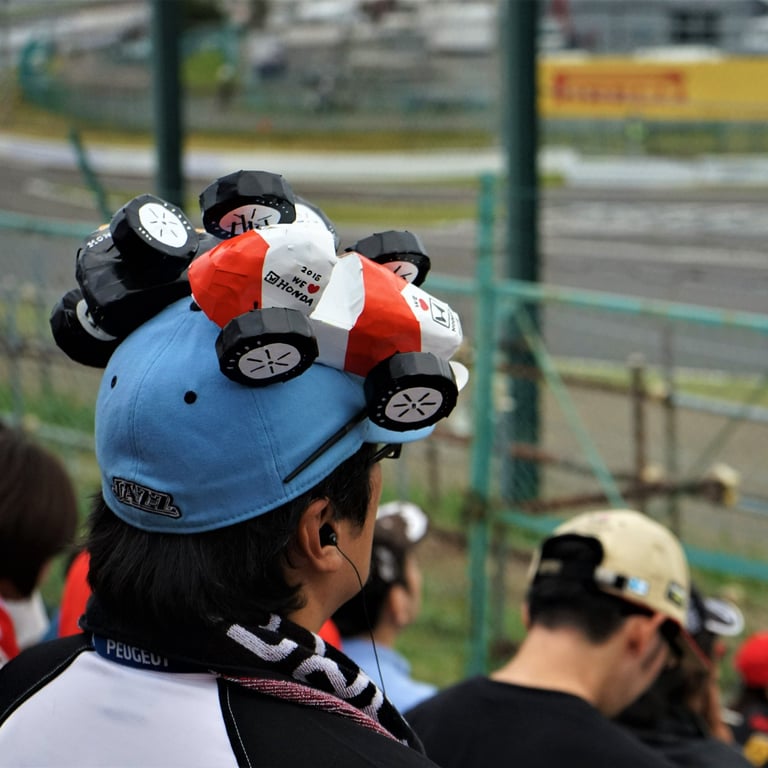
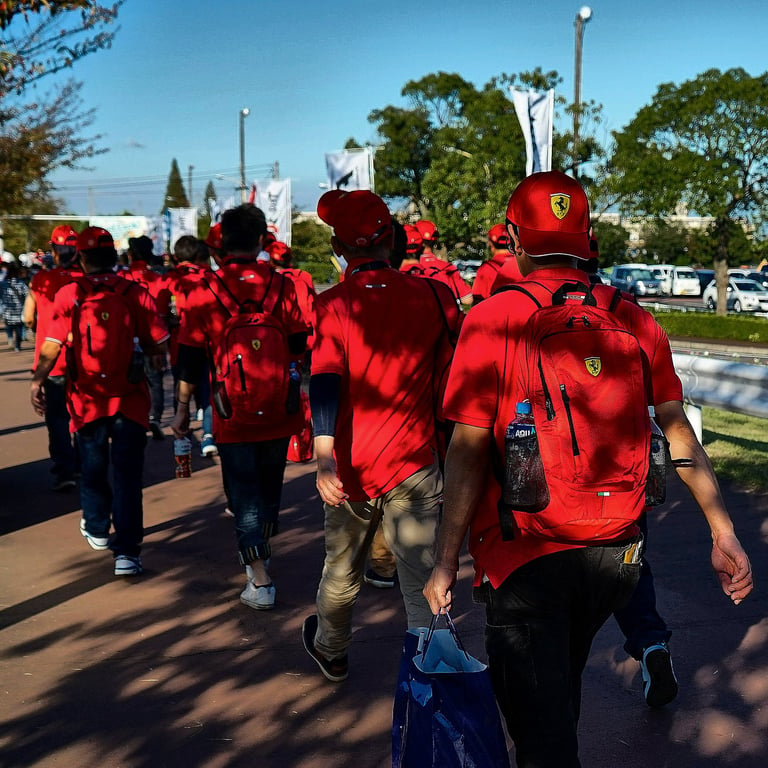
hiroshima
Quiet contemplation
Exiting the station in Hiroshima following my Japanese map (pre-smartphones) I was confident that I would find the Peace Memorial fairly easily. Having walked straight out of the wrong exit, it didn’t exactly go to plan. Later, strolling along the riverside in the spring sunshine past boughs laden with sakura and office workers snacking from their lunchboxes, it was difficult to fathom it all. The many juxtapositions rattled the senses. What had gone before and what it was like now - there was simply so much to absorb. All you could do was quietly contemplate, there was really nothing to say as you took it all in. The museum was busy that day, also busy with silent people.
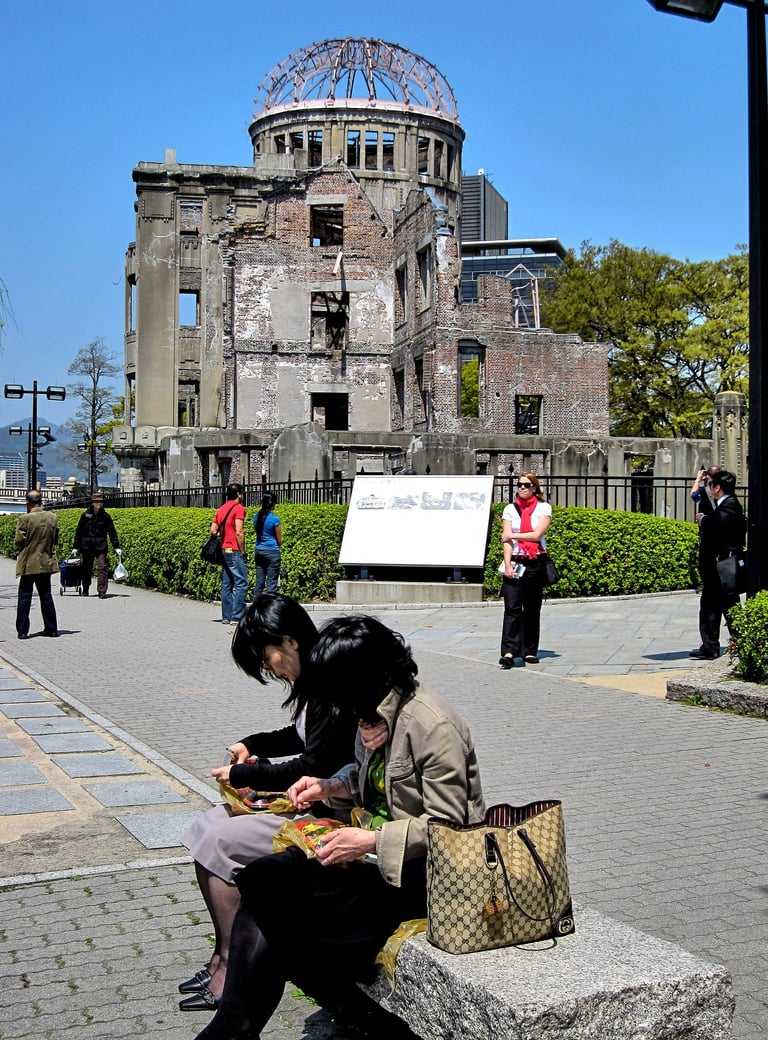

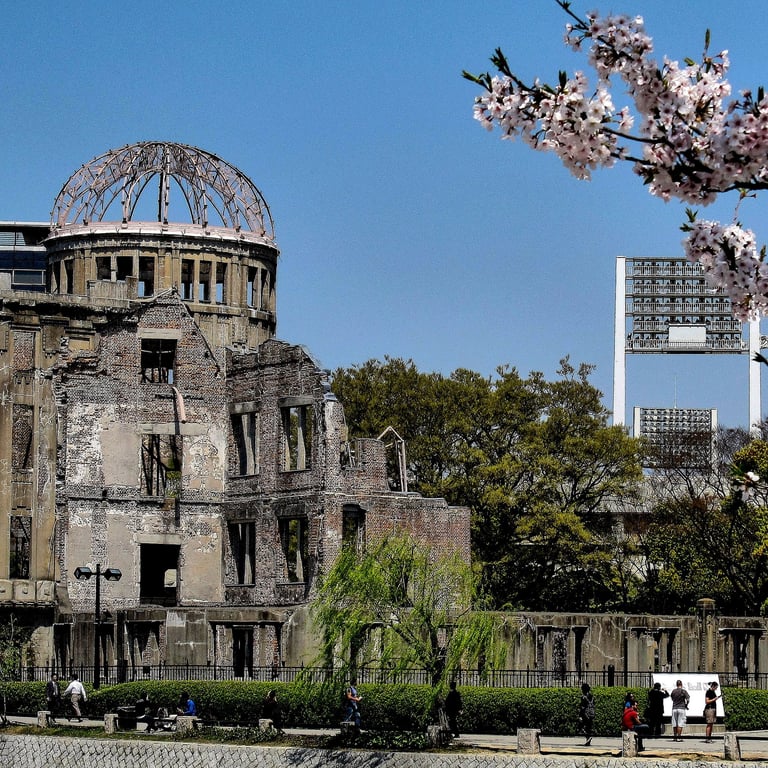
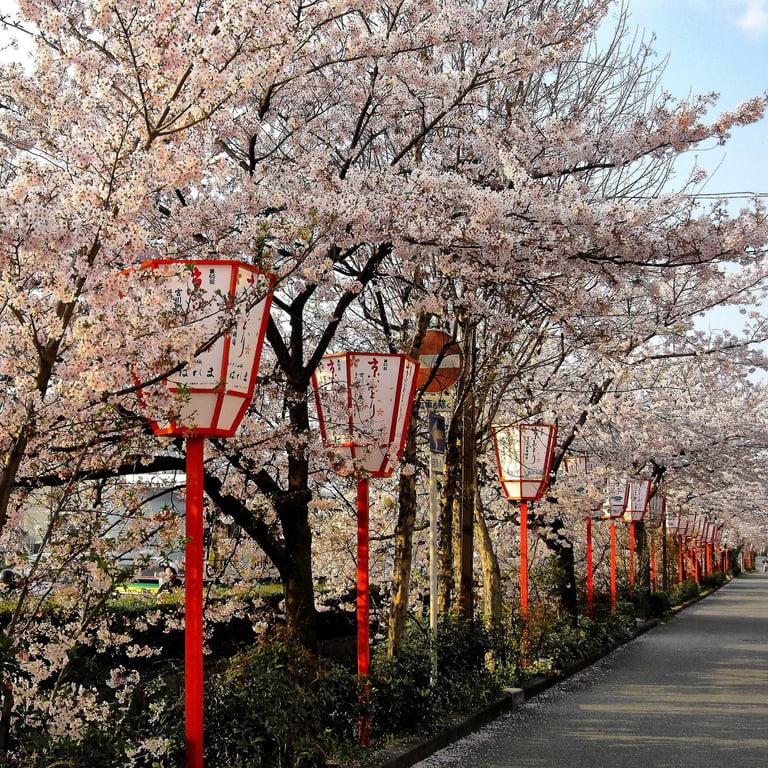
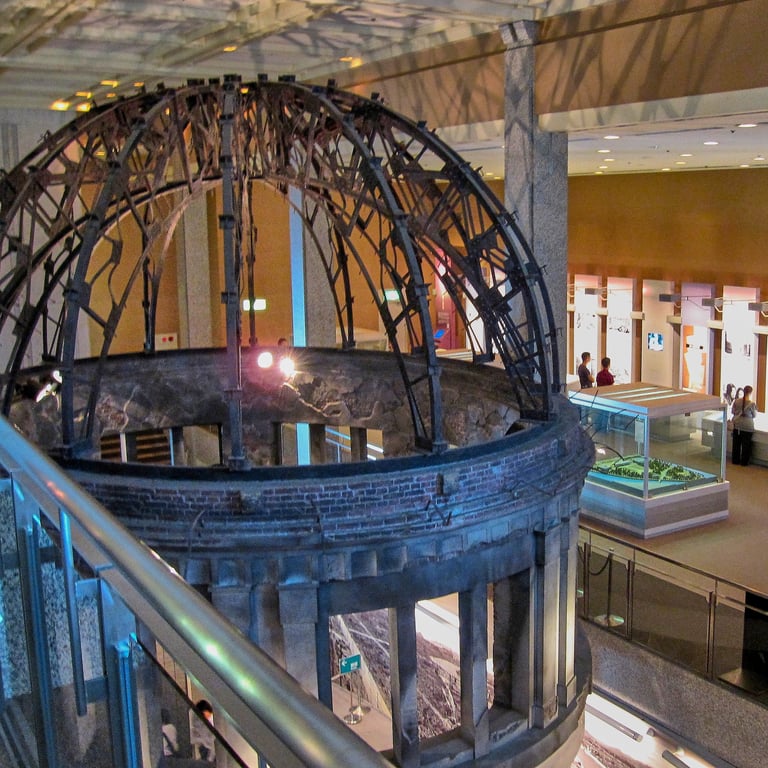
the shinkansen
JR Rail Passes
What can you say about the Shinkansen? It’s almost as if the Japanese designers are vying to outdo each other in the engineering beauty stakes. The station masters, with their little red flags, patrol the platforms telling you to stand behind the yellow line, but it’s a hopeless task as even Japanese travellers crowd round to video the trains arriving and departing. Once aboard, the refinement continues as you relax into your journey. If your ticket says Car 16, then you can be sure the train will stop exactly where Car 16 is painted on the platform. If a train is late, there is a public apology (something I’ve yet to witness). Although the JR Rail Pass and Regional Passes prices increased substantially recently, they are still good value on longer trips. For convenience you can't beat a rail pass - fast, efficient trains and easy online bookings in English, plus many hotel options near the main stations. Get that rail pass now!
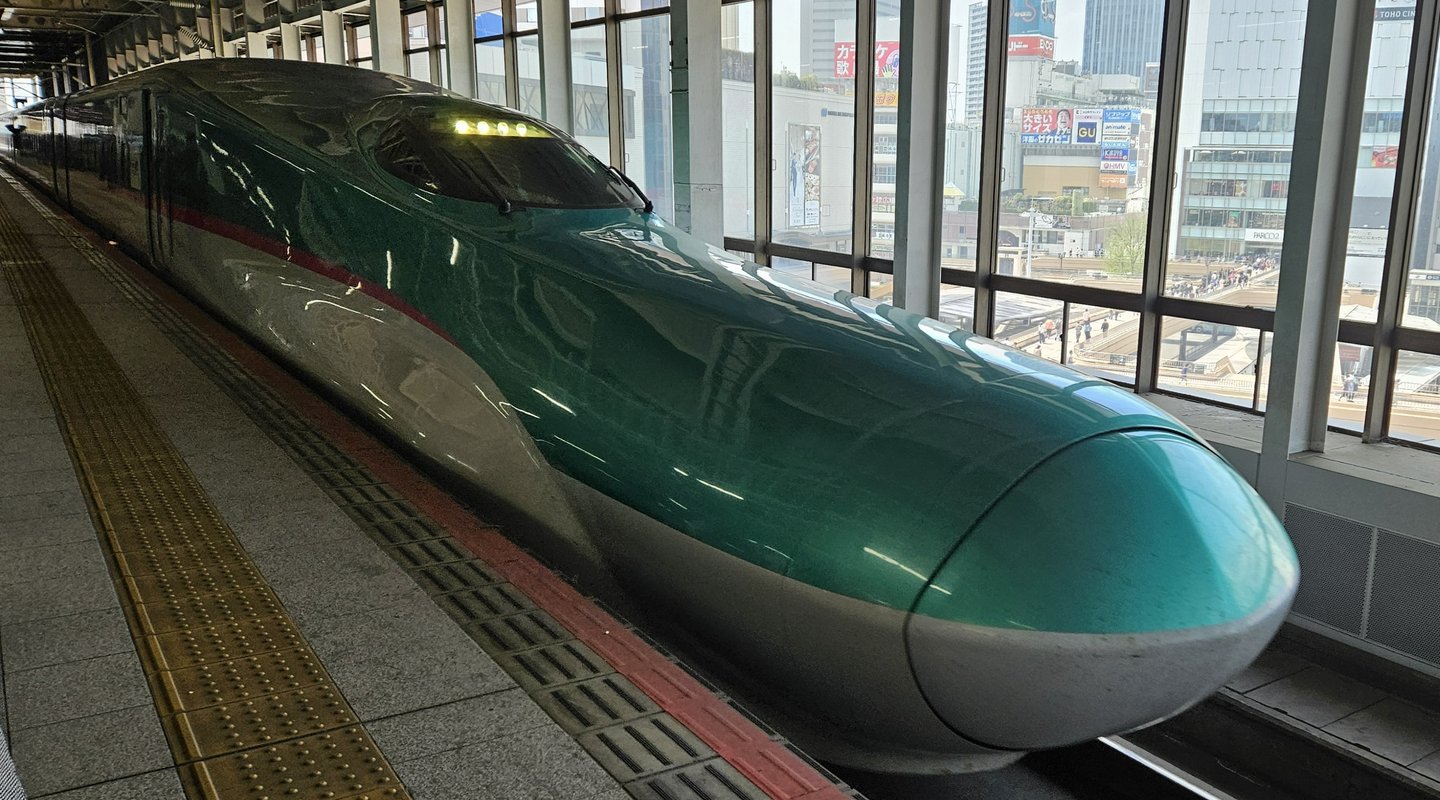

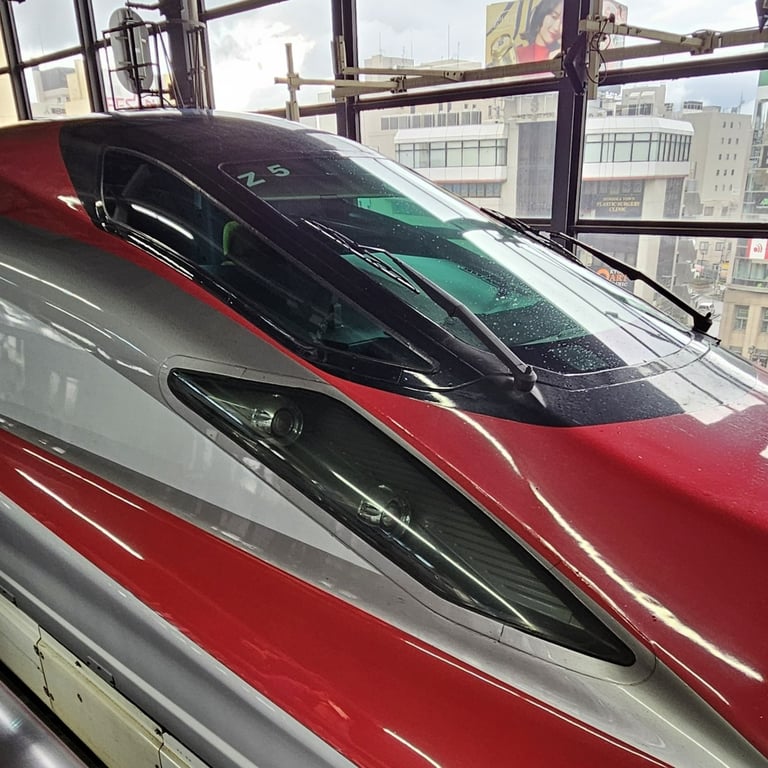
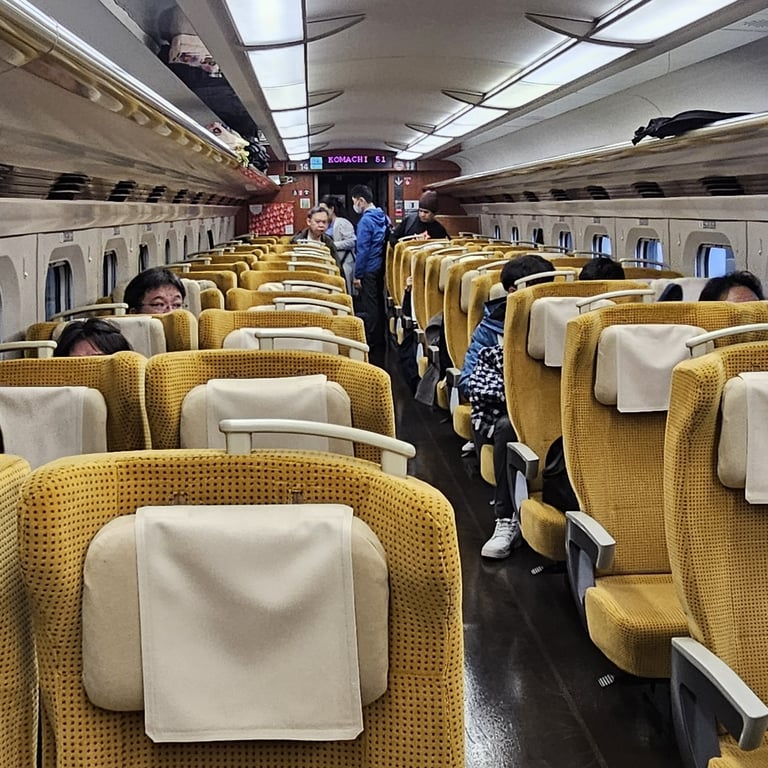
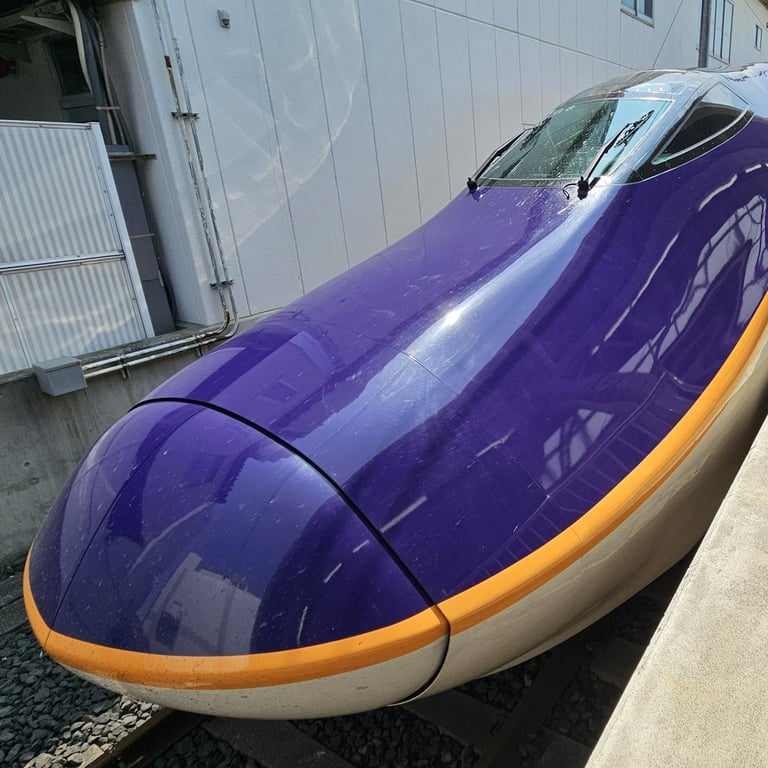
hakone, kanagawa prefecture
Time for an ice cream
Hakone, west of Tokyo is a mountainous area by Lake Ashi. It offers trekking, hot springs, fumaroles, ropeway trips, boat rides and a skywalk. You are almost always in sight of Fuji-san as well. On this particular occasion in February it was bitterly cold, especially on the col connecting two cable-car rides. Most folks were huddled in the souvenir shop to escape the wind and the -10c degree windchill factor. Oddly enough the black ice-cream (volcano special) was doing a roaring trade.
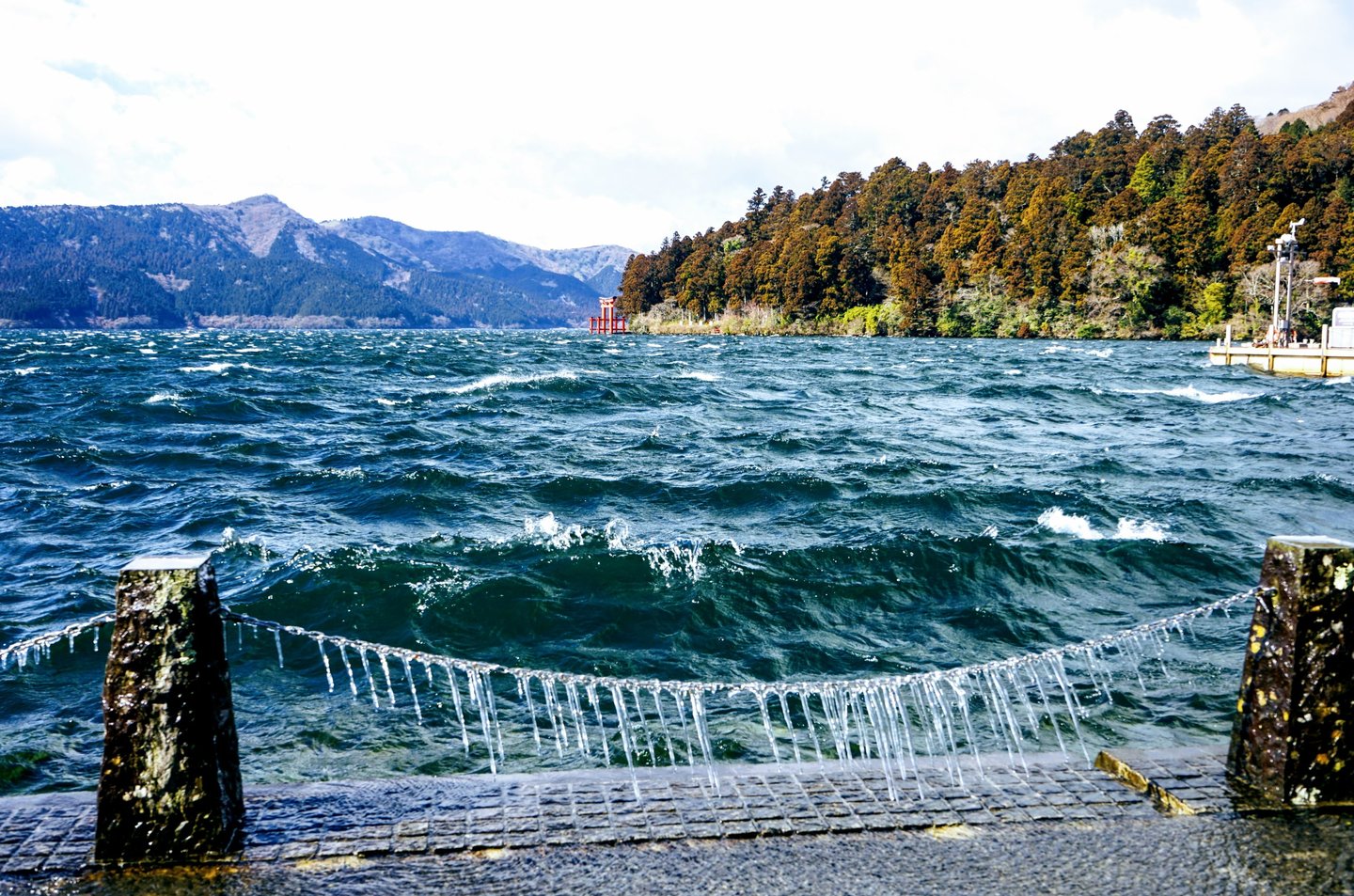

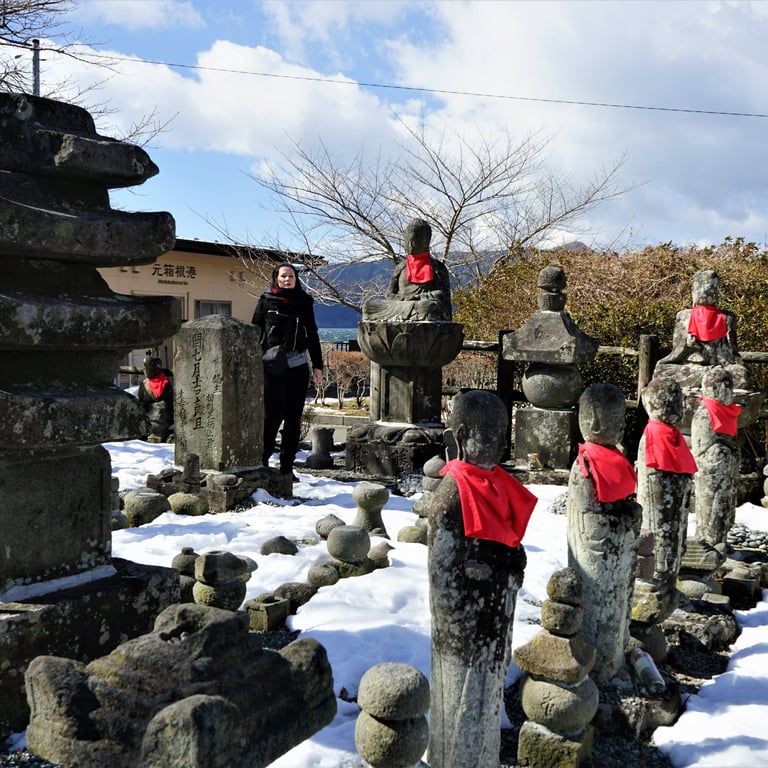
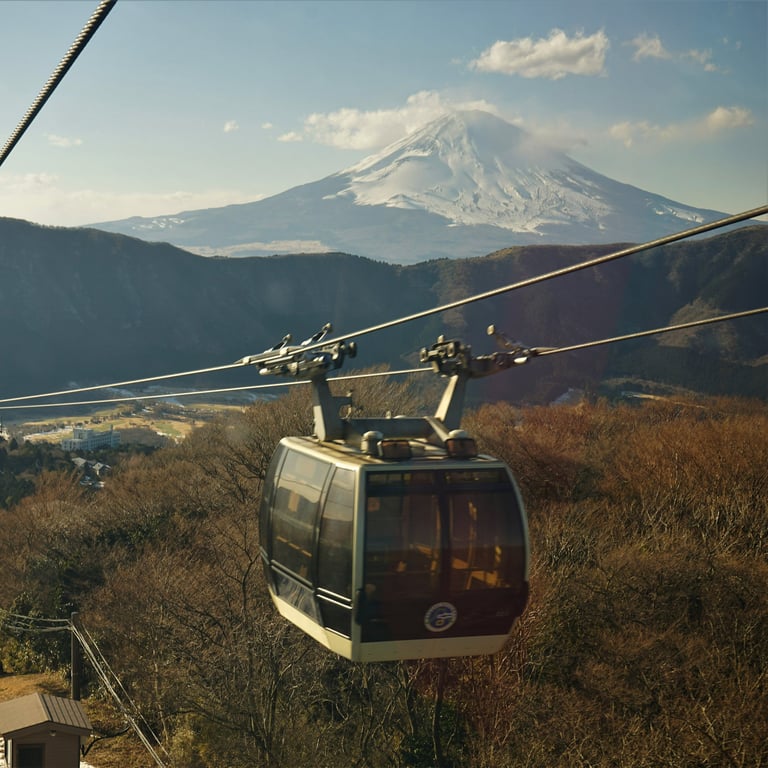
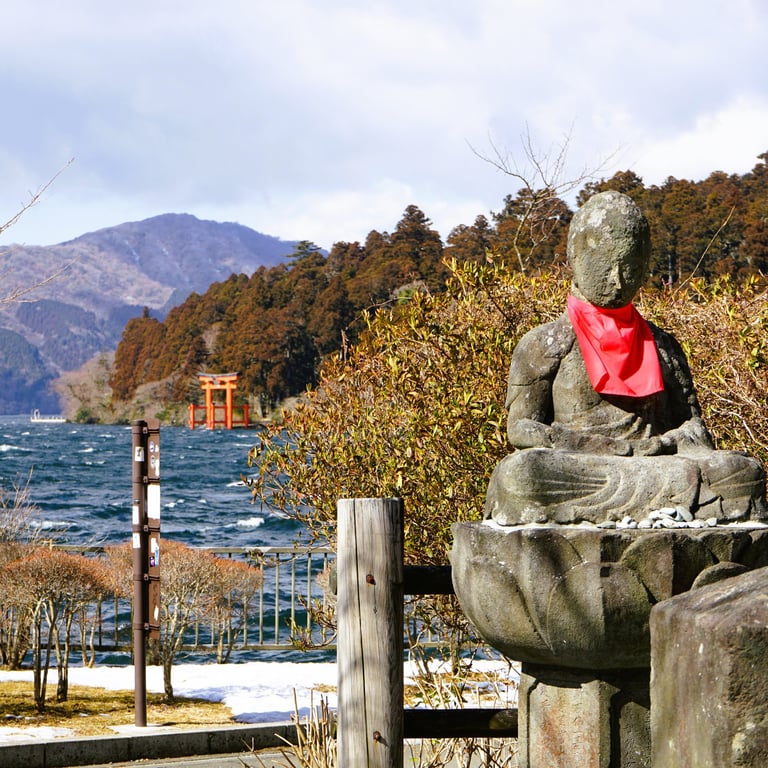
aomori, aomori prefecture
Snowy city
Aomori has the distinction of being the world’s snowiest city with an annual average of 42 feet of snow per year, hence all the shops still selling snow shovels in April! Arriving, it presents an unusually grubby greeting (for Japan) as you exit the station. Mind you, 88% of the city was destroyed in a WWII air raid, which may have contributed somewhat. The working port facing Hokkaido Island is evident from the town centre, although the Nebuta Museum and the A Factory market on the shoreline do brighten things up a little. Aomori is a good base for Mt Hakkoda, the ropeway and the ski slopes; Takayama Inari Shrine to the west, and Hirosaki Castle where the sakura display really takes some beating. The Shinkansen will deposit you west of the city at Shin Aomori as it makes its way over the bridge to Hokkaido, from there it is a short train ride into town. Pictured here are also the Otou Shrine near the centre of town and Shin-machi Shopping Street which probably looked great about forty years ago, but is still a boon in bad weather.
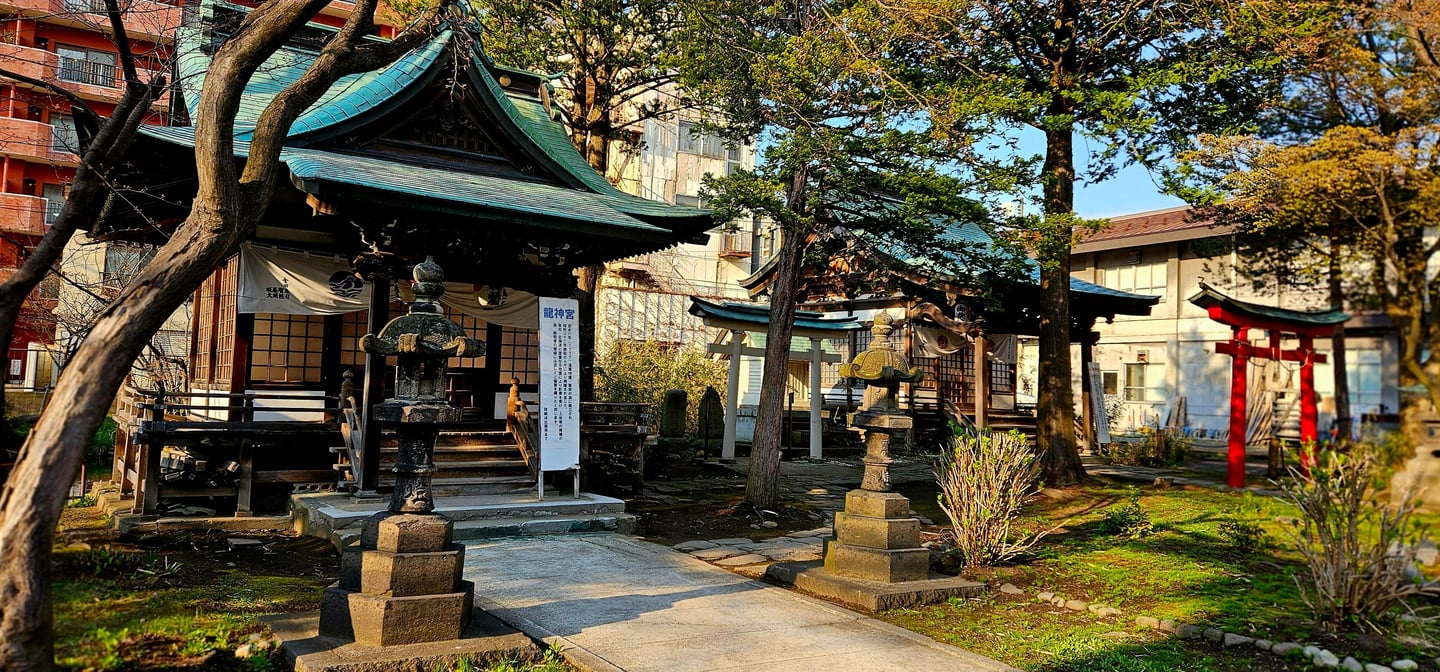




Fukuoka, kyushu island
Yatai stalls
Fukuoka is famed for Yatai, mobile food stalls usually offering yakitori (barbecued bits and pieces). There is a street on Nakatsu Island in the middle of the river, where you can find the stalls, many catering for tourists. What I have found, and it is similar with the Golden Gai in Shinjuku, a row of alleys made up of tiny bars, is that the non-touristy ones are not particularly welcoming of foreigners. The idea is that regulars stop by for a bite, a drink and a natter after work. Using up three of the six seats with folks who can’t contribute to the conversation is probably the issue. Still, they do look endearing even if slightly off-limits. Also bear in mind is that it will be rather draughty sitting outdoors in winter - plastic sheeting is sometimes draped to ward off the chilly winds. Pictured here are folks all wrapped up in the month of October, and the riverside at dusk.





Yokohama, Kanagawa Prefecture
Cosmopolitan
Yokohama is on Tokyo Bay, a short ride out of Tokyo and the kind of place that you might pencil in for a weekend away. It was the first trading port to open up in 1859 and retains a cosmopolitan air to this day. The Yamate District (The Bluff) was the former section for foreigners and still contains many colonial buildings, all in excellent upkeep. Other attractions include an extensive China Town, the Red Brick Warehouse for waterfront stalls and entertainment, Motomachi shopping street, Cosmo World fairground, and Sankeien Gardens. It is made for a busy weekend - especially if the BayStars baseball team are playing at home. Their passionate support will draw you in, whatever your personal command of the intricacies of baseball.
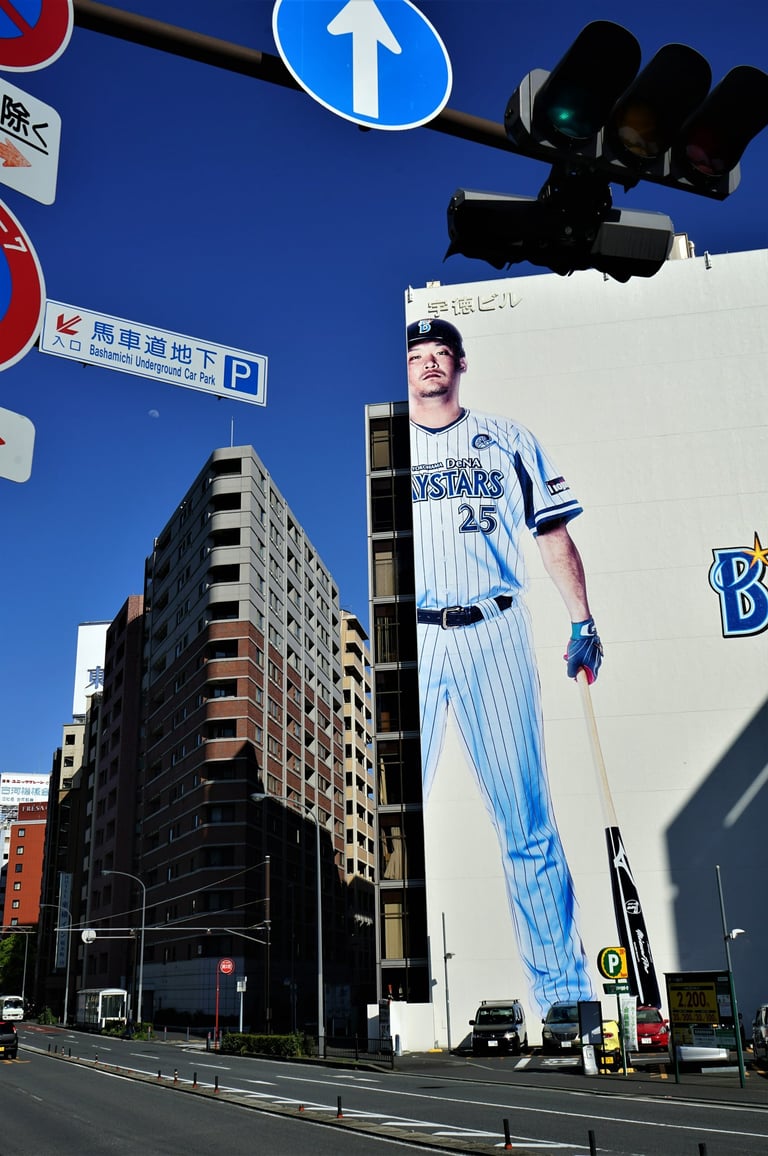


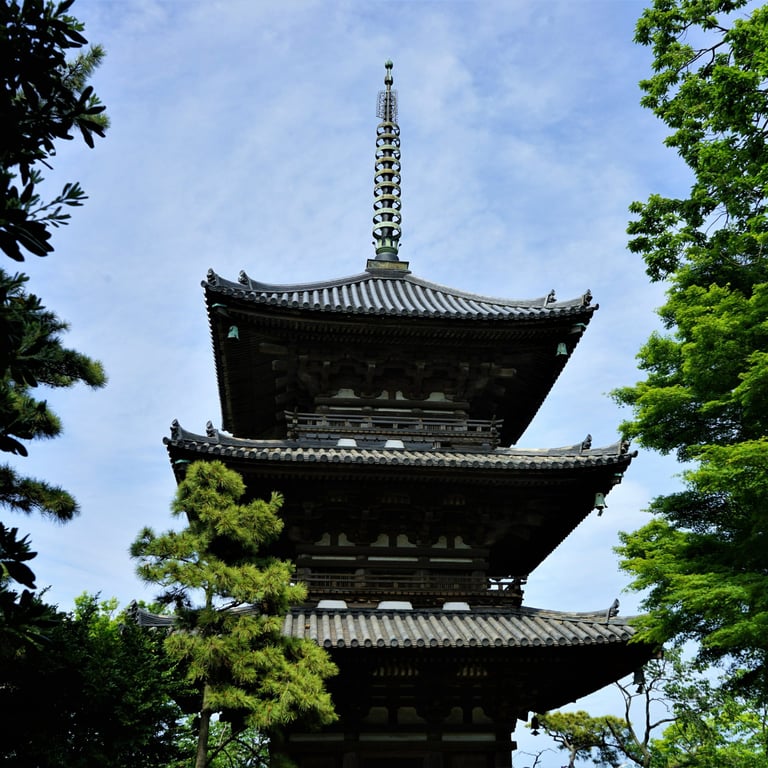

kyoto
Go with the flow...
Having been warned by everyone about the crowds at Kyoto's main attractions, you will likely go there anyway. After all, it is a magnet for tourists for all the obvious reasons. Google ‘Best things to do in Kyoto’ and 30 options appear rather than the usual ten. What you don’t realise until you are putting your itinerary together is that it is a large city and your chosen highlights may be considerable distances apart. Luckily there is a good metro and bus network. Plus, you can hire bikes and cycle on the pavements to circumvent the traffic. Expect hordes on the Philosopher’s Path, not all truth-seekers either. In fact, expect plenty of company full stop, especially at weekends or during spring or autumn.


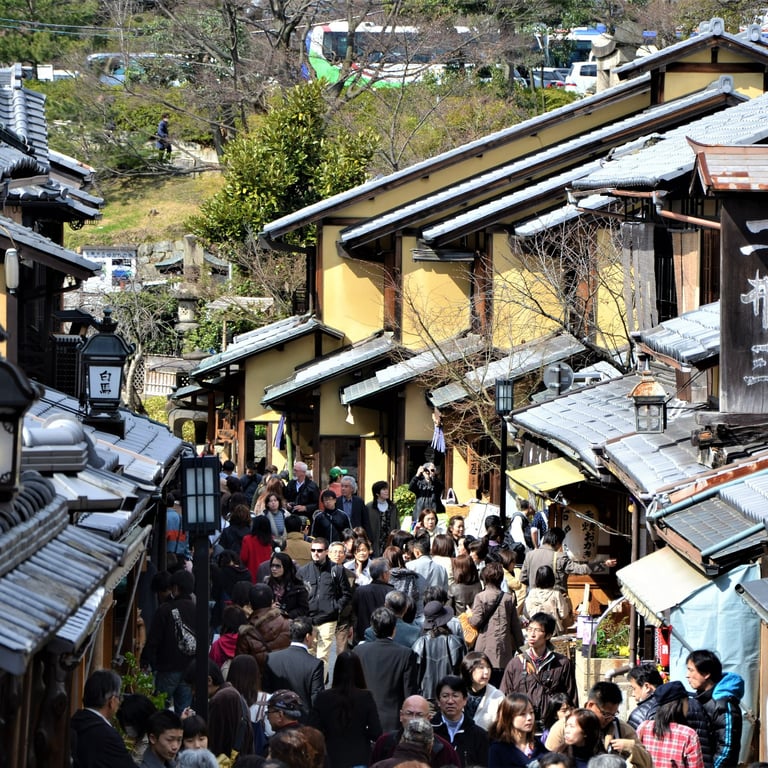


konbini, japan
Convenient plus
Konbini is Japanese for ‘convenience store’. You find them everywhere - right opposite the station exit for sure, but unsurprisingly anywhere convenient. Whether 7-Eleven (Seven & i-Holdings), Lawson, or Family Mart, they are popular for a reason. Late home from the office or school, or early going to work, convenient shopping is just the way it is for busy Japan. There are the go-to meals for people on the go, as well as go-to drinks and go-to reading for folks in a hurry. Having said that, the girly-mags are usually carefully taped up – no time for casual browsing - buy it and go! It is such an everyday and unremarkable thing to join the queue for the till as it splits and snakes its way backwards down different aisles, standing patiently behind schoolkids and salarymen, change or phone in hand, ready to beep the touch-screen to confirm that you are indeed over 20 and can legally buy that One-Cup (sake)!





nakano broadway, tokyo
Win-win
Nakano is just another stop on the labyrinthine rail network that is Tokyo (take the Chuo or Sobu Lines). Or it could be, but for the most splendid shopping arcade called Nakano Broadway, which begins as soon as you exit the station. Perhaps it was the additional colour provided by the Koinobori fish banners, or just the tint of the glass roof panels in the bright sunshine, but the vibe was well and truly uplifting, even for non-shoppers like me! Every few outlets served food or coffee as did the side-streets, so it was definitely a win-win.
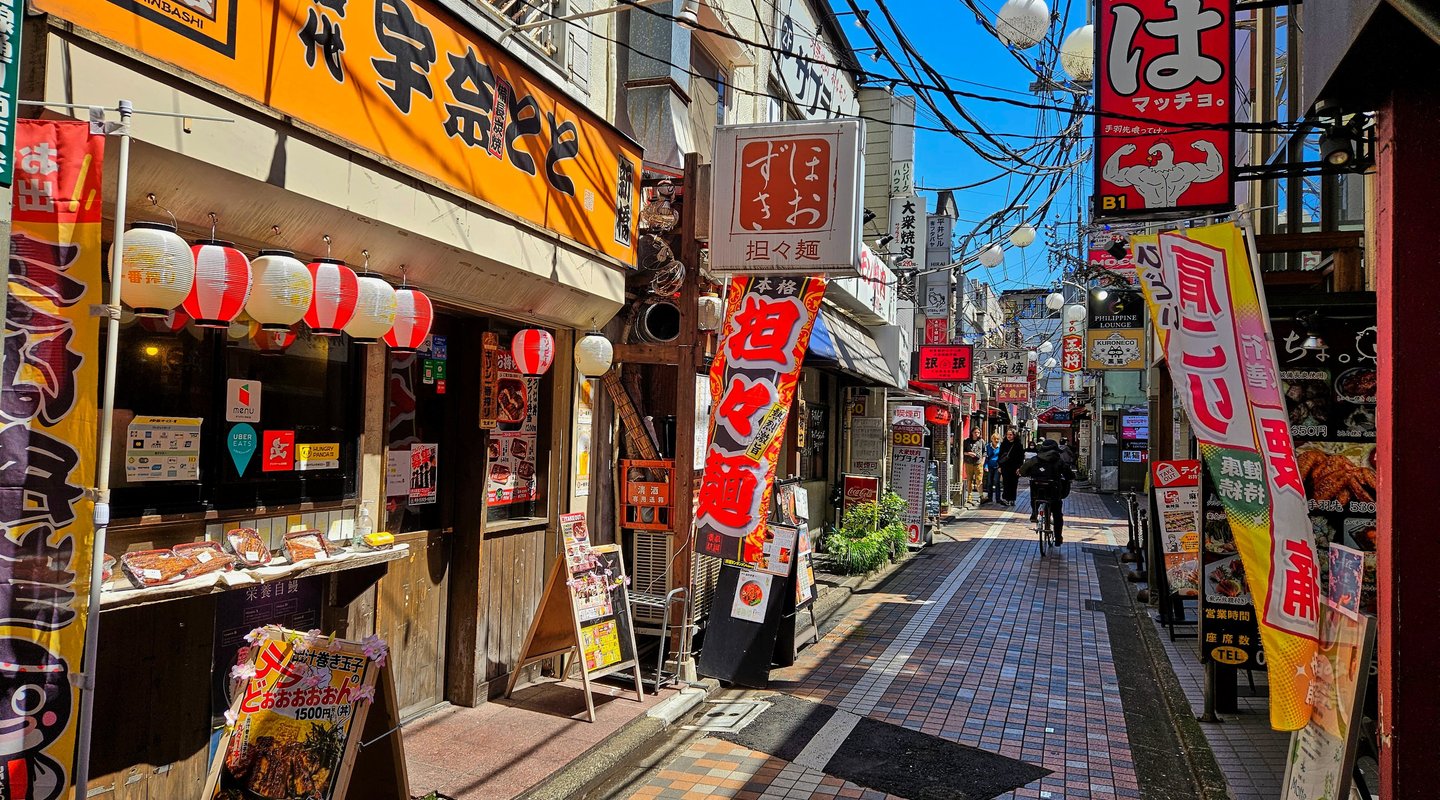

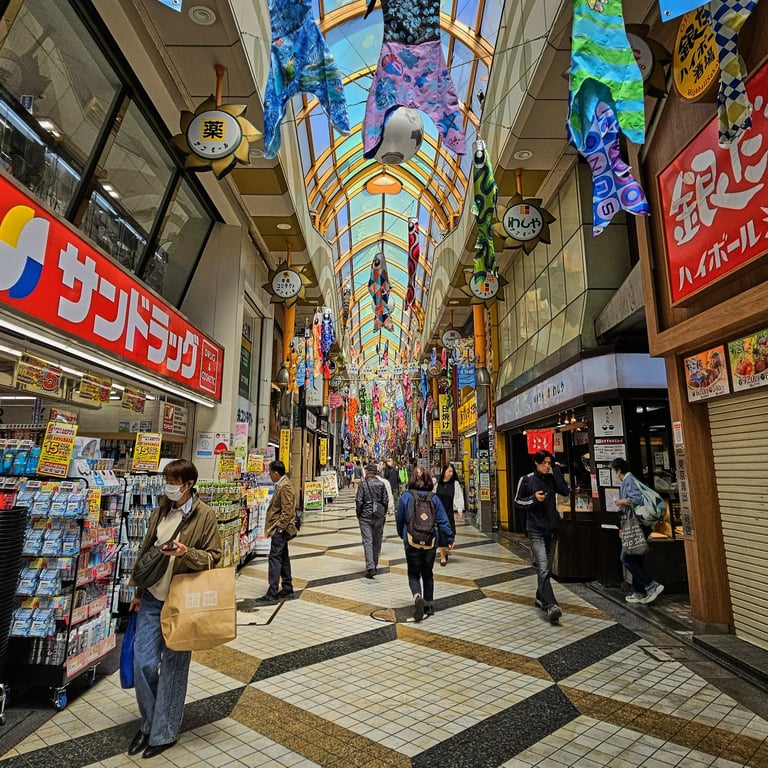
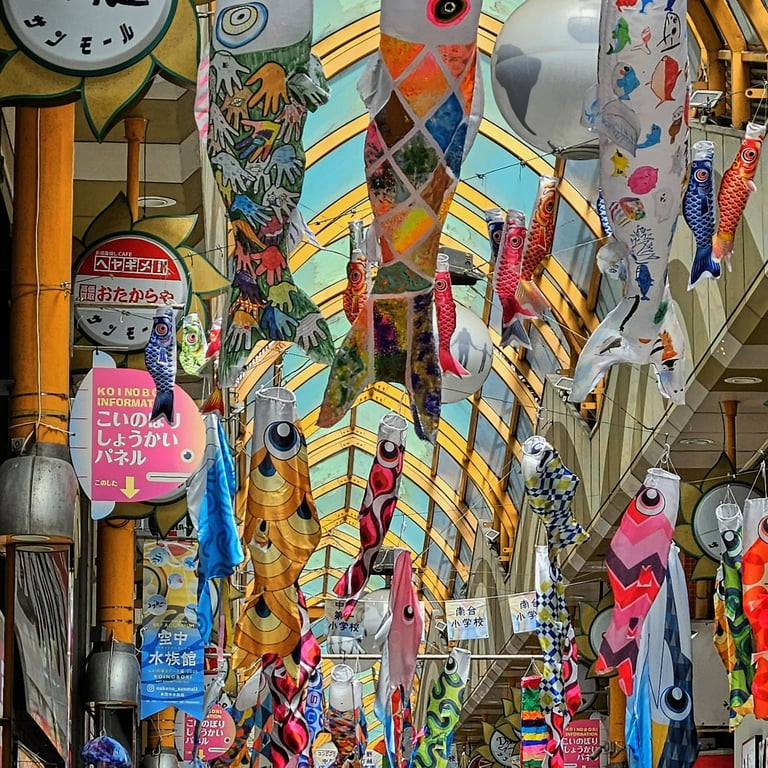
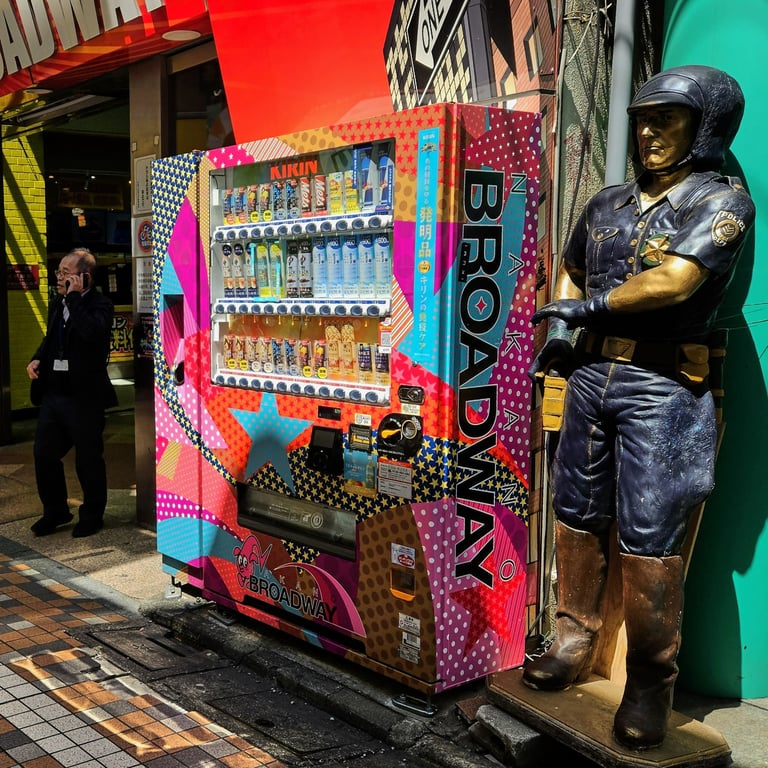
Halloween in Tokyo
Roppongi Crossing
Halloween is big in Japan and folks generally need no second invitation to dress up and cavort on the streets. If you happen to be around at the end of October, Roppongi in Tokyo is the place to be. It is a lively area at the best of times, but to experience a real buzz, hit the streets around Roppongi Crossing on the evening of the 31st, it’s absolutely mad. Also, it isn’t just traditional Halloween ghoul stuff, there are no holds barred in your choice of costume. Literally anything goes, the more bonkers the better, the more risqué the merrier.
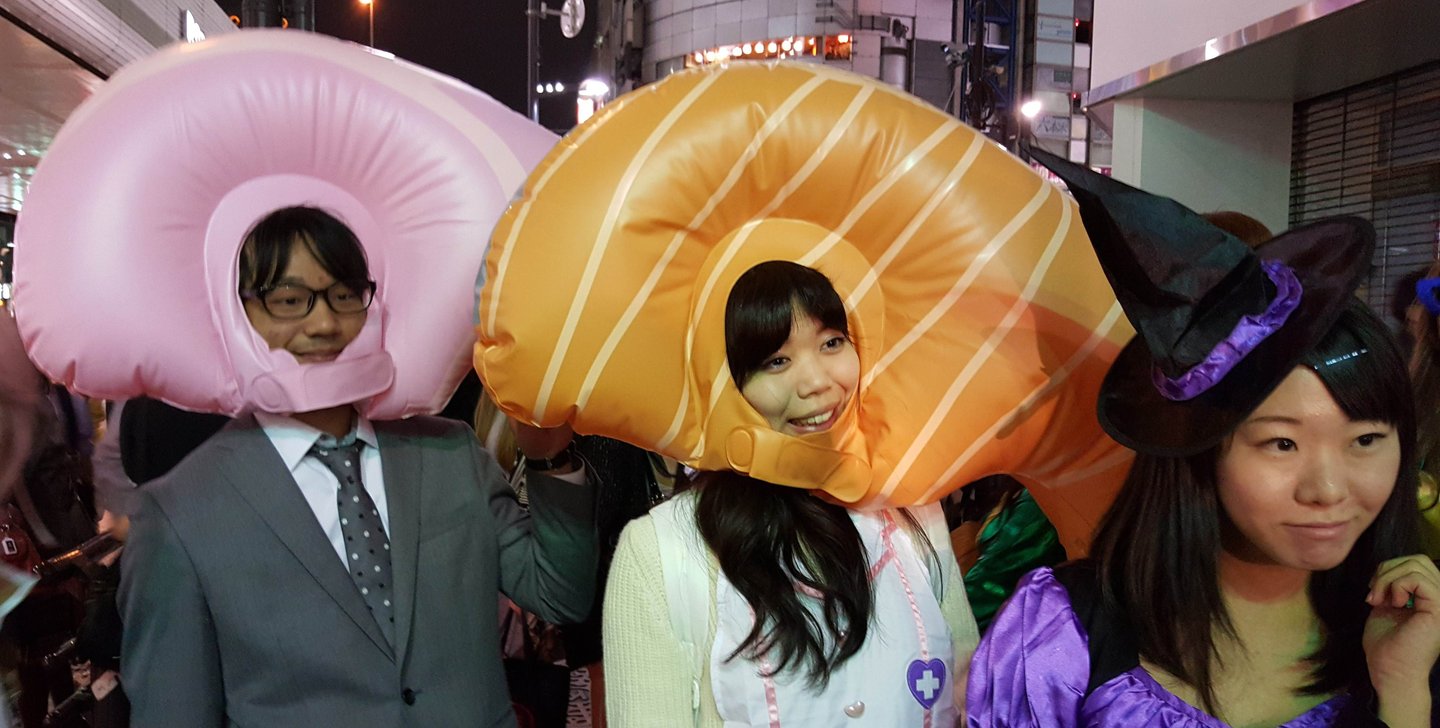


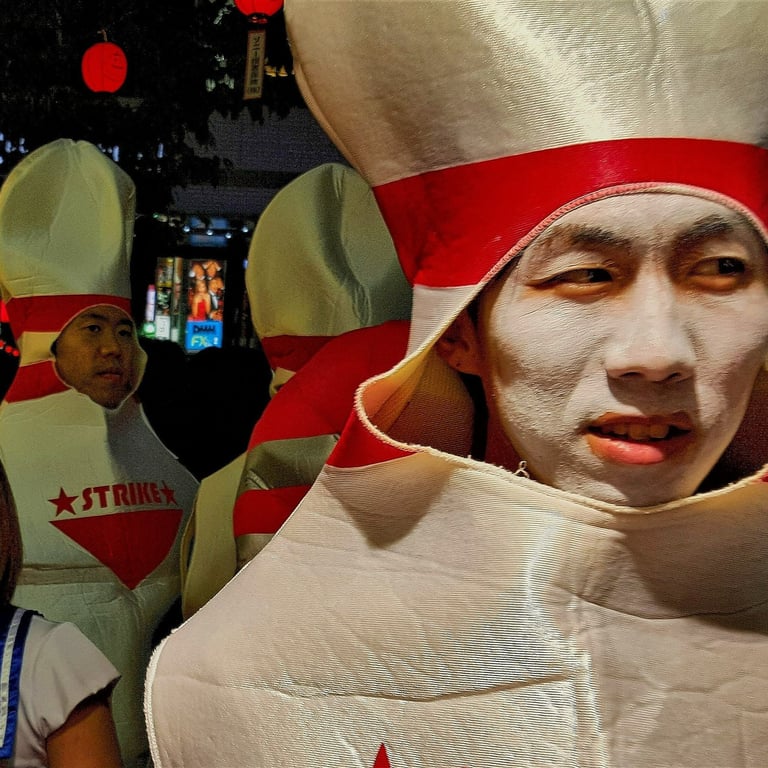
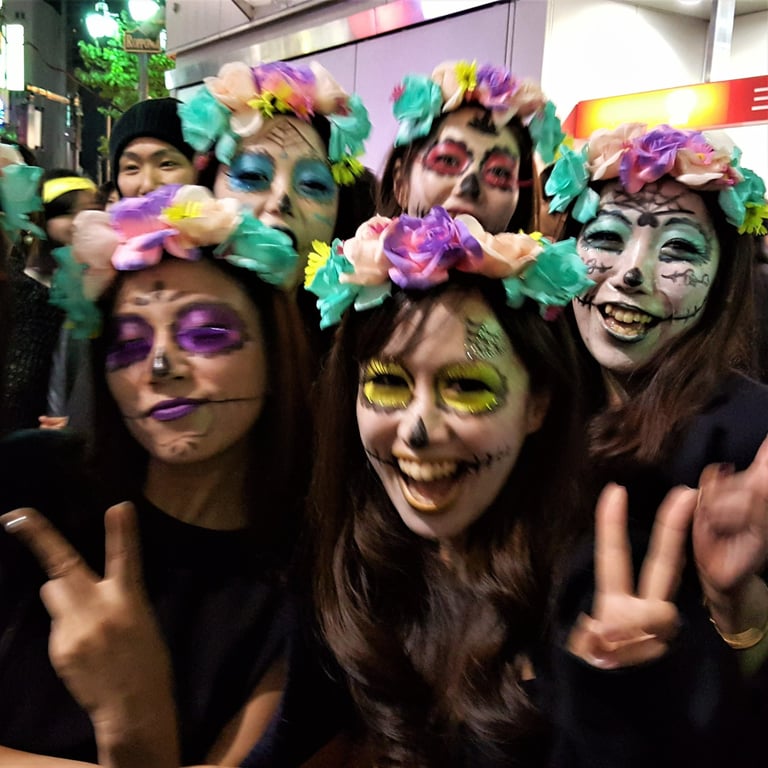
manga museum, kyoto
Cosplayers about!
Slightly awkward approaching these young ladies and asking to take a photo, but with cosplay, they want to be photographed and immediately strike a prepared pose. They set out that morning, possibly from a non-descript apartment in a dreary suburb, dragging the suitcase along, with the express purpose of being photographed. It doesn’t really matter who is taking the picture, the more the merrier. And suddenly they are a super-hero or some manga heroine, their lives lit up by a ray of sunshine that has arrowed down through the clouds. These splendours were parading about in the garden of the Manga Museum in Kyoto. Who were they supposed to be? No idea, but probably more uplifting than whoever they were all week. I wonder what they are up to now, given that these photos were taken in 2012?
